Zebra Technologies RFID-M4E-01 Multiprotocol RFID Encoder User Manual
Zebra Technologies Corporation Multiprotocol RFID Encoder
Contents
Users Manual AX4 Part 2
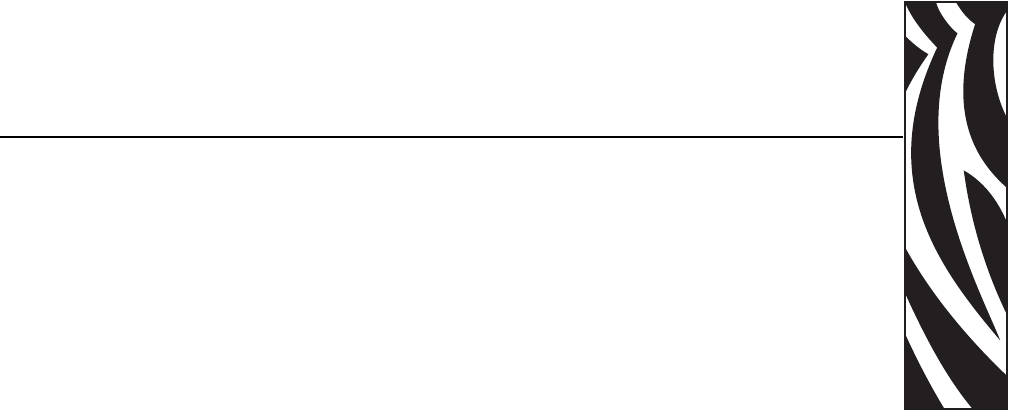
58981L-002 Rev. 1 2/11/05 R110PAX4 User Guide 31
3
Print Engine Operation
If you have completed the tasks and resolved issues in the checklist in Before You Begin
on page 14, use this chapter to load the print engine, to calibrate the print engine, and to print
configuration labels.
Contents
Load Media . . . . . . . . . . . . . . . . . . . . . . . . . . . . . . . . . . . . . . . . . . . . . . . . . . . . . . . . . . . 32
Load Ribbon. . . . . . . . . . . . . . . . . . . . . . . . . . . . . . . . . . . . . . . . . . . . . . . . . . . . . . . . . . . 38
Remove Used Ribbon . . . . . . . . . . . . . . . . . . . . . . . . . . . . . . . . . . . . . . . . . . . . . . . . . . . 43
Calibrate the Print Engine . . . . . . . . . . . . . . . . . . . . . . . . . . . . . . . . . . . . . . . . . . . . . . . . 44
Adjust Media Sensors . . . . . . . . . . . . . . . . . . . . . . . . . . . . . . . . . . . . . . . . . . . . . . . . . . . 46
Transmissive Media Sensor. . . . . . . . . . . . . . . . . . . . . . . . . . . . . . . . . . . . . . . . . . . . . 46
Reflective Media Sensor . . . . . . . . . . . . . . . . . . . . . . . . . . . . . . . . . . . . . . . . . . . . . . . 46
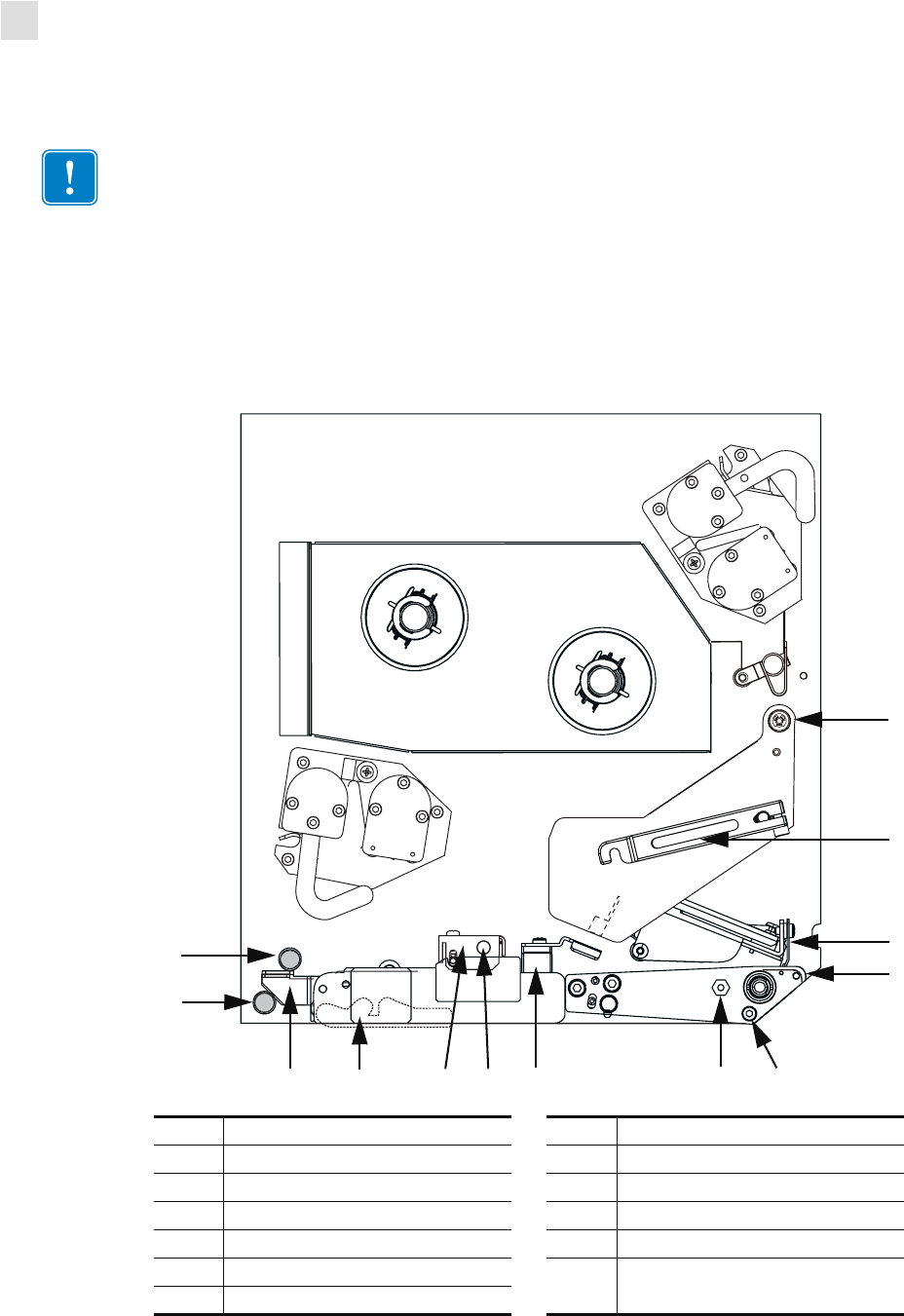
32 R110PAX4 User Guide 58981L-002 Rev. 1 2/11/05
Print Engine Operation
Load Media
Load Media
Figure 18 identifies the media-handling components of a right-hand print engine. A left-hand
unit contains a mirror image of these components. Figure 19 on page 33 shows the print
engine with media loaded.
Figure 18 • Components for Media Loading (Right-Hand)
Important • If the print engine power is Off (O), rollers in the print engine can turn if you pull
on the media. This could cause loaded ribbon to become slack and possibly wrap around the
auxiliary roller. If you load or unload media with the power off, inspect the auxiliary roller to
make sure that no ribbon is wrapped around it before turning On (I) the power.
1Auxiliary roller 8Pinch roller release button
2Printhead latch 9Pinch roller assembly
3Printhead assembly 10 Peel roller assembly
4Peel bar 11 Peel roller latch
5Media liner roller 12 Lower guide post
6Printhead locking pin 13 Upper guide post
7Media guide
2
3
67910 8
4
5
13
12
11
1
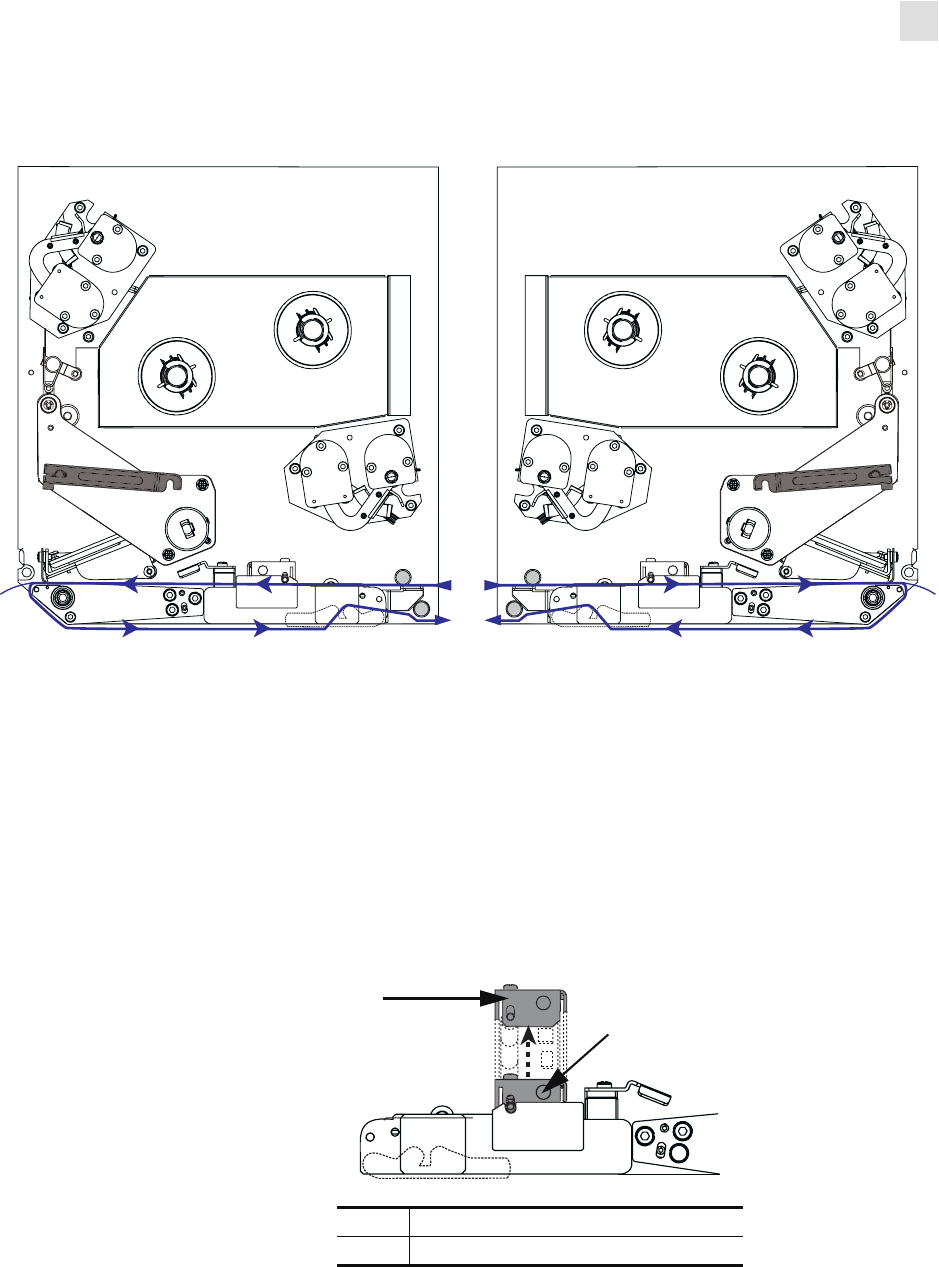
Print Engine Operation
Load Media
58981L-002 Rev. 1 2/11/05 R110PAX4 User Guide 33
Figure 19 • Loaded Media
To load media, complete these steps:
1. Load media on the media supply reel of the applicator (refer to the applicator’s user
guide).
2. Open the media door.
3. See Figure 20. Press the release button on the pinch roller assembly, and allow the
assembly to pivot up.
Figure 20 • Opening the Pinch Roller
Left-Hand Right-Hand
1Pinch roller assembly
2Pinch roller release button
2
1
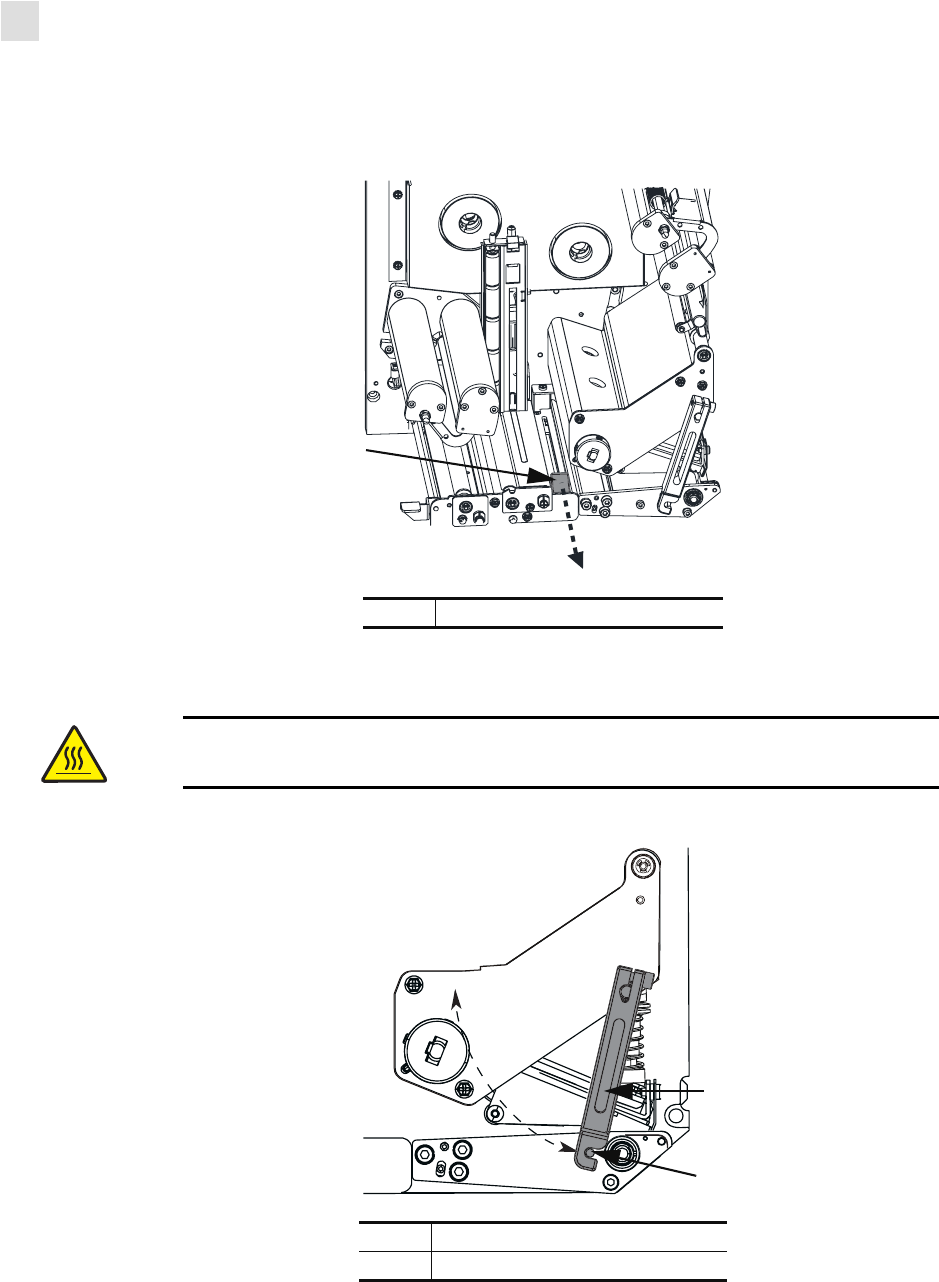
34 R110PAX4 User Guide 58981L-002 Rev. 1 2/11/05
Print Engine Operation
Load Media
4. See Figure 21. Slide the outer media guide all the way out.
Figure 21 • Sliding the Outer Media Guide
5. See Figure 22. Open the printhead assembly by unlatching the printhead latch from the
locking pin.
Figure 22 • Opening the Printhead Assembly
1Outer media guide
Caution • The printhead may be hot and could cause severe burns. Allow the
printhead to cool.
1Printhead latch
2Locking pin
1
1
2
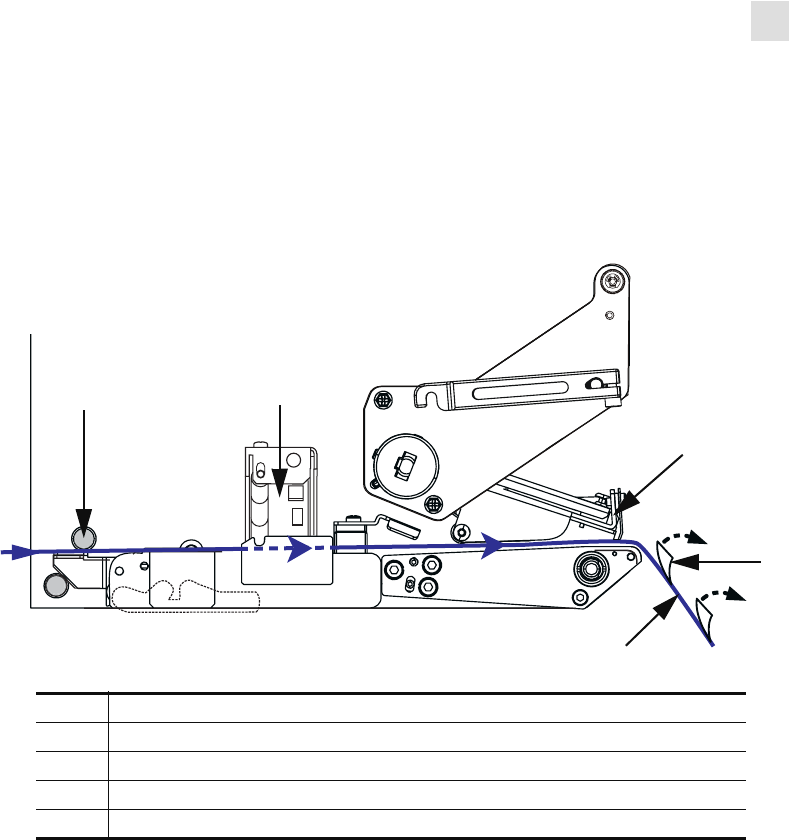
Print Engine Operation
Load Media
58981L-002 Rev. 1 2/11/05 R110PAX4 User Guide 35
6. See Figure 23. Thread the media under the upper guide post, below the pinch roller
assembly, and under the printhead assembly.
7. See Figure 23. Extend approximately 30 in. (75 cm) of media past the peel bar. Remove
and discard the labels from this exposed media.
Figure 23 • Threading the Media
1Upper guide post
2Pinch roller assembly
3Printhead assembly
4Label
5Liner
1 2
3
4
5
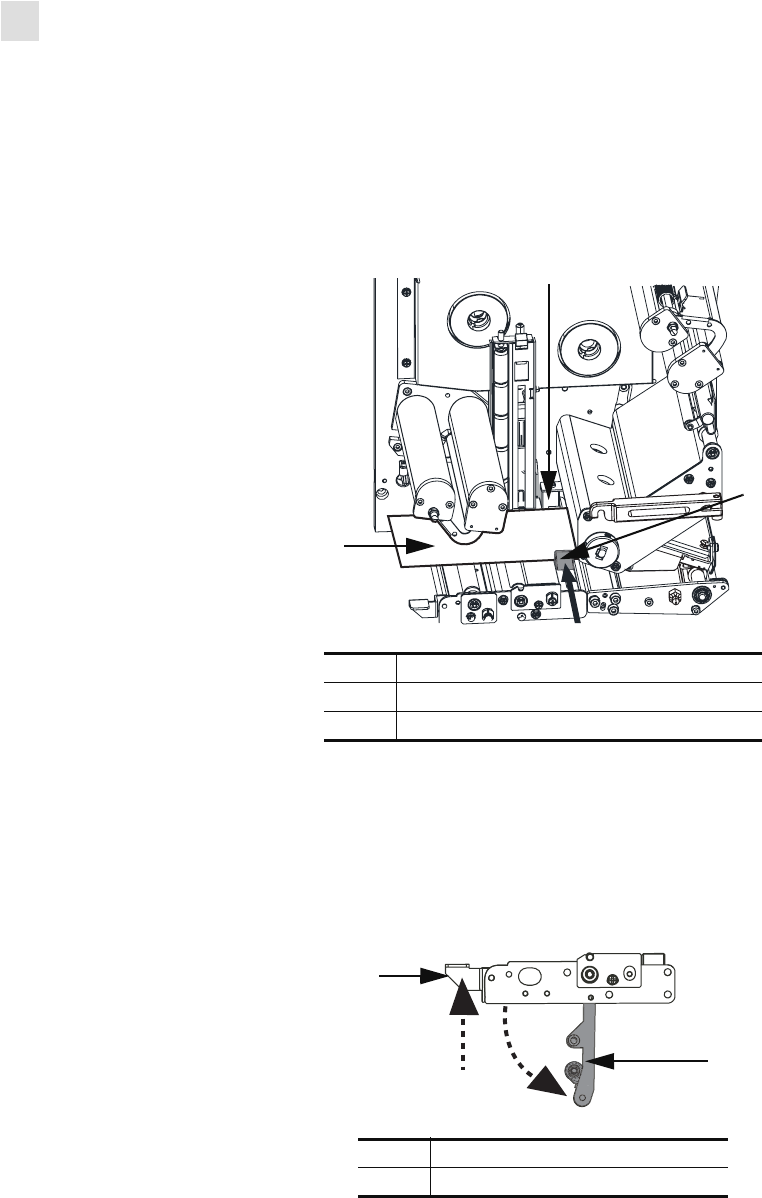
36 R110PAX4 User Guide 58981L-002 Rev. 1 2/11/05
Print Engine Operation
Load Media
8. See Figure 24. Position the media so that it is aligned with and just touching the inner
media guide.
9. See Figure 24. Position the outer media guide so that it just touches the outer edge of the
media.
Figure 24 • Adjusting the Outer Media Guide
10. See Figure 20 on page 33. Press down on the pinch roller assembly until it locks closed.
11. See Figure 22 on page 34. Close the printhead assembly by rotating the printhead latch
until it latches onto the locking pin.
12. See Figure 25. Raise the peel roller latch so that the peel roller assembly pivots down.
Figure 25 • Releasing the Peel Roller Assembly
1Inner media guide
2Outer media guide
3Media
1Peel roller latch
2Peel roller assembly
1
2
3
1
2
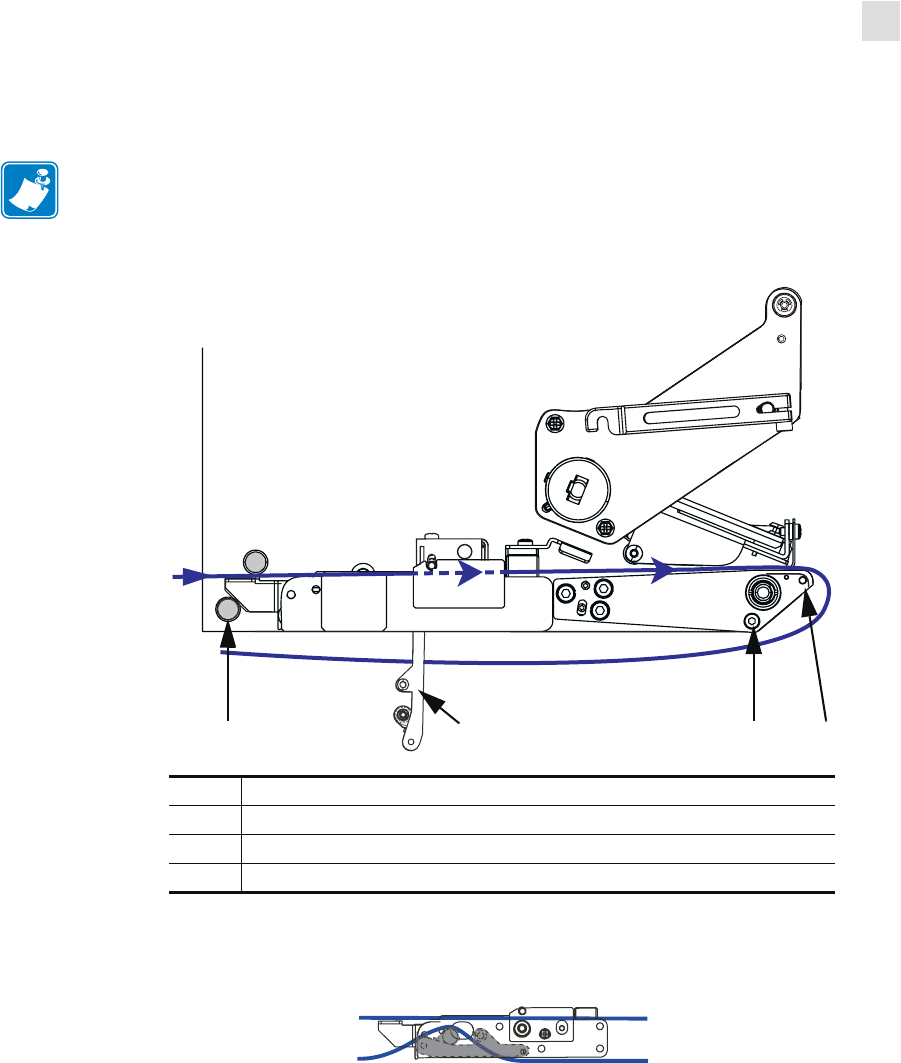
Print Engine Operation
Load Media
58981L-002 Rev. 1 2/11/05 R110PAX4 User Guide 37
13. See Figure 26. Thread the media liner around the peel bar, under the media liner roller,
and through the peel roller assembly.
Figure 26 • Threading the Liner
14. See Figure 27. Rotate the peel roller assembly up until it locks into the closed position.
Figure 27 • Closed Peel Roller Assembly
15. See Figure 26. Thread the media liner past the lower guide post and around the take-up
spindle of the applicator (refer to the applicator’s user guide).
16. Close the media door.
Note • If the applicator has an air tube, route the media liner between the air tube and the
peel bar. Do not thread the media liner over the air tube.
1Lower guide post
2Peel bar
3Media liner roller
4Peel roller assembly
2 3 4
1
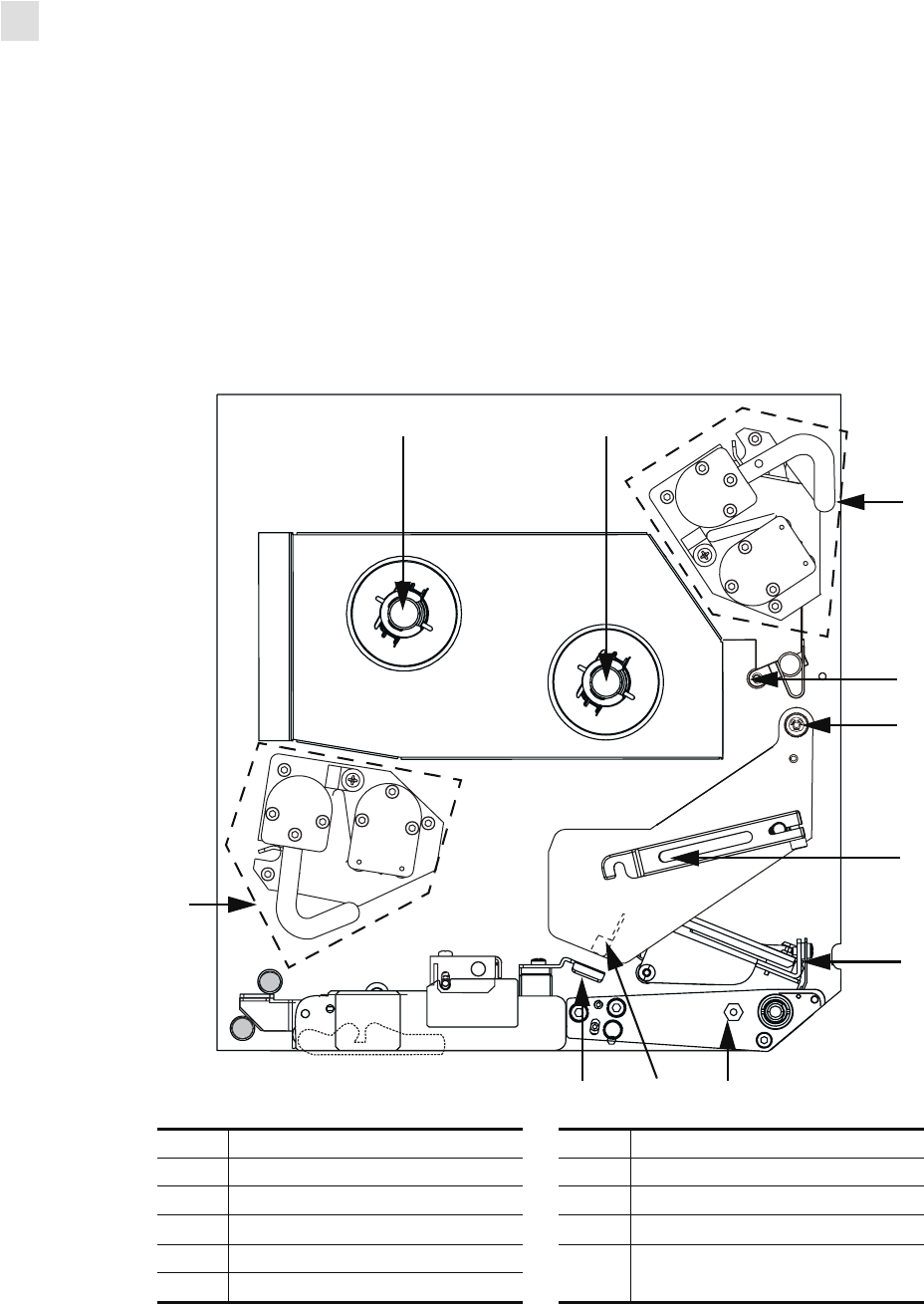
38 R110PAX4 User Guide 58981L-002 Rev. 1 2/11/05
Print Engine Operation
Load Ribbon
Load Ribbon
Use ribbon with thermal transfer media. The ribbon must be coated on the outside and wider
than the media. If the ribbon is narrower than the media, areas of the printhead are unprotected
and subject to premature wear.
Figure 28 identifies the ribbon system components inside the media compartment of a
right-hand print engine. A left-hand unit contains a mirror image of these components.
Figure 29 on page 39 shows the print engine with ribbon loaded.
Figure 28 • Components for Ribbon Loading
1Ribbon supply spindle 7Printhead assembly
2Ribbon take-up spindle 8Locking pin
3Upper dancer assembly 9Ribbon sensor
4Idler roller 10 Ribbon sensor reflector
5Auxiliary roller 11 Lower dancer assembly
6Printhead latch
1 2
3
4
6
7
11
9
10 8
5
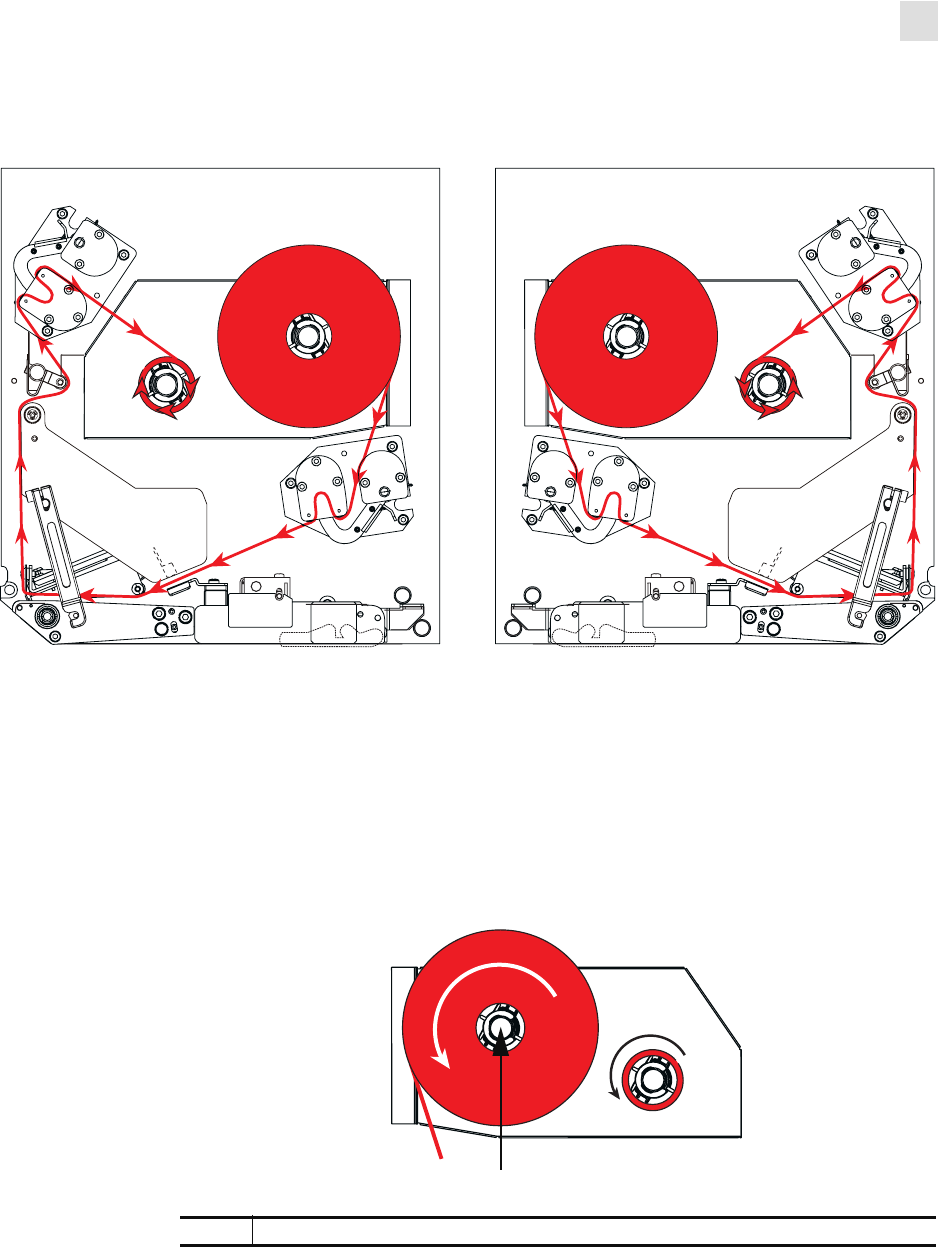
Print Engine Operation
Load Ribbon
58981L-002 Rev. 1 2/11/05 R110PAX4 User Guide 39
Figure 29 • Loaded Ribbon
To load ribbon, complete these steps:
1. See Figure 30. Place a full ribbon roll onto the ribbon supply spindle so the ribbon rotates
as shown, and then push the roll toward the print engine frame until it is fully seated.
Figure 30 • Placing Ribbon on the Ribbon Supply Spindle
Left-Hand Right-Hand
1Ribbon supply spindle with media
1
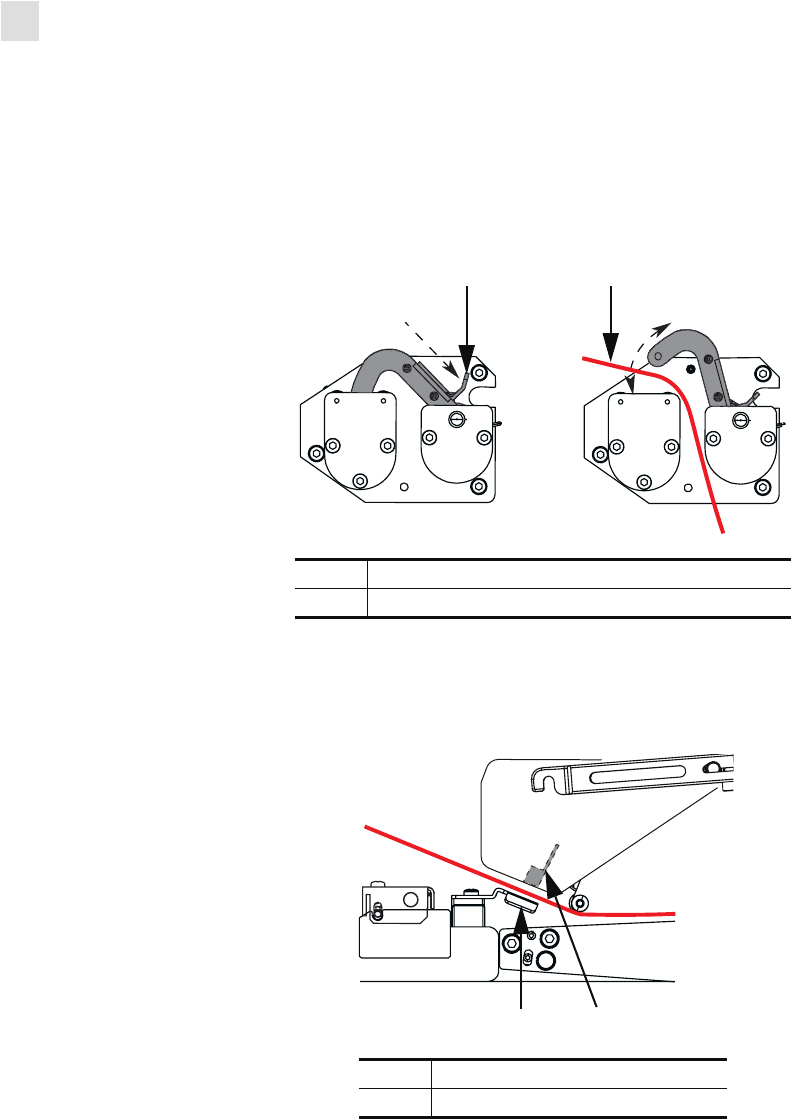
40 R110PAX4 User Guide 58981L-002 Rev. 1 2/11/05
Print Engine Operation
Load Ribbon
2. See Figure 31. On the lower dancer assembly, squeeze the opening tabs to pivot open the
dancer arm.
3. See Figure 31. Carefully thread the ribbon through the lower dancer assembly, and then
slowly release the dancer arm.
Figure 31 • Opening a Dancer Assembly
4. See Figure 32. Thread the ribbon between the ribbon sensor and the ribbon sensor
reflector.
Figure 32 • Ribbon Sensor
1Opening tabs
2Ribbon
1Ribbon sensor reflector
2Ribbon sensor
1 2
2
1
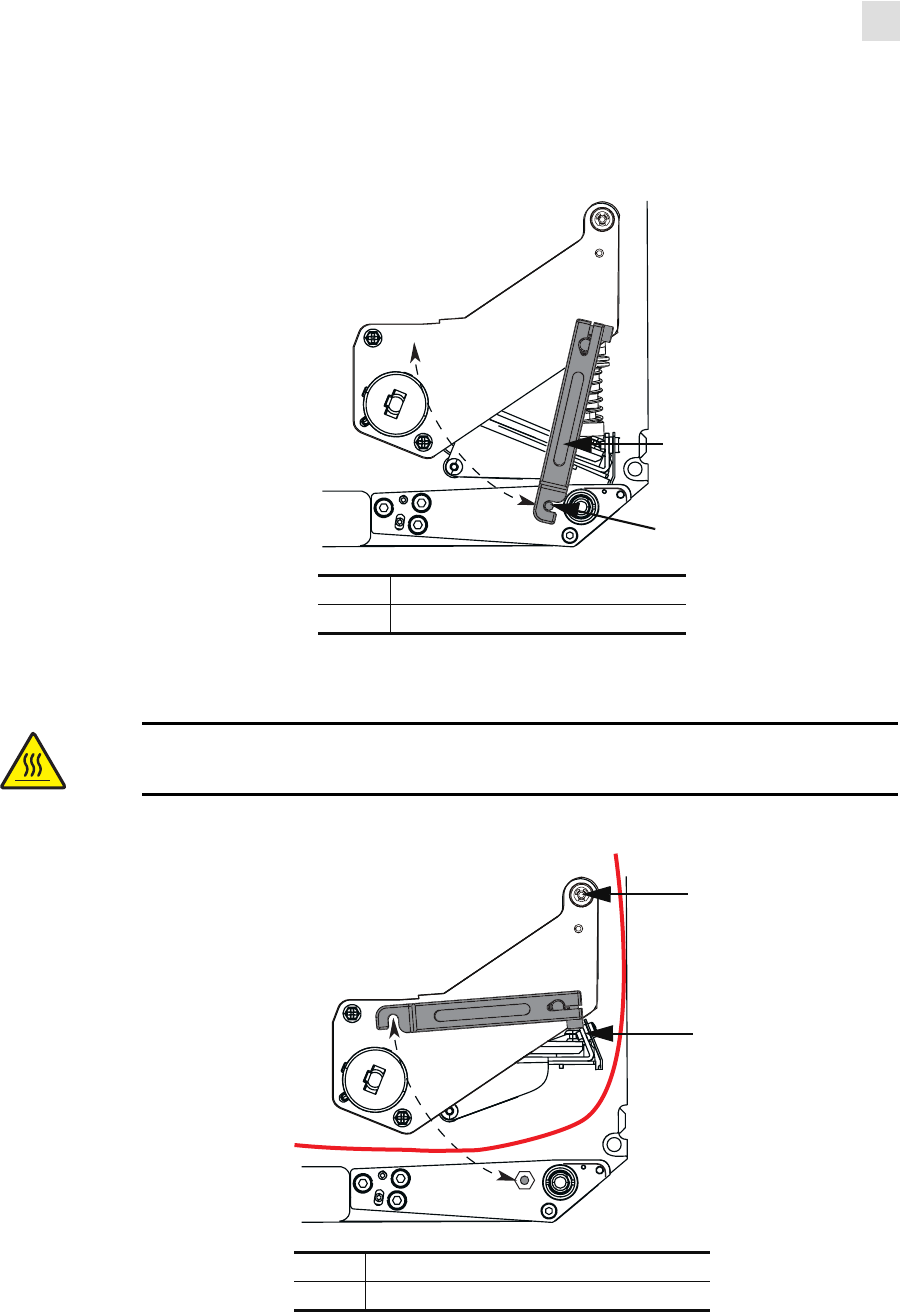
Print Engine Operation
Load Ribbon
58981L-002 Rev. 1 2/11/05 R110PAX4 User Guide 41
5. See Figure 33. Open the printhead assembly by unlatching the printhead latch from the
locking pin.
Figure 33 • Opening the Printhead Assembly
6. See Figure 34. Thread the ribbon under the printhead assembly and then up toward the
auxiliary roller.
Figure 34 • Threading Ribbon under the Printhead Assembly
1Printhead latch
2Locking pin
Caution • The printhead may be hot and could cause severe burns. Allow the
printhead to cool.
1Auxiliary roller
2Printhead assembly
1
2
2
1
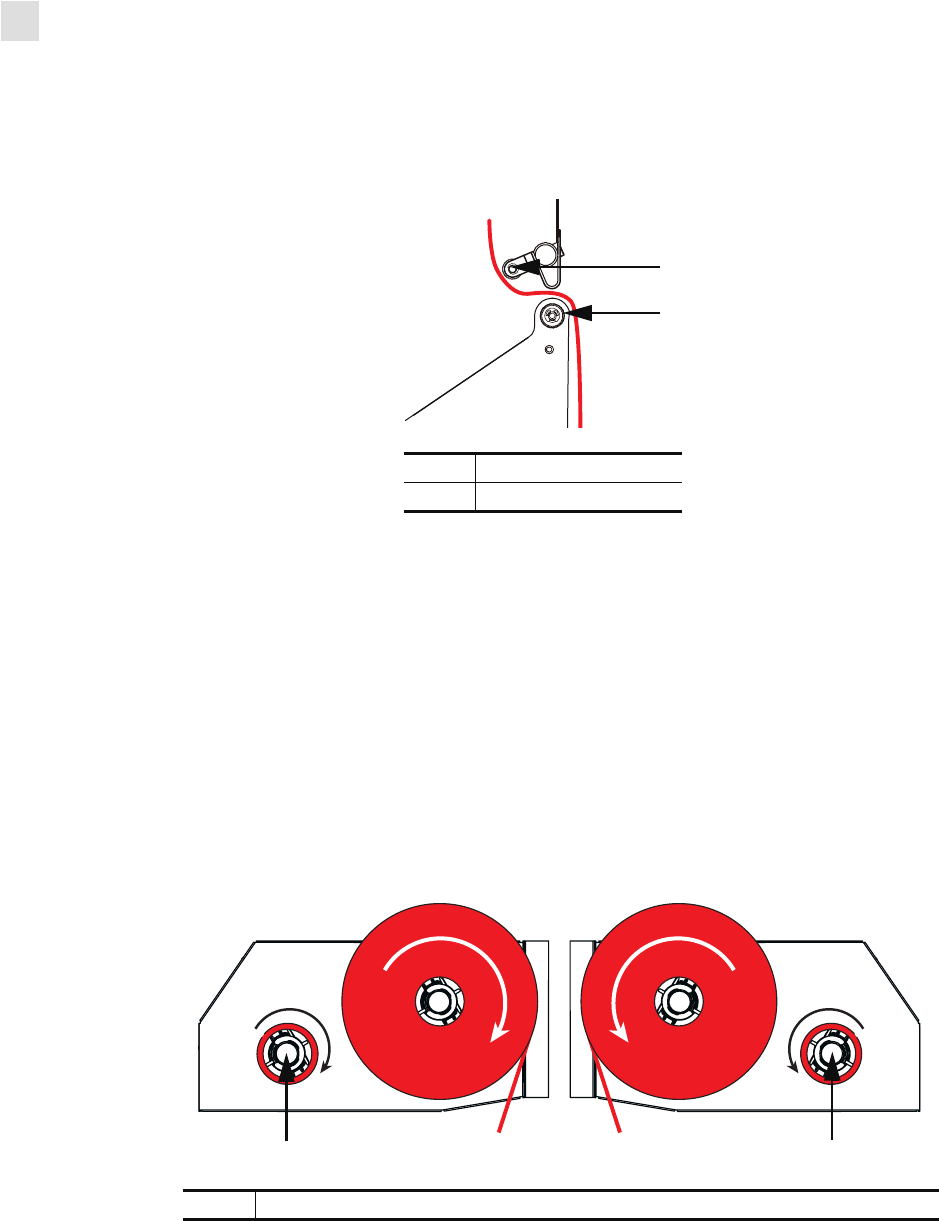
42 R110PAX4 User Guide 58981L-002 Rev. 1 2/11/05
Print Engine Operation
Load Ribbon
7. See . Thread the ribbon over the auxiliary roller, around the idler roller, and then up
toward the upper dancer assembly.
Figure 35 • Threading Ribbon around Rollers
8. See Figure 31 on page 40. On the upper dancer assembly, squeeze the opening tabs to
pivot open the dancer arm.
9. See Figure 31 on page 40. Carefully thread the ribbon through the upper dancer assembly,
and then slowly release the dancer arm.
10. See Figure 36. Install an empty ribbon core onto the ribbon take-up spindle, and push the
core toward the print engine frame until it is fully seated.
11. See Figure 36. Attach the end of the ribbon to the empty ribbon core with adhesive tape or
a label, and wind for several turns in the direction shown. Ensure that the ribbon winds
evenly on the spindle.
Figure 36 • Loading Ribbon on the Ribbon Take-Up Spindle
12. See Figure 33 on page 41. Close the printhead assembly by pivoting the printhead latch
onto the locking pin.
13. Close the media door.
1Idler roller
2Auxiliary roller
Left-Hand Right-Hand
1Ribbon take-up spindle with empty ribbon core
1
2
11
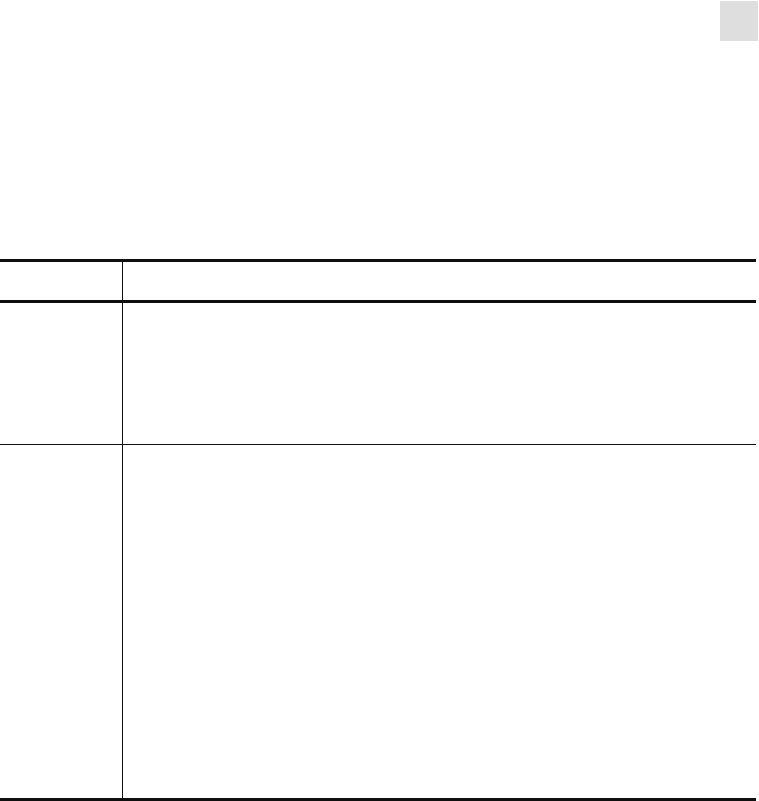
Print Engine Operation
Remove Used Ribbon
58981L-002 Rev. 1 2/11/05 R110PAX4 User Guide 43
Remove Used Ribbon
To remove used ribbon, complete these steps:
1. Open the media door.
2. Examine the ribbon. Did the ribbon run out?
If... Then...
Yes a. Remove the empty core from the ribbon supply spindle. Save the core
to use on the ribbon take-up spindle when you load ribbon.
b. Remove the used ribbon and core from the ribbon take-up spindle.
c. Install new ribbon following the instructions in Load Ribbon
on page 38.
No a. Cut the ribbon near the ribbon take-up spindle.
b. Remove the used ribbon and core from the ribbon take-up spindle.
c. Locate an empty ribbon core. If necessary, remove and discard the
used ribbon from the core removed in the previous step.
d. See Figure 36 on page 42. Install the empty ribbon core onto the
ribbon take-up spindle, and push the core toward the print engine
frame until it is fully seated.
e. Thread the remaining ribbon on the ribbon supply spindle following
the instructions in Load Ribbon on page 38.
f. See Figure 36 on page 42. Attach the end of the ribbon to the empty
ribbon core with adhesive tape or a label, and wind for several turns
in the direction shown. Ensure that the ribbon winds evenly on the
spindle.
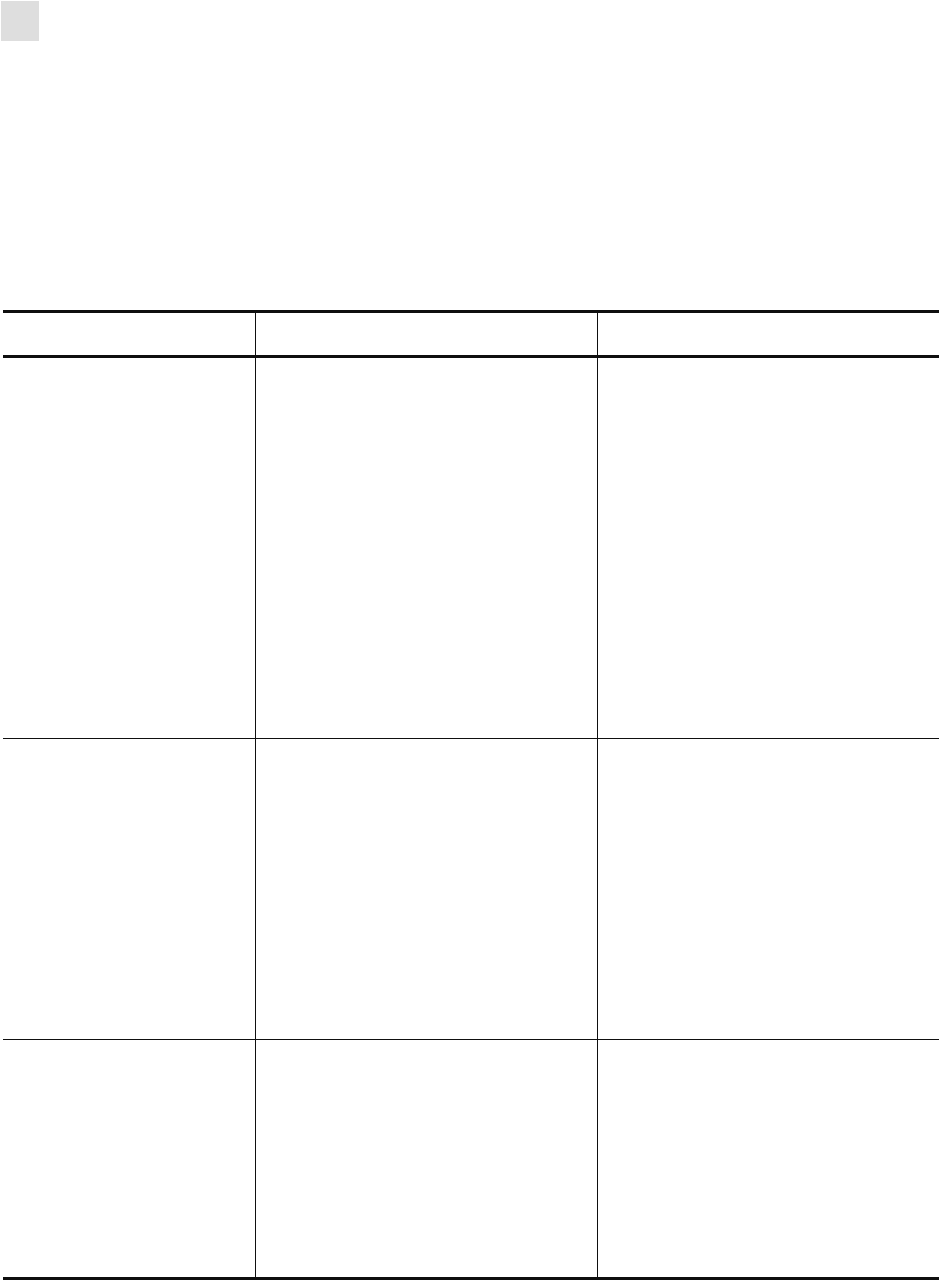
44 R110PAX4 User Guide 58981L-002 Rev. 1 2/11/05
Print Engine Operation
Calibrate the Print Engine
Calibrate the Print Engine
Calibrate the print engine when it is first put into service. Calibration allows the print engine to
establish the proper settings for the specific media and ribbon used in your application. You
may calibrate the print engine at other times as needed. Table 4 shows the different methods
for calibration.
Table 4 • Types of Calibration
Type of Calibration Description When/How It Occurs
Auto-calibration The print engine automatically sets
the value it detects for the spaces
between labels.
Occurs at the following times:
• When the print engine is first
turned on if CALIBRATION is
selected for MEDIA POWER UP
(see Select Media Power-Up
Option on page 67)
• When the print engine feeds media
after the printhead is closed if
CALIBRATION is selected for
HEAD CLOSE (see Select Head
Close Option on page 67).
• As part of both the sensor profile
and media and ribbon sensor
calibration procedures.
Long (Standard)
Calibration The print engine does the following:
• feeds media and ribbon
• sets the values it detects for media
length, media type (continuous or
non-continuous), and print mode
(thermal transfer or direct thermal)
• updates the sensor values
To perform a long calibration, do one
of the following:
• Press PAUSE on the front panel to
pause the print engine, and then
press CALIBRATE.
• Select CALIBRATION for the
MEDIA POWER UP or HEAD
CLOSE parameter (see Select
Media Power-Up Option
on page 67 or Select Head Close
Option on page 67).
Short Calibration The print engine calibrates using the
current sensor values rather than
detecting the spaces between labels
and resetting the sensors. This
calibration sequence uses fewer
labels than the long calibration
sequence, but it is less reliable
because the values that are stored in
the sensors could be incorrect.
Select SHORT CAL for the MEDIA
POWER UP or HEAD CLOSE
parameter (see Select Media
Power-Up Option on page 67 or
Select Head Close Option
on page 67).
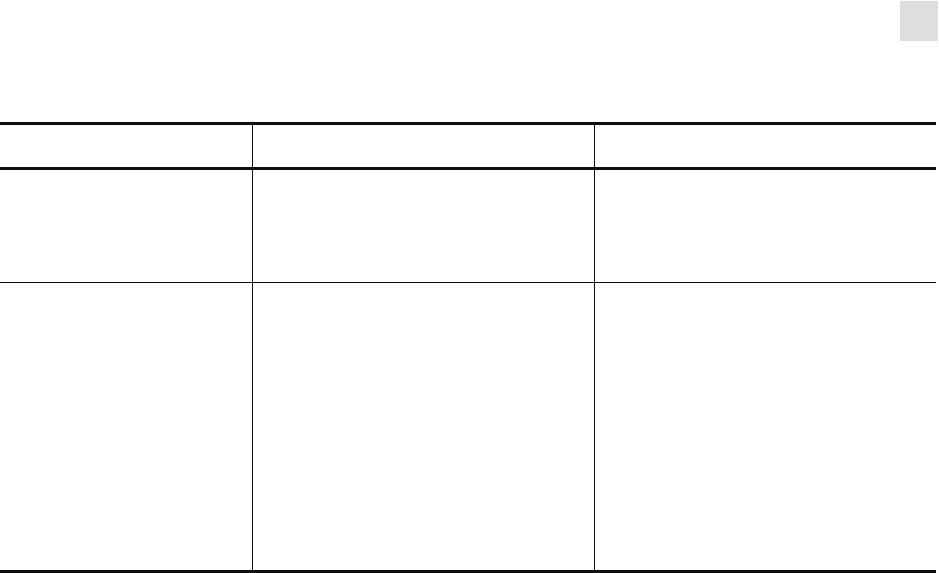
Print Engine Operation
Calibrate the Print Engine
58981L-002 Rev. 1 2/11/05 R110PAX4 User Guide 45
Sensor Profile
Calibration The print engine auto-calibrates and
prints a media sensor profile. Select the SENSOR PROFILE
option on the front panel. See Print
Sensor Profile on page 62 for
instructions.
Media and Ribbon
Sensor Sensitivity
Calibration
One of the most common
adjustments to print engine settings.
The print engine resets the sensitivity
of the sensors to detect correctly the
media and ribbon that you are using.
If you change the type of ribbon
and/or media, you might need to reset
the sensitivity of the media and
ribbon sensors. When the sensors are
at their new sensitivity, the print
engine performs an auto-calibration.
Select the MEDIA AND RIBBON
CALIBRATE option on the front
panel. See Calibrate Media and
Ribbon Sensor Sensitivity on page 63
for instructions.
Table 4 • Types of Calibration
Type of Calibration Description When/How It Occurs
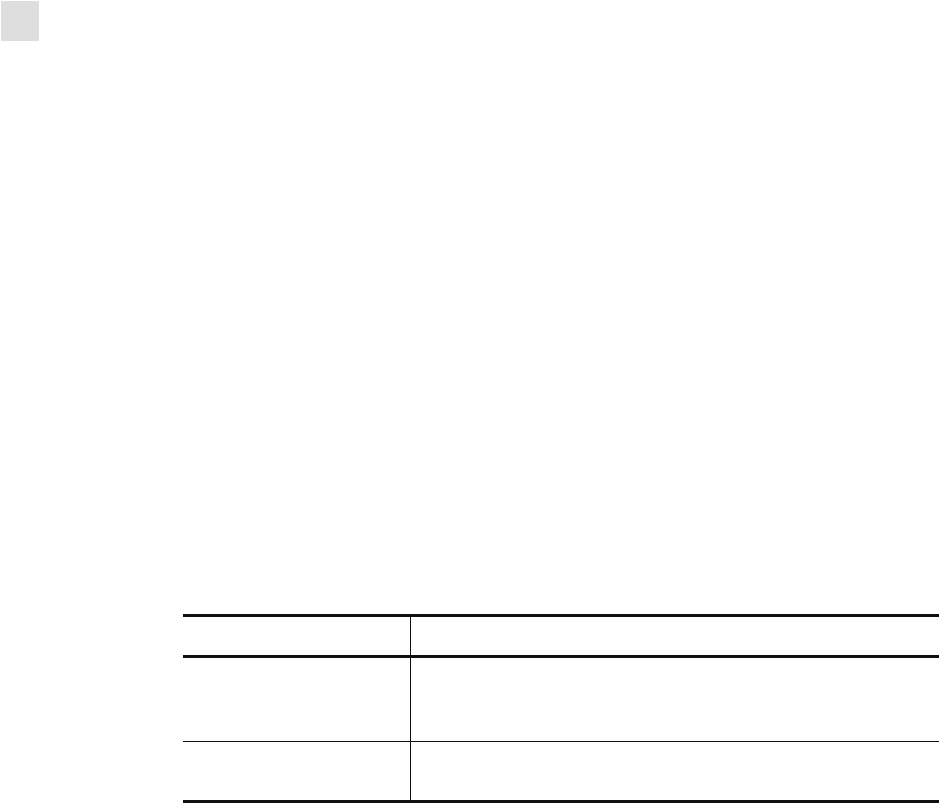
46 R110PAX4 User Guide 58981L-002 Rev. 1 2/11/05
Print Engine Operation
Adjust Media Sensors
Adjust Media Sensors
This section describes how to adjust the media sensors.
Reflective Media Sensor
Some types of media have black marks printed on the underside of the media liner, which act
as “start of label” indicators. The reflective media sensor senses these black marks. The
position of this sensor is not adjustable. If you use this type of media, refer to Media
Specifications on page 154 for information about black mark requirements.
Transmissive Media Sensor
The transmissive media sensor finds “start of label” indicators, such as notches or holes in the
media or interlabel gaps. This sensor consists of a light source (positioned below the media)
and a light sensor (positioned above the media).
To position the sensor, complete these steps:
1. Refer to Figure 37. How does the current media indicate the start of labels?
If the media... Then...
Has notches or holes
between labels Slide the sensor position indicator along the pinch roller
assembly so the point of the indicator aligns with the notch
or hole in the media.
Uses interlabel gaps Position the sensor position indicator approximately at the
center of the media width.
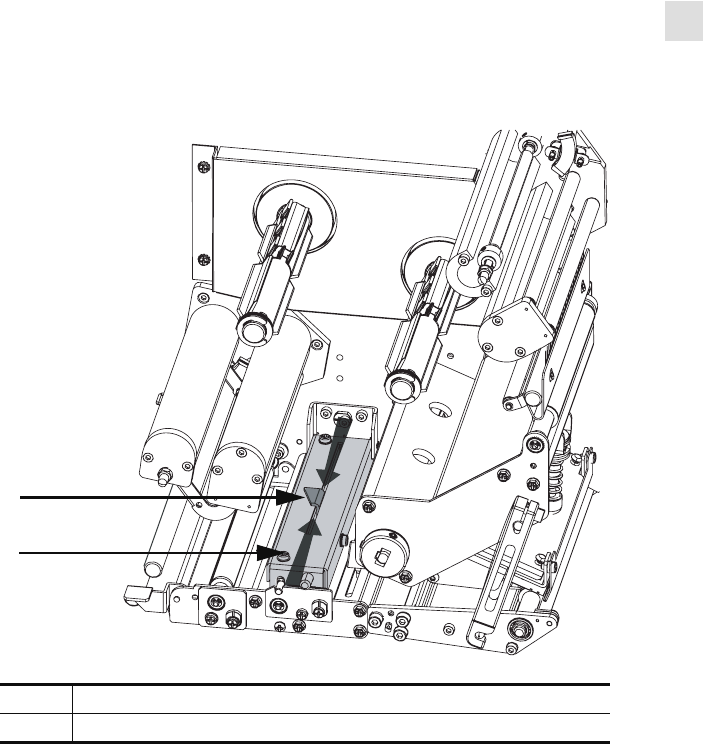
Print Engine Operation
Adjust Media Sensors
58981L-002 Rev. 1 2/11/05 R110PAX4 User Guide 47
Figure 37 • Media Sensor Adjustment (Right-Hand Unit Shown)
1Sensor position indicator
2Pinch roller assembly
1
2
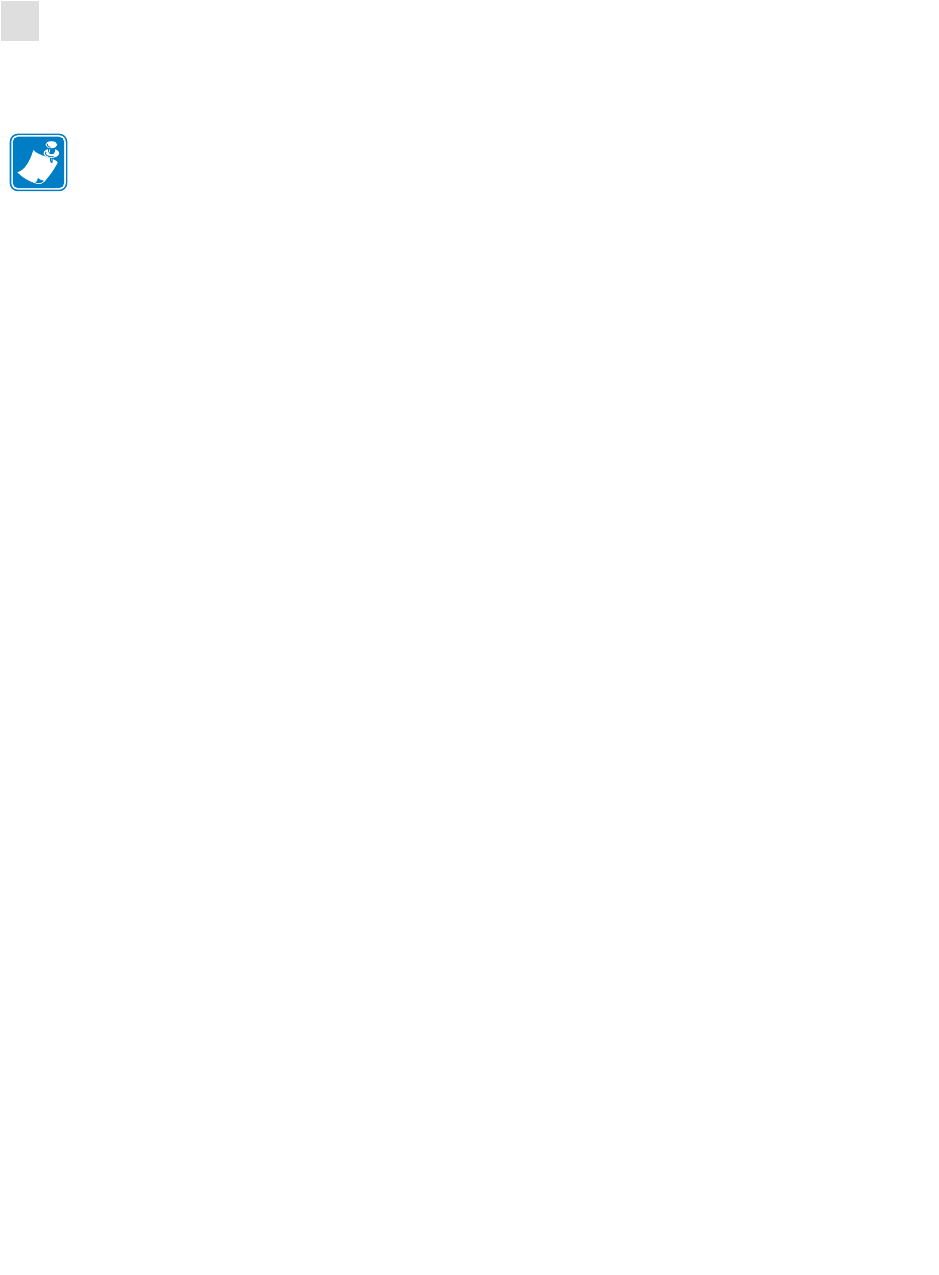
48 R110PAX4 User Guide 58981L-002 Rev. 1 2/11/05
Print Engine Operation
Adjust Media Sensors
Notes • ___________________________________________________________________
__________________________________________________________________________
__________________________________________________________________________
__________________________________________________________________________
__________________________________________________________________________
__________________________________________________________________________
__________________________________________________________________________
__________________________________________________________________________
__________________________________________________________________________
__________________________________________________________________________
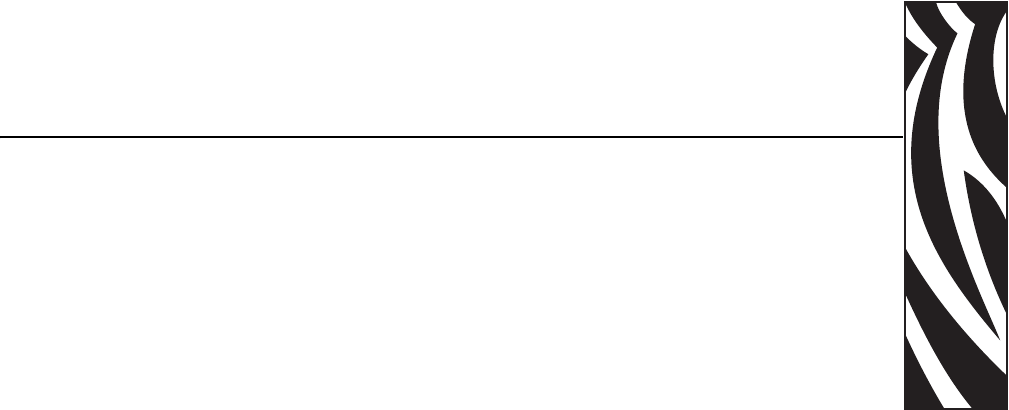
58981L-002 Rev. 1 2/11/05 R110PAX4 User Guide 49
4
Print Engine Configuration
This chapter describes the front panel parameters that are used to configure the print engine for
operation.
Contents
Overview . . . . . . . . . . . . . . . . . . . . . . . . . . . . . . . . . . . . . . . . . . . . . . . . . . . . . . . . . . . . . 50
Enter Setup Mode . . . . . . . . . . . . . . . . . . . . . . . . . . . . . . . . . . . . . . . . . . . . . . . . . . . . 50
Exit Setup Mode. . . . . . . . . . . . . . . . . . . . . . . . . . . . . . . . . . . . . . . . . . . . . . . . . . . . . . 51
Print a Configuration Label. . . . . . . . . . . . . . . . . . . . . . . . . . . . . . . . . . . . . . . . . . . . . . . . 52
Print a Network Configuration Label . . . . . . . . . . . . . . . . . . . . . . . . . . . . . . . . . . . . . . . . 53
Changing Password-Protected Parameters. . . . . . . . . . . . . . . . . . . . . . . . . . . . . . . . . . . 54
Default Password Value. . . . . . . . . . . . . . . . . . . . . . . . . . . . . . . . . . . . . . . . . . . . . . . . 54
Disable the Password Protection Feature . . . . . . . . . . . . . . . . . . . . . . . . . . . . . . . . . . 54
Front Panel LCD . . . . . . . . . . . . . . . . . . . . . . . . . . . . . . . . . . . . . . . . . . . . . . . . . . . . . . . 55
ZebraNet®Wired and Wireless Print Server LCD Displays. . . . . . . . . . . . . . . . . . . . . 74
RFID LCD Displays . . . . . . . . . . . . . . . . . . . . . . . . . . . . . . . . . . . . . . . . . . . . . . . . . . . 76

50 R110PAX4 User Guide 58981L-002 Rev. 1 2/11/05
Print Engine Configuration
Overview
Overview
After you have installed the media and ribbon and the Power-On Self Test (POST) is complete,
the front panel displays PRINTER READY. You may now set print engine parameters for
your application using the front panel display and the buttons directly below it. If it becomes
necessary to restore the initial print engine defaults, see FEED and PAUSE Self Test
on page 146.
Enter Setup Mode
To enter Setup Mode, complete these steps:
1. Press SETUP/EXIT to enter Setup mode.
2. Press either NEXT or PREVIOUS to scroll through the parameters.
Important • Certain printing conditions may require that you adjust printing parameters, such
as print speed, darkness, or print mode. These conditions include (but are not limited to):
• printing at high speeds
• peeling the media
• the use of extremely thin, small, synthetic, or coated labels
Because these and other factors affect print quality, run tests to determine the best combination
of print engine settings and media for your application. A poor match may limit print quality
or print rate, or the print engine may not function properly in the desired print mode.
Note • If the print engine is operating on an IP network, you can change the print engine’s
parameters in these additional ways:
• with ZebraLink™ WebView (ZebraNet®10/100 PrintServer or ZebraNet Wireless Print
Server required). For information, see the appropriate print server user guide.
• with the SetWLAN configuration utility (ZebraNet Wireless Print Server required). For
information, see the ZebraNet Wireless Print Server User Guide.
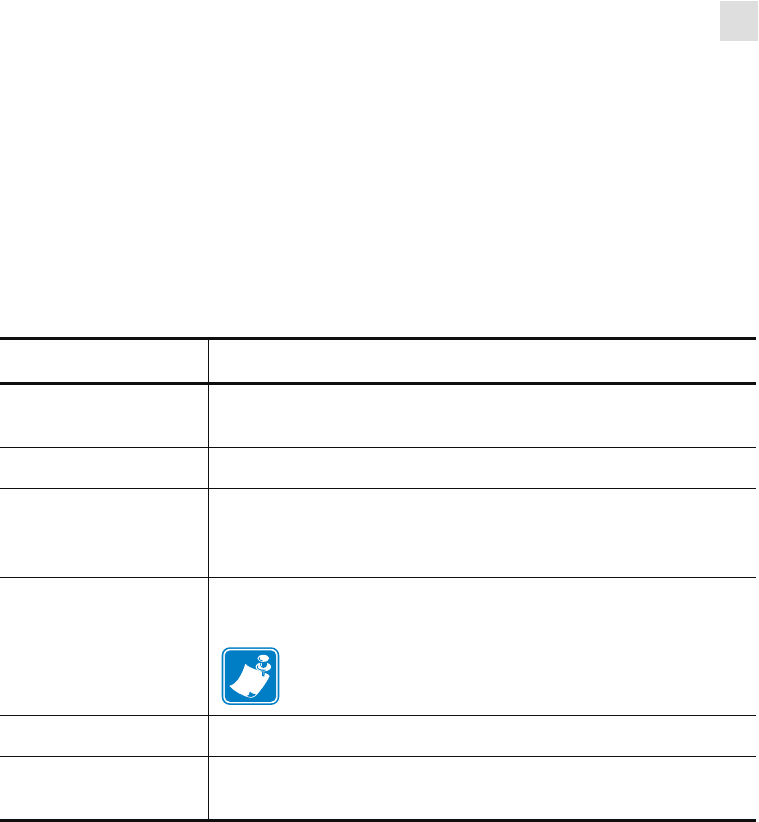
Print Engine Configuration
Overview
58981L-002 Rev. 1 2/11/05 R110PAX4 User Guide 51
Exit Setup Mode
To leave Setup mode, complete these steps:
1. Press SETUP/EXIT.
The LCD displays SAVE CHANGES.
2. Press the left or right oval to display the save options (Table 5).
3. Press NEXT to select the displayed choice.
When the configuration and calibration sequence is done, PRINTER READY displays.
Table 5 • Save Options When Leaving Setup Mode
LCD Description
PERMANENT Stores values in the print engine even when power is turned
off.
TEMPORARY Saves the changes until power is turned off.
CANCEL Cancels all changes made since you entered Setup mode,
except for changes made to the darkness and tear-off settings,
which go into effect as soon as they are made.
LOAD DEFAULTS Restores all parameters other than the network settings back
to the factory defaults.
Note • Loading factory defaults causes the print
engine to auto-calibrate.
LOAD LAST SAVE Loads values from the last permanent save.
DEFAULT NET Restores the wired and wireless network settings back to
factory defaults.
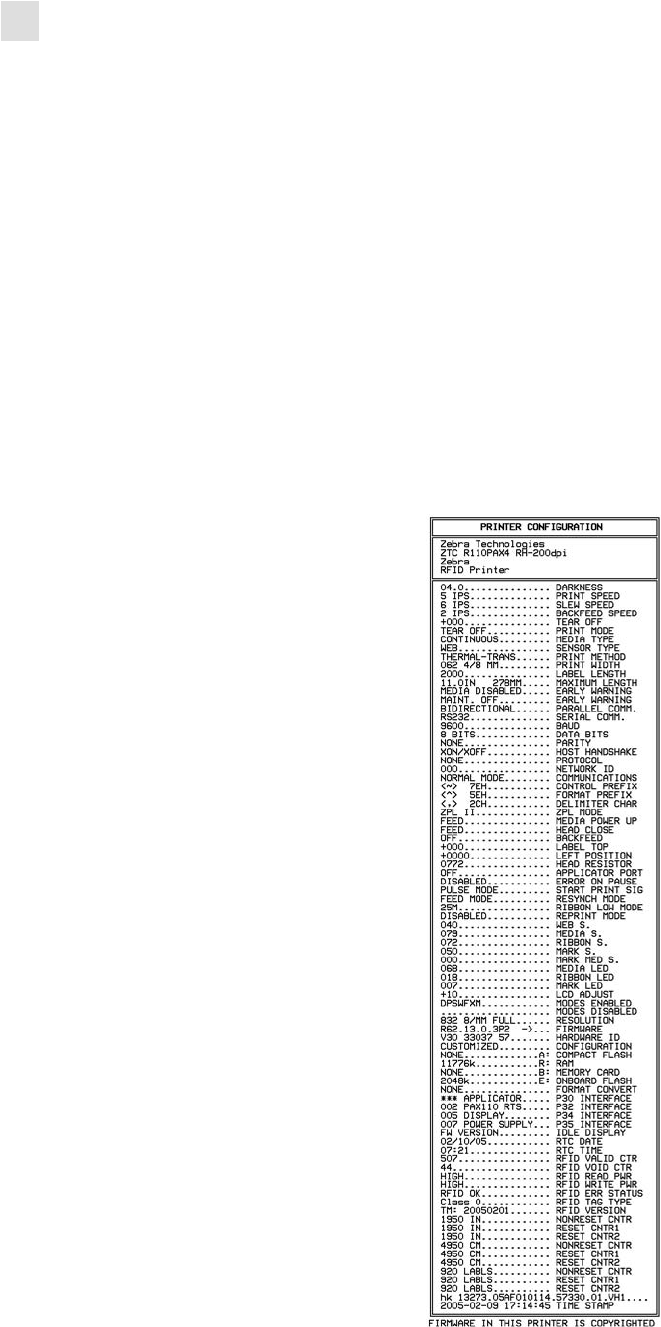
52 R110PAX4 User Guide 58981L-002 Rev. 1 2/11/05
Print Engine Configuration
Print a Configuration Label
Print a Configuration Label
A configuration label lists the print engine settings that are stored in configuration memory.
After you load the media and ribbon (if necessary), print a configuration label as a record of
your print engine’s current settings. Keep the label to use when troubleshooting printing
problems.
To print a configuration label, complete these steps:
1. On the front panel, press SETUP/EXIT.
2. Press NEXT or PREVIOUS to scroll through the parameters until you reach
LIST SETUP.
3. Press the right oval to confirm printing.
A configuration label prints (Figure 38).
Figure 38 • Configuration Label
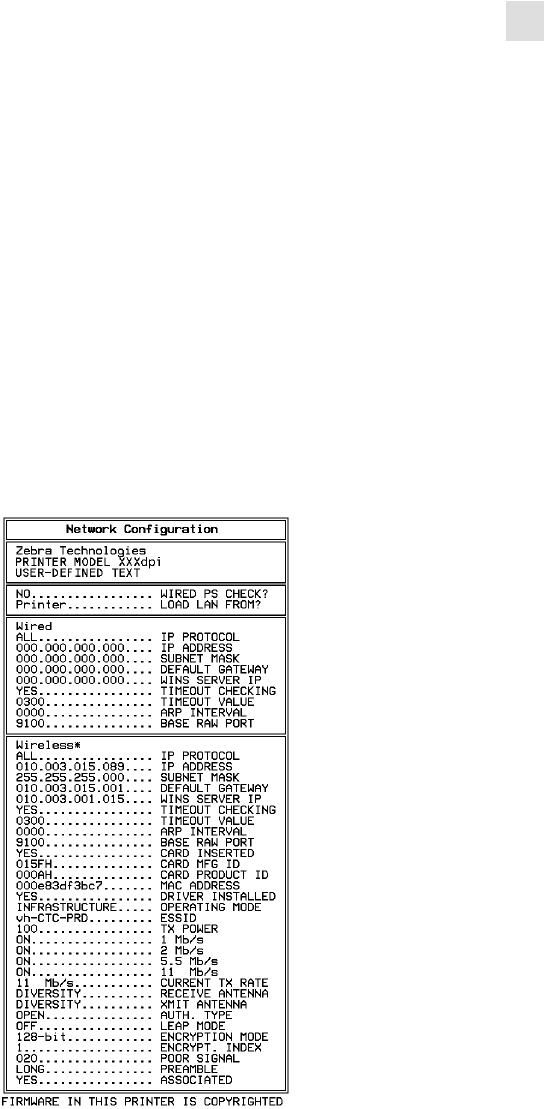
Print Engine Configuration
Print a Network Configuration Label
58981L-002 Rev. 1 2/11/05 R110PAX4 User Guide 53
Print a Network Configuration Label
If you are using a print server, you can print a network configuration label after the print
engine is connected to the network.
To print a network configuration label, complete these steps:
1. On the front panel, press SETUP/EXIT.
2. Press NEXT or PREVIOUS to scroll through the parameters until you reach
LIST NETWORK.
3. Press the right oval to confirm printing.
A network configuration label prints (Figure 39). An asterisk designates whether the
wired or wireless print server is active. If no wireless print server is installed, the wireless
portion of the label does not print.
Figure 39 • Network Configuration Label (With a Wireless Print Server Installed)

54 R110PAX4 User Guide 58981L-002 Rev. 1 2/11/05
Print Engine Configuration
Changing Password-Protected Parameters
Changing Password-Protected Parameters
Certain parameters, including the communication parameters, are password-protected by
factory default.
The first time that you attempt to change a password-protected parameter, the print engine
displays ENTER PASSWORD. Before you can change the parameter, you must enter the
four-digit numeric password. After you have entered the password correctly, you do not have
to enter it again unless you leave Setup mode by pressing SETUP/EXIT or by turning Off (O)
the print engine.
To enter a password for a password-protected parameter, complete
these steps:
1. At the password prompt, use the left oval to change the selected digit position.
2. When you have selected the digit that you wish to change, use the right oval to increase
the selected digit value. Repeat these two steps for each digit of the password.
3. After entering the password, press NEXT.
The parameter you selected to change is displayed. If the password was entered correctly,
you can change the value.
Default Password Value
The default password value is 1234. The password can be changed using the ^KP (Define
Password) ZPL II instruction or through ZebraLink™ WebView (ZebraNet®PrintServer II,
10/100 Print Server, or Wireless Print Server required).
Disable the Password Protection Feature
You can disable the password protection feature so that it no longer prompts you for a
password by setting the password to 0000 via the ^KP ZPL/ZPL II command. To re-enable the
password-protection feature, send the ZPL/ZPL II command ^KPx, where x can be any
number from 1 to 9999.
Caution • Do not change password-protected parameters unless you have a complete
understanding of the parameters’ functions. If the parameters are set incorrectly, the print
engine may function unpredictably.
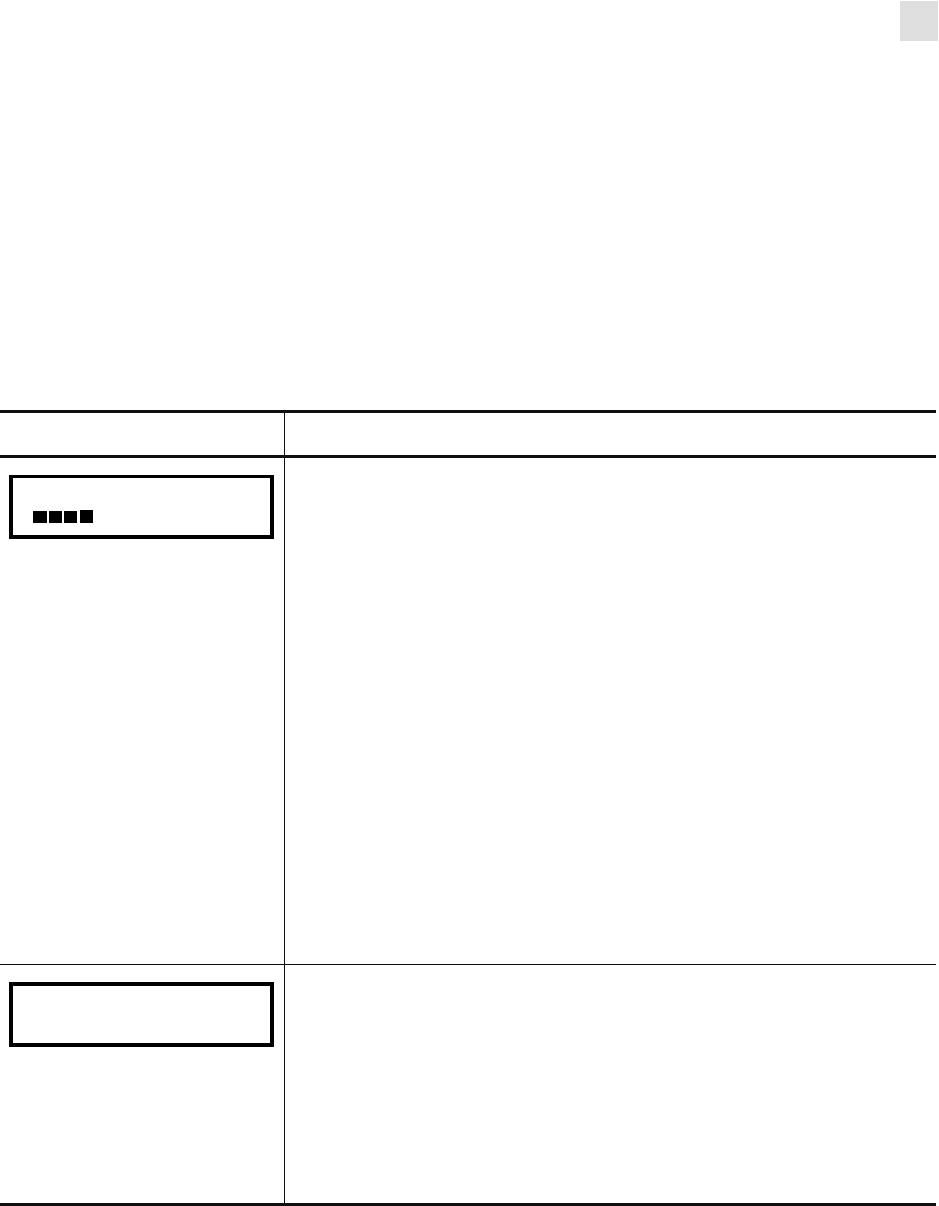
Print Engine Configuration
Front Panel LCD
58981L-002 Rev. 1 2/11/05 R110PAX4 User Guide 55
Front Panel LCD
Use the LCD display on the front panel to adjust print engine settings. Table 6 shows
parameters in the order in which they are displayed when you press NEXT after entering Setup
mode. Throughout this process, press NEXT to continue to the next parameter, or press
PREVIOUS to return to the previous parameter in the cycle. When a parameter is changed, an
asterisk (*) is shown in the upper left corner of the display to indicate that the value is different
from the one currently active in the print engine. Table 7 on page 74 shows the additional
parameters that appear when a wired or wireless print server is installed in the print engine.
Table 8 on page 76 shows the parameters that appear when an RFID reader is installed.
Table 6 • Print Engine Parameters (Page 1 of 19)
Parameter Action/Explanation
Adjust Print Darkness
Darkness (burn duration) settings depend on a variety of factors, including
ribbon type, media, and the condition of the printhead. You may adjust the
darkness for consistent high-quality printing.
If printing is too light or if there are voids in printed areas, you should
increase the darkness. If printing is too dark or if there is spreading or
bleeding of printed areas, you should decrease the darkness. Darkness
settings also may be changed by the driver or software settings.
The FEED Self Test on page 145 can be used to determine the best
darkness setting. Because the darkness setting takes effect immediately,
you can see the results on labels that are currently printing.
Important • Set the darkness to the lowest setting that provides good print
quality. If the darkness is set too high, the ink may smear, the ribbon may
burn through, or the printhead may wear prematurely.
• Press the right oval to increase darkness.
• Press the left oval to decrease darkness.
Default: +4.0
Range: 00.0 to +30.0
Adjust Print Speed
Adjusts the speed for printing a label (given in inches per second). Slower
print speeds typically yield better print quality. Print speed changes take
effect upon exiting Setup mode.
• Press the right oval to increase the value.
• Press the left oval to decrease the value.
Default: 2 IPS
Range: 2 to 12 IPS for 203 dpi, 2 to 8 IPS for 300 dpi
DARKNESS +4.0
- +
PRINT SPEED
2 IPS +
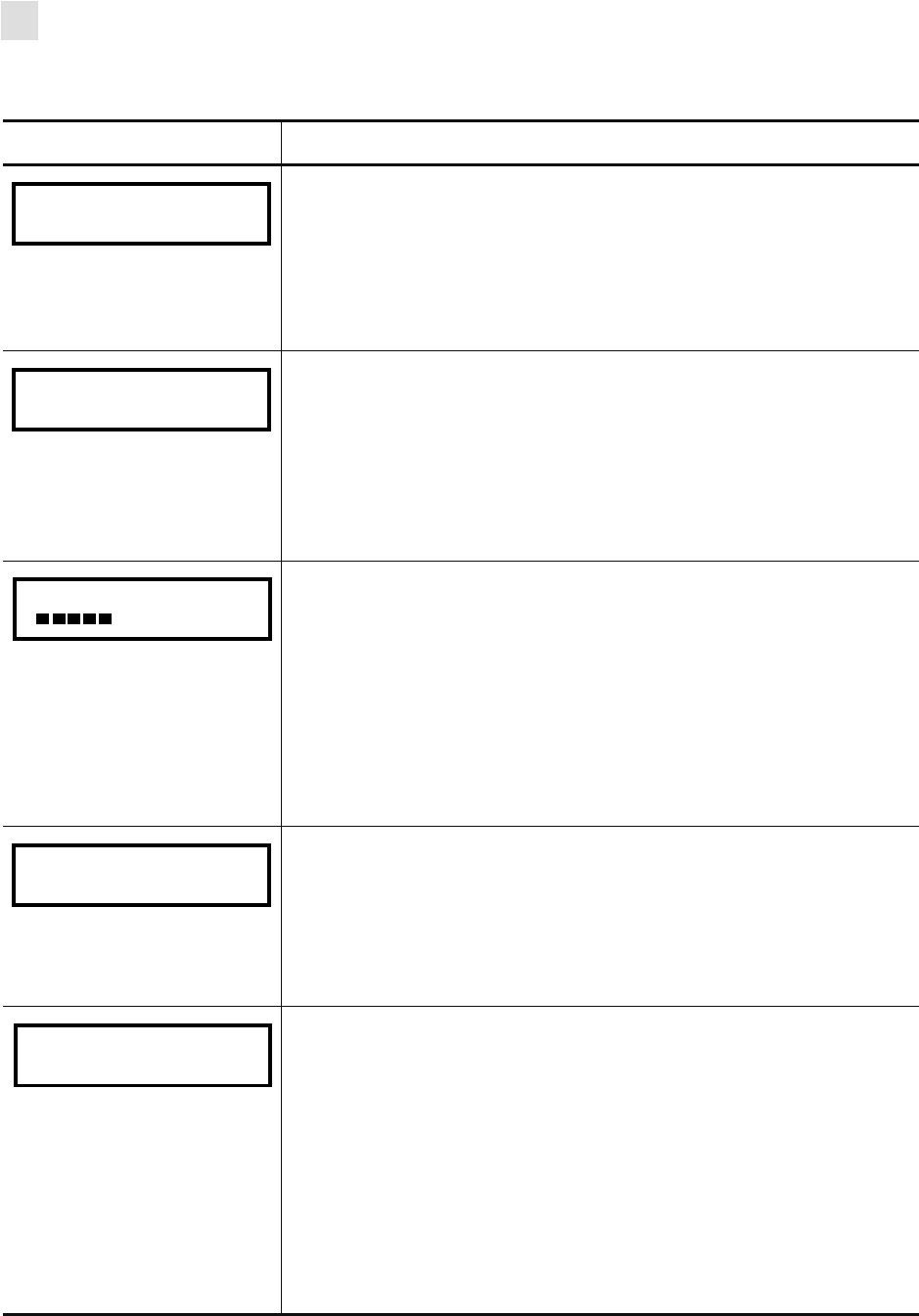
56 R110PAX4 User Guide 58981L-002 Rev. 1 2/11/05
Print Engine Configuration
Front Panel LCD
Adjust Slew Speed
Adjusts the speed for feeding a blank label (given in inches per second).
• Press the right oval to increase the value.
• Press the left oval to decrease the value.
Default: 6 IPS
Range: 1 to 12 IPS
Adjust Backfeed Speed
If backfeed is on, adjusts the speed at which the label backs up before
printing (given in inches per second).
• Press the right oval to increase the value.
• Press the left oval to decrease the value.
Default: 2 IPS
Range: 1 to 12 IPS
Adjust the Tear-Off Position
This parameter establishes the position of the media over the
tear-off/peel-off bar after printing. Positive numbers move the media out
and negative numbers move the media in.
Each press of an oval adjusts the tear-off position by four dot rows.
• Press the right oval to increase the value.
• Press the left oval to decrease the value.
Default: +0
Range: –120 to +120
Select Print Mode
Print mode settings tell the print engine the method of media delivery that
you wish to use.
• Press either oval to display other choices.
Default: APPLICATOR
Selections: TEAR-OFF, REWIND, APPLICATOR
Set Media Type
This parameter tells the print engine the type of media that you are using.
Selecting continuous media requires that you include a label length
instruction in your label format (^LLxxxx if you are using ZPL or
ZPL II).
When non-continuous media is selected, the print engine feeds media to
calculate label length (the distance between two recognized registration
points of the inter-label gap, webbing, or alignment notch or hole).
• Press either oval to display other choices.
Default: NON-CONTINUOUS
Selections: CONTINUOUS, NON-CONTINUOUS
Table 6 • Print Engine Parameters (Page 2 of 19)
Parameter Action/Explanation
SLEW SPEED
6 IPS +
BACKFEED SPEED
2 IPS +
TEAR OFF +000
- +
PRINT MODE
-APPLICATOR +
MEDIA TYPE
-NON-CONTINUOUS+
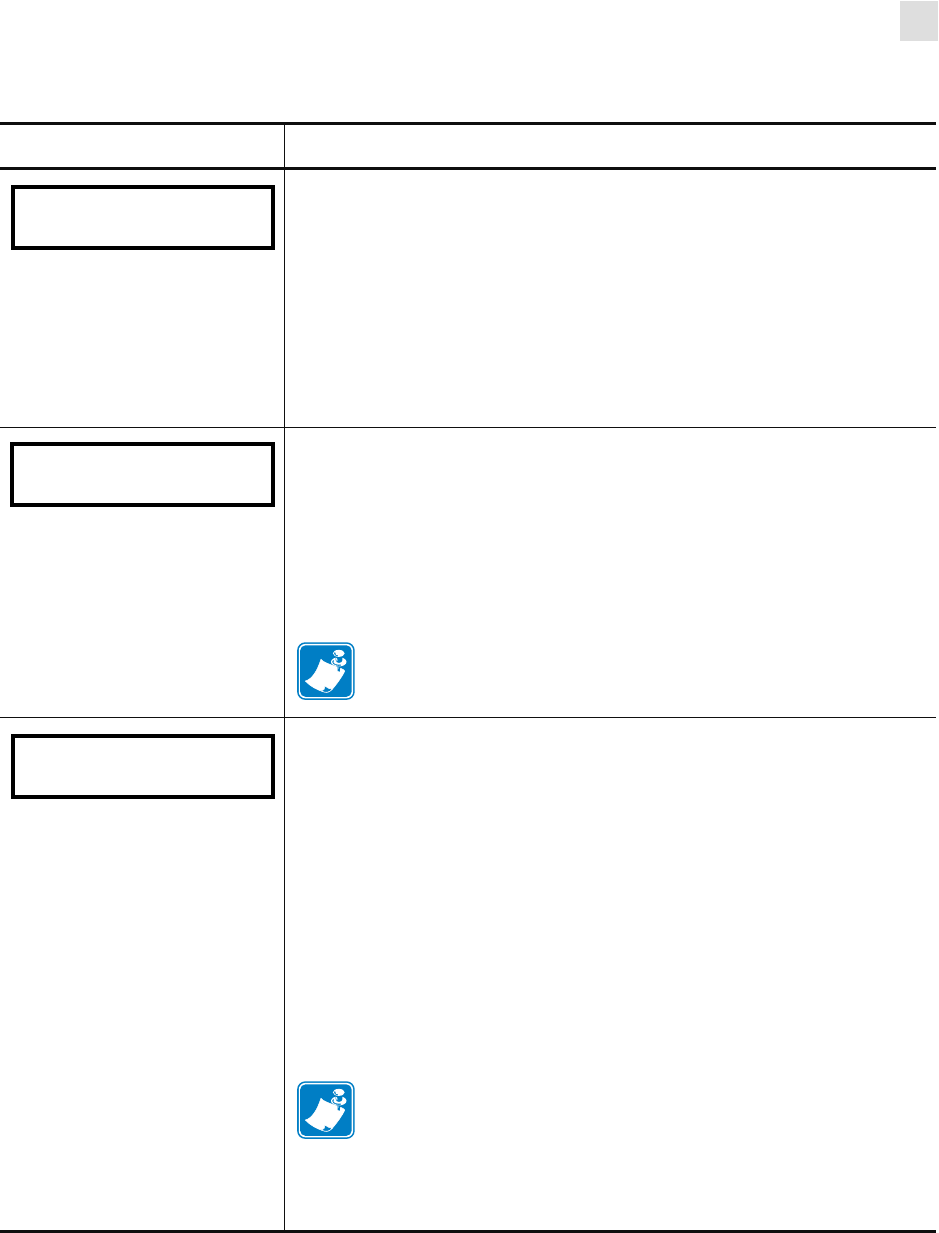
Print Engine Configuration
Front Panel LCD
58981L-002 Rev. 1 2/11/05 R110PAX4 User Guide 57
Set the Sensor Type
This parameter tells the print engine whether you are using media with a
web (gap/space between labels, notch, or hole) to indicate the separations
between labels or if you are using media with a black mark printed on the
back. If your media does not have black marks for registration on the back,
leave your print engine at the default (WEB).
• Press either oval to display other choices.
Default: WEB
Selections: WEB, MARK
Select Print Method
The print method parameter tells the print engine the method of printing
that you wish to use: direct thermal (no ribbon) or thermal transfer (using
thermal transfer media and ribbon).
• Press either oval to display other choices.
Default: THERMAL TRANSFER
Selections: THERMAL TRANSFER, DIRECT THERMAL
Note • Selecting direct thermal when using thermal transfer
media and ribbon creates a print engine error condition, but
printing continues.
Set Print Width
Determines the printable area across the width of the label given the
resolution of the print engine.
To change value shown:
1. Press the left oval to move the cursor.
2. Press the right oval to increase the value of the digit.
To change the unit of measurement:
1. Press the left oval until the unit of measurement is active.
2. Press the right oval to toggle to a different unit of measure (mm,
inches, or dots).
Default: 104 MM for 203 dpi print engines; 105 8/12 MM for 300 dpi
print engines
Note • Setting the width too narrow can result in portions of the
label not being printed on the media. Setting the width too wide
wastes formatting memory and can cause printing off the label
and on the platen roller. This setting can affect the horizontal
position of the label format if the image was inverted using the
^POI ZPL II command.
Table 6 • Print Engine Parameters (Page 3 of 19)
Parameter Action/Explanation
SENSOR TYPE
-WEB +
PRINT METHOD
-THERMAL-TRANS.+
PRINT WIDTH
- 104 0/8 MM +
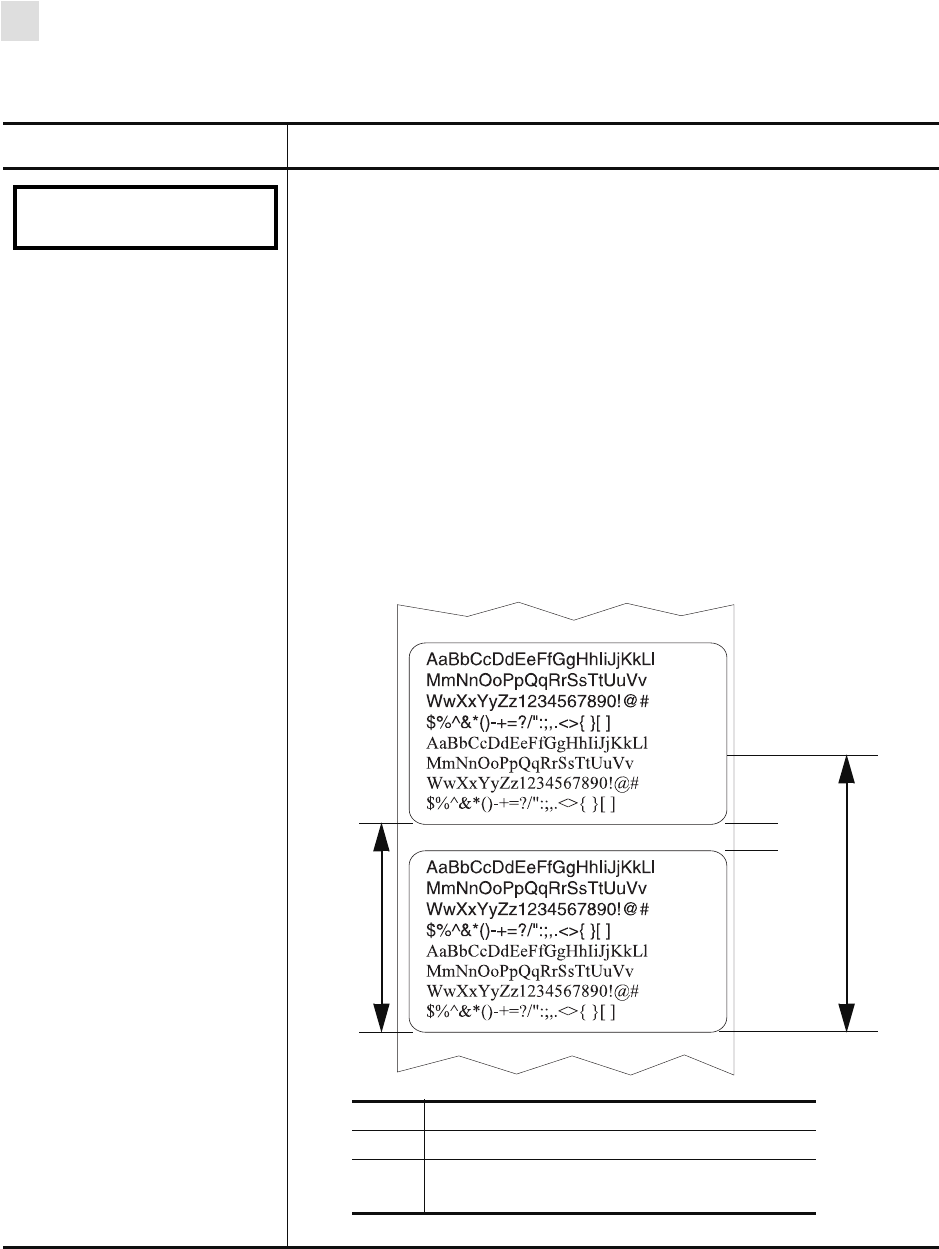
58 R110PAX4 User Guide 58981L-002 Rev. 1 2/11/05
Print Engine Configuration
Front Panel LCD
Set Maximum Label Length
This parameter is used during the media portion of the calibration process.
Always set maximum label length to a value that is at least 1.0 in.
(25.4 mm) greater than the actual label length (Figure 40). If the value is
set to a smaller value than the label length, the print engine assumes that
continuous media is loaded, and the print engine cannot calibrate.
For example, if the label length is 5.0 inches (126 mm) including the
interlabel gap, set the parameter for 6.0 inches (152 mm). If the label
length is 7.5 inches (190 mm), set the parameter for 9.0 inches (229 mm).
• Press the right oval to increase the value.
• Press the left oval to decrease the value.
Default: 39.0 inches (988 mm).
Range: Values are adjustable in one-inch (25.4 mm) increments.
Figure 40 • Label Length
Table 6 • Print Engine Parameters (Page 4 of 19)
Parameter Action/Explanation
MAXIMUM LENGTH
-39.0 IN 988 MM
}2
1Label length (including interlabel gap)
2Interlabel gap
3Set maximum label length to approximately
this value
1
3
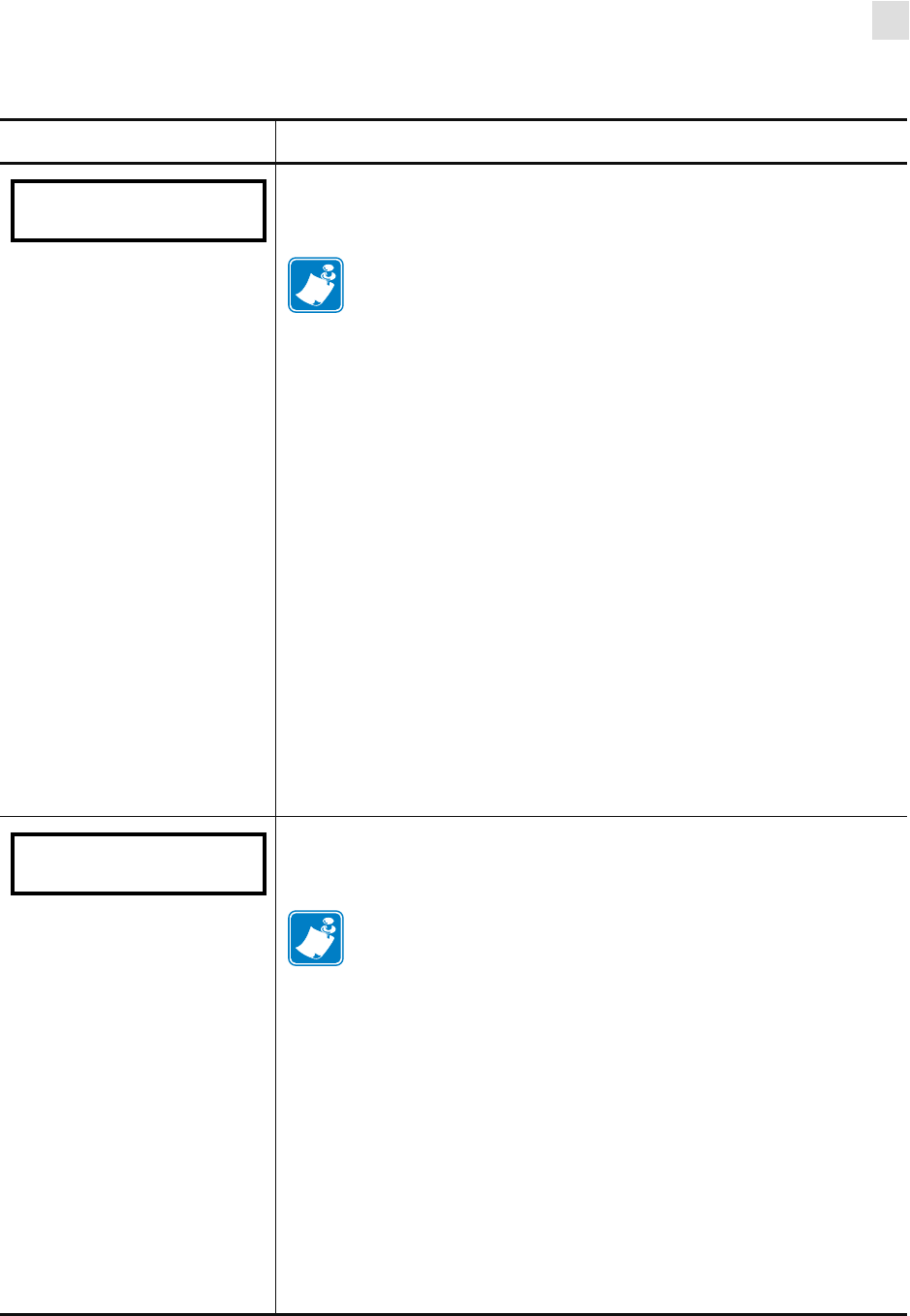
Print Engine Configuration
Front Panel LCD
58981L-002 Rev. 1 2/11/05 R110PAX4 User Guide 59
Set Early Warning for Media
When this parameter is enabled, the print engine provides warnings when
labels are running low.
Note • Update the number of labels per roll when beginning use
of the Early Warning System. Also, the print engine does not
make any adjustments when power is turned off and on.
• Press the right or left oval to display other choices.
Default: MEDIA DISABLED
Selections: MEDIA DISABLED, MEDIA ENABLED
To change the Early Warning settings:
1. When the LCD displays EARLY WARNING, press the right or left
oval until the desired setting is listed on the LCD. (If you are
prompted for a password, enter your password using the instructions
in Changing Password-Protected Parameters on page 54.)
When the print engine detects that less than 15% of the labels remain,
WARNING MEDIA LOW appears on the LCD. If the alert function
has been enabled, an alert is also sent. When the printhead is opened
and then closed after a media warning has been received, the LCD
prompts with MEDIA REPLACED?.
Press the right oval to select YES to clear the warning and reset the
label counter.
2. When setting the Early Warning for maintenance, the LCD prompts
HEAD CLEAN?.
3. Press the right oval to select YES.
Set Early Warning for Maintenance
When this parameter is enabled, the print engine provides warnings when
the printhead needs to be cleaned.
Note • Update the number of labels per roll when beginning use
of the Early Warning System. Also, the print engine does not
make any adjustments when power is turned off and on.
• Press the right or left oval to display other choices.
Default: MAINTENANCE DISABLED
Selections: MAINTENANCE DISABLED, MAINTENANCE
ENABLED
To change the Early Warning settings:
1. When the LCD displays EARLY WARNING, press the right or left
oval until the desired setting is listed on the LCD. (If you are
prompted for a password, enter your password using the instructions
in Changing Password-Protected Parameters on page 54.)
When setting the Early Warning for maintenance, the LCD prompts
HEAD CLEAN?.
2. Press the right oval to select YES.
Table 6 • Print Engine Parameters (Page 5 of 19)
Parameter Action/Explanation
EARLY WARNING
MEDIA DISABLED
EARLY WARNING
MAINT. OFF
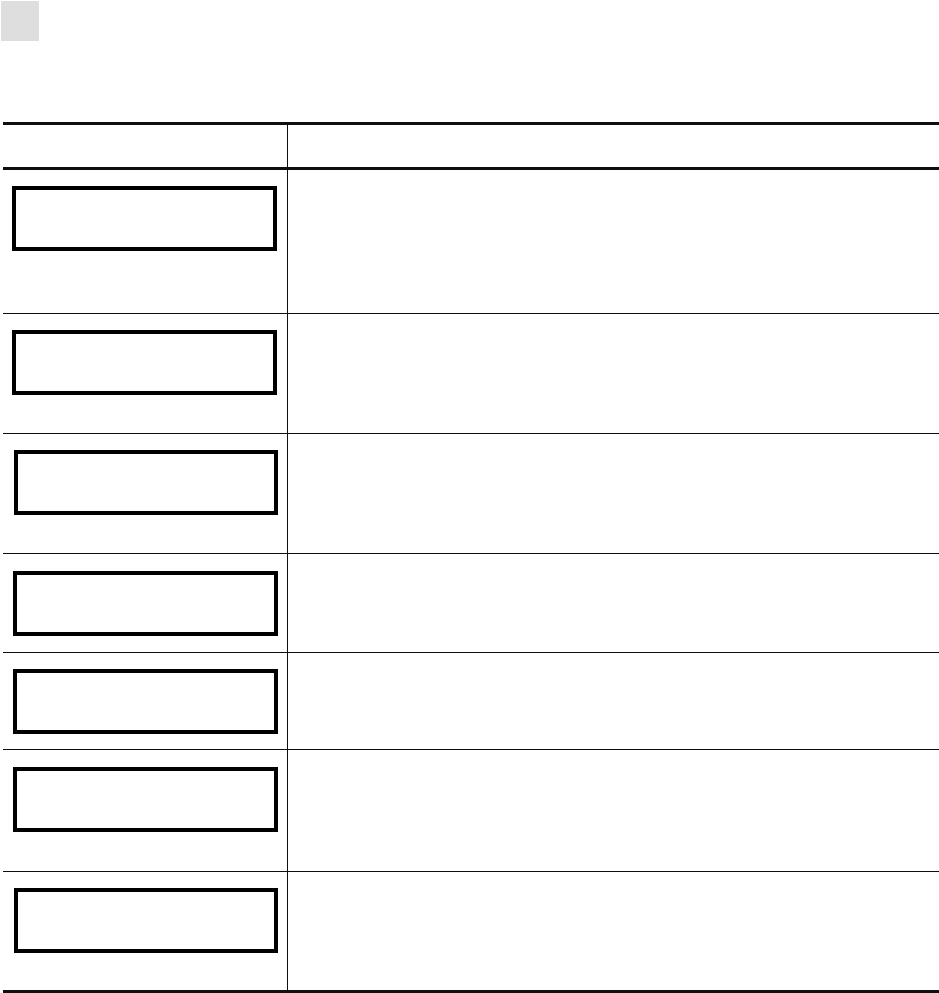
60 R110PAX4 User Guide 58981L-002 Rev. 1 2/11/05
Print Engine Configuration
Front Panel LCD
List Fonts
• Press the right oval to print a label that lists the available fonts in the
print engine, including standard print engine fonts plus any optional
fonts. Fonts may be stored in RAM, Flash memory, optional PCMCIA
font cards, or CompactFlash cards.
List Bar Codes
• Press the right oval to print a label that lists the available bar codes in
the print engine. Bar codes may be stored in RAM, Flash memory,
optional PCMCIA cards, or CompactFlash cards.
List Images
• Press the right oval to print a label that lists the available images stored
in the print engine’s RAM, Flash memory, optional memory card,
PCMCIA cards, or CompactFlash cards.
List Formats
• Press the right oval to print a label that lists the available formats stored
in the print engine’s RAM, Flash memory, or optional memory card.
List Setup
• Press the right oval to print a configuration label, which lists the current
print engine configuration.
List Network Settings
This selection is used to print a network configuration label, which lists the
settings for any print server that is installed.
• Press the right oval to print a network configuration label.
List All
• Press the right oval to print labels that list the available fonts, bar codes,
images, formats, and the current print engine and network
configurations.
Table 6 • Print Engine Parameters (Page 6 of 19)
Parameter Action/Explanation
LIST FONTS
PRINT
LIST BAR CODES
PRINT
LIST IMAGES
PRINT
LIST FORMATS
PRINT
LIST SETUP
PRINT
LIST NETWORK
PRINT
LIST ALL
PRINT
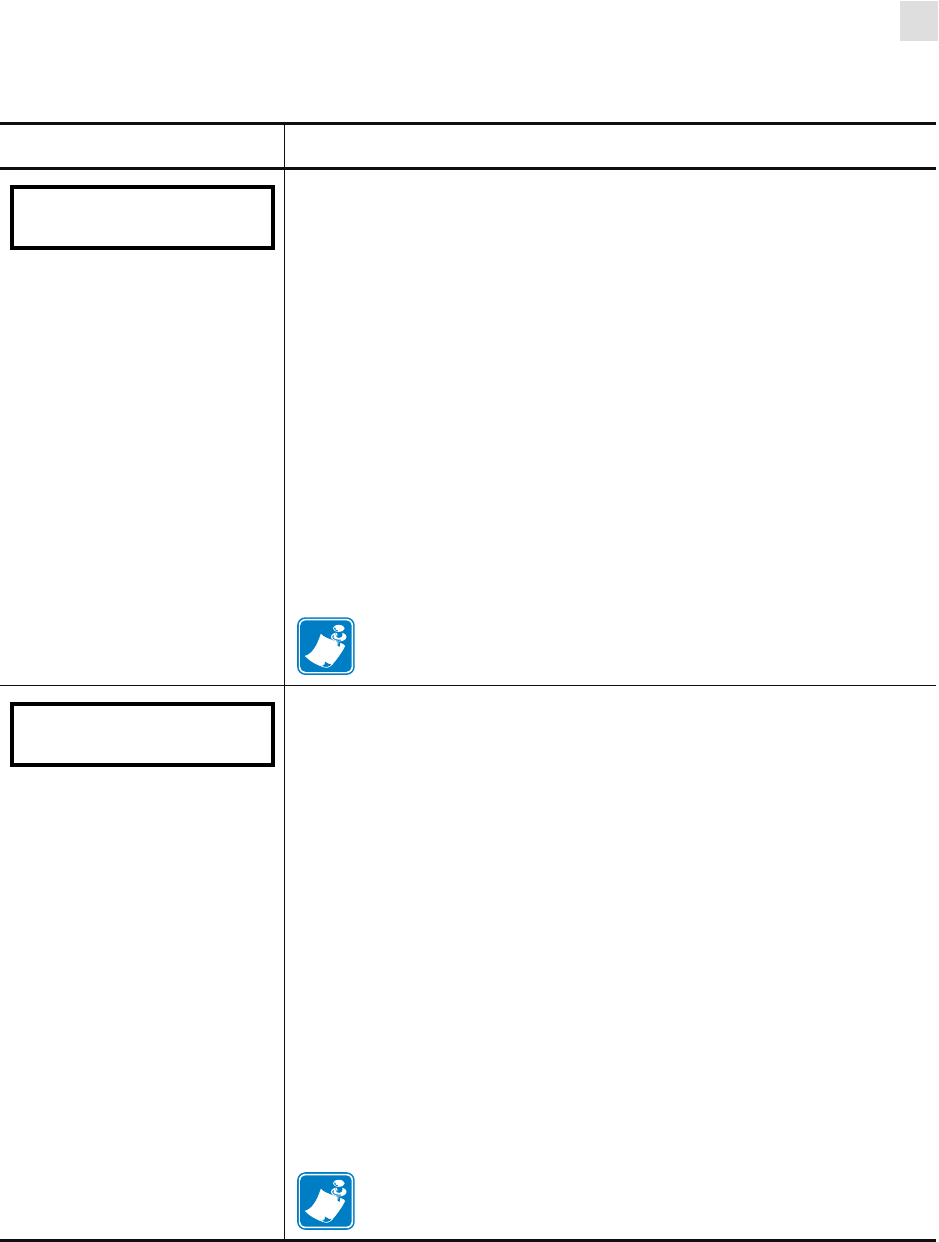
Print Engine Configuration
Front Panel LCD
58981L-002 Rev. 1 2/11/05 R110PAX4 User Guide 61
Initialize Memory Card
Caution • Perform this operation only when it is necessary to erase all
previously stored information from the optional PCMCIA card or
CompactFlash card.
1. Press the right oval to select YES. (If you are prompted to enter the
password, see Changing Password-Protected Parameters on page 54.
The front panel LCD asks ARE YOU SURE?.
2. Do you wish to continue?
• Press the left oval to select NO to cancel the request and return to
INITIALIZE CARD prompt.
• Press the right oval to select YES and begin initialization.
When initialization is complete, the print engine automatically exits
Setup mode, and the front panel displays PRINTER READY. If you
exit Setup mode while initialization is still in process, the front panel
display flashes between the phrases CHECKING B: MEMORY and
PRINTER IDLE.
Note • Depending on the amount of memory in the memory card,
initialization may take up to 5 minutes to complete.
Initialize Flash Memory
Caution • Perform this operation only when it is necessary to erase all
previously stored information from Flash memory.
1. Press the right oval to select YES. (If you are prompted to enter the
password, see Changing Password-Protected Parameters on page 54.
The display shows INITIALIZE FLASH?
2. Press the right oval to select YES.
The display shows ARE YOU SURE?.
3. Do you wish to continue?
• Press the left oval to select NO to cancel the request and return to the
INITIALIZE FLASH prompt.
• Press the right oval to select YES and begin initialization.
When initialization is complete, the print engine automatically exits
Setup mode, and the front panel displays PRINTER READY. If you
exit Setup mode while initialization is still in process, the front panel
display flashes between the phrases CHECKING E: MEMORY and
PRINTER IDLE.
Note • Depending on the amount of free FLASH memory,
initialization may take up to 1 minute to complete.
Table 6 • Print Engine Parameters (Page 7 of 19)
Parameter Action/Explanation
FORMAT CARD:
A: B:
INIT FLASH MEM
YES
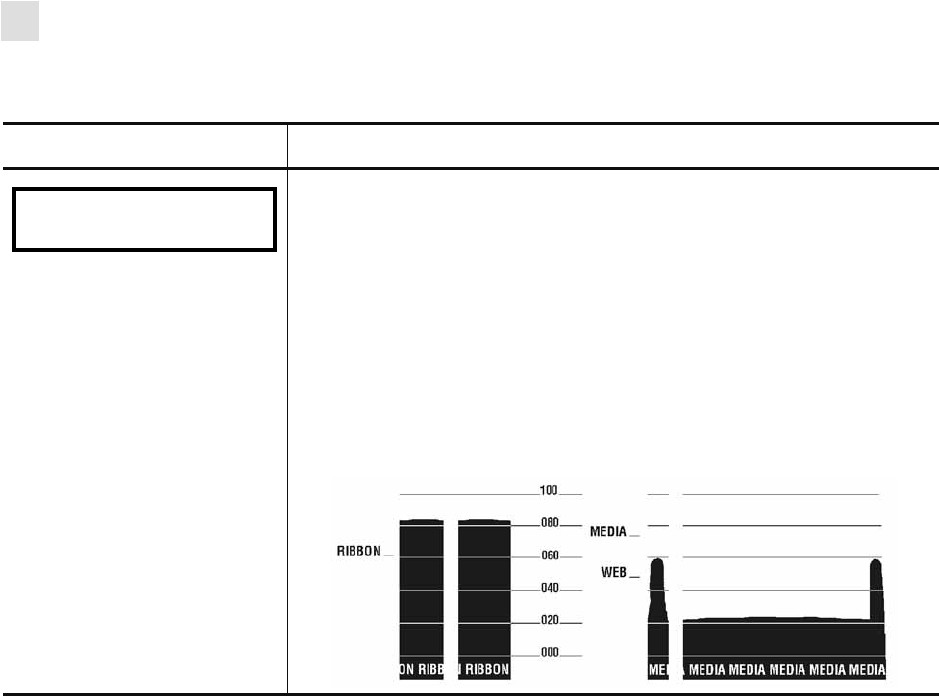
62 R110PAX4 User Guide 58981L-002 Rev. 1 2/11/05
Print Engine Configuration
Front Panel LCD
Print Sensor Profile
The media sensor profile may be used to troubleshoot registration
problems that may be caused when the media sensor detects preprinted
areas on the media or experiences difficulty in determining web location.
• Press the right oval to start this standard calibration procedure and print
a media sensor profile.
Figure 41 shows a media sensor profile. If the sensitivity of the media
and/or ribbon sensors must be adjusted, use Calibrate Media and Ribbon
Sensor Sensitivity on page 63 to adjust sensor sensitivity.
Figure 41 • Media Sensor Profile
Table 6 • Print Engine Parameters (Page 8 of 19)
Parameter Action/Explanation
SENSOR PROFILE
PRINT
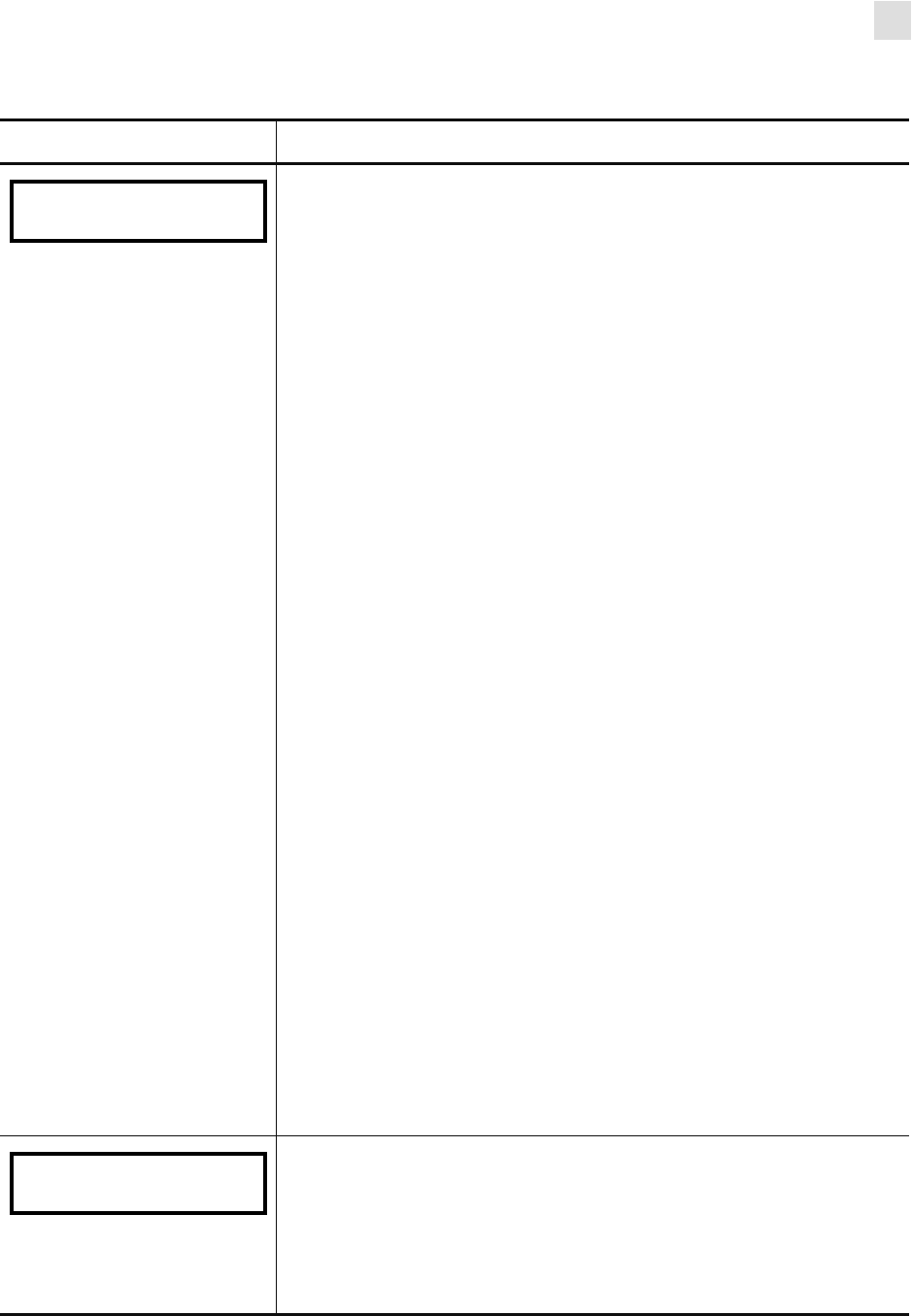
Print Engine Configuration
Front Panel LCD
58981L-002 Rev. 1 2/11/05 R110PAX4 User Guide 63
Calibrate Media and Ribbon Sensor Sensitivity
Use this procedure to adjust sensitivity of media and ribbon sensors.
Important • This procedure must be followed exactly as presented. All of
the steps must be performed even if only one of the sensors requires
adjustment. You may press the left oval at any step in this procedure to
cancel the procedure.
1. Press the right oval to start the calibration procedure.
The LOAD BACKING prompt displays.
2. Open the printhead.
3. Remove approximately 8 in. (203 mm) of labels from the backing, and
pull the media into the print engine so that only the backing is between
the media sensors.
4. Leave the printhead open.
5. Press the right oval to continue.
The REMOVE RIBBON prompt displays.
6. Remove the ribbon (if used).
7. Close the printhead.
8. Press the right oval to continue.
The message CALIBRATING PLEASE WAIT displays.
The print engine adjusts the scale (gain) of the signals that it receives
from the media and ribbon sensors based on the specific media and
ribbon combination being used. On the sensor profile, this essentially
corresponds to moving the peak of the graph up or down to optimize
the readings for your application.
When calibration is complete, RELOAD ALL displays.
9. Open the printhead and pull the media forward until a label is
positioned under the media sensor.
10. Reload the ribbon (if used).
11. Close the printhead.
12. Press the right oval to continue.
The print engine performs an auto-calibration. During this process, the
print engine checks the readings for the media and ribbon based on the
new scale established, determines the label length, and determines the
print mode. To see the new readings on the new scale, print a sensor
profile.
Set Parallel Communications
Select the communications port that matches the one being used by the
host computer.
• Press the right or left oval to display other choices.
Default: BIDIRECTIONAL
Selections: BIDIRECTIONAL, UNIDIRECTIONAL
Table 6 • Print Engine Parameters (Page 9 of 19)
Parameter Action/Explanation
MEDIA AND RIBBON
CALIBRATE
PARALLEL COMM.
- BIDIRECTIONAL +
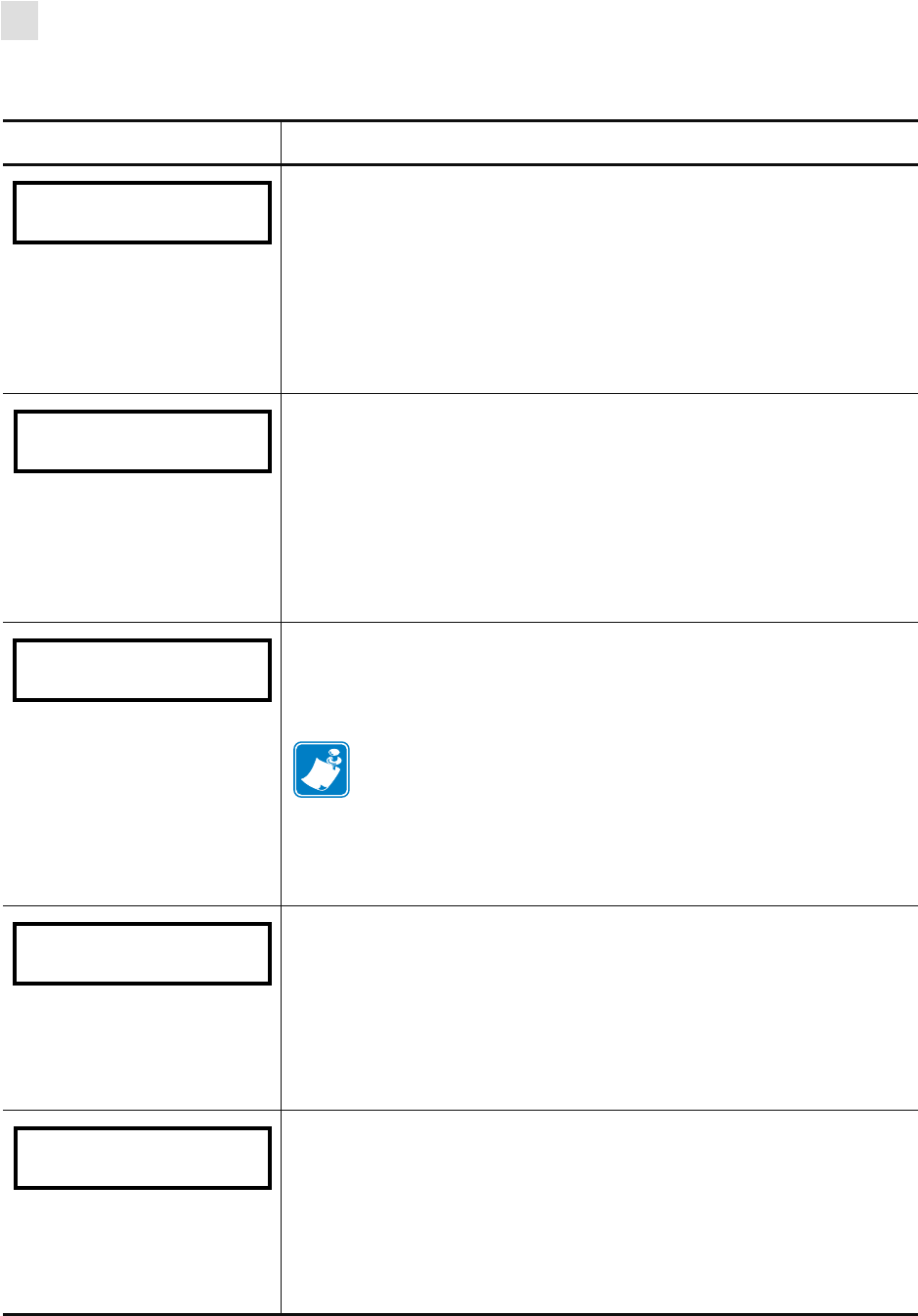
64 R110PAX4 User Guide 58981L-002 Rev. 1 2/11/05
Print Engine Configuration
Front Panel LCD
Set Serial Communications
Select the communications port that matches the one being used by the
host computer.
Important • Do not change this parameter from the default. The print
engine supports only RS-232. This parameter will be eliminated in a future
version of the firmware.
Default: RS-232
Selections: RS-232, RS-422/485, RS-485 MULTIDROP
Set Baud
The baud setting of the print engine must match the baud setting of the
host computer for accurate communications to take place. Select the value
that matches the one being used by the host computer.
• Press the right or left oval to display other choices.
Default: 9600
Selections: 110, 300, 600, 1200, 2400, 4800, 9600, 14400, 19200, 28800,
38400, 57600, 115200
Set Data Bits
The data bits of the print engine must match the data bits of the host
computer for accurate communications to take place. Set the data bits to
match the setting being used by the host computer.
Note • Code Page 850 requires the data bits to be set to 8 bits.
See the ZPL II Programming Guide for more information.
• Press the right or left oval to display other choices.
Default: 8BITS
Selections: 7BITS, 8BITS
Set Parity
The parity of the print engine must match the parity of the host computer
for accurate communications to take place. Select the parity that matches
the one being used by the host computer.
• Press the right or left oval to display other choices.
Default: NONE
Selections: EVEN, ODD, NONE
Set Host Handshake
The handshake protocol of the print engine must match the handshake
protocol of the host computer for communication to take place. Select the
handshake protocol that matches the one being used by the host computer.
• Press the right or left oval to display other choices.
Default: XON/XOFF
Selections: XON/XOFF, DTR/DSR, RTS/CTS
Table 6 • Print Engine Parameters (Page 10 of 19)
Parameter Action/Explanation
SERIAL COMM
- RS232 +
BAUD
- 9600 +
DATA BITS
- 8 BITS
PARITY
- EVEN +
HOST HANDSHAKE
- XON/XOFF +
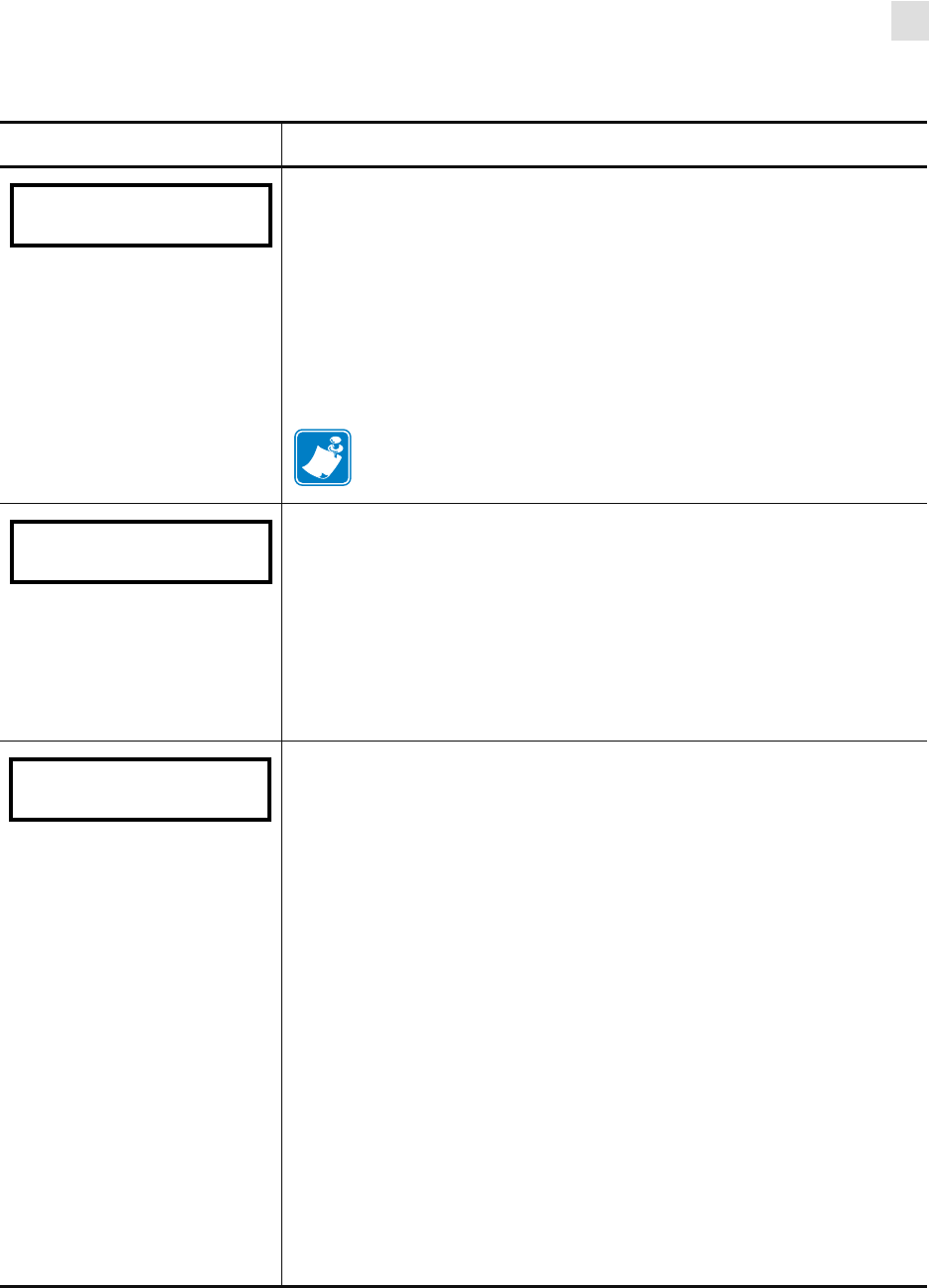
Print Engine Configuration
Front Panel LCD
58981L-002 Rev. 1 2/11/05 R110PAX4 User Guide 65
Set Protocol
Protocol is a type of error checking system. Depending on the selection, an
indicator may be sent from the print engine to the host computer signifying
that data has been received. Select the protocol that is requested by the
host computer. Further details on protocol can be found in the ZPL II
Programming Guide.
• Press the right or left oval to display other choices.
Default: NONE
Selections: NONE, ZEBRA, ACK_NAK
Note • Zebra is the same as ACK_NAK, except that Zebra
response messages are sequenced. If Zebra is selected, the print
engine must use DTR/DSR host handshake protocol.
Set Network ID
Network ID is used to assign a unique number to a print engine. This gives
the host computer the means to address a specific print engine. This does
not affect TCP/IP or IPX networks.
1. Press the left oval to move to the next digit position.
2. Press the right oval to increase the value of the digit.
Default: 000
Range: 000 to 999
Set Communications Mode
The communication diagnostics mode is a troubleshooting tool for
checking the interconnection between the print engine and the host
computer. When DIAGNOSTICS is selected, all data sent from the host
computer to the print engine prints as straight ASCII characters, with the
hex value below the ASCII text. The print engine prints all characters
received, including control codes, like CR (carriage return). A sample
printout is shown in Communications Diagnostics Test on page 148.
Notes on diagnostic printouts are defined as follows:
• FE indicates a framing error.
• OE indicates an overrun error.
• PE indicates a parity error.
• NE indicates noise.
1. Press the right or left oval to toggle between the choices.
2. For any errors, check that your communication parameters are correct.
3. Set the print width equal to or less than the label width used for the
test. See Set Print Width on page 57 for more information.
Default: NORMAL MODE
Selections: NORMAL MODE, DIAGNOSTICS
Table 6 • Print Engine Parameters (Page 11 of 19)
Parameter Action/Explanation
PROTOCOL
- NONE +
NETWORK ID
- 000 +
COMMUNICATIONS
- NORMAL MODE +
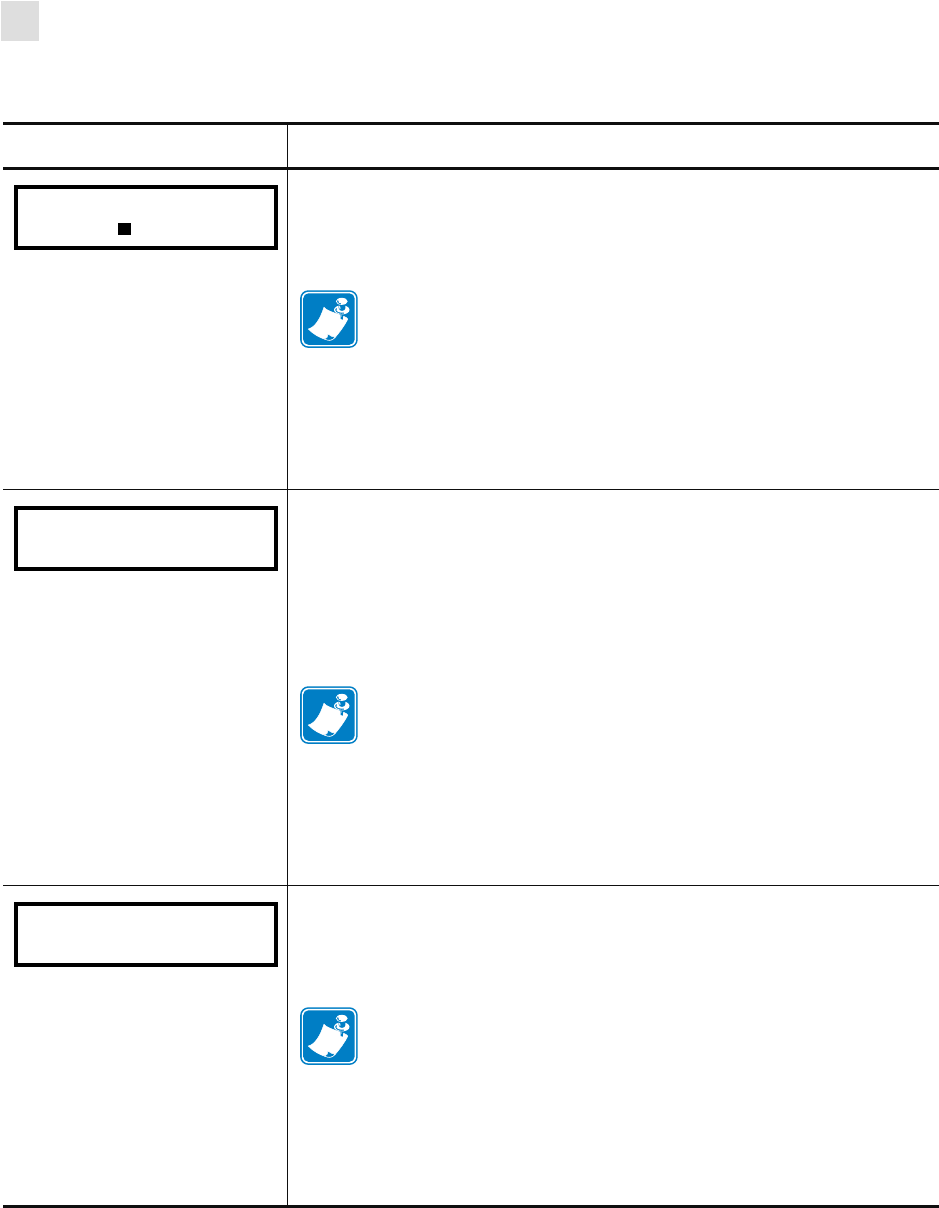
66 R110PAX4 User Guide 58981L-002 Rev. 1 2/11/05
Print Engine Configuration
Front Panel LCD
Set Control Prefix Character
The print engine looks for this two-digit hex character to indicate the start
of a ZPL/ZPL II control instruction. The “H” that is displayed indicates
Hexadecimal and is not part of the value.
Note • Do not use the same hex value for the control, format, and
delimiter character. The print engine must see different characters
to work properly.
1. Press the left oval to move to the next digit position.
2. Press the right oval to increase the value of the digit.
Default: 7E (tilde—displayed as a black square)
Range: 00 to FF
Set Format Prefix Character
The format prefix is a two-digit hex value used as a parameter place
marker in ZPL/ZPL II format instructions. The “H” that is displayed
indicates Hexadecimal and is not part of the value. The print engine looks
for this hex character to indicate the start of a ZPL/ZPL II format
instruction. See the ZPL II Programming Guide Volume I for more
information.
Note • Do not use the same hex value for the control, format, and
delimiter character. The print engine must see different characters
to work properly.
1. Press the left oval to move to the next digit position.
2. Press the right oval to increase the value of the digit.
Default: 5E (caret)
Range: 00 to FF
Set Delimiter Character
The delimiter character is a two-digit hex value used as a parameter place
marker in ZPL/ZPL II format instructions. See the ZPL II Programming
Guide Volume I for more information.
Note • Do not use the same hex value for the control, format, and
delimiter character. The print engine must see different characters
to work properly.
1. Press the left oval to move to the next digit position.
2. Press the right oval to increase the value of the digit.
Default: 2C (comma)
Range: 00 to FF
Table 6 • Print Engine Parameters (Page 12 of 19)
Parameter Action/Explanation
CONTROL PREFIX
- < >7EH +
FORMAT PREFIX
- <^>5EH +
DELIMITER CHAR
- <,>2CH +
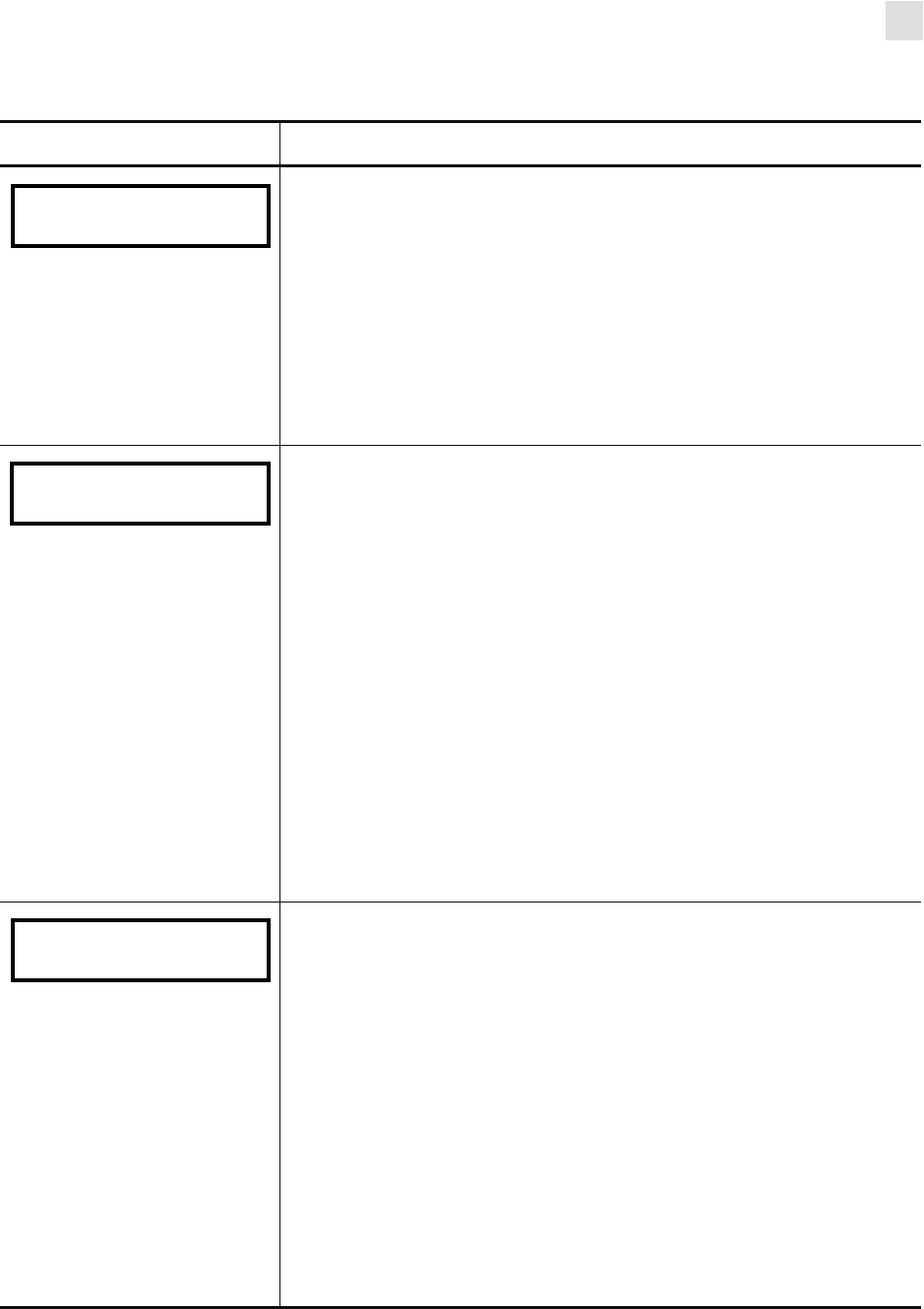
Print Engine Configuration
Front Panel LCD
58981L-002 Rev. 1 2/11/05 R110PAX4 User Guide 67
Select ZPL Mode
The print engine remains in the selected mode until it is changed by this
front panel instruction or by using a ZPL/ZPL II command. The print
engine accepts label formats written in either ZPL or ZPL II, eliminating
the need to rewrite any ZPL formats that already exist. See the ZPL II
Programming Guide for more information on the differences between ZPL
and ZPL II.
• Press the right or left oval to display other choices.
Default: ZPL II
Selections: ZPL II, ZPL
Select Media Power-Up Option
This parameter sets the action of the labels when the print engine is turned
on.
• Press the right or left oval to display the choices.
Default: CALIBRATION
Selections: FEED, CALIBRATION, LENGTH, SHORT CAL, and NO
MOTION
•Feed—feeds the labels to the first registration point.
•Calibration—determines the length of the label and adjusts the sensor
settings.
•Length—In continuous mode, feeds the last stored label length. In
non-continuous mode, calibrates based on the maximum label length
setting (see Set Maximum Label Length on page 58).
•Short Cal—calibrates label length using the current sensor settings.
•No Motion—the media does not move. You must press FEED to cause
the print engine to resynch to the start of the next label.
Select Head Close Option
• Press the right or left oval to display the choices.
Default: CALIBRATION
Selections: FEED, CALIBRATION, LENGTH, SHORT CAL, and NO
MOTION
•Feed—feeds the labels to the first registration point.
•Calibration—determines the length of the label and adjusts the sensor
settings.
•Length—In continuous mode, feeds the last stored label length. In
non-continuous mode, calibrates based on the maximum label length
setting (see Set Maximum Label Length on page 58).
•Short Cal—calibrates label length using the current sensor settings.
•No Motion—the media does not move. You must press FEED to cause
the print engine to resynch to the start of the next label.
Table 6 • Print Engine Parameters (Page 13 of 19)
Parameter Action/Explanation
ZPL MODE
- ZPL II +
MEDIA POWER UP
- CALIBRATION +
HEAD CLOSE
- CALIBRATION +
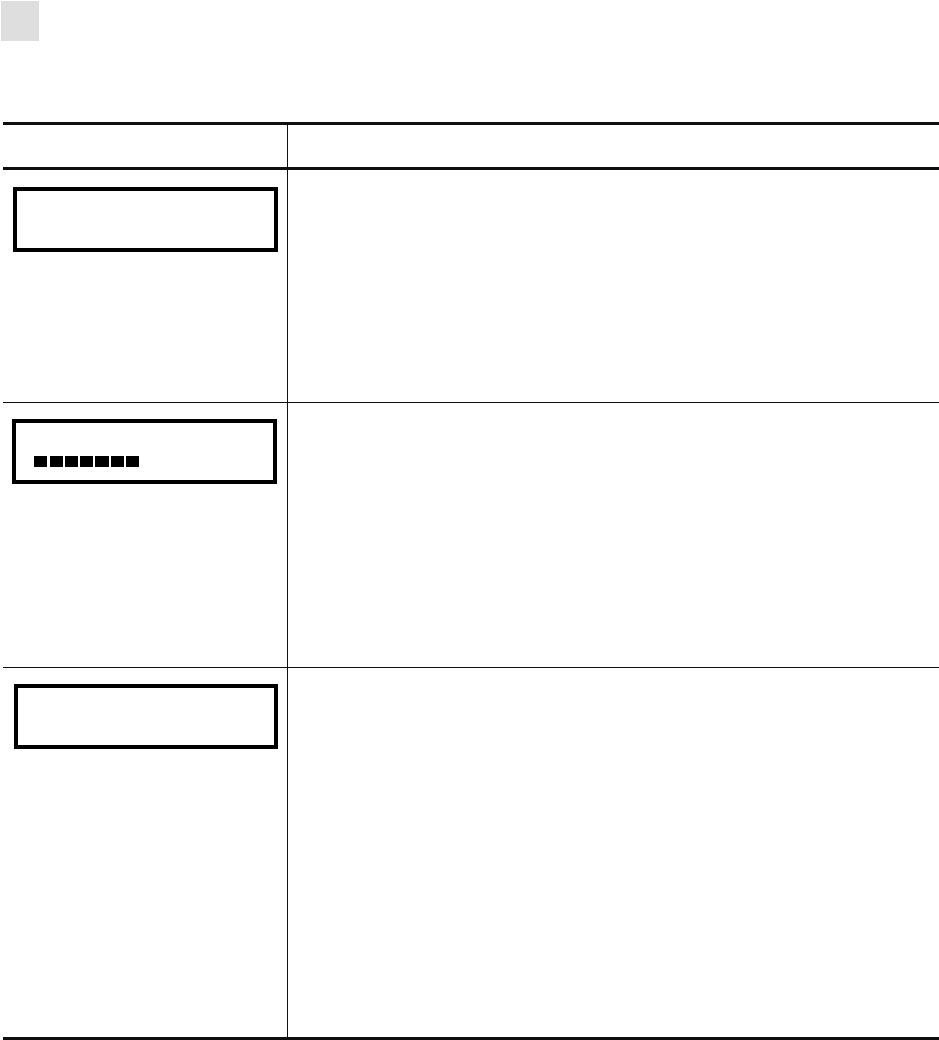
68 R110PAX4 User Guide 58981L-002 Rev. 1 2/11/05
Print Engine Configuration
Front Panel LCD
Select Backfeed Sequence
This parameter establishes when label backfeed occurs after a label is
removed in applicator mode. It has no effect in Rewind mode. This
parameter setting can be superseded by the ~JS instruction when received
as part of a label format (refer to ZPL II Programming Guide Volume I).
• Press the right or left oval to display other choices.
Default: BEFORE
Selections: DEFAULT, AFTER, BEFORE, OFF
Adjust Label Top Position
The label top position adjusts the print position vertically on the label.
Positive numbers adjust the label top position further down the label (away
from the printhead); negative numbers adjust the position up the label
(toward the printhead). The displayed value represents dots.
• Press the right oval to increase the value.
• Press the left oval to decrease the value.
Default: +000
Range: –120 to +120 dots
Adjust Left Position
This parameter establishes how far from the left edge of a label the format
begins to print by adjusting horizontal positioning on the label. Positive
numbers adjust the printing away from the main frame by the number of
dots selected; negative numbers shift printing toward the main frame. The
displayed value represents dots.
1. Press the left oval to move the cursor.
2. Press the right oval to change between + and to increase the value of
the digit.
3. For a negative value, enter the value before changing to the minus
sign.
Default: 0000
Range: –9999 to +9999 dots
Table 6 • Print Engine Parameters (Page 14 of 19)
Parameter Action/Explanation
BACKFEED
- BEFORE +
LABEL TOP +000
- +
LEFT POSITION
- ±0000 +
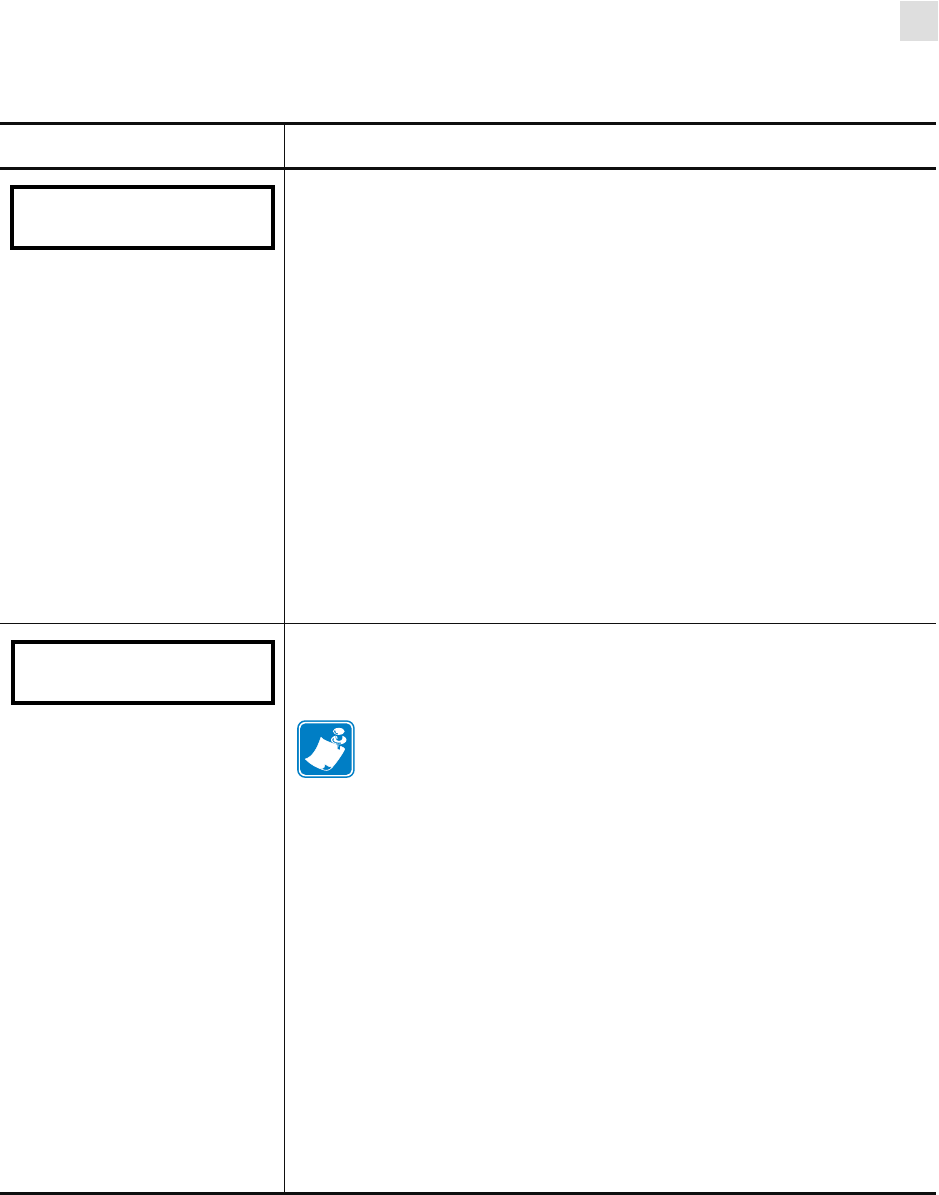
Print Engine Configuration
Front Panel LCD
58981L-002 Rev. 1 2/11/05 R110PAX4 User Guide 69
Set the Head Resistor Value
Caution • This parameter should be changed only by qualified service
personnel. Do not set the value higher than that shown on the
printhead. Setting a higher value may damage the printhead.
This value has been preset at the factory to match the resistance value of
the printhead. It does not need to be changed unless the printhead or the
main logic board is replaced.
1. Look on the printhead for the label that shows the resistance value
(Ωvalue). Take note of this value before installing the replacement
printhead.
2. Press the left oval to move to the next digit position.
3. Press the right oval to increase the value of the digit.
Initial Value: Factory-set to match the printhead shipped with your print
engine.
Default Value: 0500
Range: 0500 to 2000
Set the Applicator Port
Determines the action of the applicator port. For more information about
the applicator signals, see Applicator Interface Connector on page 163.
Note • Set this value as suggested by the applicator manufacturer.
•Off (Mode 0): The applicator port is off.
•Mode 1: Asserts the ~END_PRINT signal low while the print engine
is moving the label forward.
•Mode 2: Asserts the ~END_PRINT signal high while the print
engine is moving the label forward.
•Mode 3: Asserts the ~END_PRINT signal low for 20 milliseconds
when a label has been completed and positioned. Not asserted during
continuous printing modes.
•Mode 4: Asserts the ~END_PRINT signal high for 20 milliseconds
when a label has been completed and positioned. Not asserted during
continuous printing modes.
• Press the right or left oval to display other choices.
Default: OFF
Selections: OFF, MODE 1, MODE 2, MODE 3, MODE 4
Table 6 • Print Engine Parameters (Page 15 of 19)
Parameter Action/Explanation
HEAD RESISTOR
- 0500 OHMS +
APPLICATOR PORT
- OFF +
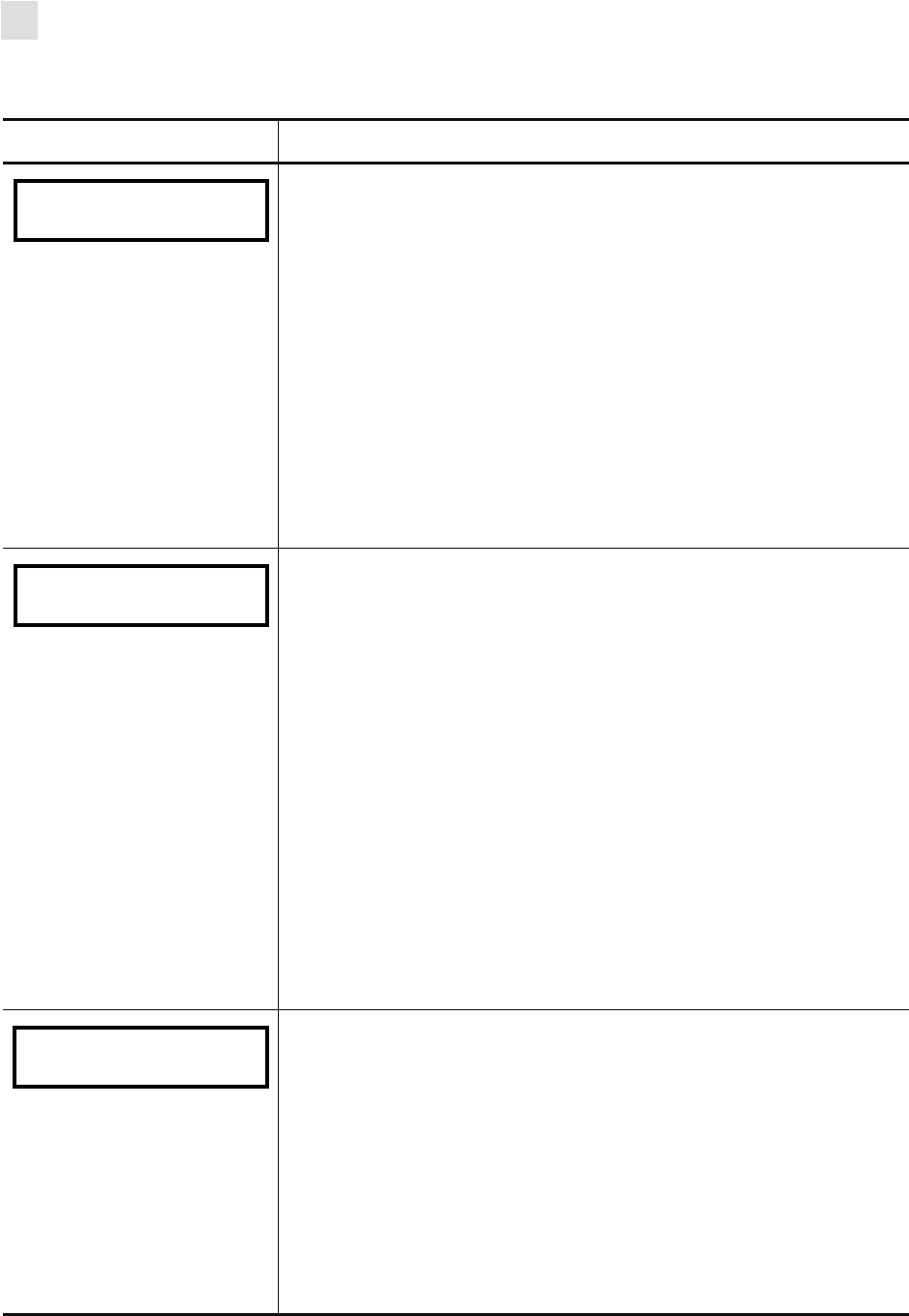
70 R110PAX4 User Guide 58981L-002 Rev. 1 2/11/05
Print Engine Configuration
Front Panel LCD
Select Start Print Signal
This parameter determines how the print engine reacts to the Start Print
Signal input on pin 3 of the applicator interface connector at the rear of the
print engine.
•Pulse Mode—Labels print when the signal transitions from HIGH to
LOW.
•Level Mode—Labels print as long as the signal is asserted LOW.
Caution • Start Print Signal is set by the applicator manufacturer and
should not be changed unless the factory defaults have been reloaded.
Please make a note of it. While other choices are valid, the print engine
must be returned to its designated setting for it to work properly.
•Press the right or left oval to display other choices.
Default: PULSE MODE
Selections: PULSE MODE, LEVEL MODE
Select Resynch Mode
This parameter determines how the print engine reacts if the label
synchronization is lost and the label top is not where expected.
•Feed Mode—If the label top is not where expected, the print engine
feeds a blank label to find the label top position.
•Error Mode—If the label top is not where expected, the print engine
stops, enters Pause mode, displays the message Error Condition
Feed Label, flashes the ERROR light, and asserts the Service
Required signal (pin 10 on the Applicator Interface Connector).
To resynch the media to the top of the label in Error mode, press
PAUSE to exit Pause mode. The ERROR light stops flashing, and the
Service Required signal is deactivated. The action of the print engine
is determined by the Head Close configuration selection (see
Select Head Close Option on page 67).
• Press the right or left oval to toggle between choices.
Default: FEED MODE
Selections: FEED MODE, ERROR MODE
Set Ribbon Low Mode
When the Ribbon Low feature is off, the output signal (Pin 9) does not
function, the LOW RIBBON warning is not displayed, and the print engine
continues to print until it runs out of ribbon.
When the Ribbon Low feature is set to any of the lengths, output signal
(Pin 9) on the applicator port is functional. When the amount of ribbon on
the supply spindle reaches the specific length, the output signal asserts
HIGH to provide a RIBBON LOW warning.
• Press the right or left oval to display other choices.
Default: 25M
Selections: OFF, 25M, 50M, 75M, 100M
Table 6 • Print Engine Parameters (Page 16 of 19)
Parameter Action/Explanation
START PRINT SIG
- PULSE MODE +
RESYNCH MODE
- FEED MODE +
RIBBON LOW MODE
- 25M +
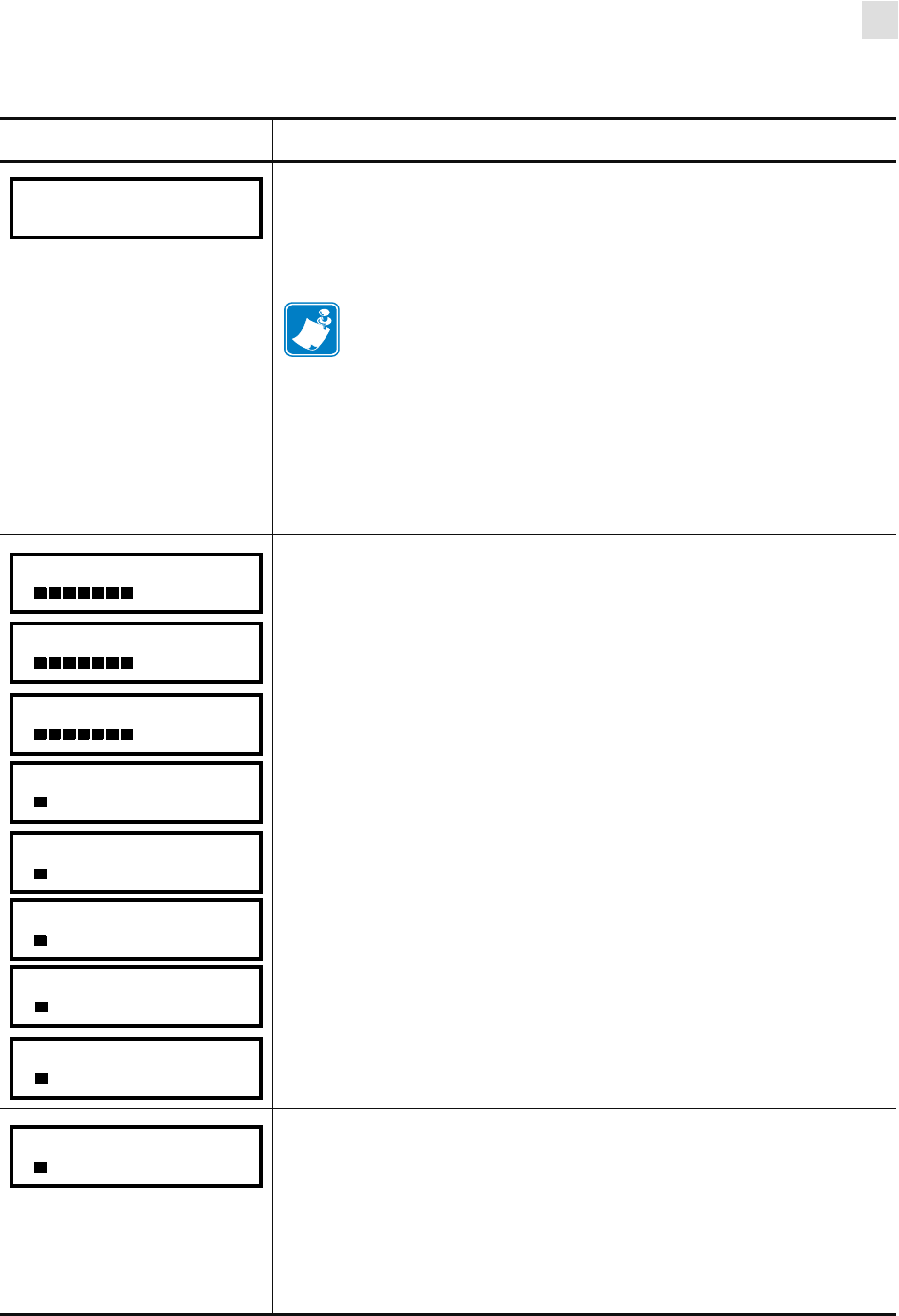
Print Engine Configuration
Front Panel LCD
58981L-002 Rev. 1 2/11/05 R110PAX4 User Guide 71
Set Reprint Mode
When the Reprint feature is enabled, the reprint input signal (Pin 6) on the
applicator port is functional. When the input signal is asserted, the last
label printed is printed again. (This includes non-printing labels.) When
the Reprint feature is disabled, the reprint input signal is ignored.
Note • The ^SP ZPL command is ignored when the Reprint
feature is enabled. When the Reprint feature is disabled, the ^SP
command can be used. In addition, when a received label format
is canceled prior to printing, the reprint function for the previous
label is also canceled. Refer to the ZPL II Programming Guide
for additional information.
• Press the right or left oval to display other choices.
Default: DISABLED
Range: ENABLED, DISABLED
These parameters are automatically set during the calibration procedure
and should be changed only by a qualified service technician. Refer to the
ZPL II Programming Guide for information on these parameters.
• Press NEXT repeatedly to skip these parameters.
Adjust LCD Display
This parameter allows you to adjust the brightness of your LCD if it is
difficult to read.
• Press the left oval to decrease the value (reduce brightness).
• Press the right oval to increase the value (increase brightness).
Default: 10
Range: 00 to 19
Table 6 • Print Engine Parameters (Page 17 of 19)
Parameter Action/Explanation
REPRINT MODE
- DISABLED +
WEB S. 073
- +
MEDIA S. 075
- +
RIBBON S. 071
- +
MARK S. 000
- +
MARK MED S. 000
- +
MEDIA LED 082
- +
MARK LED 005
- +
RIBBON LED 008
- +
LCD ADJUST +10
- +
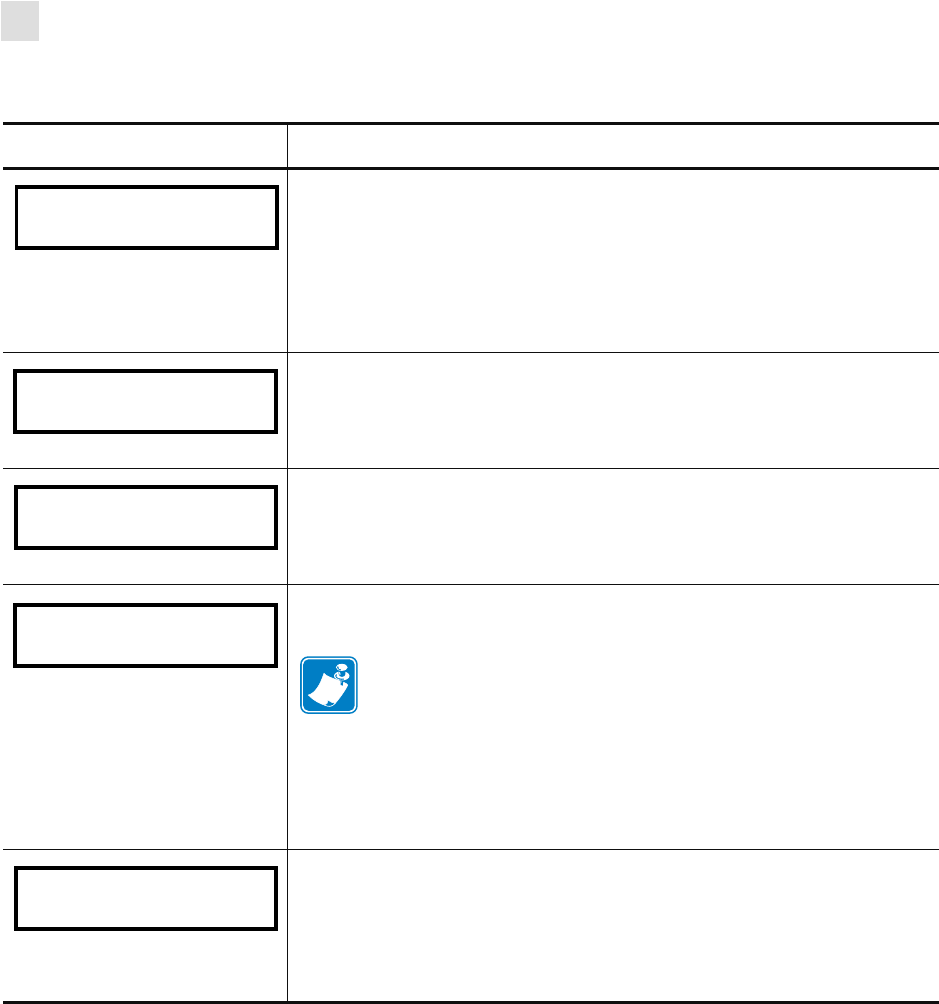
72 R110PAX4 User Guide 58981L-002 Rev. 1 2/11/05
Print Engine Configuration
Front Panel LCD
Select Format Convert
Selects the bitmap scaling factor. The first number is the original dots per
inch (dpi) value; the second, the dpi to which you would like to scale.
• Press the right or left oval to display other choices.
Default: NONE
Selections: NONE, 150 → 300, 150 → 600, 200 → 600, 300 → 600
Set RTS Takeup Dancer Arm Calibration Value
This parameter is used as a diagnostic tool to monitor the voltage supplied
to the Ribbon Tensioning System Takeup Dancer Arm. Refer to the
Maintenance Manual for information.
Set RTS Supply Dancer Arm Calibration Value
This parameter is used as a diagnostic tool to monitor the voltage supplied
to the Ribbon Tensioning System Supply Dancer Arm. Refer to the
Maintenance Manual for information.
Select Idle Display
This parameter selects the LCD options for the real-time clock.
Note • If the default value is not selected, pressing either oval
briefly displays the firmware version of the print engine.
• Press the right or left oval to display other choices.
Default: FIRMWARE VERSION
Selections: MM/DD/YY (24 HOUR), MM/DD/YY (12 HOUR),
DD/MM/YY (24 HOUR), DD/MM/YY (12 HOUR), FW VERSION
Set RTC Date
This parameter allows you to set the date following the convention
selected in IDLE DISPLAY.
1. Press the left oval to move to the next digit position.
2. Press the right oval to change the value of the digit.
Table 6 • Print Engine Parameters (Page 18 of 19)
Parameter Action/Explanation
FORMAT CONVERT
- NONE +
RTS TAKEUP ARM
XXX
RTS SUPPLY ARM
XXX
IDLE DISPLAY
- FW VERSION +
RTC DATE
- 01/31/01 +
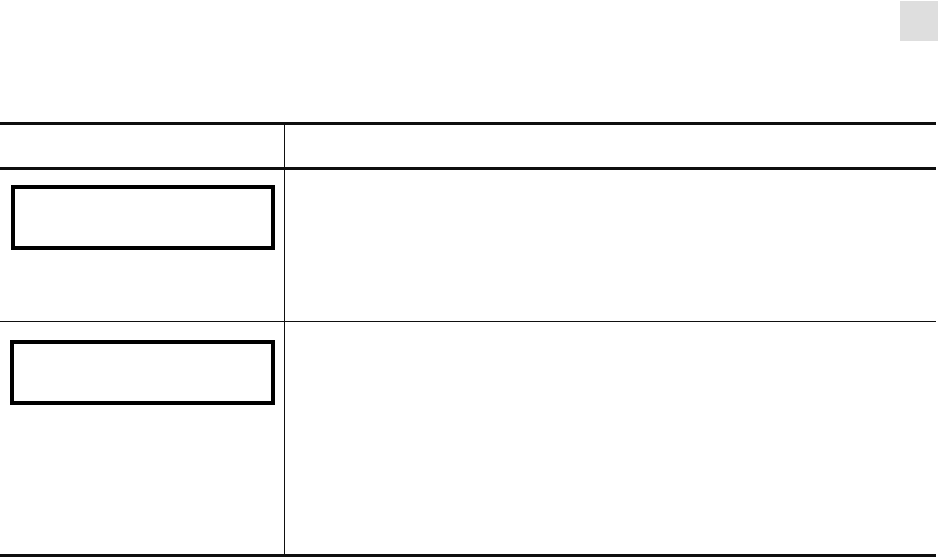
Print Engine Configuration
Front Panel LCD
58981L-002 Rev. 1 2/11/05 R110PAX4 User Guide 73
Set RTC Time
This parameter allows you to set the time following the convention
selected in IDLE DISPLAY.
1. Press the left oval to move to the next digit position.
2. Press the right oval to change the value of the digit.
Select the Display Language
This parameter allows you to change the language displayed on the front
panel LCD.
• Press the right or left oval to display other choices.
Default: ENGLISH
Selections: ENGLISH, SPANISH, FRENCH, GERMAN, ITALIAN,
NORWEGIAN, PORTUGUESE, SWEDISH, DANISH, SPANISH 2,
DUTCH, FINNISH, JAPAN
Table 6 • Print Engine Parameters (Page 19 of 19)
Parameter Action/Explanation
RTC TIME
- 14:55 +
LANGUAGE
-ENGLISH +
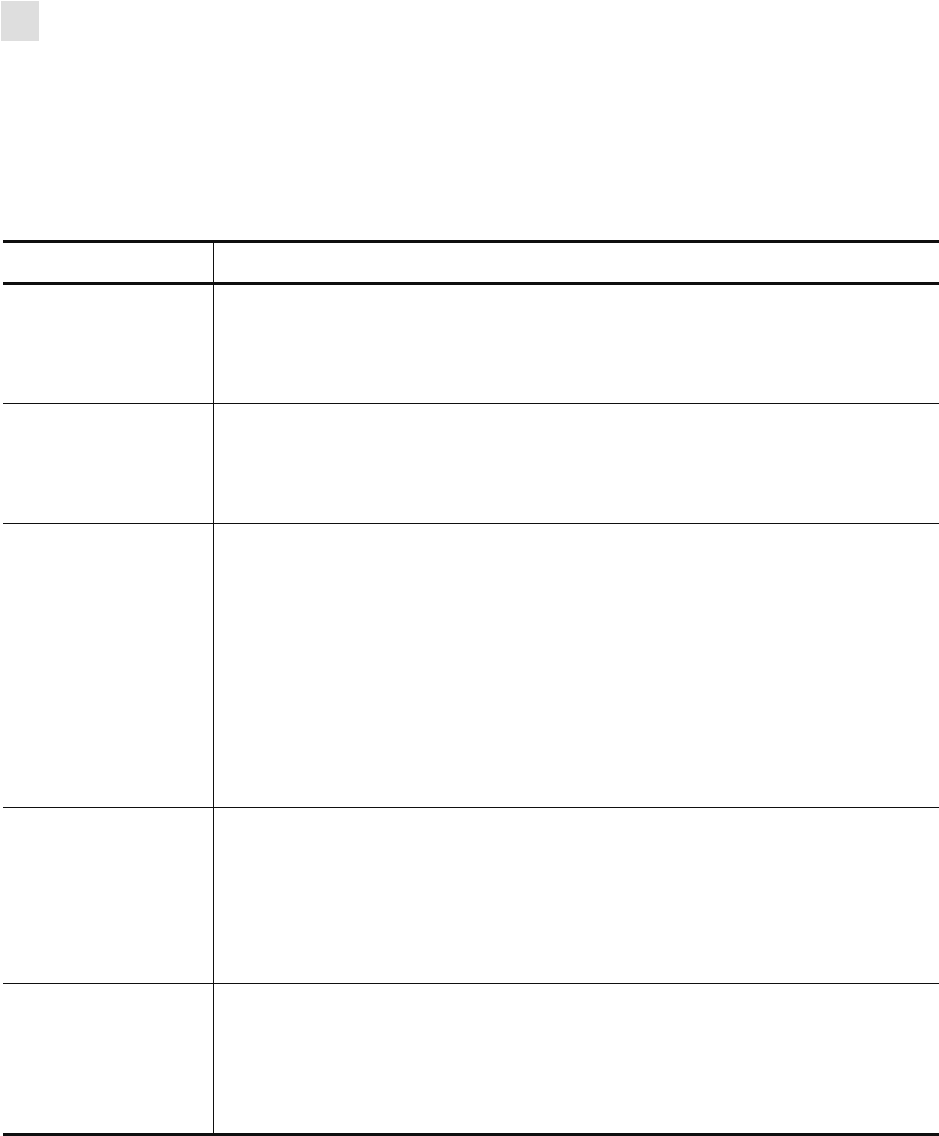
74 R110PAX4 User Guide 58981L-002 Rev. 1 2/11/05
Print Engine Configuration
Front Panel LCD
ZebraNet®Wired and Wireless Print Server LCD Displays
The menu options shown in Table 7 display only if you have the ZebraNet PrintServer II, or
10/100 PrintServer, or Wireless Print Server installed.
Table 7 • Print Server LCD Displays
Parameter Action/Explanation
LOAD LAN FROM?1This parameter, which serves the same function as the ^NP ZPL command, specifies
whether to use the printer’s or the print server’s IP settings at bootup.
Accepted Values: PRINTER, PRINTSERVER
Default Value: PRINTER
WIRED PS
CHECK?1This parameter, which serves the same function as the ^NB ZPL command, tells the
printer whether to search for a wired print server at bootup.
Accepted Values: YES, NO
Default Value: NO
IP PROTOCOL2IP Protocol
Allows either the user (permanent) or the server (dynamic) to select the IP address.
If a dynamic option is chosen, this selection determines the method(s) by which the
print server (wired or wireless) receives the IP address from the server.
• Press the right or left oval to display other choices.
Default: ALL
Selections: ALL, GLEANING ONLY, RARP, BOOTP, DHCP, DHCPAND
BOOTP, PERMANENT
Note • Use of GLEANING ONLY is not recommended when the Wireless Print
Server is installed.
IP ADDRESS2IP Address
This parameter allows you to select the IP address if PERMANENT was chosen in
IP PROTOCOL. (If a dynamic option was chosen, the user cannot select the
address.)
1. Press the left oval to move to the next digit position.
2. Press the right oval to increase the value of the digit.
SUBNET MASK2Subnet Mask
This parameter selects the part of the IP address that is considered to be part of the
local network. It can be reached without going through the default gateway.
1. Press the left oval to move to the next digit position.
2. Press the right oval to increase the value of the digit.
1 Appears only when the ZebraNet Wireless Print Server is installed.
2 These parameters appear after the system recognizes the existence of a ZebraNet print server (wired or wireless). After the
print server is recognized, all zeroes (000.000.000.000) will display until the printer obtains an IP address or defaults to
address 192.168.254.254.
3 If a wireless password is set, you must enter the wireless password (not the printer password) to access this parameter.
4 This parameter appears 1) when no wireless card is inserted or 2) when the wireless card is associated to the WLAN and the
card supports LEAP.
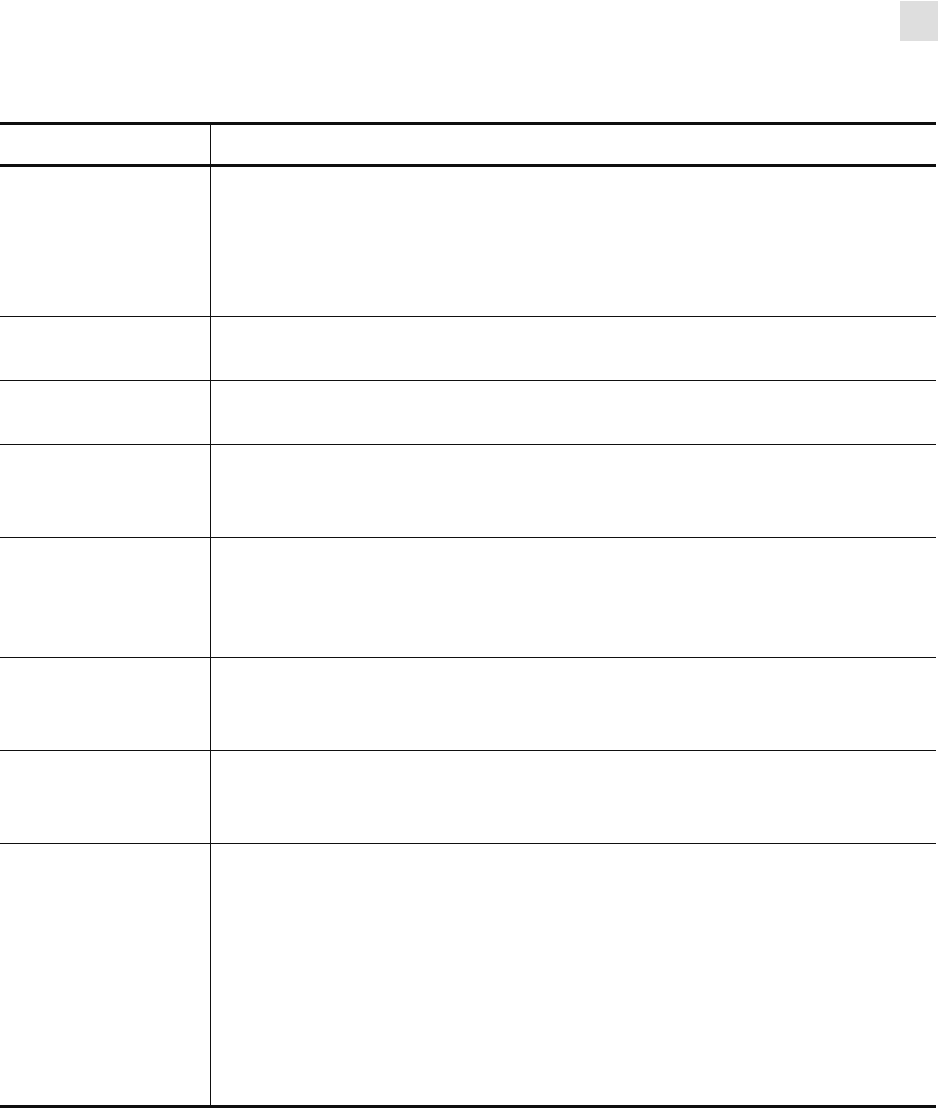
Print Engine Configuration
Front Panel LCD
58981L-002 Rev. 1 2/11/05 R110PAX4 User Guide 75
DEFAULT
GATEWAY2Default Gateway
This parameter allows you to select the IP address that the network traffic is routed
through if the destination address is not part of the local network.
1. Press the left oval to move to the next digit position.
2. Press the right oval to increase the value of the digit.
MAC ADDRESS1,3 MAC Address
This parameter cannot be changed through the front panel.
ESSID1,3 ESSID
This parameter cannot be changed through the front panel.
AUTH. TYPE1,3 Authentication Type
Default: OPEN
Selections: OPEN, SHARED
LEAP MODE3,4 An encryption method that is available with some wireless cards. Set the LEAP user
name and password through the printer web pages.
Accepted Values: ON, OFF
Default Value: OFF
ENCRYPTION
MODE1,3 Encryption Mode
Default: OFF
Selections: OFF, 40-BIT, 128-BIT
ENCRYPTION
INDEX1,3 Encryption Index
Default: 1
Selections: 1, 2, 3, 4
RESET
NETWORK2,3 Reset Network
This option resets the wireless card and the print server when the wireless option is
running. Selecting this option has no effect when the wireless option is not running,
when there is no card inserted, or when the wireless password is anything other than
the default (zero).
1. Press the right oval to select YES.
The LCD prompts ARE YOU SURE?.
• Press the left oval to select NO to cancel the request.
• Press the right oval to select YES and reset the network.
Table 7 • Print Server LCD Displays (Continued)
Parameter Action/Explanation
1 Appears only when the ZebraNet Wireless Print Server is installed.
2 These parameters appear after the system recognizes the existence of a ZebraNet print server (wired or wireless). After the
print server is recognized, all zeroes (000.000.000.000) will display until the printer obtains an IP address or defaults to
address 192.168.254.254.
3 If a wireless password is set, you must enter the wireless password (not the printer password) to access this parameter.
4 This parameter appears 1) when no wireless card is inserted or 2) when the wireless card is associated to the WLAN and the
card supports LEAP.
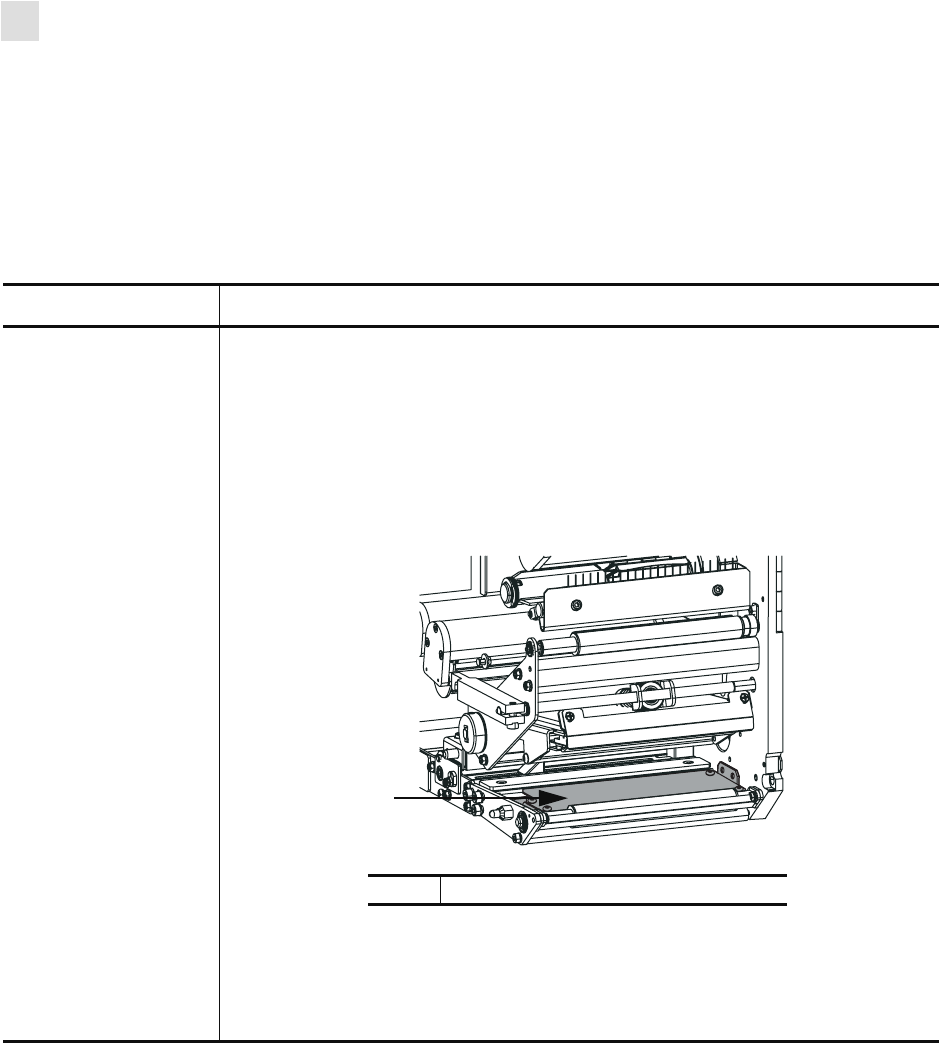
76 R110PAX4 User Guide 58981L-002 Rev. 1 2/11/05
Print Engine Configuration
Front Panel LCD
RFID LCD Displays
The menu options shown in Table 8 display only if you have a Radio Frequency Identification
(RFID) reader installed. When you enter Setup mode, press Previous to access these
parameters without having to scroll through all of the other parameters.
Table 8 • RFID LCD Displays
Parameter Action/Explanation
RFID TEST
QUICK SLOW Perform RFID Test
In both versions of this test, the printer attempts to read and write to a transponder.
In the slow test, the printer also checks the reader version number. If the printer fails
the test, the front panel displays an error message. No label movement occurs with
this test.
1. Position an RFID label so that the transponder is over the antenna support.
Figure 42 • Antenna Support Location
2. Press the left oval to select QUICK.
OR
Press the right oval to select SLOW.
3. If necessary, press the right arrow to select CONTINUE.
1
1Antenna support
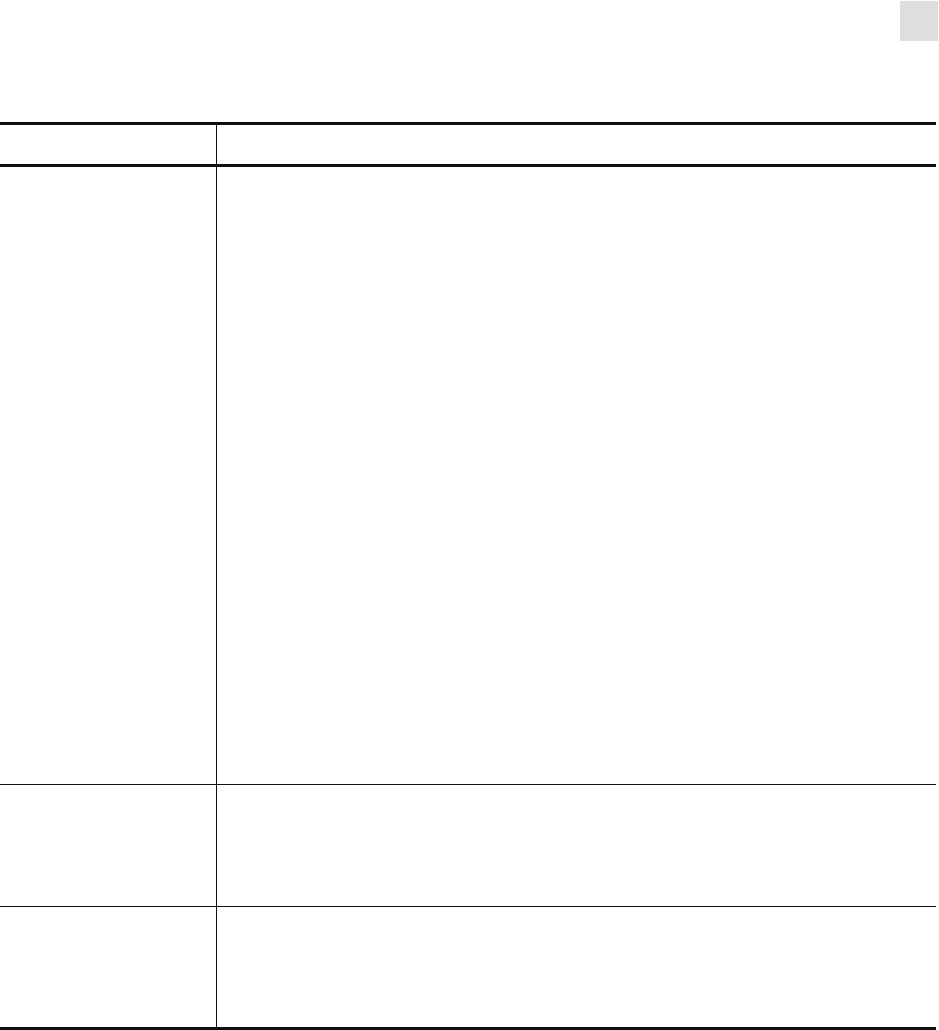
Print Engine Configuration
Front Panel LCD
58981L-002 Rev. 1 2/11/05 R110PAX4 User Guide 77
RFID TAG CALIB
RESTORE RUN Calibrate RFID Tag
This option allows you to have the printer determine the optimum programming
position for a given label or to bypass this function and use a default position if the
media conforms to Zebra’s placement requirements. An auto-calibration occurs
after this tag calibration to realign the media to its proper rest position and to update
the media tracking values in the printer.
1. Place an RFID label over the reader (no movement occurs with the test).
2. Press the left oval to select RESTORE.
OR
Press the right oval to select RUN.
•RESTORE—Selecting this option resets the programming position to zero (the
printer programs the tag without moving the transponder’s position).
•RUN—This option performs an RFID transponder calibration for a specific
RFID label. The printer feeds the RFID label one dot-row at a time while taking
readings (via the READ TAG command and the WRITE TAG commands) to
profile the RFID transponder. Based on the results, the printer determines the
optimum programming position for the label. The calibrated value is used as the
programming position for the ^RS command, can be overwritten by the ^RS
command, and is saved to nonvolatile memory (the value is saved even if the
power is turned off).
This calibration takes into account the print mode, backfeed mode, and tear off
position. The ^HR ZPL command performs the same calibration and returns a
results table to the host.
RFID READ PWR View or Change RFID Read Power
This parameter displays the current value for RFID read power.
Selections: HI, MED, LOW
Default: HI
RFID WRITE PWR View or Change RFID Write Power
This parameter displays the current value for RFID write power.
Selections: HI, MED, LOW
Default: HI
Table 8 • RFID LCD Displays (Continued)
Parameter Action/Explanation
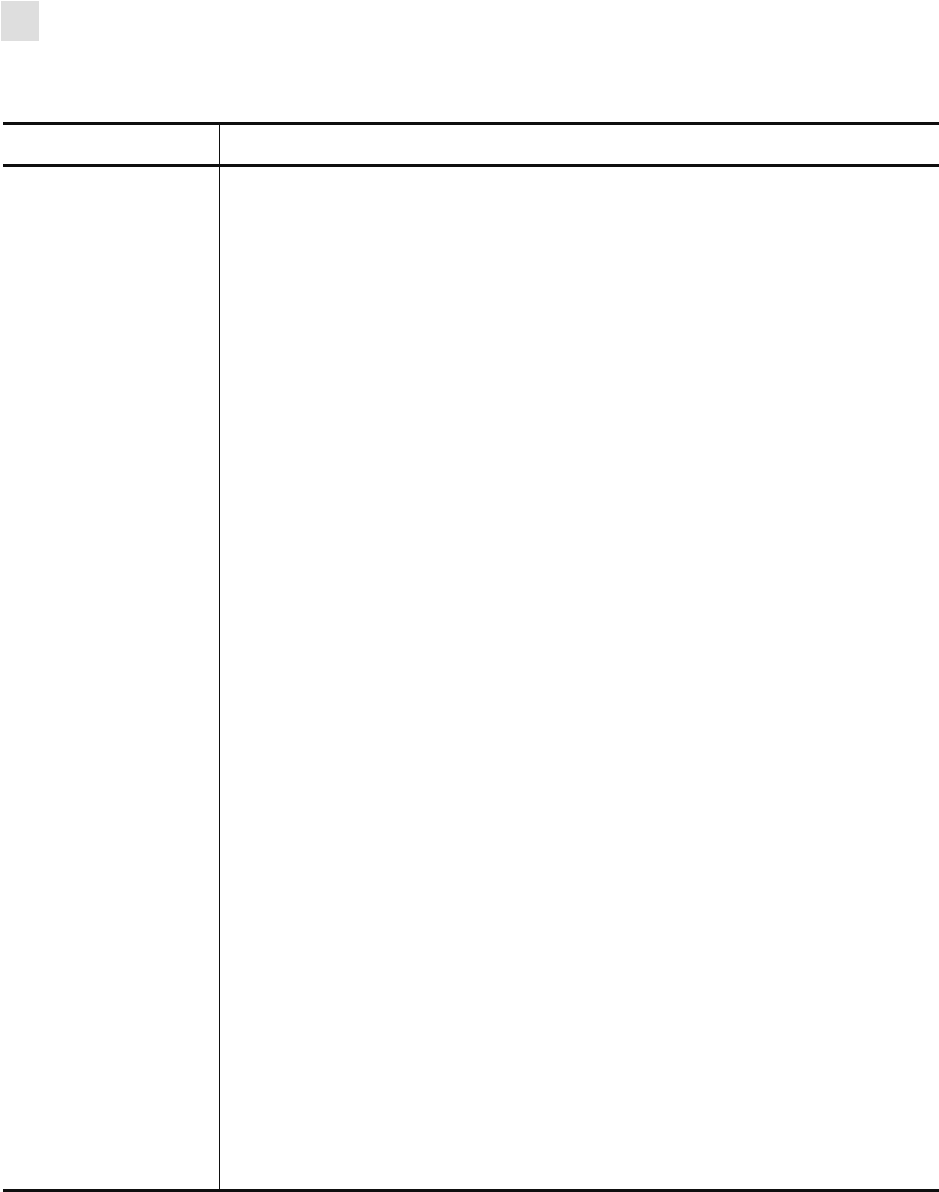
78 R110PAX4 User Guide 58981L-002 Rev. 1 2/11/05
Print Engine Configuration
Front Panel LCD
RFID ERR STATUS RFID Error Status
If an error condition exists, one of the following messages may be displayed here.
•RFID OK
• DATA AMOUNT ERR
• INVALID OPCODE
• OPCODE UNAVAIL
• POWER TOO HI
•INVALID FREQ
•INVALID PARAM
•INVALID BITS
• TIMEOUT TO LONG
• INVALID ADDRESS
•INVALID CMD
• BAD ERASE PASS
• BAD WRITE PASS
•FLASH ERROR
• NO TAG FOUND
• NO PROTOCOL
• INVALID PROTOC
• LOCK ERROR
• NOT IMPLEMENTED
•AFE NOT ON
• WRITE FAILED
• INVALID W/ PROT
• INVALID WR DATA
•INVALID FREQ
• TAG ID FAULT
• ID BUFFER FULL
• REPEATED ID
• RDR COM TIMEOUT
•VERIFY FAIL
• MULTIPLE TAGS
•RDR ERR %04X
Table 8 • RFID LCD Displays (Continued)
Parameter Action/Explanation
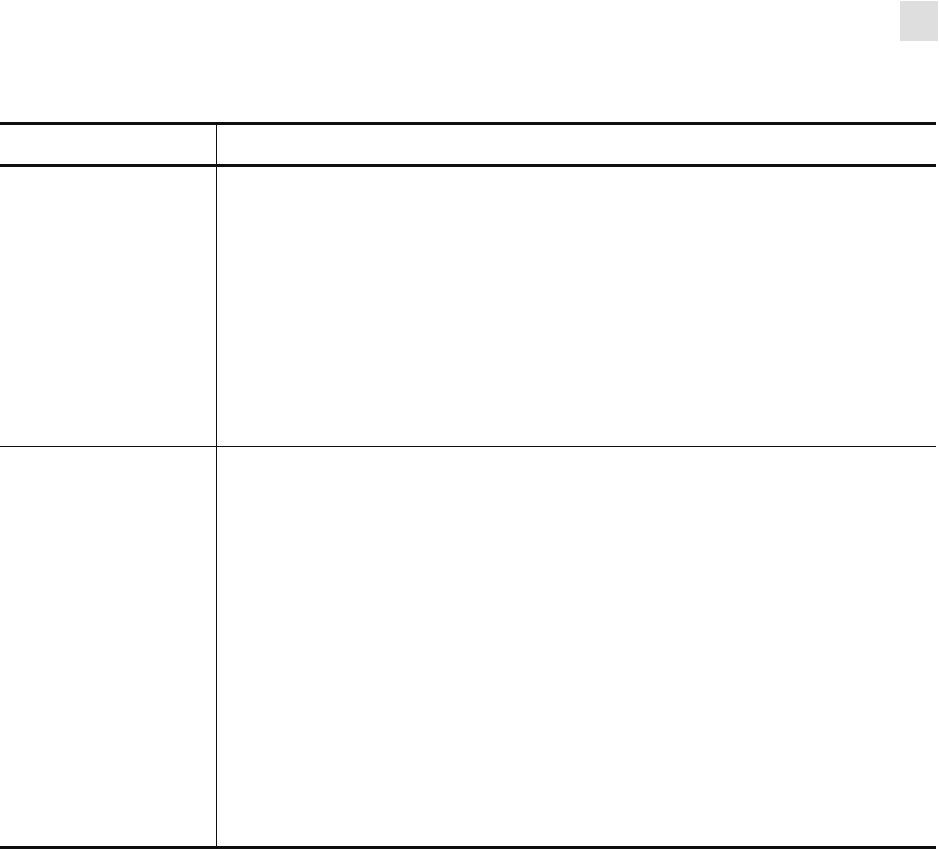
Print Engine Configuration
Front Panel LCD
58981L-002 Rev. 1 2/11/05 R110PAX4 User Guide 79
RFID TAG TYPE Specify RFID Tag Type
Selections:
• CLASS 1 64-BIT
• CLASS 1 96-BIT
• ISO18000
• NONE
•CLASS 0
•CLASS 0+
Default: CLASS 1 96-BIT
RFID TAG DATA Read and Display RFID Tag Data
When this option is selected, the reader attempts to read a tag over the reader, even
if the printhead is open. If no tag data can be read, the text NO DATA appears on
the bottom line of the display.
If a tag is present, the data for that tag appears on the bottom line of the display in
hexadecimal format. If there is more data than can fit on the bottom line (such as for
96-bit tags), the bottom line will cycle from the first 8 bytes (most significant) to the
next 4 bytes (least significant) approximately every 2 seconds. Whatever
hexadecimal data that can fit on two screens is displayed and cycled through.
For example, if the tag contains the data 0x112233445566778899001122,
when this option is selected, the bottom line of the display shows:
1122334455667788 for 2 seconds followed by 99001122 for 2 seconds. The
printer cycles through these indefinitely.
The printer rereads the tag every cycle, so if the tag changes, data is displayed for
the current tag over the antenna.
Table 8 • RFID LCD Displays (Continued)
Parameter Action/Explanation
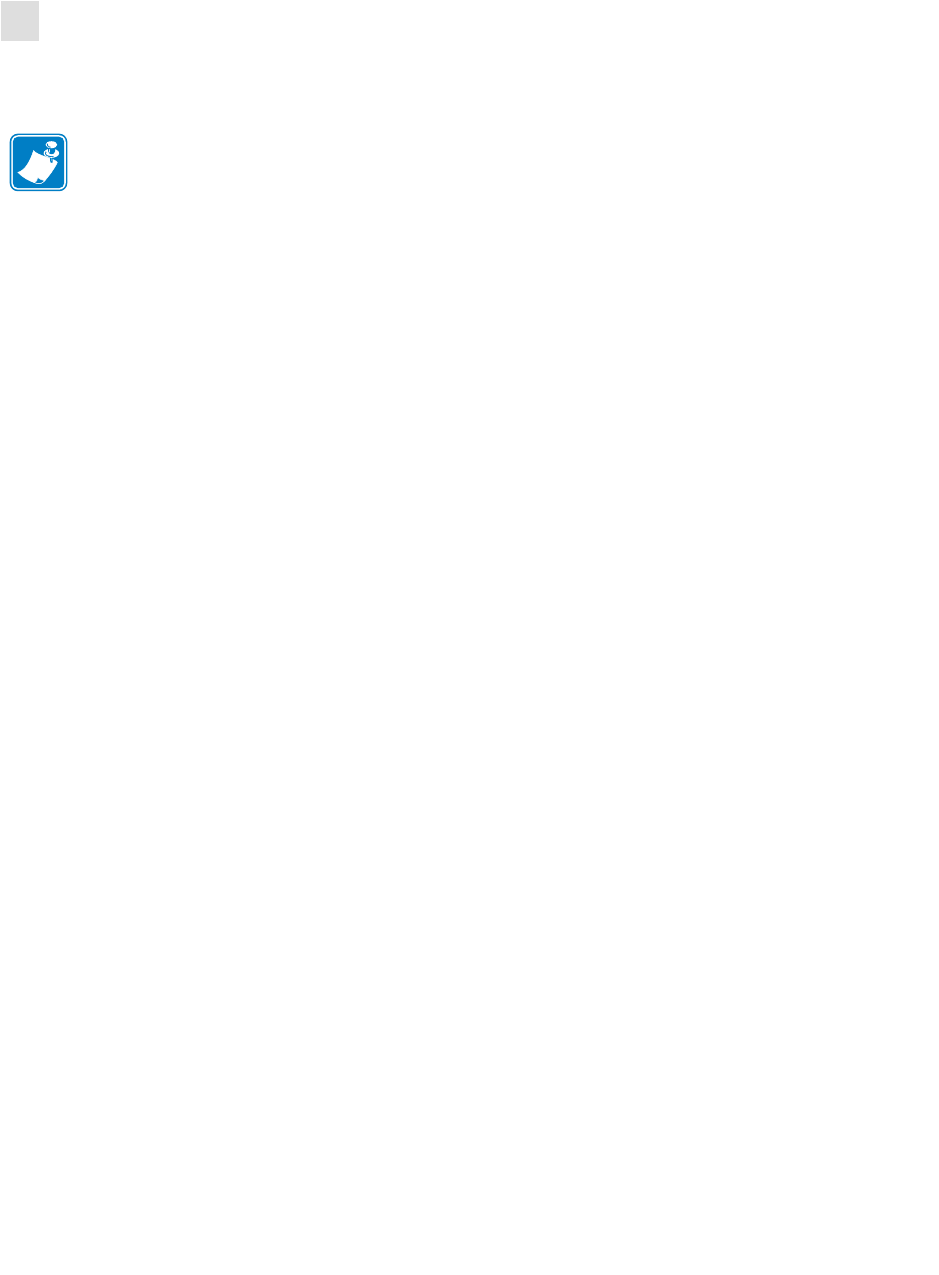
80 R110PAX4 User Guide 58981L-002 Rev. 1 2/11/05
Print Engine Configuration
Front Panel LCD
Notes • ___________________________________________________________________
__________________________________________________________________________
__________________________________________________________________________
__________________________________________________________________________
__________________________________________________________________________
__________________________________________________________________________
__________________________________________________________________________
__________________________________________________________________________
__________________________________________________________________________
__________________________________________________________________________
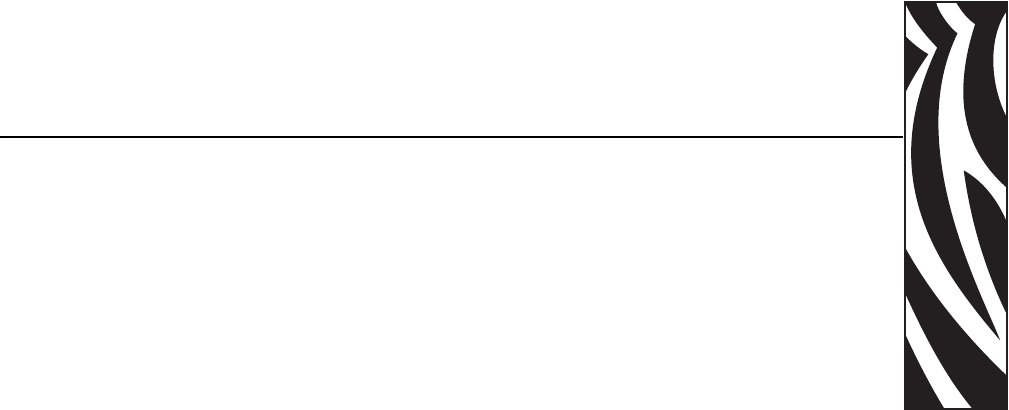
58981L-002 Rev. 1 2/11/05 R110PAX4 User Guide 81
5
RFID Guidelines
This chapter describes how Radio Frequency Identification (RFID) works and provides the
commands used to create RFID labels.
Contents
Overview . . . . . . . . . . . . . . . . . . . . . . . . . . . . . . . . . . . . . . . . . . . . . . . . . . . . . . . . . . . . . 83
Transponder Placement. . . . . . . . . . . . . . . . . . . . . . . . . . . . . . . . . . . . . . . . . . . . . . . . 83
ZPL Commands for RFID Applications . . . . . . . . . . . . . . . . . . . . . . . . . . . . . . . . . . . . 83
Electronic Product Code (EPC) . . . . . . . . . . . . . . . . . . . . . . . . . . . . . . . . . . . . . . . . . . 84
EPC Structure in RFID Labels . . . . . . . . . . . . . . . . . . . . . . . . . . . . . . . . . . . . . . . . . . . 84
Getting Started with RFID . . . . . . . . . . . . . . . . . . . . . . . . . . . . . . . . . . . . . . . . . . . . . . . . 85
Creating Basic RFID Label Formats . . . . . . . . . . . . . . . . . . . . . . . . . . . . . . . . . . . . . . . . 86
RFID Label Format 1—Write a 96-bit Tag in Hexadecimal . . . . . . . . . . . . . . . . . . . . . 87
RFID Label Format 2—Write a 64-bit Tag in Hexadecimal . . . . . . . . . . . . . . . . . . . . . 88
RFID Label Format 3—Write a 96-bit Tag in ASCII . . . . . . . . . . . . . . . . . . . . . . . . . . . 89
RFID Label Format 4—Read Data from Tag and Print on Label . . . . . . . . . . . . . . . . . 90
RFID Label Format 5—Write Tag, Read Tag, and Print Data on Label . . . . . . . . . . . . 91
RFID Label Format 6—Write Tag, Read Tag, and Return Results to Host . . . . . . . . . 93
ZPL II Commands for RFID . . . . . . . . . . . . . . . . . . . . . . . . . . . . . . . . . . . . . . . . . . . . . . . 95
^HR Calibrate RFID Transponder Position . . . . . . . . . . . . . . . . . . . . . . . . . . . . . . . . 96
^HV Host Verification . . . . . . . . . . . . . . . . . . . . . . . . . . . . . . . . . . . . . . . . . . . . . . . . . 98
^RB Define EPC Data Structure . . . . . . . . . . . . . . . . . . . . . . . . . . . . . . . . . . . . . . . . 99
^RF Read or Write RFID Format . . . . . . . . . . . . . . . . . . . . . . . . . . . . . . . . . . . . . . . 102
^RM Enable RFID Motion. . . . . . . . . . . . . . . . . . . . . . . . . . . . . . . . . . . . . . . . . . . . . 104
^RN Detect Multiple RFID Tags in Encoding Field. . . . . . . . . . . . . . . . . . . . . . . . . . 105
~RO Reset Advanced Counters. . . . . . . . . . . . . . . . . . . . . . . . . . . . . . . . . . . . . . . . 106
^RR Specify RFID Retries for a Block . . . . . . . . . . . . . . . . . . . . . . . . . . . . . . . . . . . 108
^RS RFID Setup . . . . . . . . . . . . . . . . . . . . . . . . . . . . . . . . . . . . . . . . . . . . . . . . . . . 109
^RT Read RFID Tag . . . . . . . . . . . . . . . . . . . . . . . . . . . . . . . . . . . . . . . . . . . . . . . . 113

Contents (Continued)
82 R110PAX4 User Guide 58981L-002 Rev. 1 2/11/05
RFID Guidelines
^RW Set RFID Read and Write Power Levels . . . . . . . . . . . . . . . . . . . . . . . . . . . . . 115
^RZ Set RFID Tag Password. . . . . . . . . . . . . . . . . . . . . . . . . . . . . . . . . . . . . . . . . . 116
^WT Write Tag . . . . . . . . . . . . . . . . . . . . . . . . . . . . . . . . . . . . . . . . . . . . . . . . . . . . . 117
^WV Verify RFID Write Operation. . . . . . . . . . . . . . . . . . . . . . . . . . . . . . . . . . . . . . . 119
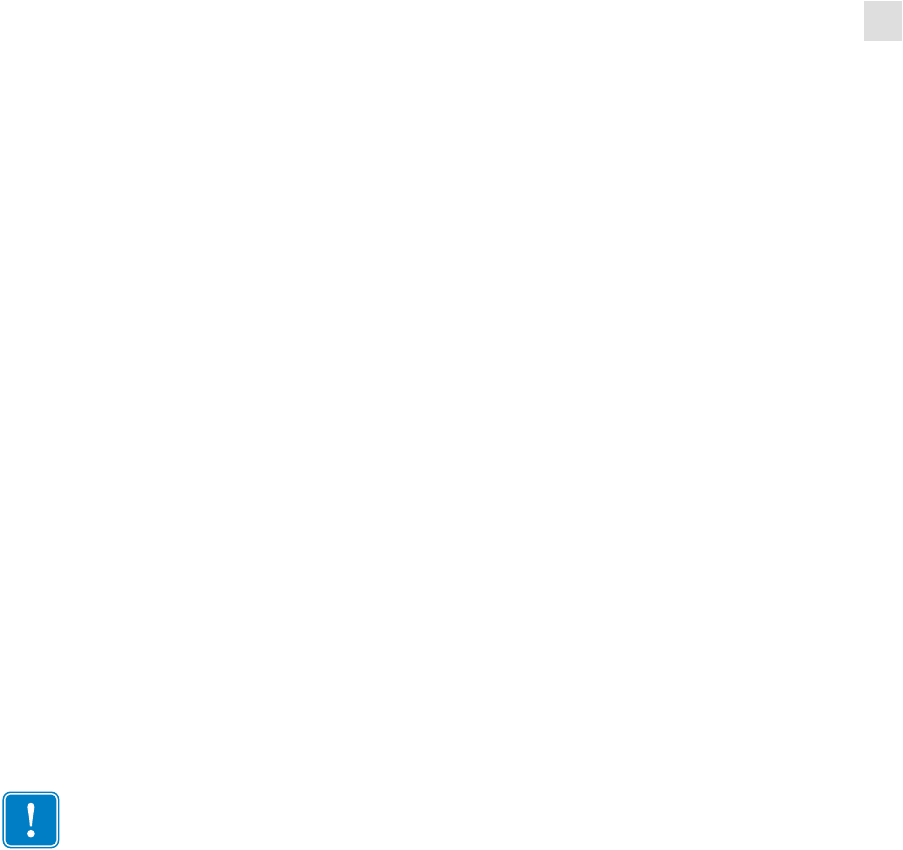
RFID Guidelines
Overview
58981L-002 Rev. 1 2/11/05 R110PAX4 User Guide 83
Overview
The R110PAX4 RFID label printers/encoders serve as dynamic tools for both printing and
encoding RFID labels, tickets, and tags. The printer encodes information on ultra-thin UHF
RFID transponders that are embedded in “smart” labels. It then immediately verifies proper
encoding and prints bar codes, graphics, and/or text on the label’s surface. For more
information about RFID media, see Table 3, Types of Media on page 27.
How well that an encoded RFID label functions depends on factors such as where the label is
placed on an item as well as on the contents of the item (such as metals or liquids). Contact the
supplier of your RFID transponders for assistance with these types of issues.
Transponder Placement
The RFID transponder, which is sometimes called the RFID tag, is usually comprised of an
antenna that is bonded to an integrated circuit (IC) chip. The IC chip contains the RF circuit,
coders, decoders, and memory. If you hold an RFID label up to the light, you can see the
transponder’s antenna embedded within the label, and you can feel a bump in the label where
the IC chip is located.
Communication between the RFID label and the printer is established when the label’s
transponder lines up with the printer’s antenna. The optimal transponder programming
position varies with the transponder size, its configuration, and the type of RFID IC chip used.
Print quality may be affected by printing directly over the transponder. In particular,
there is an area on each label immediately around the location of the IC chip where the
printer may print with low quality. Design your printed label around the location of the
chip in the type of approved RFID label that you select.
ZPL Commands for RFID Applications
Each RFID label has memory that can be read and most have memory that can be written to
through Zebra Programming Language (ZPL) commands. Use ZPL to read and encode
(write to) RFID labels just as you would use ZPL to print data on the labels. You can use
serialized fields, field variables, and any other ZPL features (such as the command ^HV
on page 98 to return the results to a host computer).
The RFID-specific ZPL commands for this printer are described in ZPL II Commands for
RFID on page 95. For examples of how you may use the ZPL commands, see Creating Basic
RFID Label Formats on page 86.
For more information about non-RFID ZPL commands and how to use them, refer to the
ZPL II Programming Guide (part number 46530L). A copy is available on the R110PAX4
User CD (part number 23062-003) and online at http://www.zebra.com/manuals.
Important • It is important to use transponders that have been specifically approved for use in
this RFID printer. Failure to do so may result in the inability to read or write to the embedded
RFID tags. As new transponders become commercially available, Zebra will evaluate them for
compatibility with this printer. To order labels with transponders that are approved for your
specific RFID printer, contact your authorized Zebra reseller.

84 R110PAX4 User Guide 58981L-002 Rev. 1 2/11/05
RFID Guidelines
Overview
Electronic Product Code (EPC)
EPC is a product numbering standard that can be used to identify a variety of items by using
RFID technology. The 96-bit EPC code links to an online database, providing a secure way of
sharing product-specific information along the supply chain.
As with bar codes, EPC is divided into numbers that identify the manufacturer and product
type. However, EPC contains the following additional information:
•Header—identifies the length, type, structure, version, and generation of EPC
•Manager Number—identifies the company or company entity
•Object Class—similar to a stock keeping unit (SKU)
•Serial Number—the specific instance of the Object Class being tagged
Additional fields may be used as part of the EPC code to encode and decode information from
different numbering systems into human-readable form.
EPC Structure in RFID Labels
In the printer, you can subdivide transponder data into unique fields. You can customize these
fields to create “smart” labels that meet your needs or that meet the standards necessary in
EPC programming.
The ^RB ZPL command is used to define EPC structure. EPC field data can be delimited with
any of the following characters:
, ~ ! @ # $ % ^ & * | . < > / \ : ;
See ^RB on page 99 for more information about and examples for defining EPC structure.
XML-Enabled Printing
This printer contains the XML-Enabled Printing option, which offers increased flexibility and
interoperability by making it possible to integrate Zebra printers quickly and easily into most
Enterprise Resource Planning (ERP) systems and their applications. XML-enabled printers
print directly from Oracle Warehouse Management System (WMS), Mobile Supply Chain
Applications (MSCA), and many other ERP vendor applications. XML-enabled label formats
upload directly to the label printer, and the XML data stream is sent via TCP/IP directly to the
appropriate Zebra printer.
For more information about XML-Enabled Printing, refer to the Zebra XML-Enabled Printer
Reference Guide (part number 13426L-001). A copy is available on the R110PAX4 User CD
(part number 23062-003) and online at http://www.zebra.com/manuals.
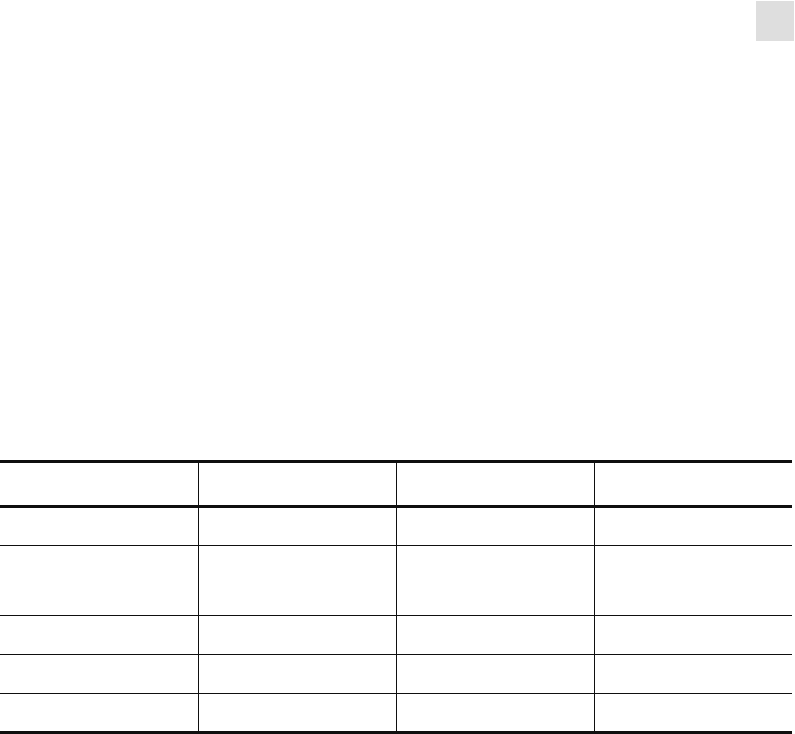
RFID Guidelines
Getting Started with RFID
58981L-002 Rev. 1 2/11/05 R110PAX4 User Guide 85
Getting Started with RFID
How you set up your printer for RFID applications is determined in part by the transponder
that you select. This section guides you through that selection and the settings that you may
need to change on your printer to make RFID reading and encoding possible. When you have
completed this section, you will be ready to program your RFID label formats.
Select a Transponder Type Before you purchase RFID labels, determine what type of
RFID transponder to use (Table 9). Different transponder types can have different attributes.
Some transponders can only be read while others can be read and written to repeatedly.
Transponders also have different amounts of available memory, which corresponds to the
amount of data that can be encoded in it. Select the combination that best suits your needs.
Set Tag Type After you have selected a transponder type and purchased labels, set the
transponder (tag) type on the printer. Do this through the front panel menu (see Specify RFID
Tag Type on page 79) or through the ^RS ZPL command (see ^RS on page 109).
Set Power Settings Each transponder has specific power setting requirements, which
define how much power the printer’s antenna will emit to “energize” the transponder in its
program field. The tag type that you are using must match the RFID power settings of the
printer. If necessary, you can change the power settings through the front panel (see View or
Change RFID Read Power or View or Change RFID Write Power on page 77) or through the
^RW ZPL command (see ^RW on page 115).
Perform RFID Transponder Calibration If you are using RFID labels that were
designed to meet the specifications of this printer, you do not need to perform RFID
transponder calibration. The printer will automatically place the labels in the optimal
programming position.
However, if you are using RFID labels that were not designed to meet the specifications of this
printer, you may need to perform an RFID transponder calibration to determine the optimal
programming position for your media. If necessary, you can perform this calibration through
the front panel (see Calibrate RFID Tag on page 77) or through the ^HR ZPL command (see
^HR on page 96).
Table 9 • Characteristics of Different Transponder Types
Transponder Type Read Write Size (in bits)
Class 0 X 96 bits
Class 0+ X X 96 bit (ID)
104 bit (USER)
Class 1 64 bits X X 64 bits
Class 1 96 bits X X 96 bits
ISO18000 X X Varies

86 R110PAX4 User Guide 58981L-002 Rev. 1 2/11/05
RFID Guidelines
Creating Basic RFID Label Formats
Creating Basic RFID Label Formats
After you have selected a transponder type and set your printer appropriately, use the ZPL
samples in this section as a base for programming your own RFID label formats. For specific
information about individual ZPL commands, see ZPL II Commands for RFID on page 95.
To create an RFID label based on a sample label, complete these steps:
1. Set up the printer, and turn the power On (I).
2. Using any word processor or text editor that is capable of creating ASCII-only files (for
example, use Microsoft® Word and save as a .txt file), type in the label format exactly as
shown in the desired sample.
3. Save the file to your computer.
When naming the file, use .zpl as the extension for the file (for example, you may
choose to name a file format1.zpl).
4. Copy the file to the printer.
If you are connected to the printer via the parallel port, from the DOS command window,
use the “COPY” command to send a file to the printer. For example, if your file name is
format1.zpl, type
COPY FORMAT1.ZPL XXXX
where XXXX is the port to which your printer is connected (such as LPT1).
5. Compare your label results with those shown in the sample. If your printout does not look
like the one shown, confirm that the file you created is identical to the format shown, then
repeat the printing procedure.
6. Check the RFID data on your label.
a. Open the printhead, and place the label above the reader in the printer.
b. Use the front panel to view the transponder data (see Read and Display RFID Tag
Data on page 79).
c. Compare your RFID data with that shown in the sample. If your front panel display
does not look like what is shown, confirm that the file you created is identical to the
format shown, then repeat the printing procedure.
7. If nothing prints, make sure that your system is set up correctly by referring to the
following:
•Getting Started on page 13
•Print Engine Operation on page 31
•Print Engine Configuration on page 49
•Troubleshooting on page 131
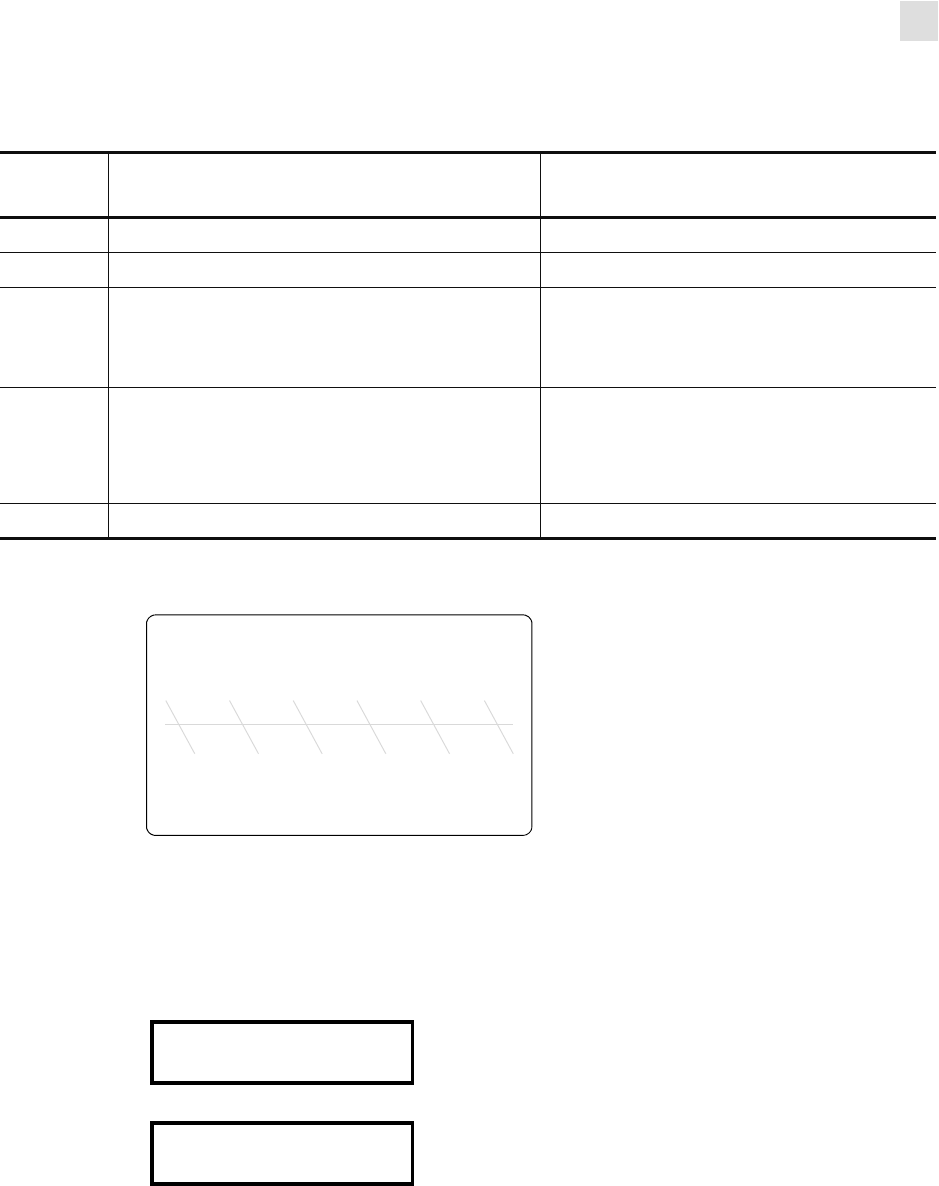
RFID Guidelines
Creating Basic RFID Label Formats
58981L-002 Rev. 1 2/11/05 R110PAX4 User Guide 87
RFID Label Format 1—Write a 96-bit Tag in Hexadecimal
Resulting Label
Programmed to Transponder
112233445566778899001122
Front Panel Display (toggles between these two)
Line
Number Type This ZPL Code Function of ZPL Code
1^XA Indicates start of label format.
2^RS4 Sets tag type to EPC Class 1 96-bit.
3^FO50,50
^A0N,65
^FDSimple write example
^FS
Prints “Simple write example” on the label
at location 50,50.
4^RFW,H
^FD112233445566778899001122
^FS
W,H = write hex
Writes the 12 bytes of data (96 bits) to the
tag. The data written is:
112233445566778899001122
5^XZ Indicates end of label format.
Simple write example
RFID TAG DATA
1122334455667788
RFID TAG DATA
99001122
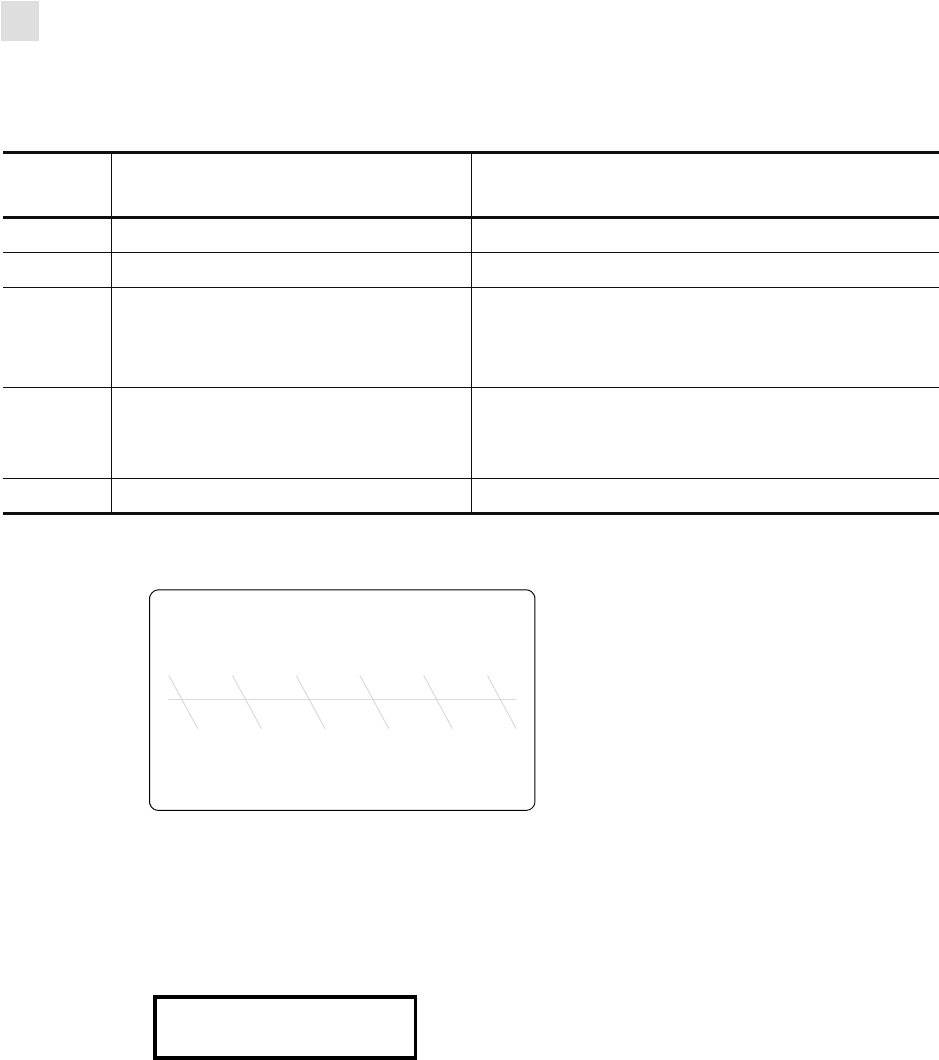
88 R110PAX4 User Guide 58981L-002 Rev. 1 2/11/05
RFID Guidelines
Creating Basic RFID Label Formats
RFID Label Format 2—Write a 64-bit Tag in Hexadecimal
Resulting Label
Programmed to Transponder
1122334455667788
Front Panel Display
Line
Number Type This ZPL Code Function of ZPL Code
1^XA Indicates start of label format.
2^RS3 Sets tag type to EPC Class 1 64-bit.
3^FO50,50
^A0N,65
^FDSimple write example
^FS
Prints “Simple write example” on the label at
location 50,50.
4^RFW,H
^FD1122334455667788
^FS
W,H = write hex
Writes the 8 bytes of data (64 bits) to the tag. The
data written is: 1122334455667788
5^XZ Indicates end of label format.
Simple write example
RFID TAG DATA
1122334455667788
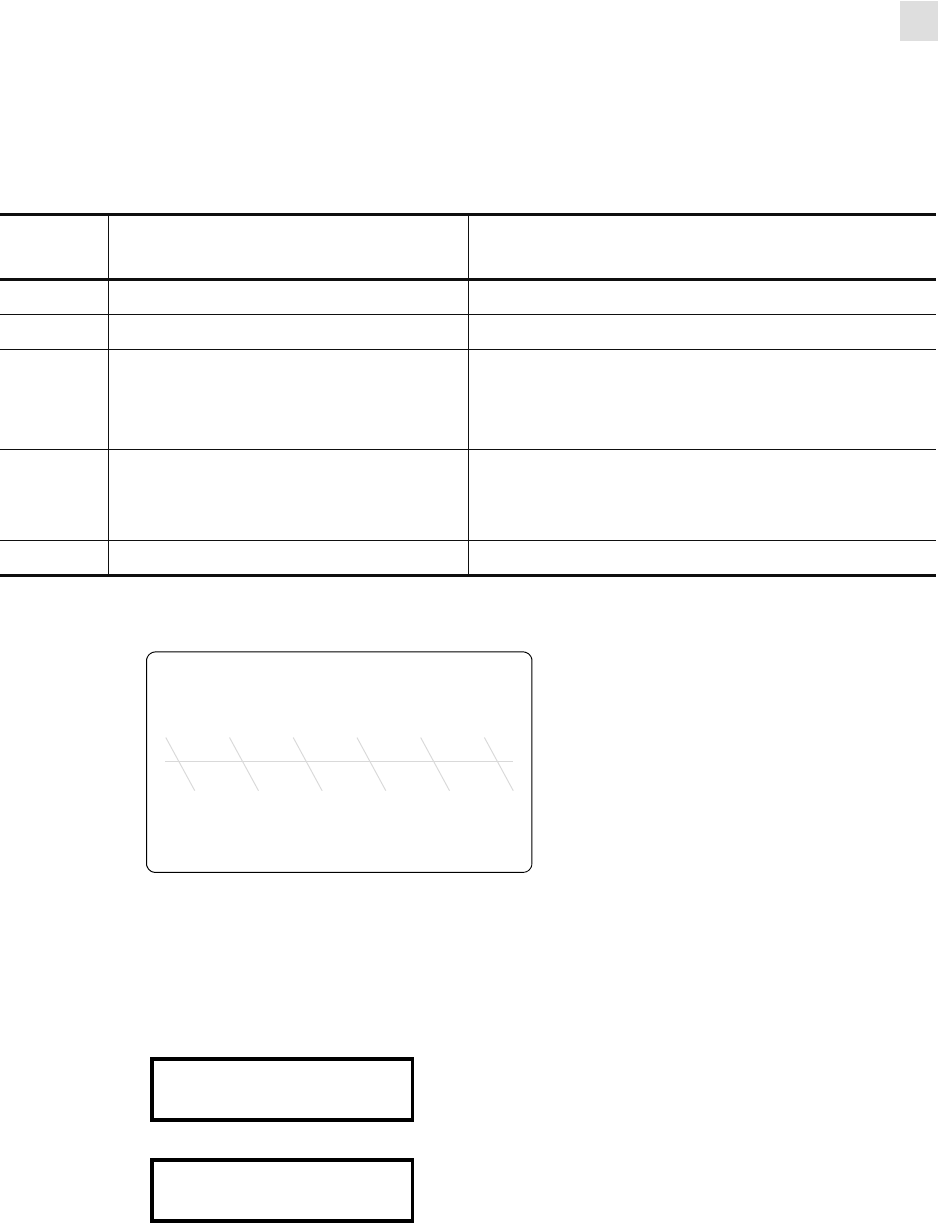
RFID Guidelines
Creating Basic RFID Label Formats
58981L-002 Rev. 1 2/11/05 R110PAX4 User Guide 89
RFID Label Format 3—Write a 96-bit Tag in ASCII
This label format is different in what shows on the front panel. The front panel always displays
RFID data in hexadecimal.
Resulting Label
Programmed to Transponder
00 rfid data
Front Panel Display (toggles between these two)
Line
Number Type This ZPL Code Function of ZPL Code
1^XA Indicates start of label format.
2^RS4 Sets tag type to EPC Class 1 96-bit.
3^FO50,50
^A0N,65
^FDSimple write example
^FS
Prints “Simple write example” on the label at
location 50,50.
4^RFW,A
^FD00 rfid data
^FS
W,A = write ASCII
Writes the 12 bytes of data (96 bits) to the tag. The
data written is: 00 rfid data
5^XZ Indicates end of label format.
Simple write example
RFID TAG DATA
3030207266696420
RFID TAG DATA
64617461
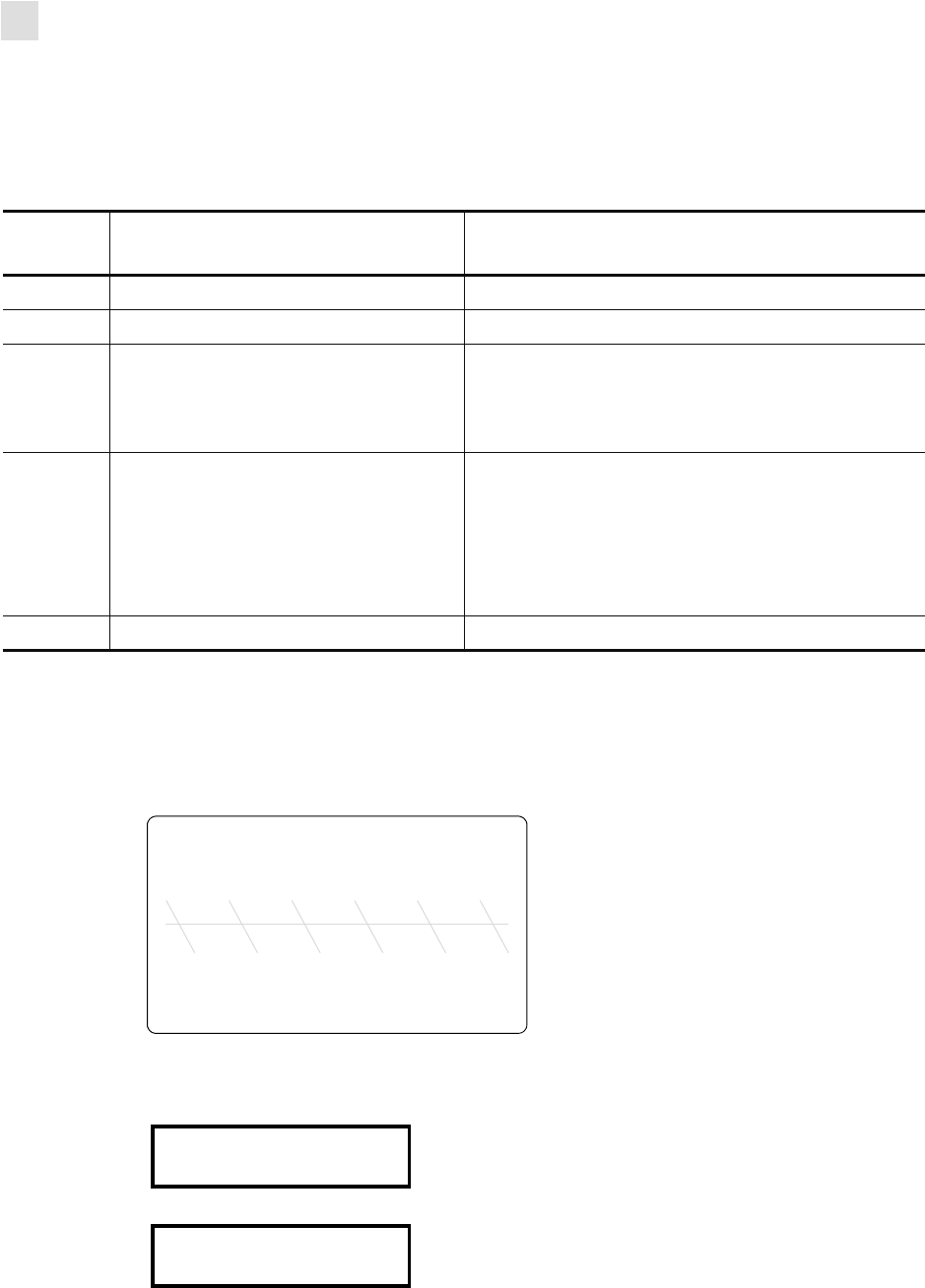
90 R110PAX4 User Guide 58981L-002 Rev. 1 2/11/05
RFID Guidelines
Creating Basic RFID Label Formats
RFID Label Format 4—Read Data from Tag and Print on Label
This example assumes that the tag created using RFID Label Format 1—Write a 96-bit Tag in
Hexadecimal on page 87 is being read.
Read from Transponder
112233445566778899001122
Resulting Label
Front Panel Display (toggles between these two)
Line
Number Type This ZPL Code Function of ZPL Code
1^XA Indicates start of label format.
2^RS4 Sets tag type to EPC Class 1 96-bit.
3^FO50,50
^A0N,40
^FN0
^FS
^FN0 is a placeholder field variable for the tag data
that will be read in the following line. When the label
prints, the data read from the tag will be printed at
50,50.
4^FN0
^RFR,H
^FS
R,H = read hexadecimal
The read results are put into field variable 0 (^FN0).
At this point, the printer substitutes previous
instances of ^FN0 in the label format with the data
from this field. The data read from the tag will be
padded with zeroes to the maximum bit size.
5^XZ Indicates end of label format.
112233445566778899001122
RFID TAG DATA
1122334455667788
RFID TAG DATA
99001122
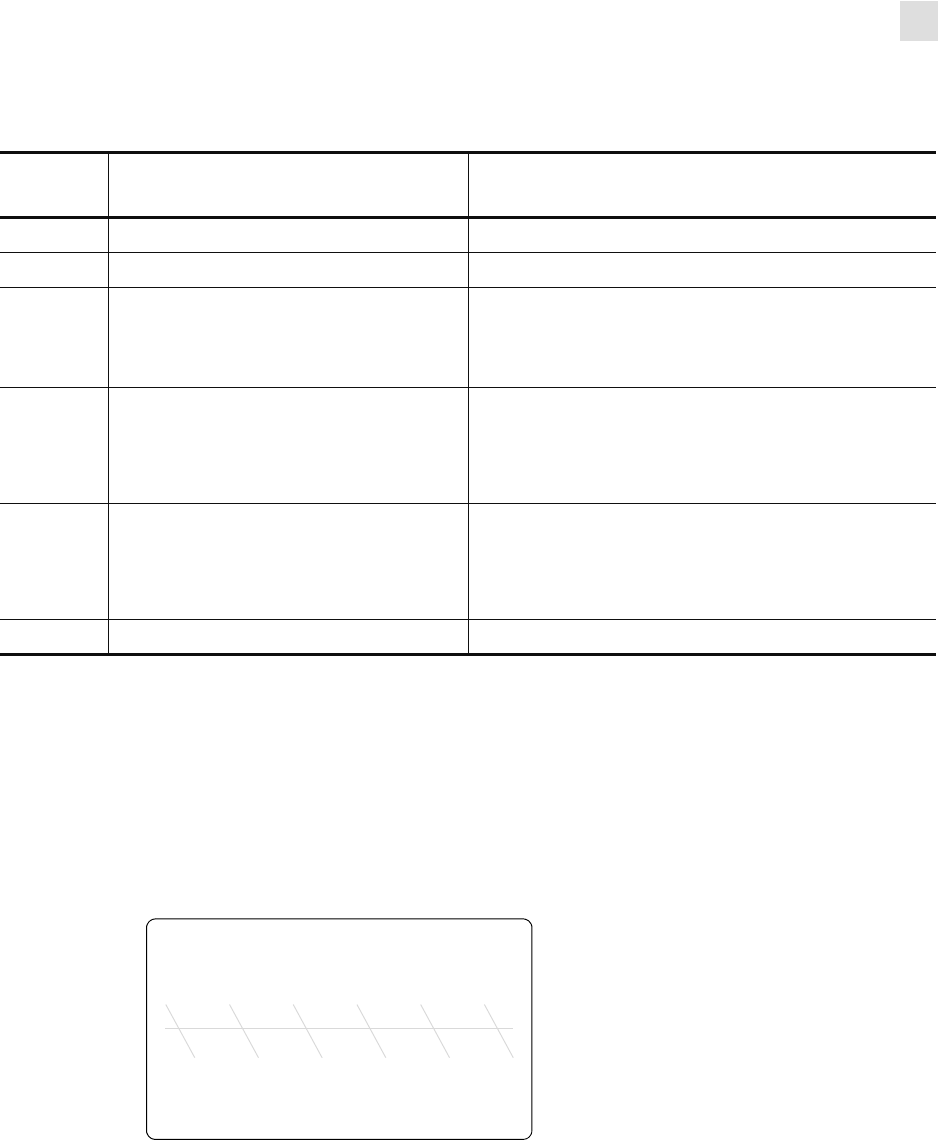
RFID Guidelines
Creating Basic RFID Label Formats
58981L-002 Rev. 1 2/11/05 R110PAX4 User Guide 91
RFID Label Format 5—Write Tag, Read Tag, and Print Data on Label
Programmed to Transponder
306461746100000000000000
Read from Transponder
306461746100000000000000
Resulting Label
Line
Number Type This ZPL Code Function of ZPL Code
1^XA Indicates start of label format.
2^RS4 Sets tag type to EPC Class 1 96-bit.
3^FO60,60
^A0N,40
^FN7
^FS
When the label prints, the data read from the tag at
field variable 7 (^FN7) will be printed at location
60,60.
4^RFW,A
^FD0data
^FS
W,A = write ASCII
Writes “0data” into the block padded with 8 bytes of
zeroes to make the data 12 bytes. The data written is:
306461746100000000000000 (“0data” in ASCII)
5^FN7
^RFR,A
^FS
R,A = read ASCII
Reads the tag data into field variable 7 (^FN7).
After this occurs, any fields in this label format that
have ^FN7 will be replaced with this read data.
6^XZ Indicates end of label format.
0data
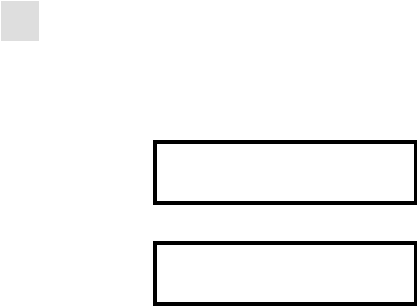
92 R110PAX4 User Guide 58981L-002 Rev. 1 2/11/05
RFID Guidelines
Creating Basic RFID Label Formats
Front Panel Display (toggles between these two)
RFID TAG DATA
3064617461000000
RFID TAG DATA
00000000
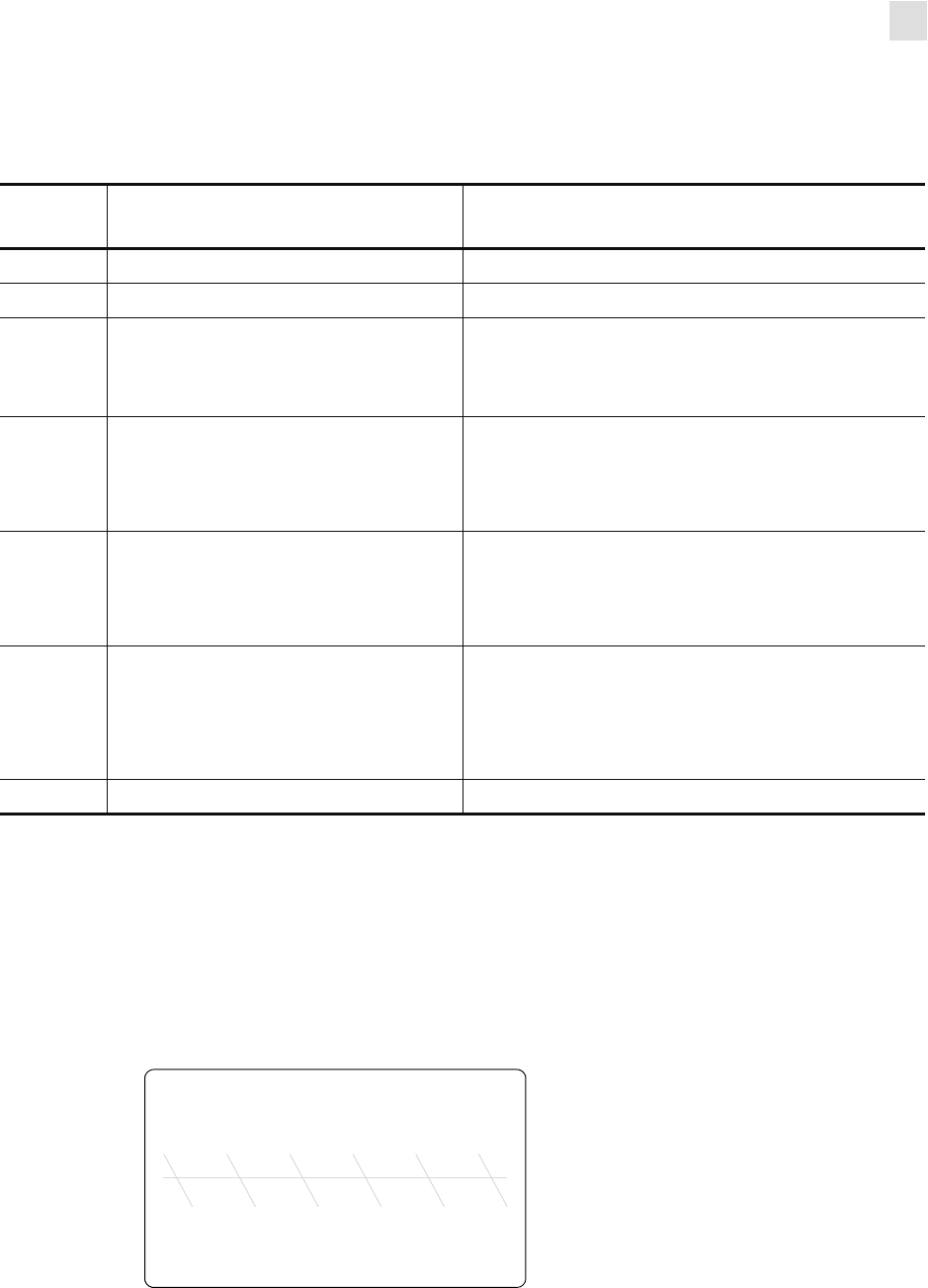
RFID Guidelines
Creating Basic RFID Label Formats
58981L-002 Rev. 1 2/11/05 R110PAX4 User Guide 93
RFID Label Format 6—Write Tag, Read Tag, and Return Results
to Host
Programmed to Transponder
0102030405000000
Read from Transponder
0102030405000000
Resulting Label
Line
Number Type This ZPL Code Function of ZPL Code
1^XA Indicates start of label format.
2^RS3 Sets tag type to EPC Class 1 64-bit.
3^FO50,50
^A0N,65
^FN3
^FS
When the label prints, the data read from the tag at
field variable 3 (^FN3) will be printed at location
50,50.
4^RFW,H
^FD0102030405
^FS
W,H = write hex
Writes 8 bytes of data (64 bits) to the tag with 3 bytes
of zeroes as padding. The data written is:
0102030405000000
5^FN3
^RFR,H
^FS
R,H = read hexadecimal
Reads the tag data into field variable 3 (^FN3).
After this occurs, any fields in this label format that
have ^FN3 will be replaced with this read data.
6^HV3 Return the value in ^FN3 to the host computer. Data
is sent over whichever communication channel is
established with the host (such as parallel, serial,
USB, ethernet) In this example, 0102030405000000
would be returned to the host.
7^XZ Indicates end of label format.
0102030405000000
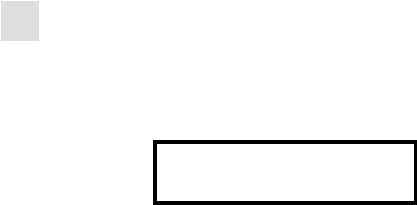
94 R110PAX4 User Guide 58981L-002 Rev. 1 2/11/05
RFID Guidelines
Creating Basic RFID Label Formats
Front Panel Display
Sent to Host Computer
0102030405000000
RFID TAG DATA
0102030405000000
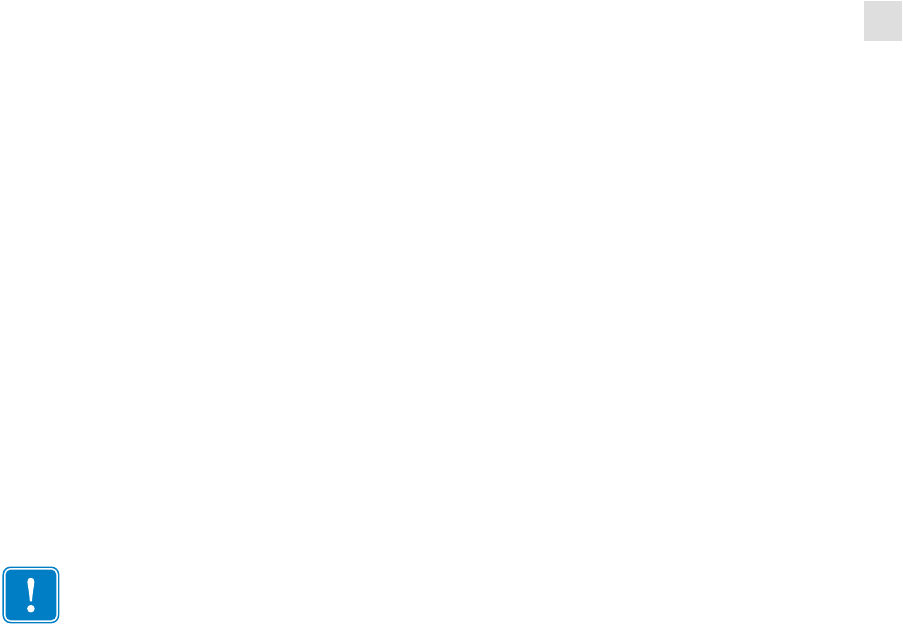
RFID Guidelines
ZPL II Commands for RFID
58981L-002 Rev. 1 2/11/05 R110PAX4 User Guide 95
ZPL II Commands for RFID
This section contains the ZPL commands for RFID-specific applications. For non-RFID ZPL
commands, refer to the ZPL II Programming Guide (part number 46530L). A copy is available
on the R110PAX4 User CD (part number 23062-003) and online at
http://www.zebra.com/manuals.
In addition to reading or encoding RFID tags, these ZPL commands also provide for RFID
exception handling, such as setting the number of read/write retries before declaring a
transponder defective (set with ^RT and ^WT) or setting the number of labels that will be
attempted if an error occurs (set with ^RS).
For example, if an RFID label fails to program correctly or if the transponder cannot be
detected, the printer ejects the label and prints VOID across it. The printer will try to print
another label with the same data and format for the number of RFID labels specified by the
^RS command. If the problem persists, the printer follows the error handling instructions
specified by the ^RS command: the printer may remove the problematic format from the print
queue and proceed with the next format (if one exists in the buffer), or it may place the printer
in Pause or Error mode.
Important • If a parameter in the following tables is designated as not applicable, any value
entered for the parameter will be ignored, but the place holder for the field is required.
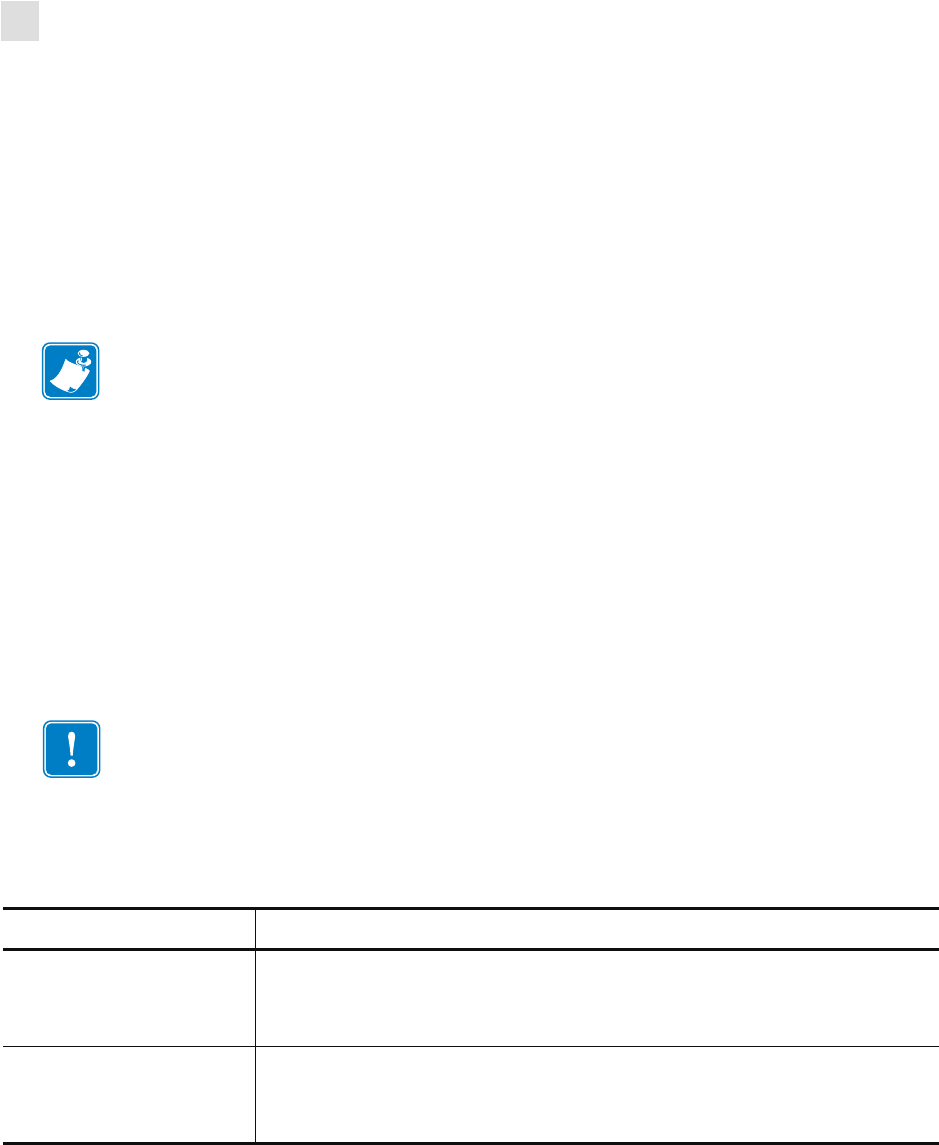
96 R110PAX4 User Guide 58981L-002 Rev. 1 2/11/05
RFID Guidelines
^HR
^HR
Calibrate RFID Transponder Position
Description This command initiates an RFID transponder calibration for a specific RFID
label and returns the results to the host computer. This calibration is used to determine the
optimal programming position for RFID media that may not meet the transponder placement
specifications for the printer.
During transponder calibration, the printer feeds the RFID label one-dot row at a time while
taking readings (via the READ TAG command and the WRITE TAG commands) to profile the
RFID transponder. Based on the results, the printer determines the optimal programming
position for the label and returns a results table to the host. The calibrated value is used as the
programming position for the ^RS command, can be overwritten by the ^RS command, and is
saved to nonvolatile memory (the value is saved even if the power is turned off).
This calibration takes into account the print mode, backfeed mode, and tear off position. The
RUN option in the RFID TAG CALIB front panel parameter performs the same calibration
but does not create a results table.
Format ^HRa,b
The following table identifies the parameters for this format.
Comments
• Based on the recommended transponder placement position for most RFID labels, the
printer’s default RFID programming position is the label length minus 1 mm (1/16 in.).
To return to the default programming position at any time, use the RESTORE option in the
RFID TAG CALIB front panel parameter (see Calibrate RFID Tag on page 77).
Note • You do not need to perform transponder calibration for RFID media that meets the
transponder placement specifications for the printer. To order media that is designed for use
with your RFID printer, contact your authorized Zebra reseller.
If a label format specifies a value for parameter p (read/write position of the transponder) in
the ^RS command, that value will be used for the programming position for all RFID labels
until a new position is specified or until the printer is turned Off (O) and then back On (I).
Parameters Details
a= start string User text to appear before the results table.
Accepted values: any string less than 65 characters
Default value: start
b= end string User text to appear after the results table.
Accepted values: any string less than 65 characters
Default value: end
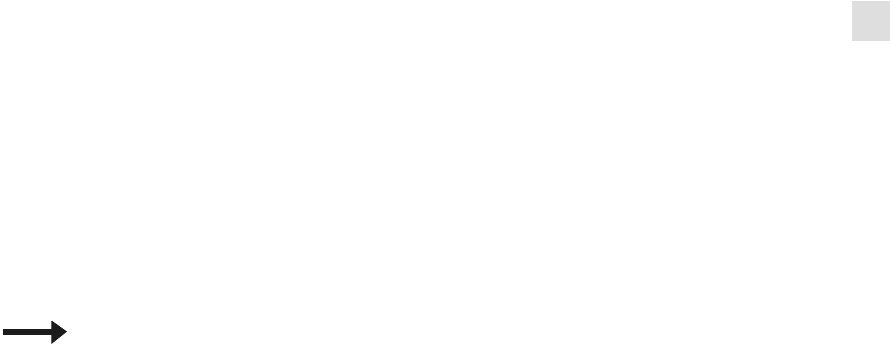
RFID Guidelines
^HR
58981L-002 Rev. 1 2/11/05 R110PAX4 User Guide 97
• At the end of calibration, a results table is returned to the host. Each line in the results
table appears as:
Row, Read Result, Write Result
where
Row = the dot row where calibration occurred
Read Result = results of calibration (R = read, “ ” = unable to read)
Write Result = results of calibration (W = write, “ ” = unable to write)
Example • If the following command is sent to the printer:
^XA^HR^XZ
The printer starts the transponder calibration and returns a results table such as the following:
start
position=195
215, ,
214, ,
213, ,
212, ,
211, ,
210, ,W
209,R,
208, ,
207, ,
206, ,W
205,R,
204, ,
203, ,
202, ,W
201,R,W
200,R,W
199,R,W
198,R,W
197,R,W
196,R,W
195,R,W <---****
194,R,W
193,R,W
192,R,W
191,R,W
190,R,W
189,R,
188, ,
187, ,
186, ,
185, ,
.
.
.
end
In this example, the optimal programming position is 195. This is identified at the top of the
table (position=195) and with an the arrow (<---****) in the table.
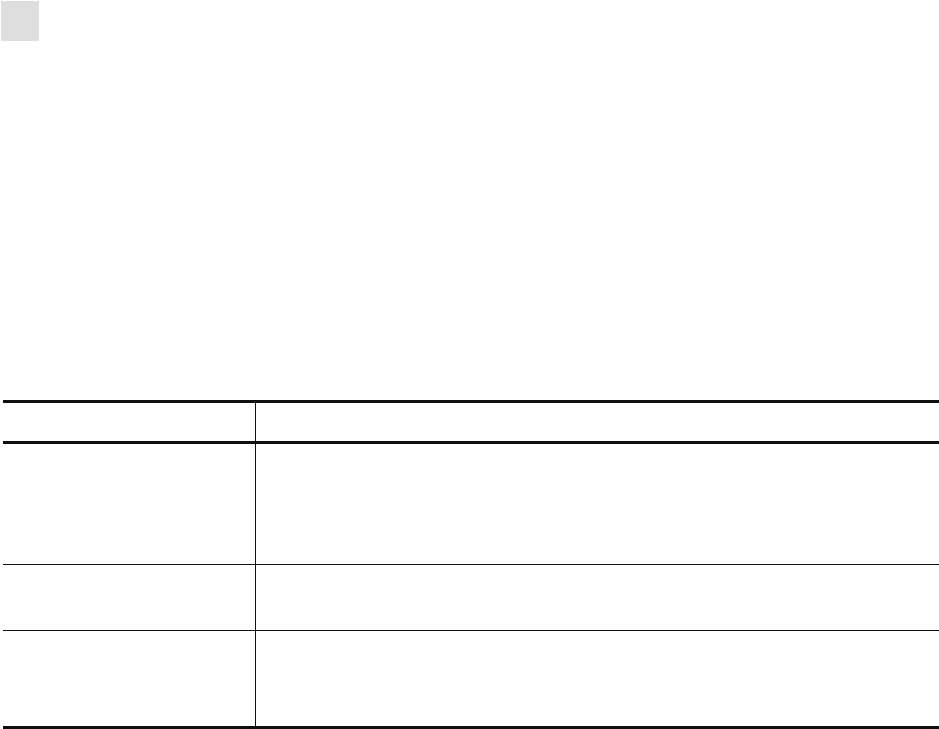
98 R110PAX4 User Guide 58981L-002 Rev. 1 2/11/05
RFID Guidelines
^HV
^HV
Host Verification
Description This command is used to return data from specified fields, along with an
optional ASCII header, to the host computer. The command can be used with any field that has
been assigned a number with the ^RT command or the ^FN and ^RF commands.
Format ^HV#,n,h
The following table identifies the parameters for this format.
Parameters Details
#= field number
specified with another
command
The value assigned to this parameter should be the same as the one used in
another command.
Accepted values: 0 to 9999
Default value: 0
n= number of bytes to be
returned Accepted values: 1 to 256
Default value: 64
h= header Header (in uppercase ASCII characters) to be returned with the data.
Acceptable values: 0 to 3072 characters
Default value: no header
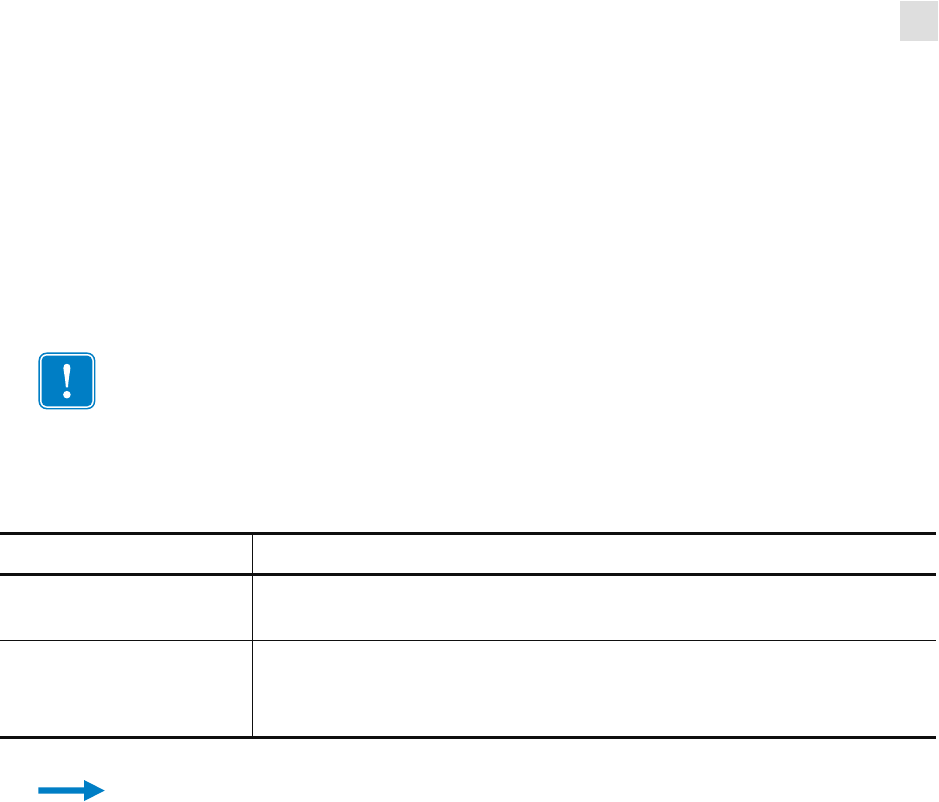
RFID Guidelines
^RB
58981L-002 Rev. 1 2/11/05 R110PAX4 User Guide 99
^RB
Define EPC Data Structure
Description This command defines the structure of EPC data, which can be read from or
written to an RFID transponder.
RFID transponders can have different partitions defined. This command specifies the number
of partitions and how many bits are in each partition.
Format ^RBn,p0,p1,p2, ..., p15
The following table identifies the parameters for this format.
Important • All parameters in this command are persistent and will be used in subsequent
formats if not provided. The values are initially set to the default values.
Parameters Details
n= total bit size of the
field Accepted values: 1 to n, where n is the bit size of the tag.
Default value: 96
p1 ... p15 =
partition sizes Specify each partition size. These must add up to the total bit size.
Accepted values: 1 to 64 bit total bit size
Default value: 1
Example 1 • The following command specifies that there are 96 bits used with three fields.
Fields 1, 2, and 3 contain 10, 26, and 60 bits, respectively.
^RB96,10,26,60
The ZPL code to write to a tag with this format would look like this:
^RFW,E^FD1000.67108000.1122921504606846976^FS
When writing to the tag, the data will be stored in the tag in the following way:
• Field 1 contains 1000. This value is stored in the first 10 bits
• Field 2 contains 67108000. This value is stored in the next 26 bits.
• Field 3 contains 1122921504606846976. This value is stored in the remaining 60 bits.

100 R110PAX4 User Guide 58981L-002 Rev. 1 2/11/05
RFID Guidelines
^RB
Example 2 • The following command specifies that there are 64 bits used with eight 8-bit
fields.
^RB64,8,8,8,8,8,8,8,8^FS
The ZPL code to write to a tag with this format would look like this:
^RFW,E^FD1.123.160.200.249.6.1.0^FS
When writing to the tag, each set of data is written in its respective 8-bit field.
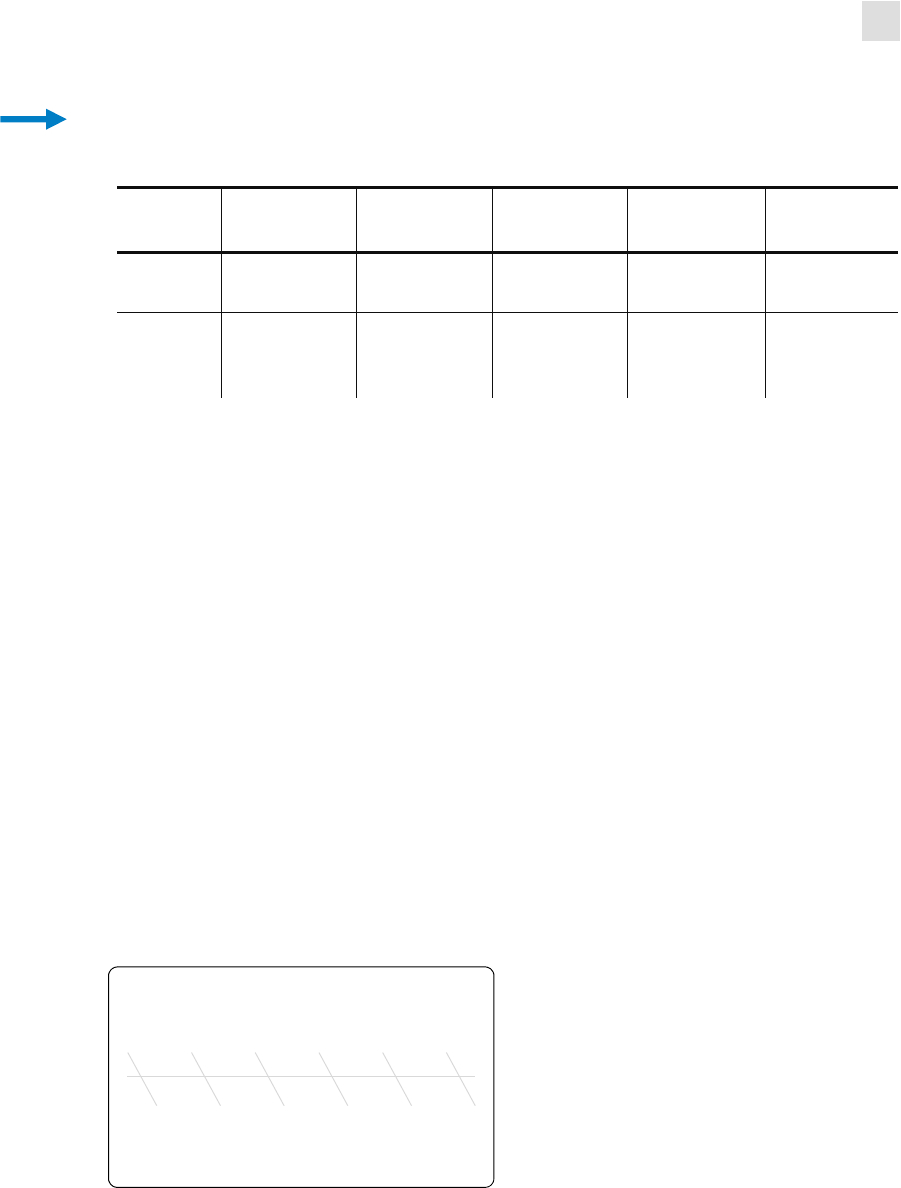
RFID Guidelines
^RB
58981L-002 Rev. 1 2/11/05 R110PAX4 User Guide 101
Example 3 • This example uses the SCTIN-64 standard, which defines 64-bit structure in
the following way:
The ZPL code to write to a tag with this format would look like this:
^XA
^RB64,2,3,14,20,25
^RFW,E^FD0,3,12345,544332,22335221^FS
^XZ
These commands would put
• 0 in the header
• 3 as the filter value
• 12345 as the company prefix
• 544332 as the item reference
• 22335221 as the serial number
To read this EPC data and print the results on the label, you would use the following code:
^XA
^RB64,2,3,14,20,25
^FO50,50^A0N,40^FN0^FS
^FN0^RFR,E^FS
^XZ
The resulting label would look like this:
Header Filter Value Company
Prefix Index Item
Reference Serial
Number
SGTIN-
64 2 3 14 20 25
10
(binary
value)
8
(decimal
capacity)
16,383
(decimal
capacity)
9 to
1,048,575
(decimal
it *)
33,554,431
(decimal
capacity)
0.3.12345.544332.22335221
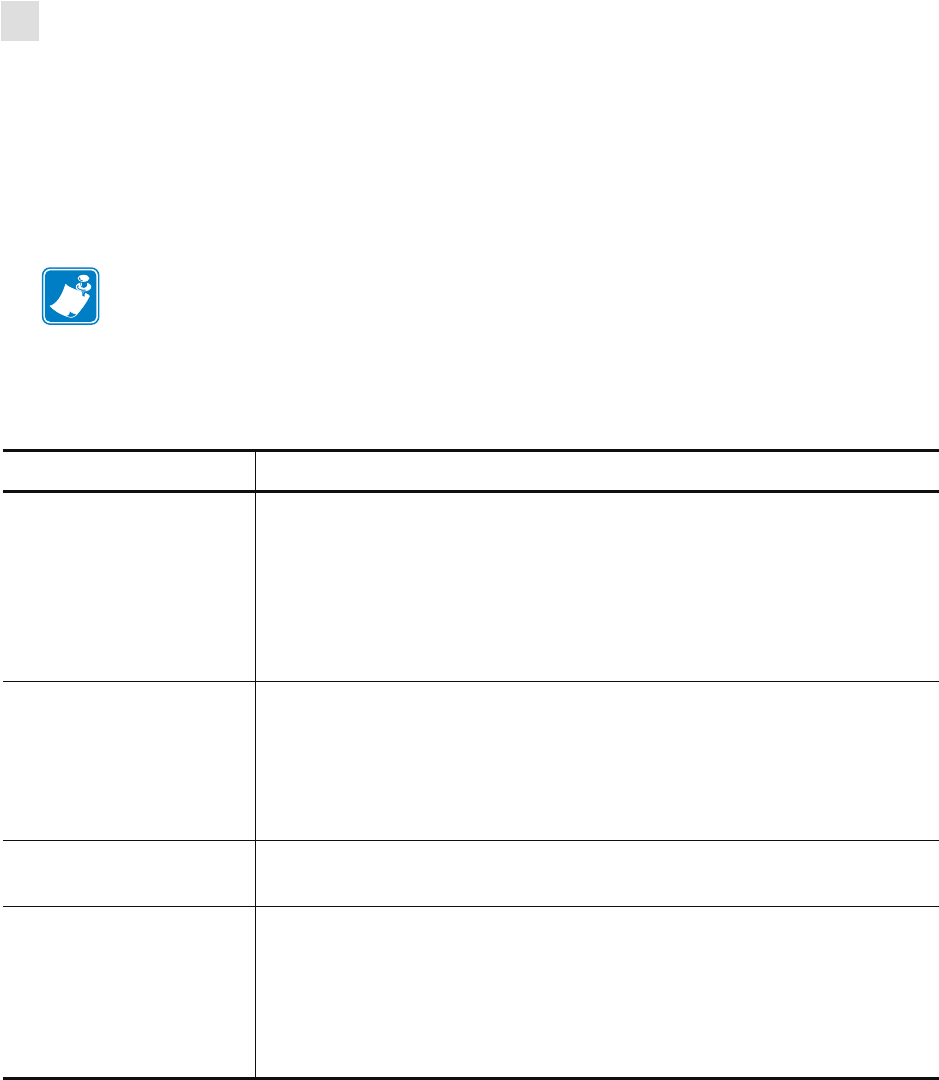
102 R110PAX4 User Guide 58981L-002 Rev. 1 2/11/05
RFID Guidelines
^RF
^RF
Read or Write RFID Format
Description This command allows you to read or write to an RFID tag.
Format ^RFo,t,b,n
The following table identifies the parameters for this format.
Note • To read into a field variable, you must have a ^FN command in the
Parameters Details
o= operation The action to be performed.
Accepted values:
• W = write to the tag
• L = write with LOCK (if supported by tag type)
• R = read the tag
Default value: W
t=type Accepted values:
•A = ASCII
•H = Hexadecimal
• E = EPC (ensure proper setup with the ^RB command)
Default value: H
b= starting block number Accepted values: 0 to n, where n is the maximum number of blocks for the tag.
Default value: 0
n= number of blocks
to read* This parameter is valid only for the read operation.
Accepted values: 1 to n, where n is the maximum number of blocks for the tag
type minus the starting block number. For example, if the tag has 8 blocks
(starting with block 0) and you start with block 6, n can be 2. This would return
block 6 and block 7 information.
Default value: 1
*Not applicable for R110PAX4

RFID Guidelines
^RF
58981L-002 Rev. 1 2/11/05 R110PAX4 User Guide 103
Examples •
Write ASCII
This example writes 96-bit data.
^XA
^RS4
^RFw,a^FD00 my data^FS
^XZ
Write Hex
This example writes 64-bit data.
^XA
^RS3
^RFW,H^FD1122334455667788^FS
^XZ
Write EPC
This example writes 96-bit data, as specified by the ^RB command.
^XA
^RB96,8,3,3,20,24,38
^RFw,e^FD16,3,5,78742,146165,1234567891^FS
^XZ
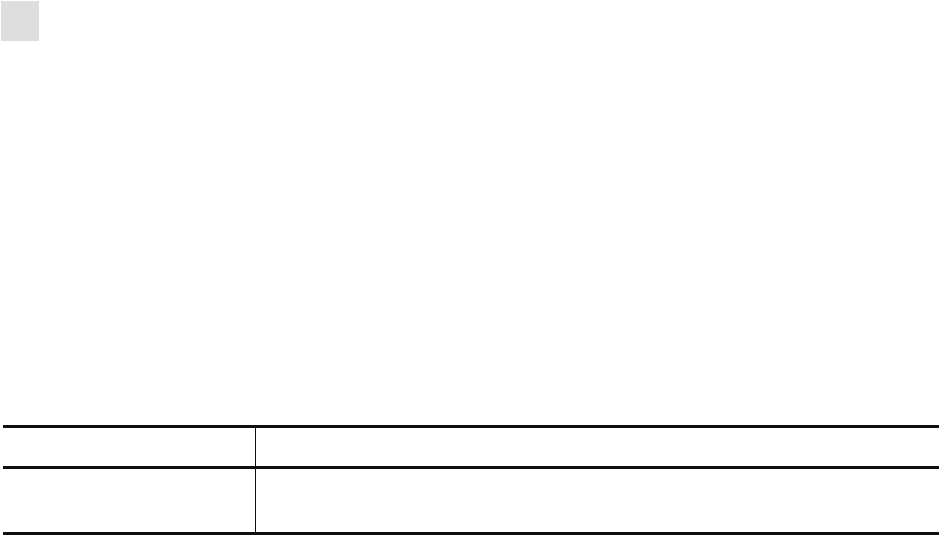
104 R110PAX4 User Guide 58981L-002 Rev. 1 2/11/05
RFID Guidelines
^RM
^RM
Enable RFID Motion
Description This command enables or disables RFID motion. By default, labels
automatically print at the end of the format. This command allows you to inhibit the label from
actually moving when it reaches the program position, which is useful for debugging, setup,
and custom applications. This parameter is not persistent (carried over from label to label).
Format ^RMe
The following table identifies the parameters for this format.
Parameters Details
e= enable Accepted values: Y (Yes, move the label), N (No, do not move the label)
Default value: Y
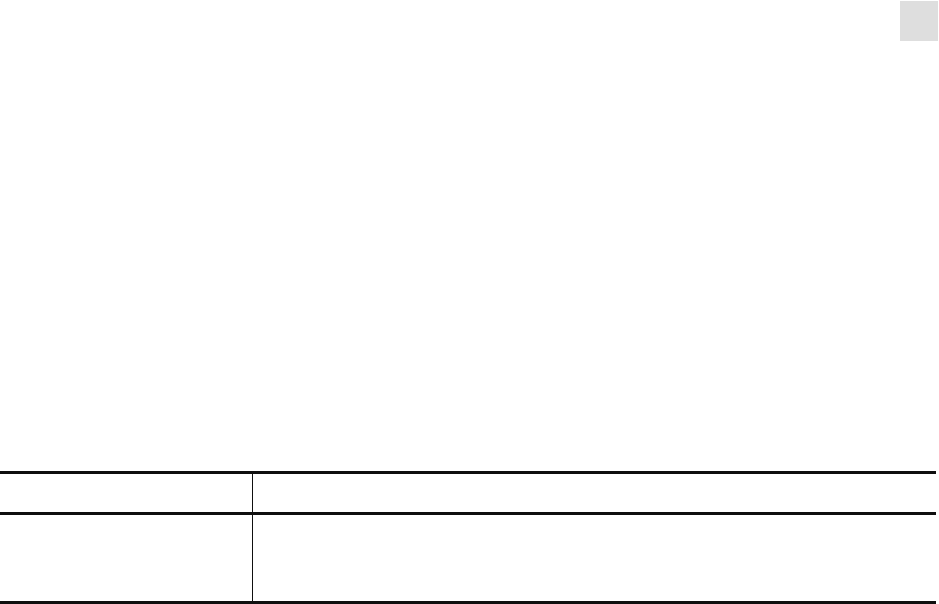
RFID Guidelines
^RN
58981L-002 Rev. 1 2/11/05 R110PAX4 User Guide 105
^RN
Detect Multiple RFID Tags in Encoding Field
Description This command enables or disables detection of multiple RFID tags in the
encoding field. By default, the printer checks for more than one tag in the field before
attempting to read or write. If more than one tag is found, the label over the antenna support is
voided, and the RFID ERR STATUS parameter on the front panel displays
MULTIPLE TAGS. To speed up printing and encoding by up to 200 ms, the check may be
disabled. This parameter is not persistent (carried over from label to label).
Format ^RNe
The following table identifies the parameters for this format.
Parameters Details
e= enable Accepted Values: Y (Yes, check for multiple tags), N (No, do not check for
multiple tags)
Default Value: Y
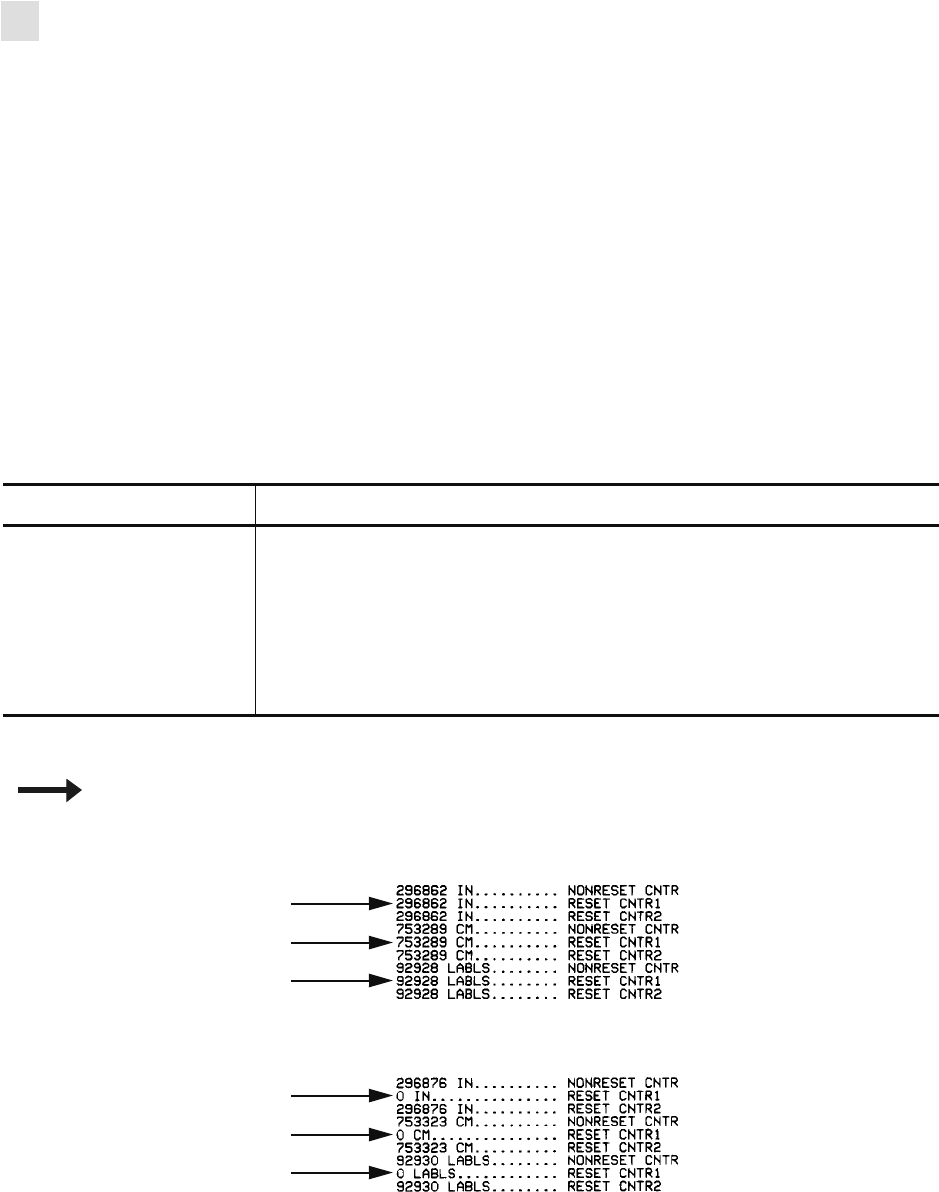
106 R110PAX4 User Guide 58981L-002 Rev. 1 2/11/05
RFID Guidelines
~RO
~RO
Reset Advanced Counters
Description The ~RO command resets the advanced counters used by the printer to monitor
label generation in inches and centimeters, the number of labels printed, and the number of
valid and voided RFID labels. Any single error during programming of an RFID tag will result
in that label being considered “void” by the counter.
Four resettable counters are available. The values for the counters are displayed on the printer
configuration label.
Format ~ROc
This table identifies the parameters for this format:
Parameters Details
c = counter number Accepted Values:
• 1 (counter 1)
• 2 (counter 2)
• 3 (valid RFID label counter)
• 4 (voided RFID label counter)
Default Value: None. If a value is not specified, the command is ignored.
Example 1 • This example shows how the counter portion of the printer configuration
labels looks when counter 1 is reset by sending ~RO1.
Before
After
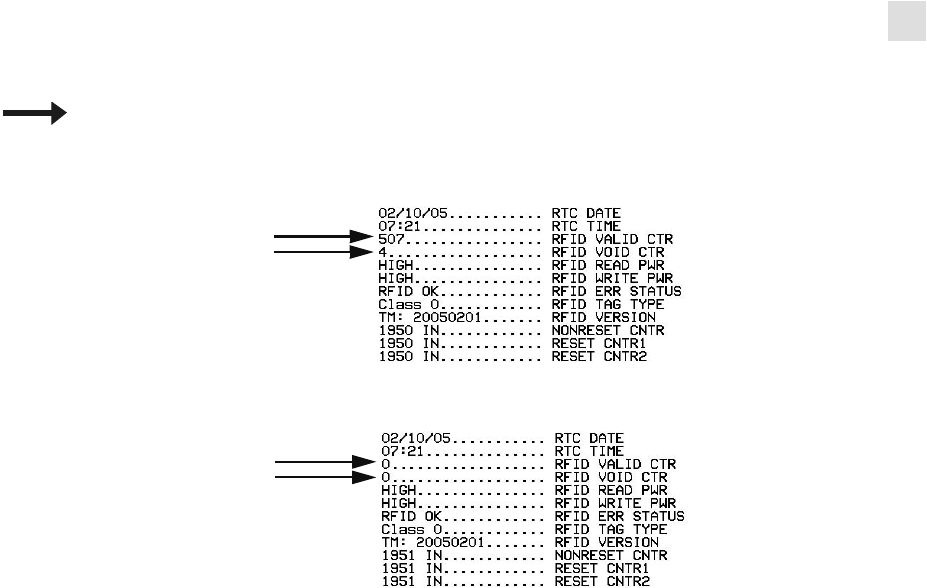
RFID Guidelines
~RO
58981L-002 Rev. 1 2/11/05 R110PAX4 User Guide 107
Example 2 • This example shows how the counter portion of the printer configuration
labels looks when the RFID counters are reset by sending ~RO3 and ~RO4.
Before
After
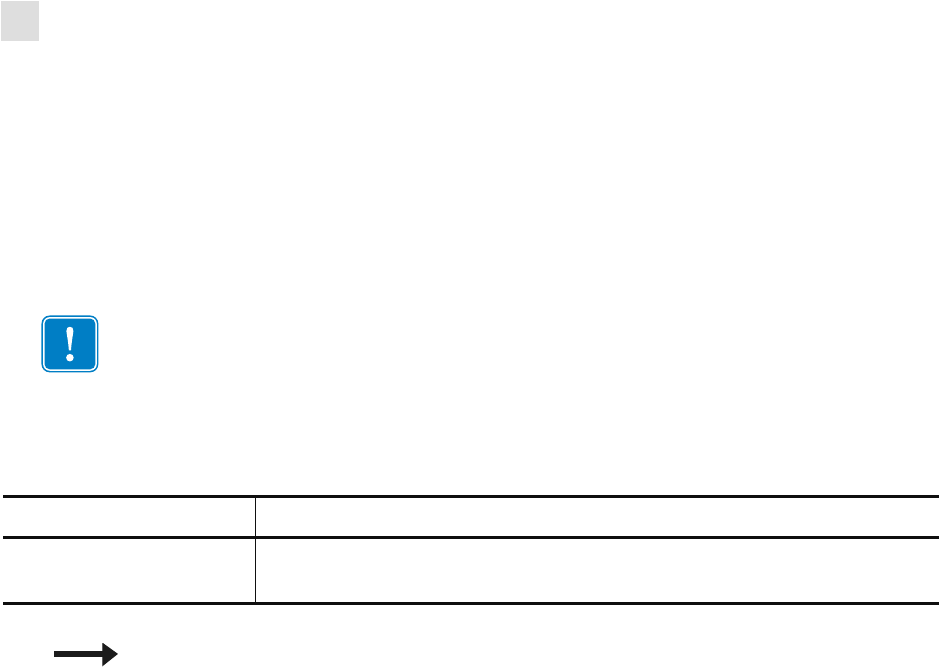
108 R110PAX4 User Guide 58981L-002 Rev. 1 2/11/05
RFID Guidelines
^RR
^RR
Specify RFID Retries for a Block
Description This command changes the number of times that the printer attempts to read or
write to a particular block of a single RFID tag. By default, the printer will attempt six retries.
This command is persistent and will be used in subsequent formats if not provided.
Format ^RRn
The following table identifies the parameters for this format.
Important • This command is not the same as the number of labels to try parameter in the
^RS command.
Parameters Details
n= number of retries Accepted values: 0 to 10
Default value: 0
Examples •
Set read block retries to 5
^XA
^FN1^RR5^RFR,H^FS
^HV1^FS
^XZ
Set write block retries to 2
^XA
^RR2^RFW,H^FD1234^FS
^XZ
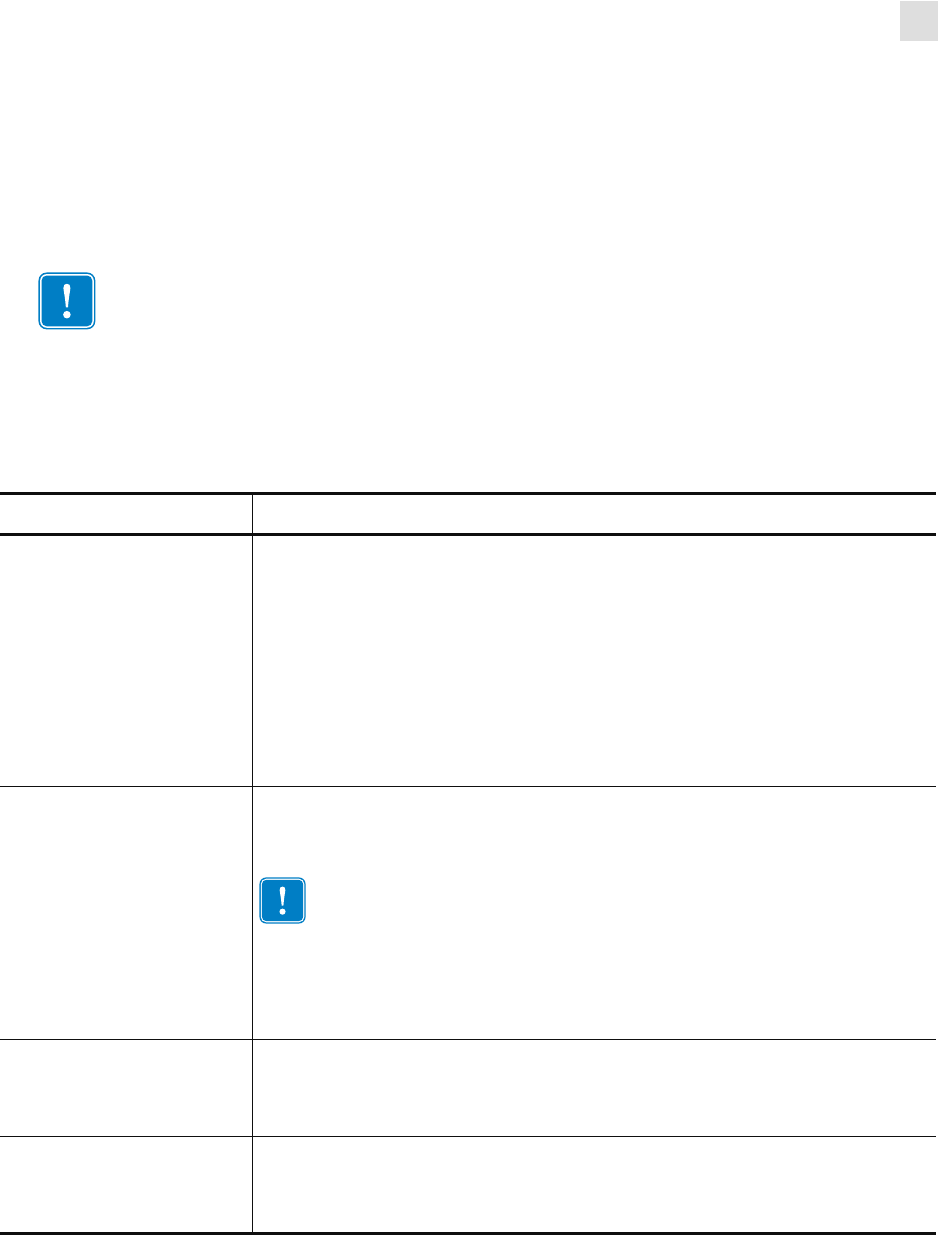
RFID Guidelines
^RS
58981L-002 Rev. 1 2/11/05 R110PAX4 User Guide 109
^RS
RFID Setup
Description This command sets up parameters including tag type, read/write position of the
transponder, and error handling.
Format ^RSt,p,v,n,e,a,c,s
The following table identifies the parameters for this format.
Important • Use care when using this command in combination with ^RT or ^RFR for
reading tag data. Problems can occur if the data read from the tag is going to be printed on the
label. Any data read from the transponder must be positioned to be printed above the
read/write position. Failure to do this will prevent read data from being printed on the label.
Parameters Details
t=tag type Accepted values:
•0 = None
• 1 = EPC Class 0
• 2 = EPC Class 0 Plus
• 3 = EPC Class 1 64-bit
• 4 = EPC Class 1 96-bit
• 5 = ISO 18000-06B
Default value: 4
p= read/write position of
the transponder Sets the read/write position of the transponder in the vertical (Y axis) in dot
rows from the top of the label. Set to 0 (no movement) if the transponder is
already in the effective area without moving the media.
Important • If a label format specifies a value for this parameter, this
value will be used for the programming position for all labels until a
new position is specified or until the printer is powered Off (O) and
then back On (I).
Accepted values: 0 to label length
Default value: label length minus 1 mm (1/16 in.)
v= length of void
printout Sets the length of the void printout in vertical (Yaxis) dot rows.
Accepted values: 0 to label length
Default value: label length
n= number of labels The number of labels that will be attempted in case of read/encode failure.
Accepted values: 1 to 10
Default value: 3
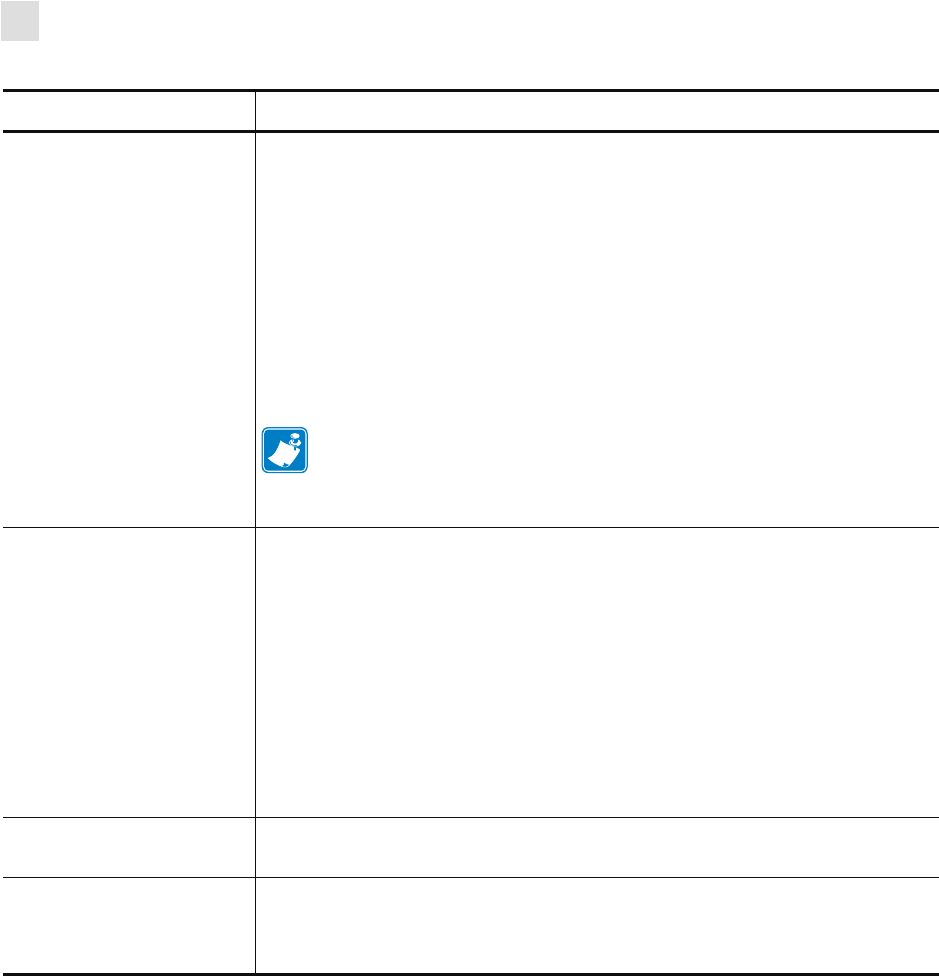
110 R110PAX4 User Guide 58981L-002 Rev. 1 2/11/05
RFID Guidelines
^RS
e= error handling If an error persists after the specified number of labels are tried, perform this
error handling action.
Accepted values:
•N = No action (print engine drops the label format causing the error and
moves to the next queued label)
•P = Place print engine in Pause mode (label format stays in the queue until
the user cancels)
•E = Place print engine in Error mode (label format stays in the queue until
the user cancels)
Default value: N
Note • You can set the print engine to send an error message to the host
as an unsolicited message for each failure. To enable or disable the
unsolicited error message, refer to the ^SX and ^SQ ZPL commands.
The parameter for the RFID error in these commands is V.
a= signals on applicator When the value for parameter p (read/write position of the transponder) is
nonzero, this parameter changes the number of start and stop print signals
required for printing.
In Single mode, one start print command is required. In Double mode, two are
required, so the printer will resume printing only after the second start print
command is received.
Accepted values:
•S (single) signal
•D (double) signal
Default value: S
c= certify tag with a
pre-read* * Not used in this version of the printer. The encoder does this automatically.
s= void print speed If a label is voided, the speed at which “VOID” will be printed across the label.
Accepted values: any valid print speed
Default value: the printer’s maximum print speed
Parameters Details
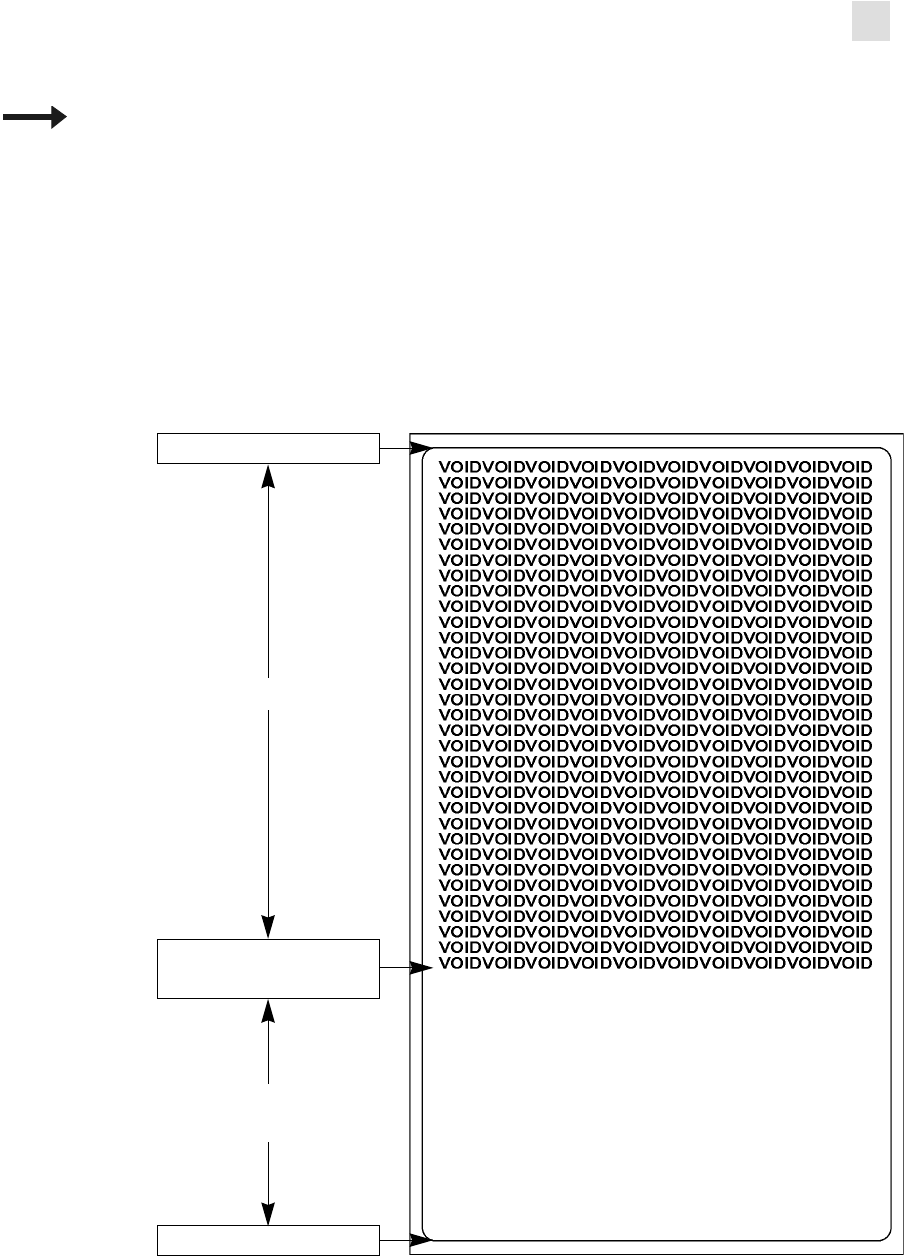
RFID Guidelines
^RS
58981L-002 Rev. 1 2/11/05 R110PAX4 User Guide 111
Example 1 • This example sets the printer to move the media to 800 dots from the top of the
media [or label length minus 800 from the bottom (leading edge) of the media] and voids the
rest of the media in case of an error. The printer will try to print two labels and then will
pause if printing and encoding fail.
^XA
^RS,800,,2,P^FS
^XZ
The following illustration shows the resulting voided label. Note where the void starts. The
media has been moved 800 dot rows from the top of the label (label length minus 800 dot
rows from the bottom (leading edge) of a label) to bring the transponder into the effective
area to read/write a tag. If the printer fails the operation, the rest of the media is voided.
Top of label
Start of RFID
operation
800 dot rows
Bottom of label
Label length minus
800 dot rows
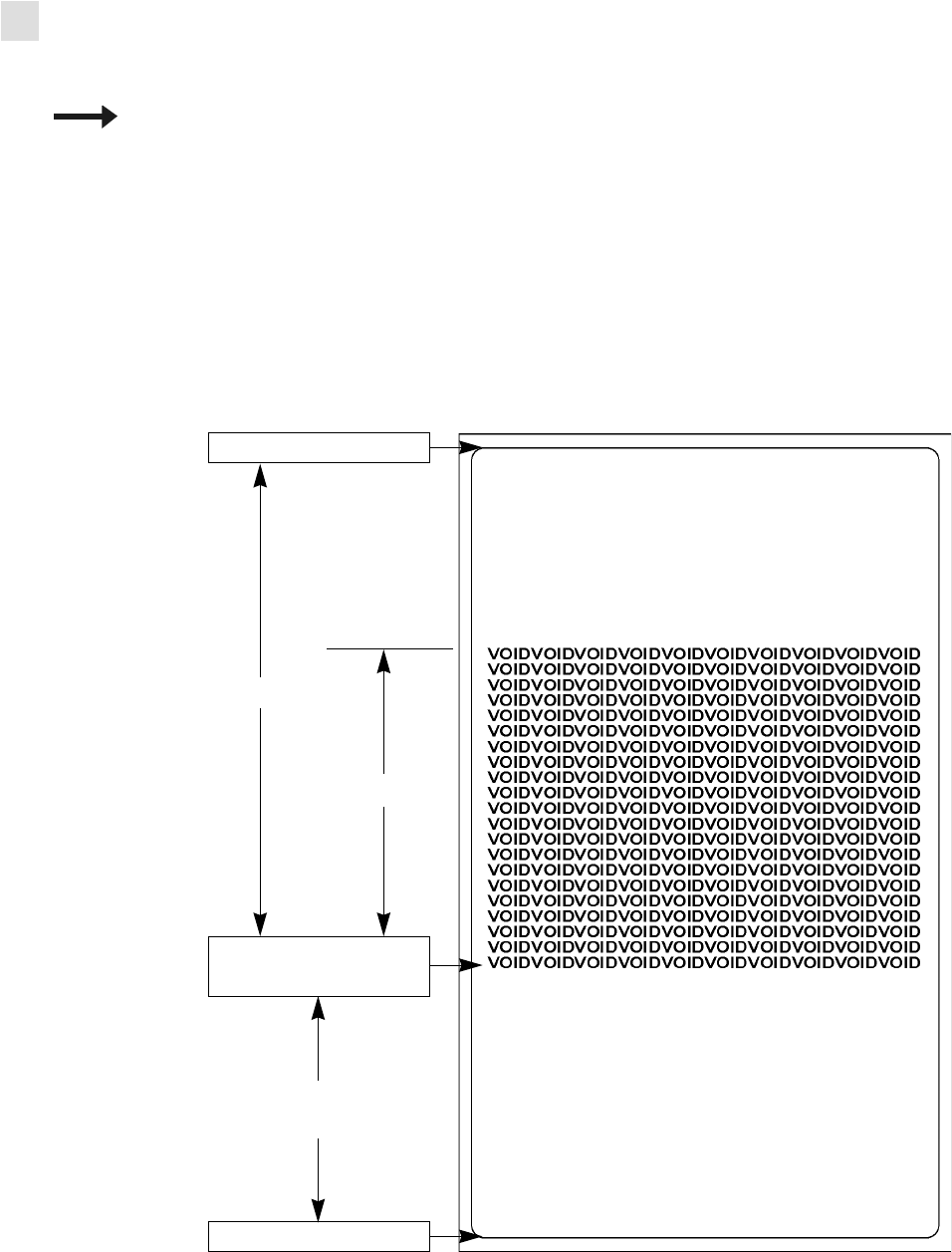
112 R110PAX4 User Guide 58981L-002 Rev. 1 2/11/05
RFID Guidelines
^RS
Example 2 • This example sets the printer to move the media to 800 dots from the top of the
media [or label length - 500 from the bottom (leading edge) of the media] and prints “VOID”
500 dots in vertical length (Y axis) in case of an error.
^XA
^RS,800,500,2,P^FS
^XZ
The following illustration shows the resulting voided label. Note where the void starts. The
media has been moved 800 dot rows from the top of the label [label length minus 800 dot
rows from the bottom (leading edge) of a label] to bring the transponder into the effective
area to read/write a tag. If the printer fails the operation, an area that is 500 dot rows of the
media is voided instead of the entire rest of the media.
Top of label
Start of RFID
operation
800 dot rows
Bottom of label
Label length minus
800 dot rows
500 dot rows
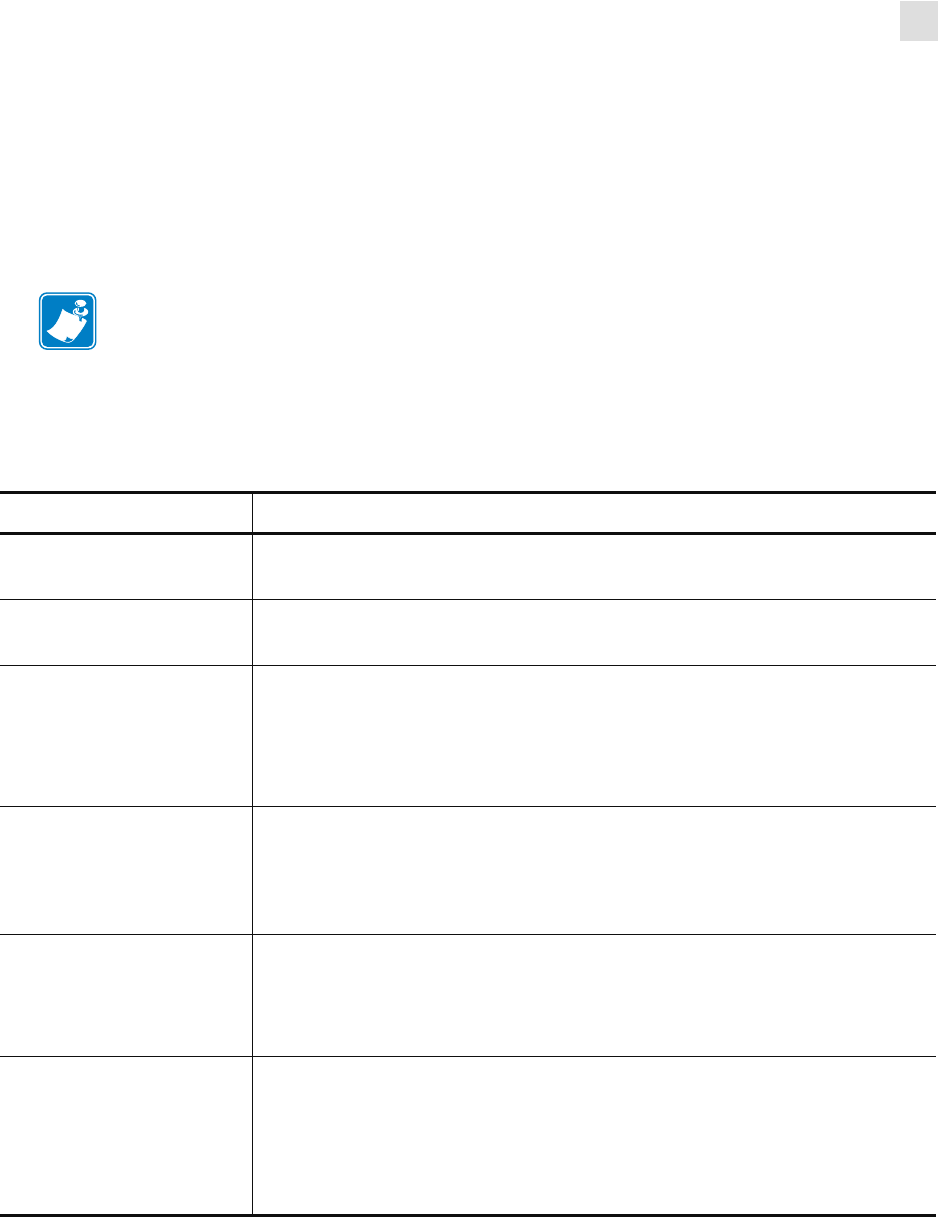
RFID Guidelines
^RT
58981L-002 Rev. 1 2/11/05 R110PAX4 User Guide 113
^RT
Read RFID Tag
Description This command tells the printer to read the current RFID tag data. The data can
be sent back to the host via the ^HV command.
Format ^RT#,b,n,f,r,m,s
The following table identifies the parameters for this format.
Note • It is recommended that you use the ^RF, ^RM, and ^RR commands rather than the
^RT command. The ^RT command is provided only for backward-compatibility with label
formats that were developed for other Zebra RFID printers.
Parameters Details
#= number to be assigned
to the field Accepted values: 0 to 9999
Default value: 0
b= starting block number Accepted values: 0 to n, where n is the maximum number of blocks for the tag.
Default value: 0
n= number of blocks
to read* Accepted values: 1 to n, where n is the maximum number of blocks for the tag
type minus the starting block number. For example, if the tag has 8 blocks
(starting with block 0) and you start with block 6, n can be 2. This would return
block 6 and block 7 information.
Default value: 1
f=format Accepted values:
• 0 (ASCII)
• 1 (Hexadecimal)
Default value: 0
r= number of retries Changes the number of times that the printer attempts to read a particular block
of a single RFID tag. (Same retry rules as the ^RR command.)
Accepted values: 0 to 10
Default value: 0
m= motion Enables or disables RFID motion for the current field.
Accepted values:
• 0 (Feed label after writing.)
• 1 (No feed after writing. Other ZPL may cause a feed.)
Default value: 0
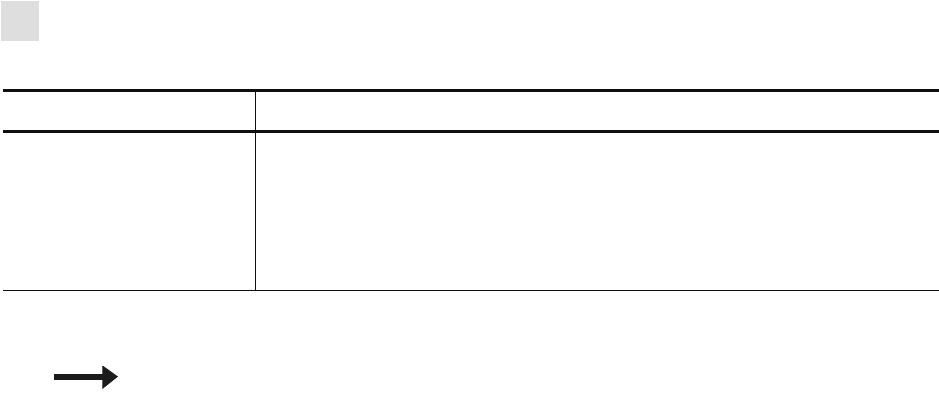
114 R110PAX4 User Guide 58981L-002 Rev. 1 2/11/05
RFID Guidelines
^RT
s= special mode* For EPC Class 1 (Alien reader) only. Not applicable for EPC class 0.
Default value: 0
Accepted values:
• 0 (Do not read if mismatched checksum.)
• 1 (Read even if mismatched checksum.)
*Not applicable for R110PAX4
Parameters Details
Example • This sample reads a tag, prints the data on a label, and sends the string
Tag Data:xxxxxxxx back to the host. The data read will go into the ^FN1 location of
the format. The printer will retry the command five times, if necessary.
^XA
^FO20,120^A0N,60^FN1^FS
^RT1,,,,5^FS
^HV1,,Tag Data:^FS
^XZ
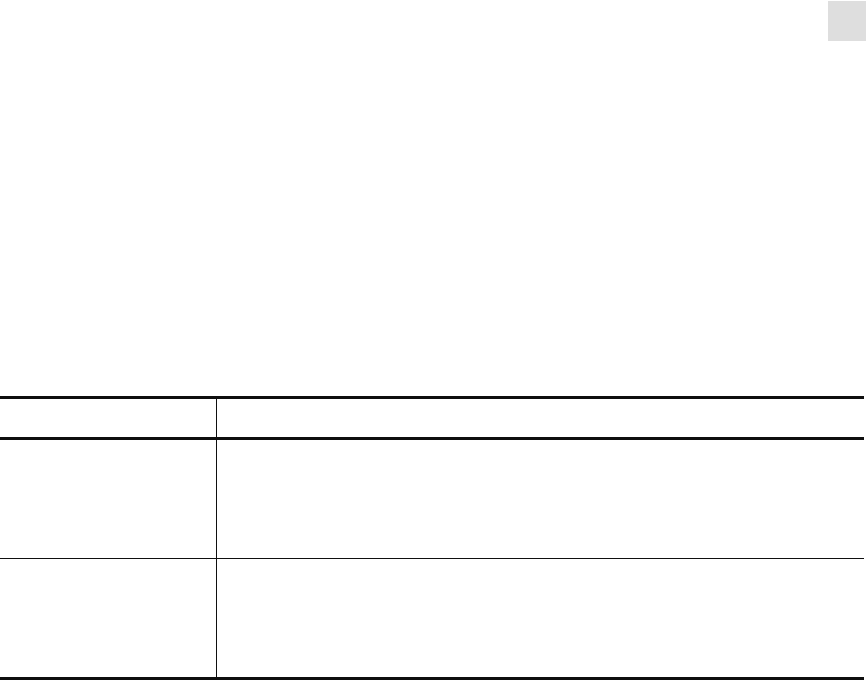
RFID Guidelines
^RW
58981L-002 Rev. 1 2/11/05 R110PAX4 User Guide 115
^RW
Set RFID Read and Write Power Levels
Description This command sets the read and write power levels. This function is useful
when using different tag types or transponders that require different power levels to obtain the
best read and write abilities.
Format ^RWr,w
This table identifies the parameters for this format:
Parameters Details
r = read power Sets the power level to match the desired output as calibrated in the
factory.
Accepted Values: H (high), M (medium), or L (low)
Default Value: H
w = write power Sets the power level to match the desired output as calibrated in the
factory.
Accepted Values: H (high), M (medium), or L (low)
Default Value: H
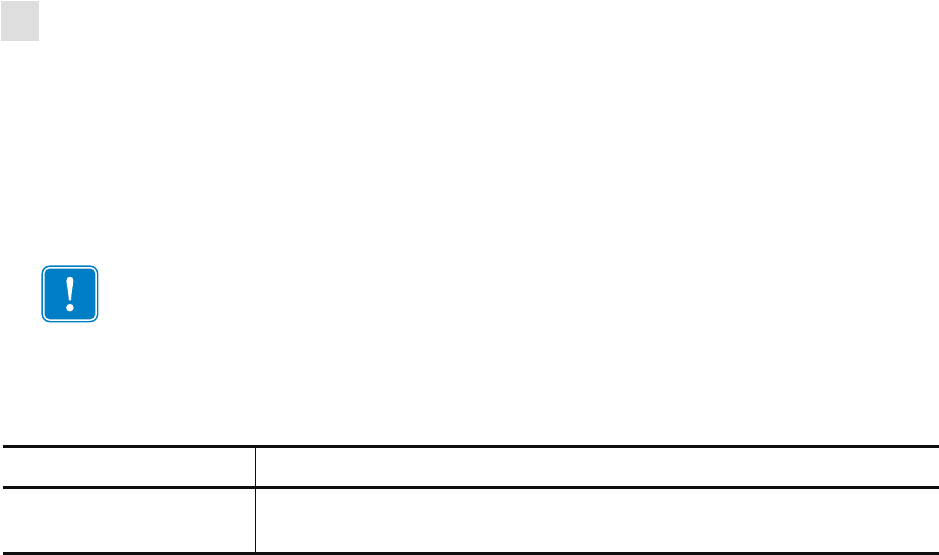
116 R110PAX4 User Guide 58981L-002 Rev. 1 2/11/05
RFID Guidelines
^RZ
^RZ
Set RFID Tag Password
Description This command lets you define the password for the tag during writing.
Format ^RZp
The following table identifies the parameters for this format.
Important • Only certain tags support this feature, so check to ensure that this command can
be used with your particular tag type.
Parameters Details
p= password Accepted values: 00 to FF (hexadecimal)
Default value: 00
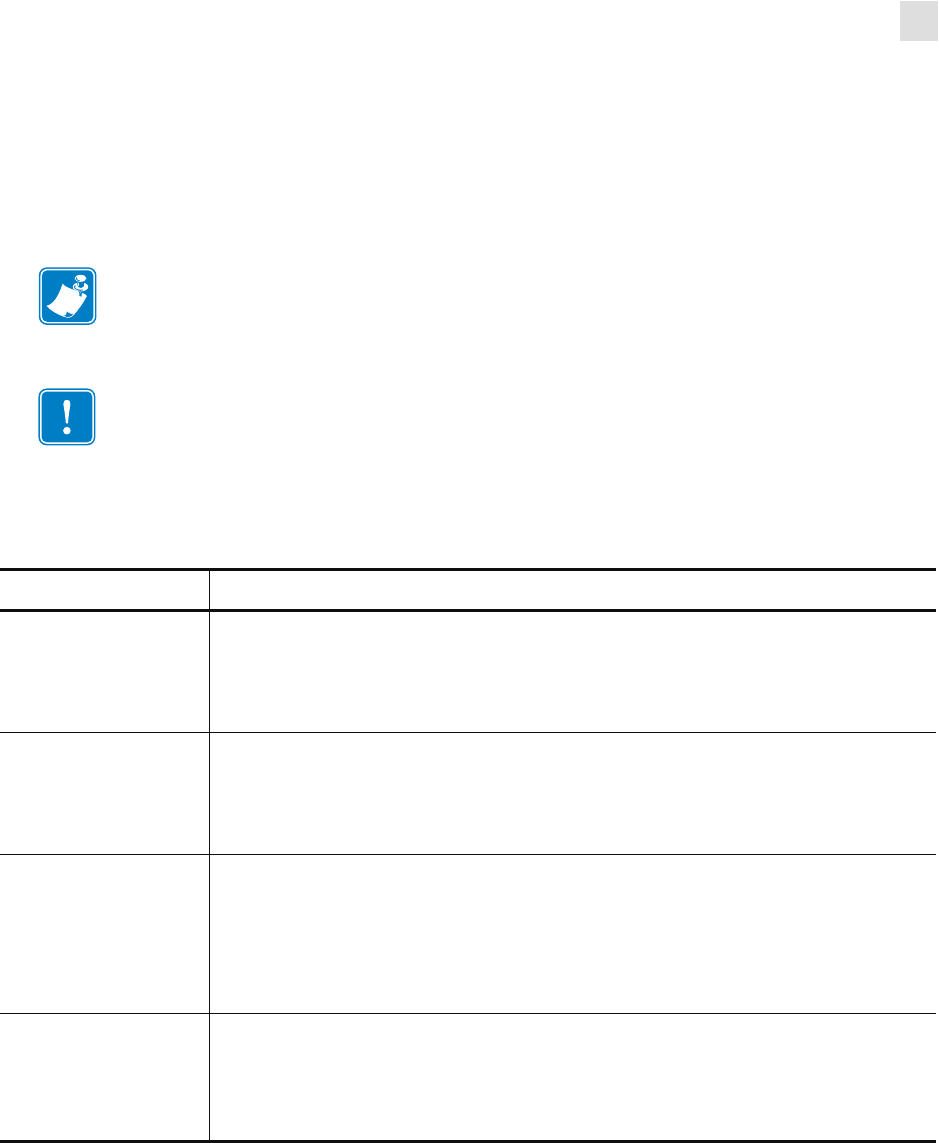
RFID Guidelines
^WT
58981L-002 Rev. 1 2/11/05 R110PAX4 User Guide 117
^WT
Write Tag
Description This command allows you to program the current RFID tag.
Format ^WTb,r,m,w,f,v
The following table identifies the parameters for this format.
Note • It is recommended that you use the ^RF, ^RM, ^RR, and ^WV commands rather than
the ^WT command. The ^WT command is provided only for backward-compatibility with
label formats that were developed for other Zebra RFID printers.
Important • Check the amount of data memory available for the tag that you will be using. If
more is sent than the memory can hold, the printer truncates the data.
Parameters Details
b= block number This parameter is tag-dependent. For most tags, use block 0. For EPC Class 0 Plus,
block 0 is EPC data, and block 1 is user data.
Accepted values: 0 to n, where n is the maximum number of blocks for the tag.
Default value: 0
r= number of retries Changes the number of times that the printer attempts to write to a particular block
of a single RFID tag. (Same function as the ^RR command.)
Accepted values: 0 to 10
Default value: 0
m= motion Enables or disables RFID motion. (Same function as the ^RM command.)
Accepted values:
• 0 (Feed label after writing.)
• 1 (No Feed after writing. Other ZPL may cause a feed.)
Default value: 0
w= write protect Accepted values:
• 0 (Not write protected.)
• 1 (Write protect.)
Default value: 0
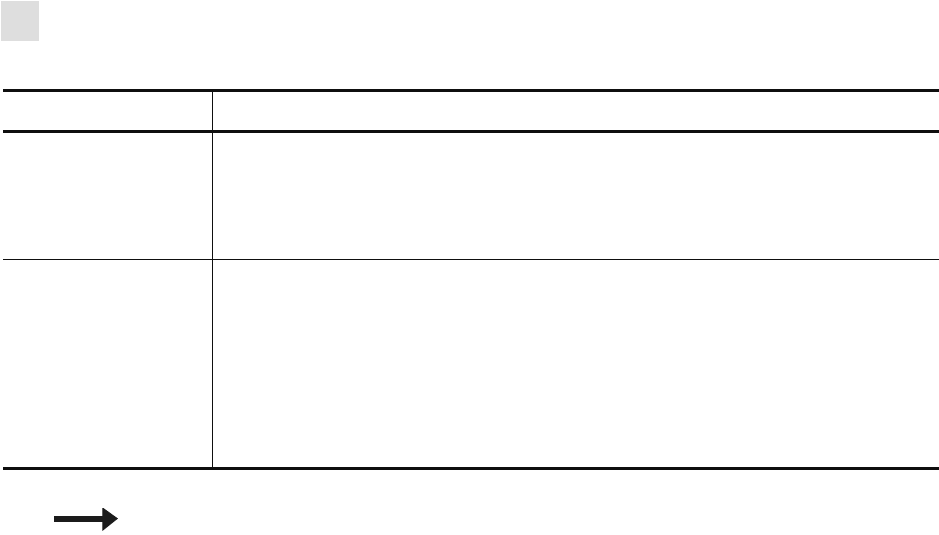
118 R110PAX4 User Guide 58981L-002 Rev. 1 2/11/05
RFID Guidelines
^WT
f= data format Accepted values:
•0 (ASCII)
• 1 (Hexadecimal)
Default value: 0
v= verify valid data Used only for Alien Class 1 tags, which have preprogrammed data in them. This
parameter flags whether the preprogrammed data is verified. (Same function as the
^WV command)
Default value: N
Accepted values:
• N (Do not verify)
• Y (Verify valid data [Hex A5A5 in the first two bytes] before writing)
Parameters Details
Example • This sample encodes data “RFIDRFID” and will try writing up to five times, if
necessary.
^XA
^WT,5^FDRFIDRFID^FS
^XZ
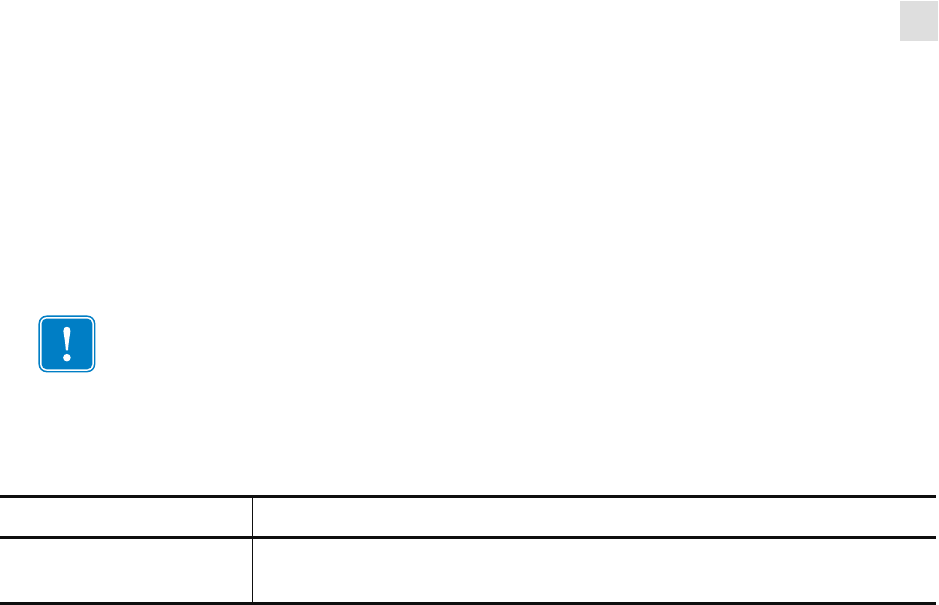
RFID Guidelines
^WV
58981L-002 Rev. 1 2/11/05 R110PAX4 User Guide 119
^WV
Verify RFID Write Operation
Description If write verify is enabled, this command verifies the RFID write operation to
ensure that the tag about to be programmed contains the hex data “A5A5” in the first two
bytes. This parameter is not persistent (carried over from label to label).
Format ^WVe
The following table identifies the parameters for this format.
Important • This command is valid with Class 1 Alien tags only.
Parameters Details
e= enable Accepted values: Y or N
Default value: N
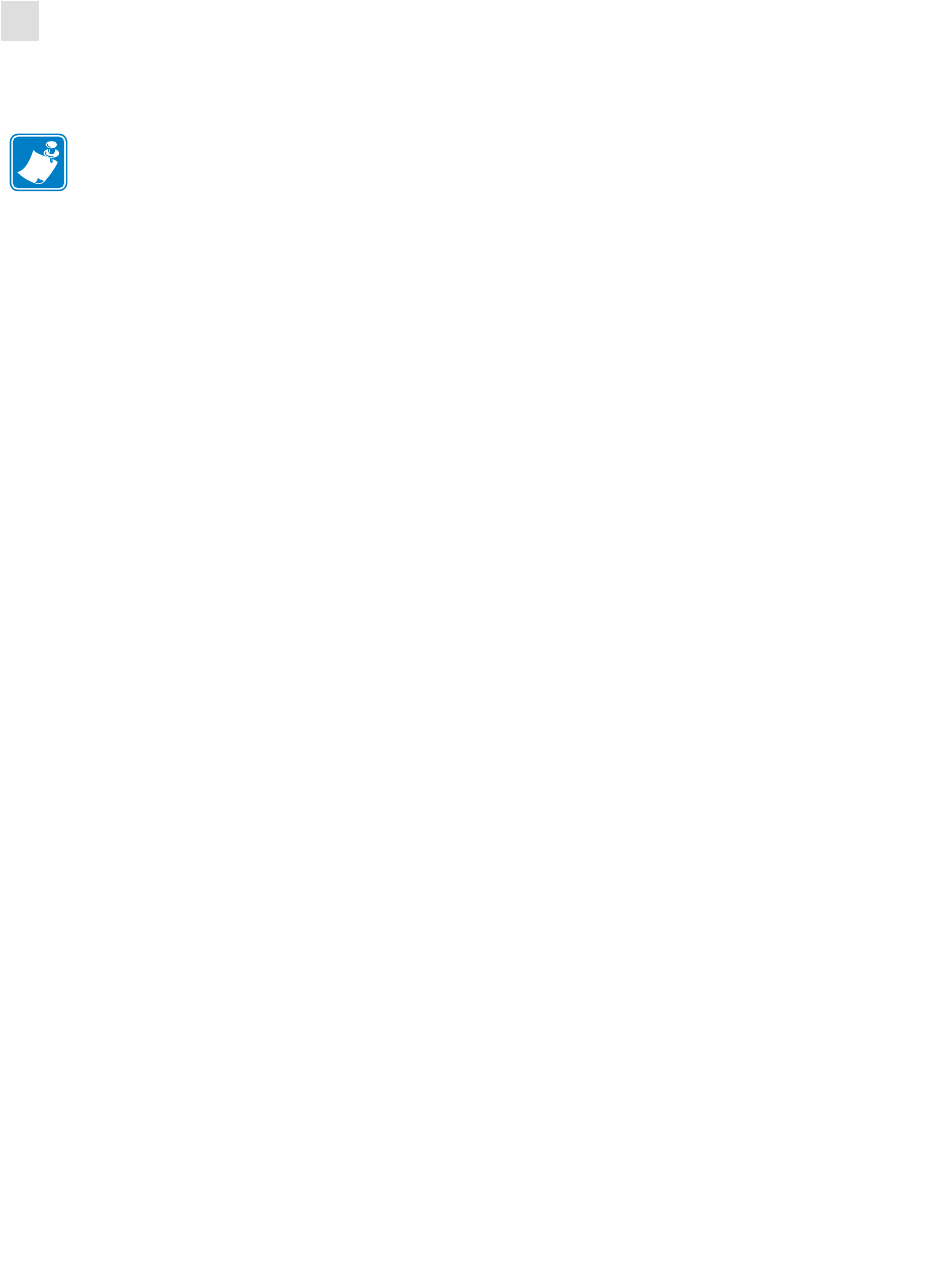
120 R110PAX4 User Guide 58981L-002 Rev. 1 2/11/05
RFID Guidelines
^WV
Notes • ___________________________________________________________________
__________________________________________________________________________
__________________________________________________________________________
__________________________________________________________________________
__________________________________________________________________________
__________________________________________________________________________
__________________________________________________________________________
__________________________________________________________________________
__________________________________________________________________________
__________________________________________________________________________
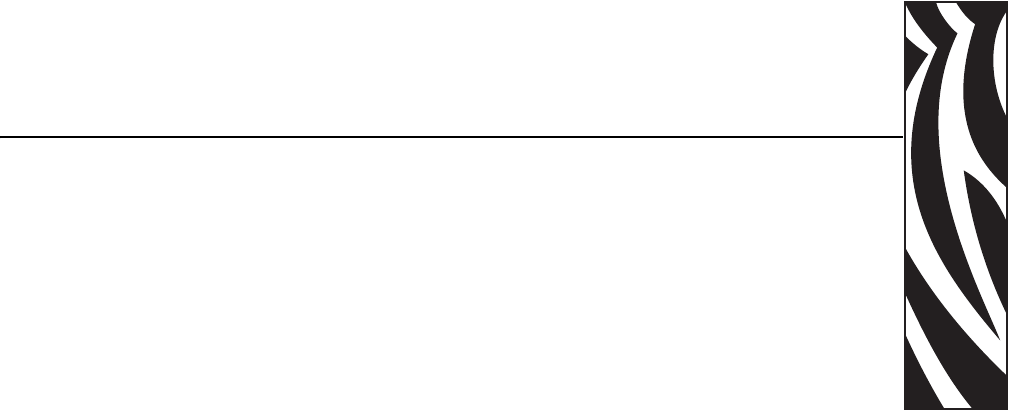
58981L-002 Rev. 1 2/11/05 R110PAX4 User Guide 121
6
Routine Maintenance
This chapter provides routine cleaning and maintenance procedures.
Contents
Cleaning Schedule. . . . . . . . . . . . . . . . . . . . . . . . . . . . . . . . . . . . . . . . . . . . . . . . . . . . . 122
Clean Exterior . . . . . . . . . . . . . . . . . . . . . . . . . . . . . . . . . . . . . . . . . . . . . . . . . . . . . . . . 122
Clean Interior . . . . . . . . . . . . . . . . . . . . . . . . . . . . . . . . . . . . . . . . . . . . . . . . . . . . . . . . . 123
Clean the Sensors . . . . . . . . . . . . . . . . . . . . . . . . . . . . . . . . . . . . . . . . . . . . . . . . . . . 123
Clean the Printhead and Platen Roller. . . . . . . . . . . . . . . . . . . . . . . . . . . . . . . . . . . . 125
Toggle Positioning . . . . . . . . . . . . . . . . . . . . . . . . . . . . . . . . . . . . . . . . . . . . . . . . . . . . . 127
Printhead Pressure Adjustment . . . . . . . . . . . . . . . . . . . . . . . . . . . . . . . . . . . . . . . . . . . 128
Power Fuse Replacement . . . . . . . . . . . . . . . . . . . . . . . . . . . . . . . . . . . . . . . . . . . . . . . 129
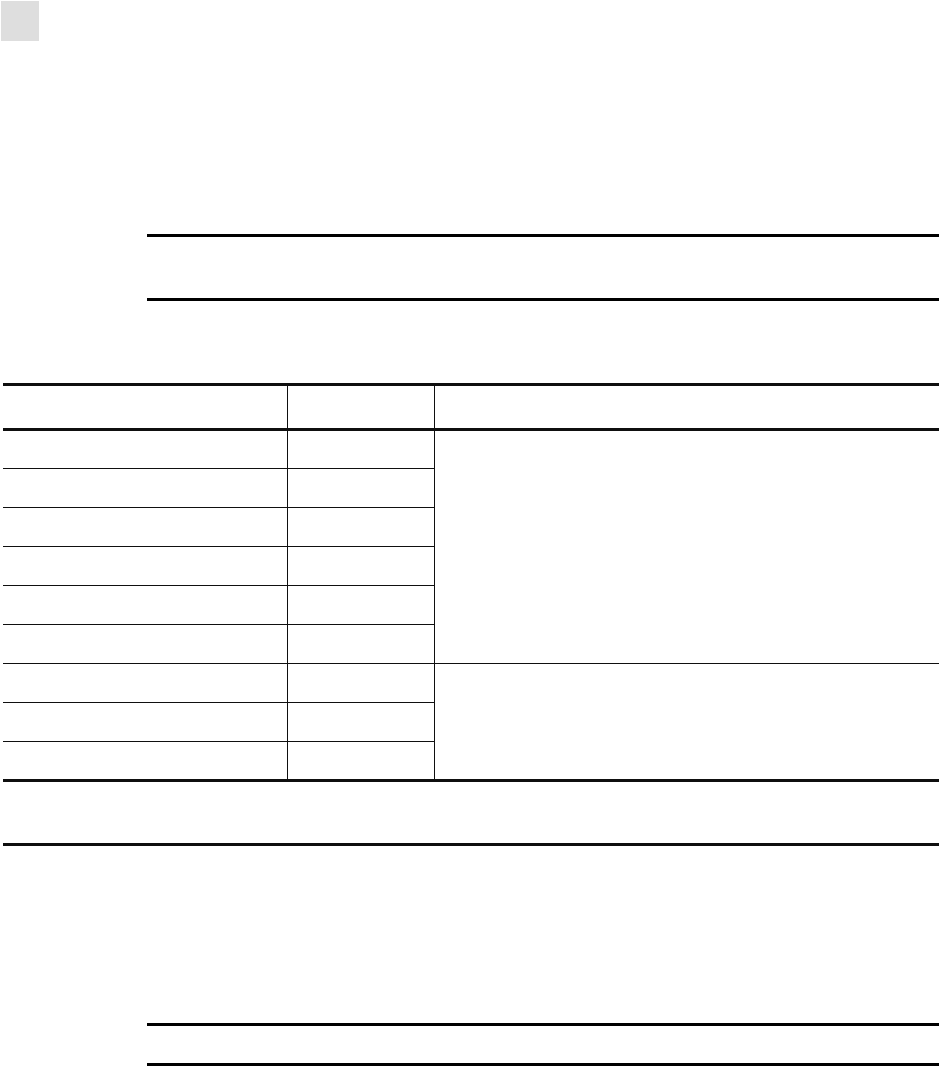
122 R110PAX4 User Guide 58981L-002 Rev. 1 2/11/05
Routine Maintenance
Cleaning Schedule
Cleaning Schedule
Cleaning your print engine regularly maintains print quality and may extend the life of the
print engine. The recommended cleaning schedule is shown in Table 10. See the following
pages for specific procedures.
Clean Exterior
Clean the outside surfaces of the print engine with a lint-free cloth. Use a mild detergent
solution or desktop cleaner sparingly, as needed.
Caution • Use only the cleaning agents indicated. Zebra is not responsible for damage
caused by any other fluids being used on this print engine.
Table 10 • Recommended Print Engine Cleaning Schedule
Area Method Interval
Printhead Solvent* Perform these procedures at the following times:
•When
CLEAN HEAD NOWappears.
•Direct Thermal Print Mode: After every roll of
labels or 500 ft (150 m) of fanfold labels.
•Thermal Transfer Print Mode: After every roll
(1500 ft or 450 m) of ribbon.
Platen roller Solvent*
Transmissive media sensor Air blow
Reflective media sensor Air blow
Media path Solvent*
Ribbon sensor Air blow
Door-open sensors Air blow Monthly and as needed
Tear-off/peel-off bar Solvent*
Clear plastic antenna cover Air blow
* Use Zebra’s Preventative Maintenance kit, part number 47362, or a solution of 90% isopropyl alcohol and
10% deionized water.
Caution • Do not use harsh or abrasive cleaning agents or solvents.
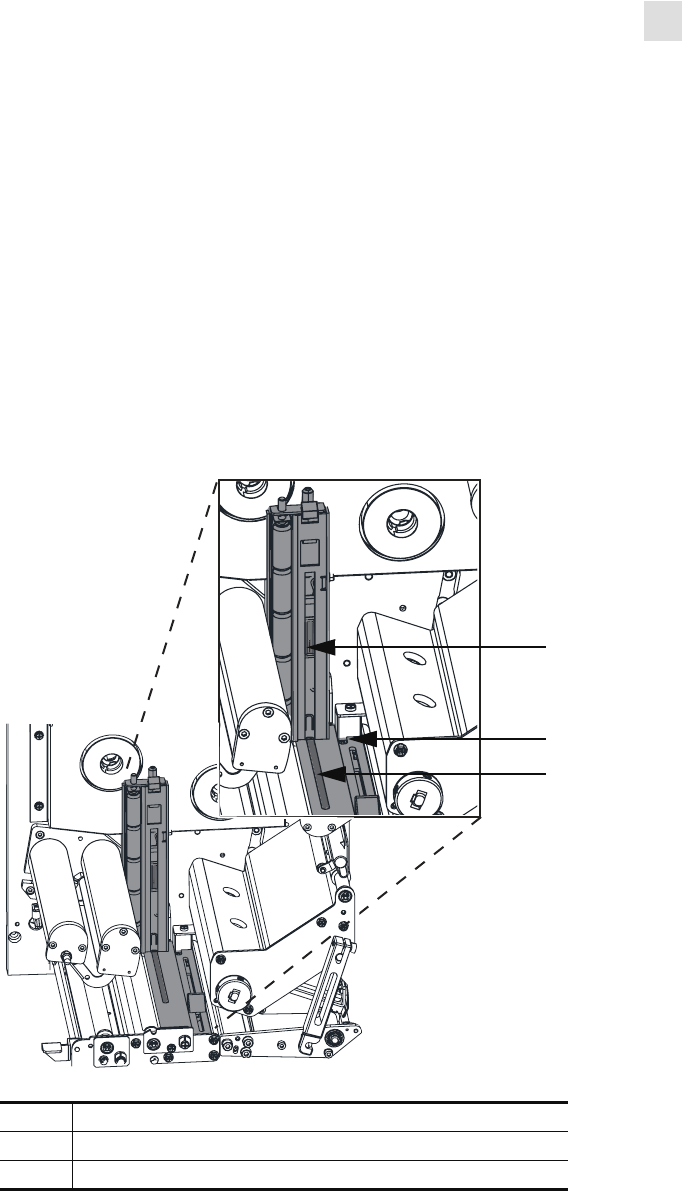
Routine Maintenance
Clean Interior
58981L-002 Rev. 1 2/11/05 R110PAX4 User Guide 123
Clean Interior
Remove any accumulated dirt and lint from the interior of the print engine using a soft bristle
brush and/or vacuum cleaner. This area should be inspected every time a new ribbon is loaded.
Clean the Sensors
To ensure proper operation of the print engine, all sensors should be cleaned on a regular basis.
The sensors are shown in the following:
• See Figure 43 for the media sensors.
• See Figure 44 on page 124 for the door-open sensor.
• See Figure 45 on page 124 for the ribbon sensor and ribbon sensor reflector.
Figure 43 • Media Sensor Locations (Right-Hand Unit Shown)
1Upper transmissive media sensor
2Reflective media sensor
3Lower transmissive media sensor
1
2
3
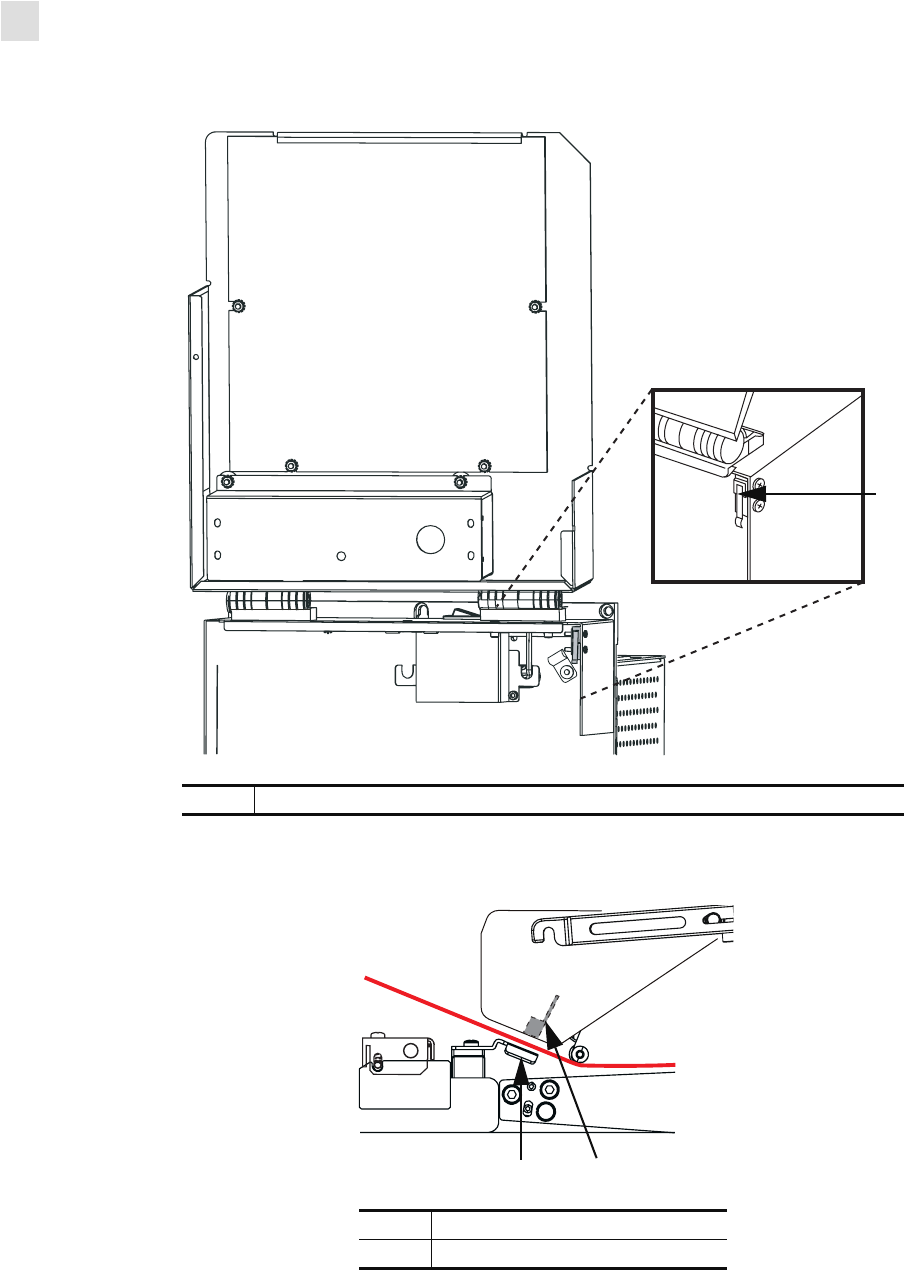
124 R110PAX4 User Guide 58981L-002 Rev. 1 2/11/05
Routine Maintenance
Clean Interior
Figure 44 • Door-Open Sensor Location (Right-Hand Unit Shown)
Figure 45 • Ribbon Sensor Location (Right-Hand Unit Shown)
1Door-open sensor
1Ribbon sensor reflector
2Ribbon sensor
1
2
1
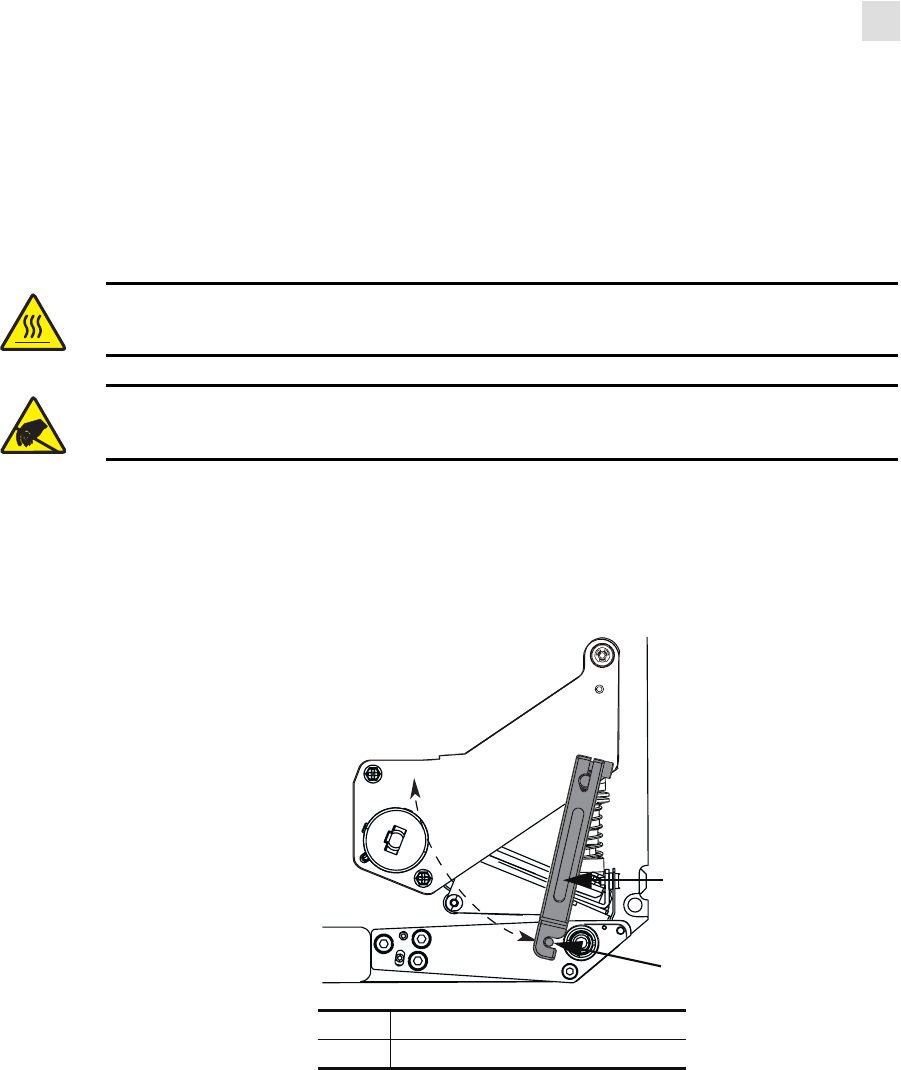
Routine Maintenance
Clean Interior
58981L-002 Rev. 1 2/11/05 R110PAX4 User Guide 125
Clean the Printhead and Platen Roller
Clean the printhead and platen roller according to the schedule in Table 10 on page 122. Clean
the printhead more often if you see inconsistent print quality, such as voids or light print. Clean
the platen roller if you see media movement problems.
To clean the printhead and platen roller, complete these steps:
1. Turn Off (O) the print engine.
2. See Figure 46. Open the printhead assembly by unlatching the printhead latch from the
locking pin.
Figure 46 • Opening the Printhead Assembly
3. Remove the media and ribbon from the print engine.
Caution • The printhead may be hot and could cause severe burns. Allow the printhead
to cool.
Electrostatic Discharge Caution • Observe proper electrostatic safety precautions when
handling any static-sensitive components such as circuit boards and printheads.
1Printhead latch
2Locking pin
1
2
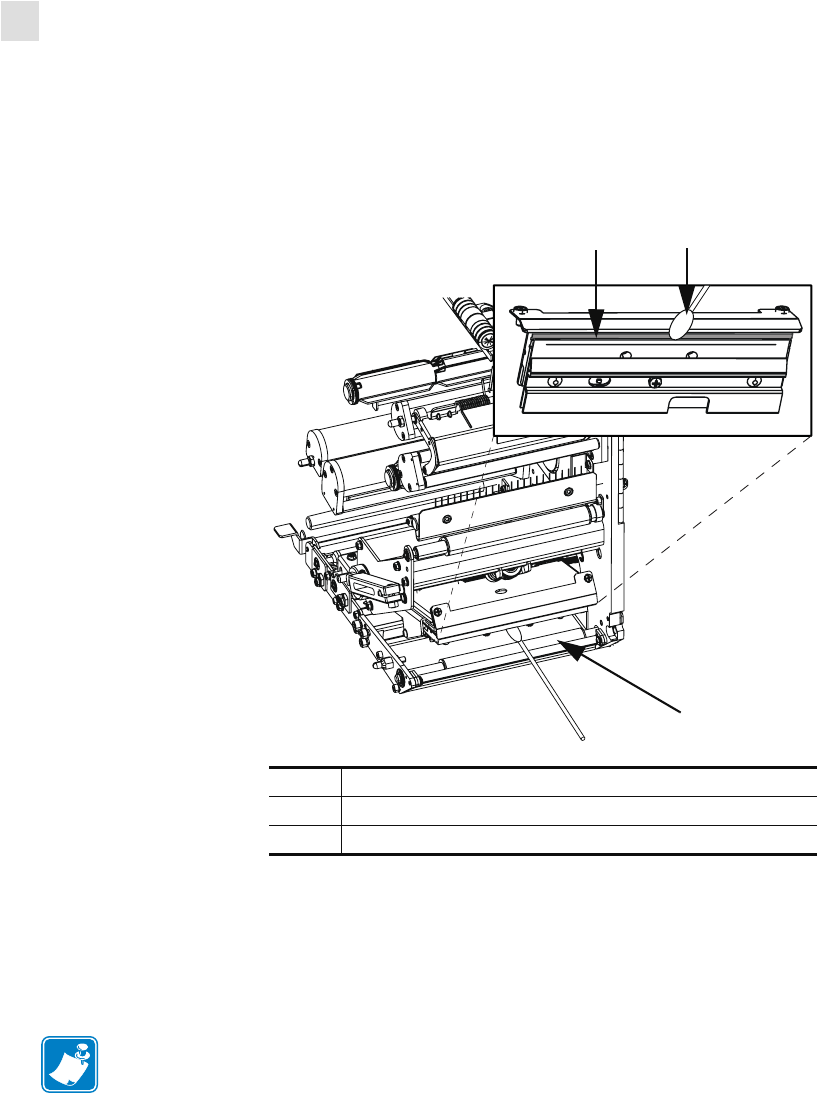
126 R110PAX4 User Guide 58981L-002 Rev. 1 2/11/05
Routine Maintenance
Clean Interior
4. See Figure 47. Using Zebra’s Preventative Maintenance kit (part number 47362) or a
solution of 90% isopropyl alcohol and 10% deionized water on a cotton swab, wipe the
print elements from end to end. Allow the solvent to evaporate.
Figure 47 • Printhead and Platen Roller Cleaning (Right-Hand Unit Shown)
5. Use a lint-free cloth moistened with alcohol to clean the platen roller and other rollers.
Rotate the rollers while cleaning.
6. Reload the ribbon and media (if used).
7. Turn On (I) the print engine.
1Printhead elements (gray strip)
2Cotton swab
3Platen roller
Note • If print quality does not improve after you perform this procedure, clean the printhead
with Save-a-Printhead cleaning film. Call your authorized Zebra distributor for more
information.
3
1 2
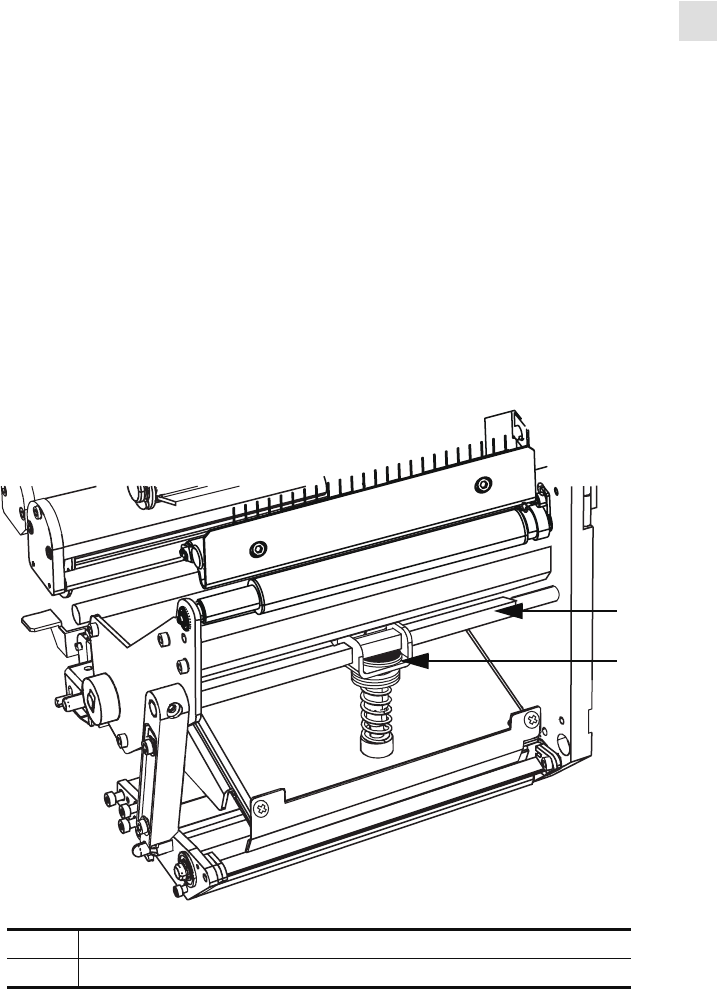
Routine Maintenance
Toggle Positioning
58981L-002 Rev. 1 2/11/05 R110PAX4 User Guide 127
Toggle Positioning
Proper toggle positioning is important for proper print quality. The toggle should be positioned
approximately midway across the width of the media.
To adjust the toggle, complete these steps:
1. See Figure 48. Loosen the position locking nut by rotating it to the left.
2. Slide the toggle to the desired position on the toggle shaft.
3. Finger tighten the position locking nut by rotating it to the right.
Figure 48 • Toggle Positioning (Right-Hand Unit Shown)
1Toggle shaft
2Position locking nut
2
1
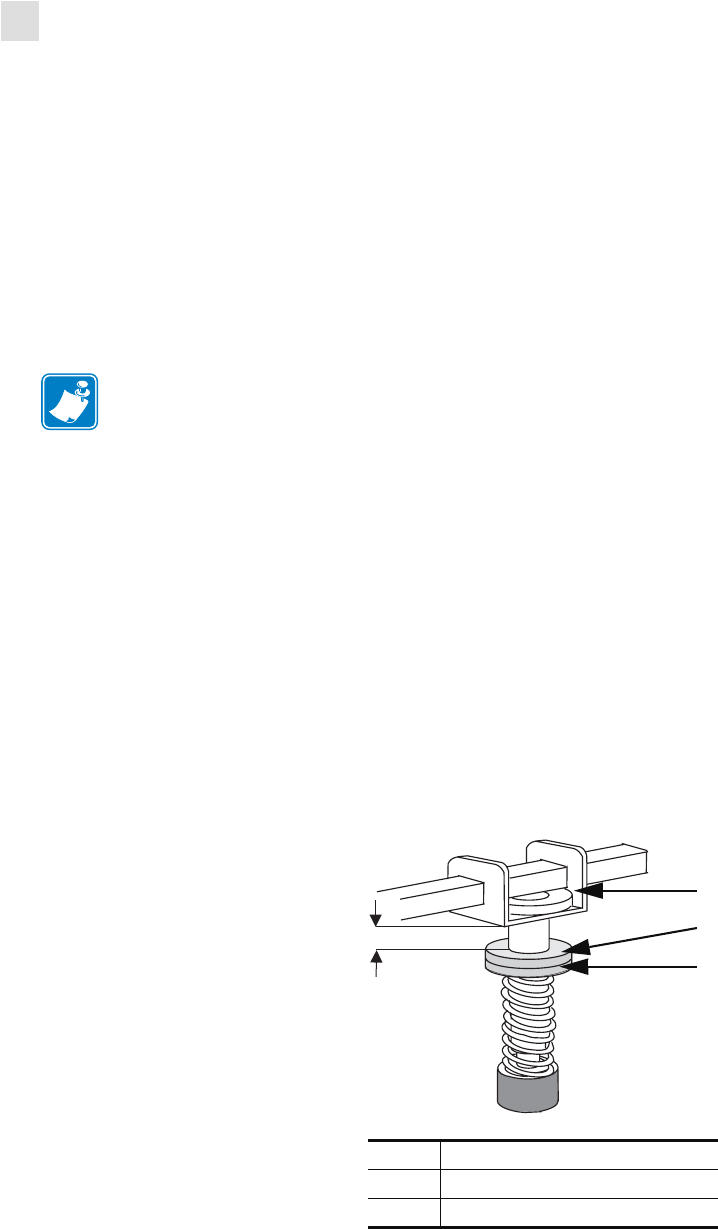
128 R110PAX4 User Guide 58981L-002 Rev. 1 2/11/05
Routine Maintenance
Printhead Pressure Adjustment
Printhead Pressure Adjustment
Before adjusting the printhead pressure, check that the toggle is positioned correctly. See
Toggle Positioning on page 127.
You may need to adjust the printhead pressure in the following instances:
• if there is noticeable bleed or swelling in the printed image (too much pressure)
• if there are voids (too little pressure)
• if the darkness setting (burn duration) is set properly, but printing is too light (too little
pressure)
To adjust printhead pressure, complete these steps:
1. See Figure 49. As a starting point for adjustment, set the position of the adjusting nut so
that when the locking nut is tightened, it is approximately 7/16 in. (11 mm) from the yoke.
2. Refer to Adjust Print Darkness on page 55 to set the darkness value (burn duration)
appropriately for your media and ribbon.
3. Refer to PAUSE Self Test on page 144 to print test labels.
4. Adjust the position of the adjusting nut until the print quality is acceptable (turning it
clockwise increases the spring pressure, and counterclockwise decreases the pressure).
Use the lowest pressure that provides the desired print quality.
5. Hold the adjusting nut in position, and tighten the locking nut against it.
Figure 49 • Printhead Pressure Adjustment
Note • Printhead and drive system (belts and bearings) life can be maximized by using the
lowest pressure that produces the desired print quality.
1Yoke
2Locking nut
3Adjusting nut
7/16 inch
(11 mm)
2
3
1
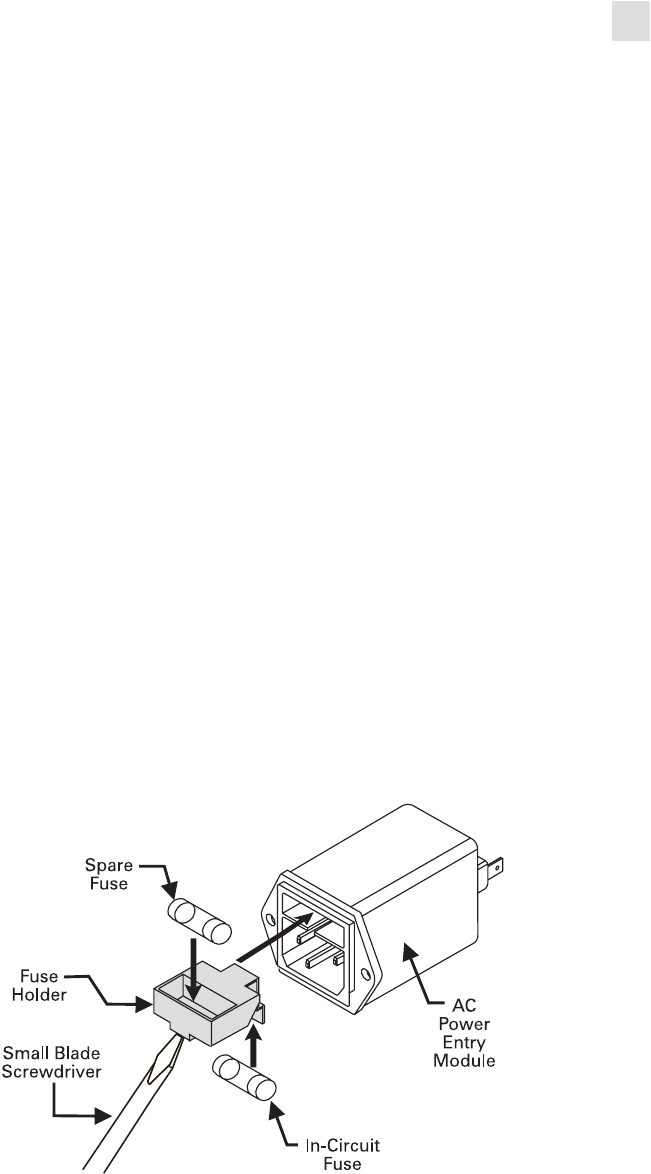
Routine Maintenance
Power Fuse Replacement
58981L-002 Rev. 1 2/11/05 R110PAX4 User Guide 129
Power Fuse Replacement
The print engine uses a metric-style fuse (5 × 20 mm IEC) rated for 5 Amps at 250 Volts that
bears the certification mark of a known international safety organization (see Figure 13
on page 23). The power entry module comes with two approved fuses in the fuse holder: one is
in-circuit and the other is a spare.
To replace a fuse, complete these steps:
1. See Figure 50. Turn off the print engine and unplug the power cord from the back of the
print engine.
2. Using a small-blade screwdriver, remove the fuse holder from the power entry module at
the rear of the print engine.
3. Carefully remove the fuse from the in-circuit location.
4. To remove the spare fuse, gently push the point of a pencil or the end of a paperclip
through one of the two holes in the fuse holder. Repeat through the other hole.
5. Insert the spare fuse in the in-circuit location.
6. Place a new fuse in the spare fuse location.
7. Reinstall the fuse holder into the power entry module at the rear of the print engine.
8. Reconnect the power cord and turn the print engine on.
The print engine should be ready for operation and the POWER light should be on. If
power is not restored, an internal component failure may have occurred, and the print
engine may require servicing. See Troubleshooting on page 131.
Figure 50 • Installing a Fuse
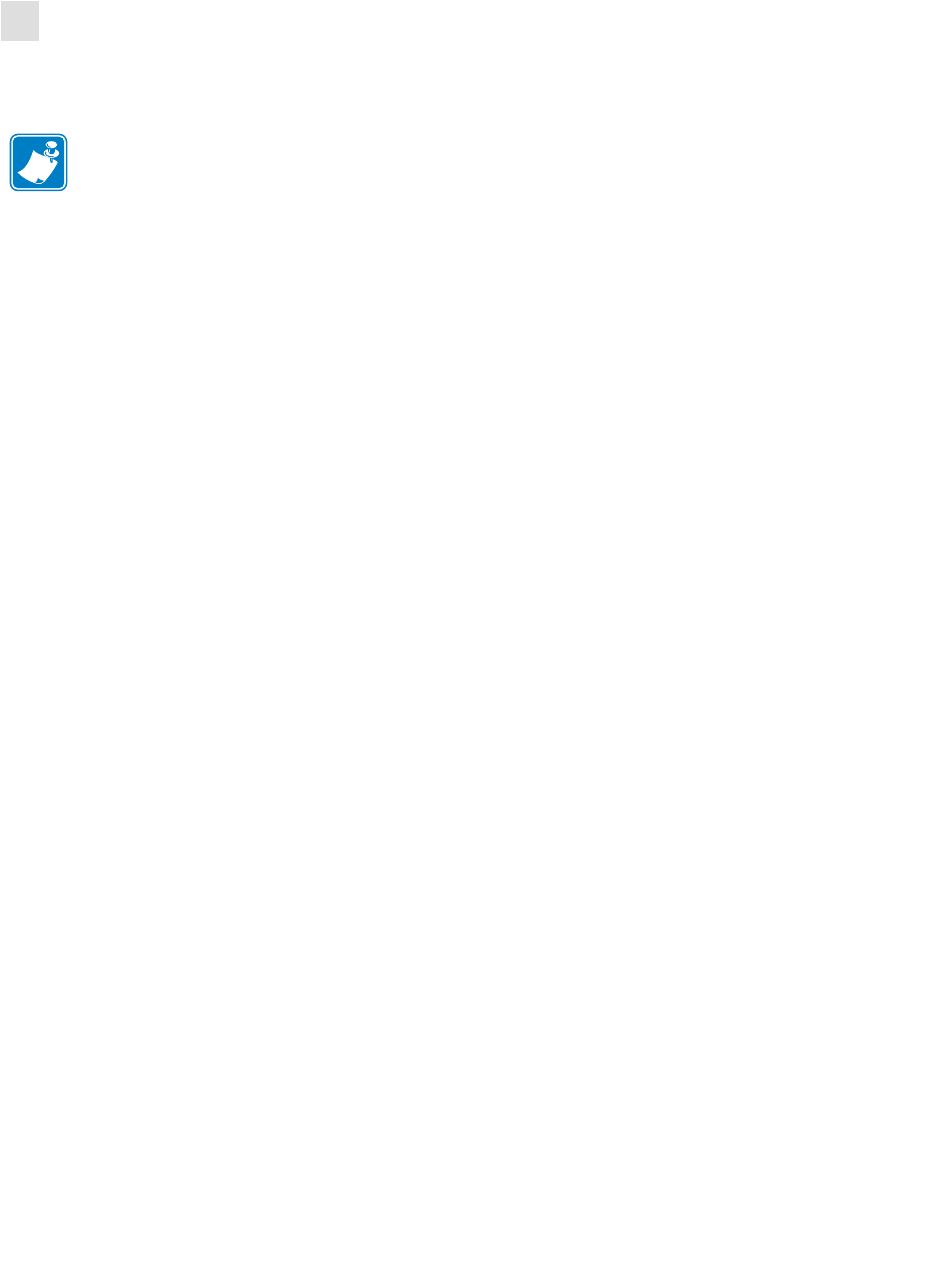
130 R110PAX4 User Guide 58981L-002 Rev. 1 2/11/05
Routine Maintenance
Power Fuse Replacement
Notes • ___________________________________________________________________
__________________________________________________________________________
__________________________________________________________________________
__________________________________________________________________________
__________________________________________________________________________
__________________________________________________________________________
__________________________________________________________________________
__________________________________________________________________________
__________________________________________________________________________
__________________________________________________________________________
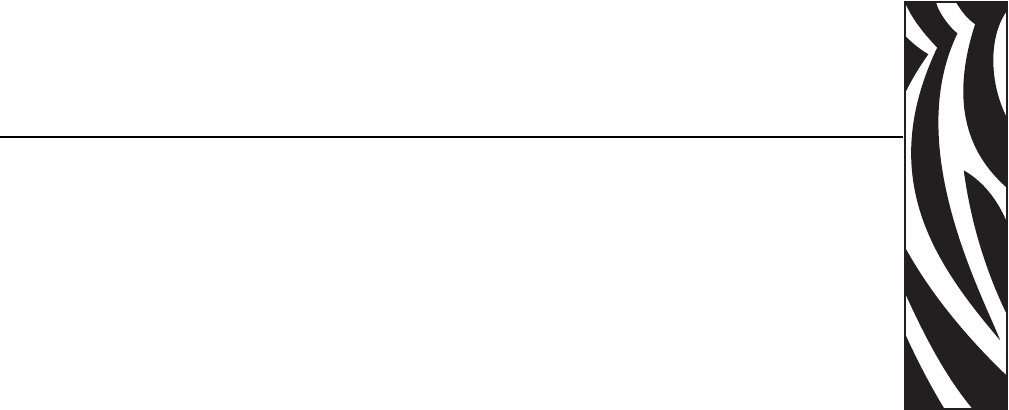
58981L-002 Rev. 1 2/11/05 R110PAX4 User Guide 131
7
Troubleshooting
This chapter provides you with information about LCD, print quality, communications, and
other errors that you might need to troubleshoot. If you need technical assistance, contact your
equipment supplier.
Contents
Troubleshooting Checklists . . . . . . . . . . . . . . . . . . . . . . . . . . . . . . . . . . . . . . . . . . . . . . 132
LCD Error Messages . . . . . . . . . . . . . . . . . . . . . . . . . . . . . . . . . . . . . . . . . . . . . . . . . . . 133
Memory Errors . . . . . . . . . . . . . . . . . . . . . . . . . . . . . . . . . . . . . . . . . . . . . . . . . . . . . . . . 135
Print Quality Problems . . . . . . . . . . . . . . . . . . . . . . . . . . . . . . . . . . . . . . . . . . . . . . . . . . 136
Communications Problems . . . . . . . . . . . . . . . . . . . . . . . . . . . . . . . . . . . . . . . . . . . . . . 139
Miscellaneous Print Engine Problems . . . . . . . . . . . . . . . . . . . . . . . . . . . . . . . . . . . . . . 140
Print Engine Diagnostics . . . . . . . . . . . . . . . . . . . . . . . . . . . . . . . . . . . . . . . . . . . . . . . . 142
Power-On Self Test . . . . . . . . . . . . . . . . . . . . . . . . . . . . . . . . . . . . . . . . . . . . . . . . . . 142
Additional Print Engine Self Tests . . . . . . . . . . . . . . . . . . . . . . . . . . . . . . . . . . . . . . . 142
Communications Diagnostics Test . . . . . . . . . . . . . . . . . . . . . . . . . . . . . . . . . . . . . . . 148

132 R110PAX4 User Guide 58981L-002 Rev. 1 2/11/05
Troubleshooting
Troubleshooting Checklists
Troubleshooting Checklists
If an error condition exists with the print engine, review this checklist:
Is there an error message on the LCD? If yes, see LCD Error Messages on page 133 for
more information.
Is the CHECK RIBBON light on when ribbon is loaded properly, or are non-continuous
labels being treated as continuous labels? If yes, see Calibrate Media and Ribbon Sensor
Sensitivity on page 63.
Are you experiencing problems with print quality? If yes, see Print Quality Problems
on page 136.
Are you experiencing communications problems? If yes, see Communications Problems
on page 139.
If the labels are not printing or advancing correctly, review this checklist:
Are you using the correct type of labels? Review the types of label in Types of Media
on page 27.
Review the label- and ribbon-loading illustrations in Load Media on page 32 and Load
Ribbon on page 38.
Check the position of the media sensor and move if necessary, as shown in Adjust Media
Sensors on page 46.
Does the printhead need to be adjusted? See Printhead Pressure Adjustment on page 128
for more information.
Do the sensors need to be calibrated? See Calibrate Media and Ribbon Sensor Sensitivity
on page 63 for more information.
If none of the above suggestions correct the problem, review this checklist:
Perform one or more of the self-tests given in Print Engine Diagnostics on page 142. Use
the results to help identify the problem.
If you are still having problems, see Support on page 3 for customer support information.
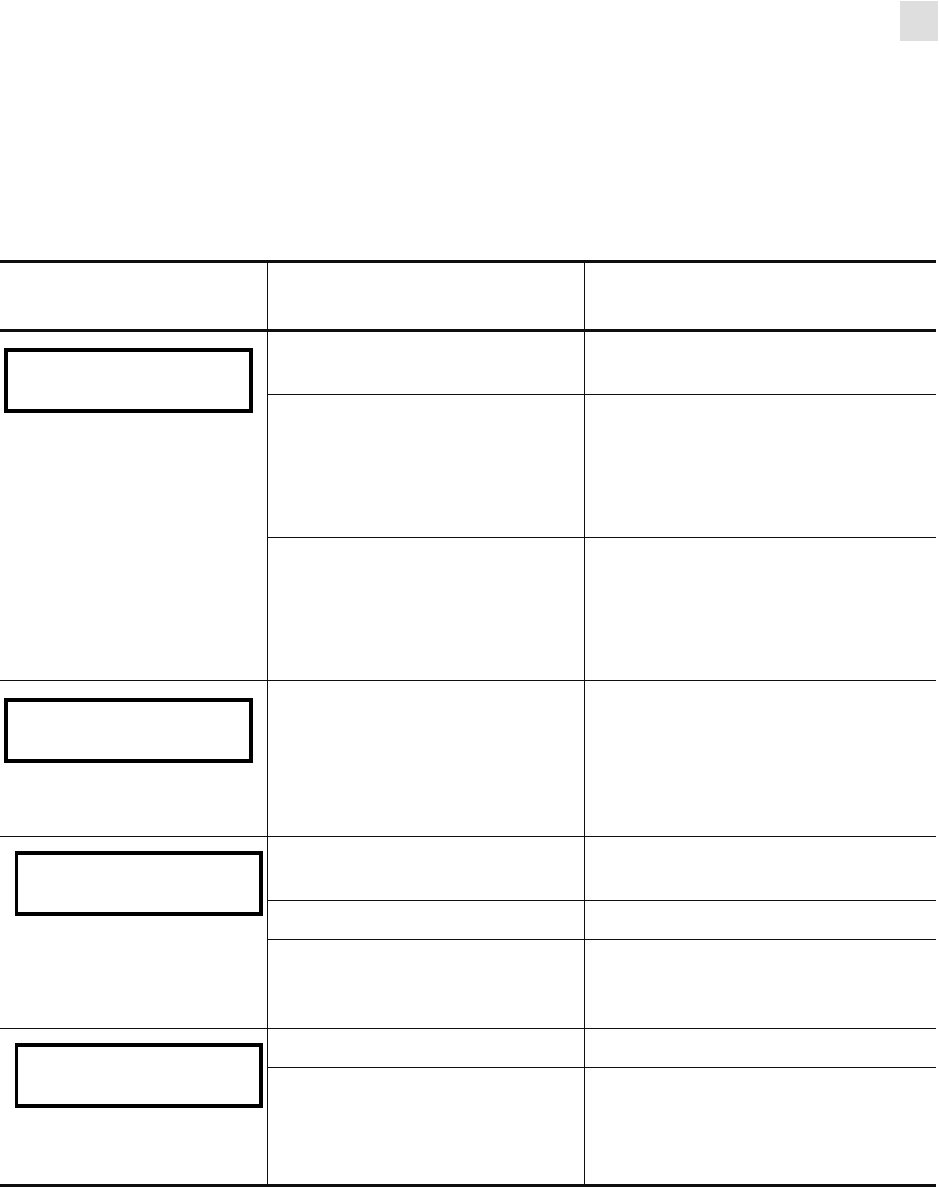
Troubleshooting
LCD Error Messages
58981L-002 Rev. 1 2/11/05 R110PAX4 User Guide 133
LCD Error Messages
The LCD displays messages when there is an error. See Table 11 for LCD errors, the possible
causes, and the recommended solutions.
Table 11 • LCD Error Messages
LCD Display/
Print Engine Condition Possible Cause Recommended Solution
Print engine stops; RIBBON
light ON, ERROR light
flashes.
In thermal transfer mode, ribbon is
not loaded or incorrectly loaded. Load ribbon correctly. See Load
Ribbon on page 38.
In thermal transfer mode, the
ribbon sensor is not detecting
ribbon that is loaded incorrectly.
1. Load ribbon correctly. See Load
Ribbon on page 38.
2. Calibrate the sensors. See
Calibrate Media and Ribbon
Sensor Sensitivity on page 63.
In thermal transfer mode, media is
blocking the ribbon sensor. 1. Load media correctly. See Load
Media on page 32.
2. Calibrate the sensors. See
Calibrate Media and Ribbon
Sensor Sensitivity on page 63.
RIBBON light ON, ERROR
light flashes.
Ribbon is loaded, but the print
engine is set for direct thermal
mode.
Ribbon is not required with direct
thermal media. Remove ribbon unless
you are using it to protect the
printhead. This error message will not
affect printing.
Print engine stops; MEDIA
light ON, ERROR light
flashes.
Media is not loaded or is loaded
incorrectly. Load media correctly. See Load Media
on page 32.
Misadjusted media sensor. Check position of the media sensor.
The print engine is set for
non-continuous media, but
continuous media is loaded.
Install proper media type, or reset print
engine for current media type and
perform calibration.
Print engine stops and
ERROR light flashes.
The printhead is not fully closed. Close printhead completely.
The head open sensor is not
working properly. Call a service technician.
ERROR CONDITION
RIBBON OUT
WARNING
RIBBON IN
ERROR CONDITION
PAPER OUT
ERROR CONDITION
HEAD OPEN
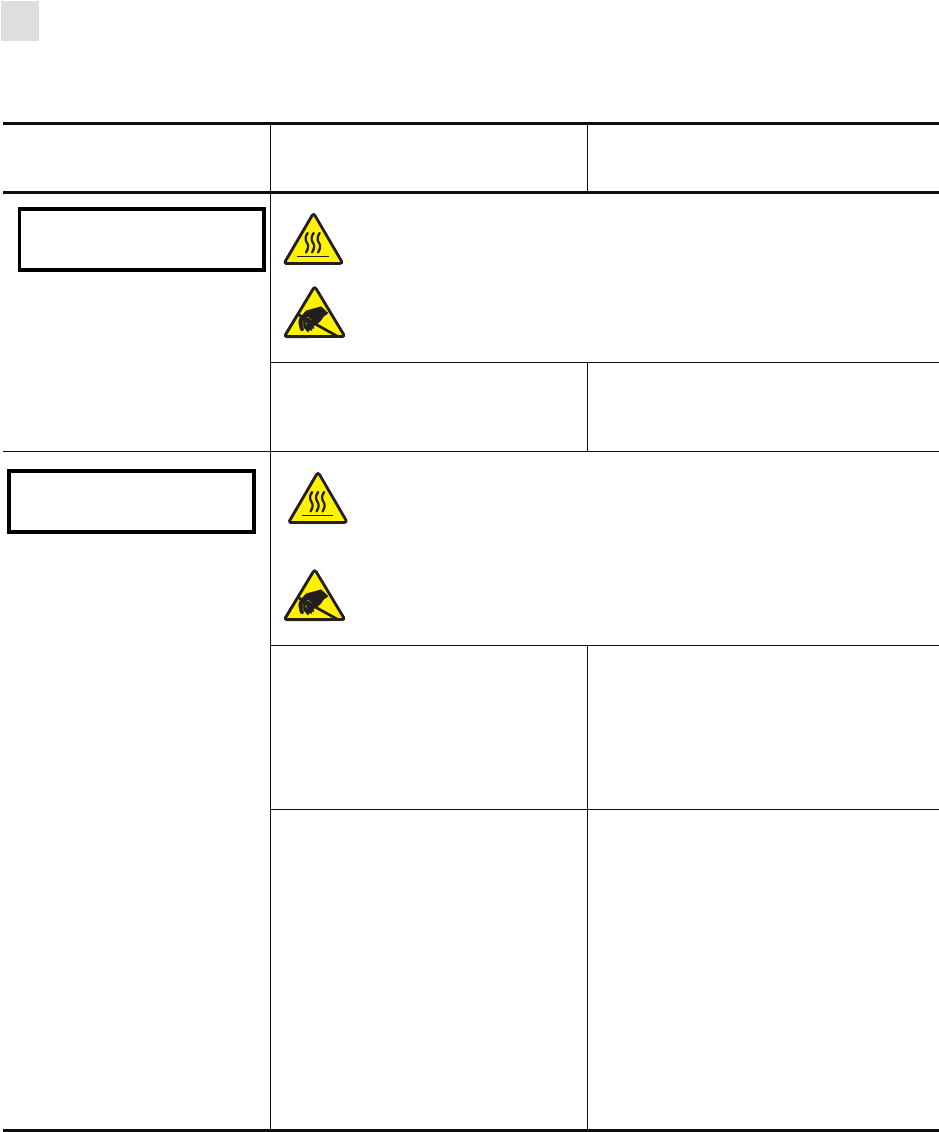
134 R110PAX4 User Guide 58981L-002 Rev. 1 2/11/05
Troubleshooting
LCD Error Messages
Print engine stops and
ERROR light flashes.
Caution • The printhead may be hot enough to cause severe
burns. Allow the printhead to cool.
Electrostatic Discharge Caution • Observe proper electrostatic
safety precautions when handling any static-sensitive
components such as circuit boards and printheads.
The printhead is over temperature. Printing automatically resumes when
the printhead elements cool to an
acceptable operating temperature.
Print engine stops and
ERROR light flashes.
Caution • An improperly connected printhead data or power
cable can cause this error message. The printhead may be hot
enough to cause severe burns. Allow the printhead to cool.
Electrostatic Discharge Caution • Observe proper electrostatic
safety precautions when handling any static-sensitive
components such as circuit boards and printheads.
The printhead is under
temperature. Continue printing while the printhead
reaches the correct operating
temperature. If the error remains, the
environment may be too cold for
proper printing. Relocate the print
engine to a warmer area.
The printhead data cable is not
properly connected. Caution • You must turn off the print
engine before performing this
procedure. Failure to do so can
damage the printhead.
1. Turn Off (O) the print engine.
2. Disconnect and reconnect the data
cable to the printhead.
3. Ensure that the cable connector is
fully inserted into the printhead
connector.
4. Turn On (I) the print engine.
Table 11 • LCD Error Messages (Continued)
LCD Display/
Print Engine Condition Possible Cause Recommended Solution
WARNING
HEAD TOO HOT
WARNING
HEAD COLD
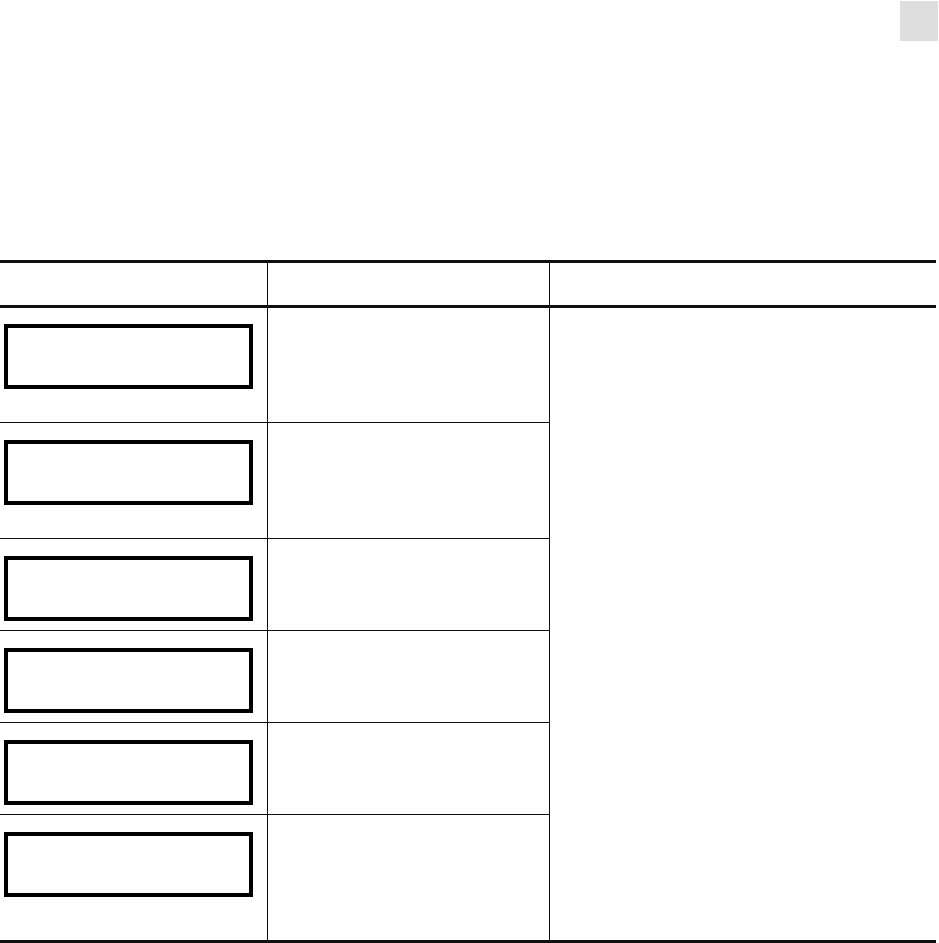
Troubleshooting
Memory Errors
58981L-002 Rev. 1 2/11/05 R110PAX4 User Guide 135
Memory Errors
The memory errors in Table 12 indicate that the print engine does not have enough memory to
perform the function shown on the second line of the LCD.
Table 12 • Memory Errors
Problem/LCD Display Possible Cause Recommended Solution
Creating Bitmap
The bitmap size (label
length/width) does not fit in
available memory.
You may do any of the following:
1. Press PAUSE to place the print engine
in Pause mode.
2. Send a ~HM ZPL command to the
print engine to display the amount of
free memory. Then do one of the
following:
• Redesign graphic/format to fit
available memory or remove
items from memory to create
more space.
• Press PAUSE to skip the
formatting step in process and
proceed to the next step.
3. In Pause mode, press CANCEL.
The print engine skips the current
label formatting process and goes to
the next label.
4. Turn the print engine Off (O) and then
On (I) to clear the print engine’s
memory.
5. Upgrade the print engine to a larger
memory size.
Storing Bitmap
Not enough memory is
available to store the bitmap
created.
Building Format
Label is too complex.
Storing Format
Format is too large to fit in
available memory.
Storing Graphic
The graphic image is too large
to fit in available memory.
Storing Font
Not enough memory available
to store the font.
OUT OF MEMORY
CREATING BITMAP
OUT OF MEMORY
STORING BITMAP
OUT OF MEMORY
BUILDING FORMAT
OUT OF MEMORY
STORING FORMAT
OUT OF MEMORY
STORING GRAPHIC
OUT OF MEMORY
STORING FONT
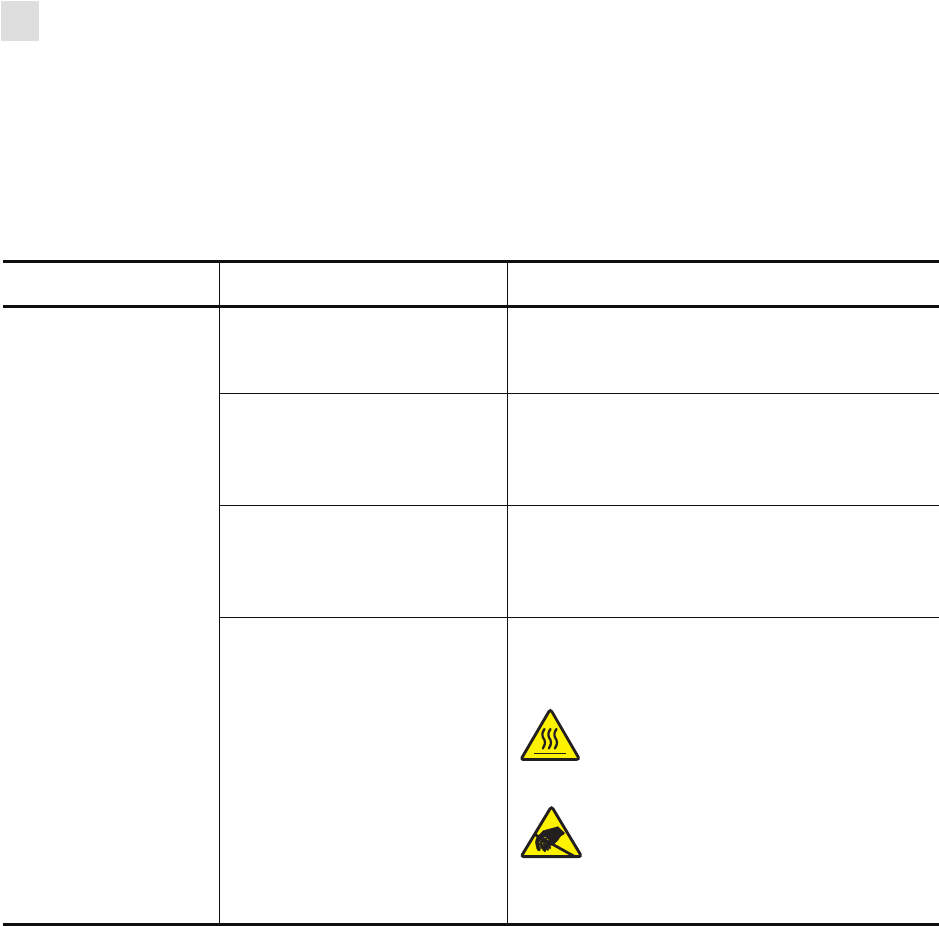
136 R110PAX4 User Guide 58981L-002 Rev. 1 2/11/05
Troubleshooting
Print Quality Problems
Print Quality Problems
Table 13 identifies problems with print quality, the possible causes, and the recommended
solutions.
Table 13 • Print Quality Problems
Problem Possible Cause Recommended Solution
General print
quality issues You are using an incorrect
combination of labels and
ribbon for your application.
Consult your authorized Zebra reseller or
distributor for information and advice.
The print engine is set at the
incorrect print speed. For optimal print quality, set the print speed to
the lowest possible setting for your application
via ZPL II, the driver, or the software. See Adjust
Print Speed on page 55.
The print engine is set at an
incorrect darkness level. For optimal print quality, set the darkness to the
lowest possible setting for your application via
the front panel, the driver, or the software. See
Adjust Print Darkness on page 55.
The printhead is dirty. Clean the printhead according to the instructions
in Clean the Printhead and Platen Roller
on page 125.
Caution • The printhead may be hot
enough to cause severe burns. Allow
the printhead to cool.
Electrostatic Discharge Caution •
Observe proper electrostatic safety
precautions when handling any static-
sensitive components such as circuit
boards and printheads.
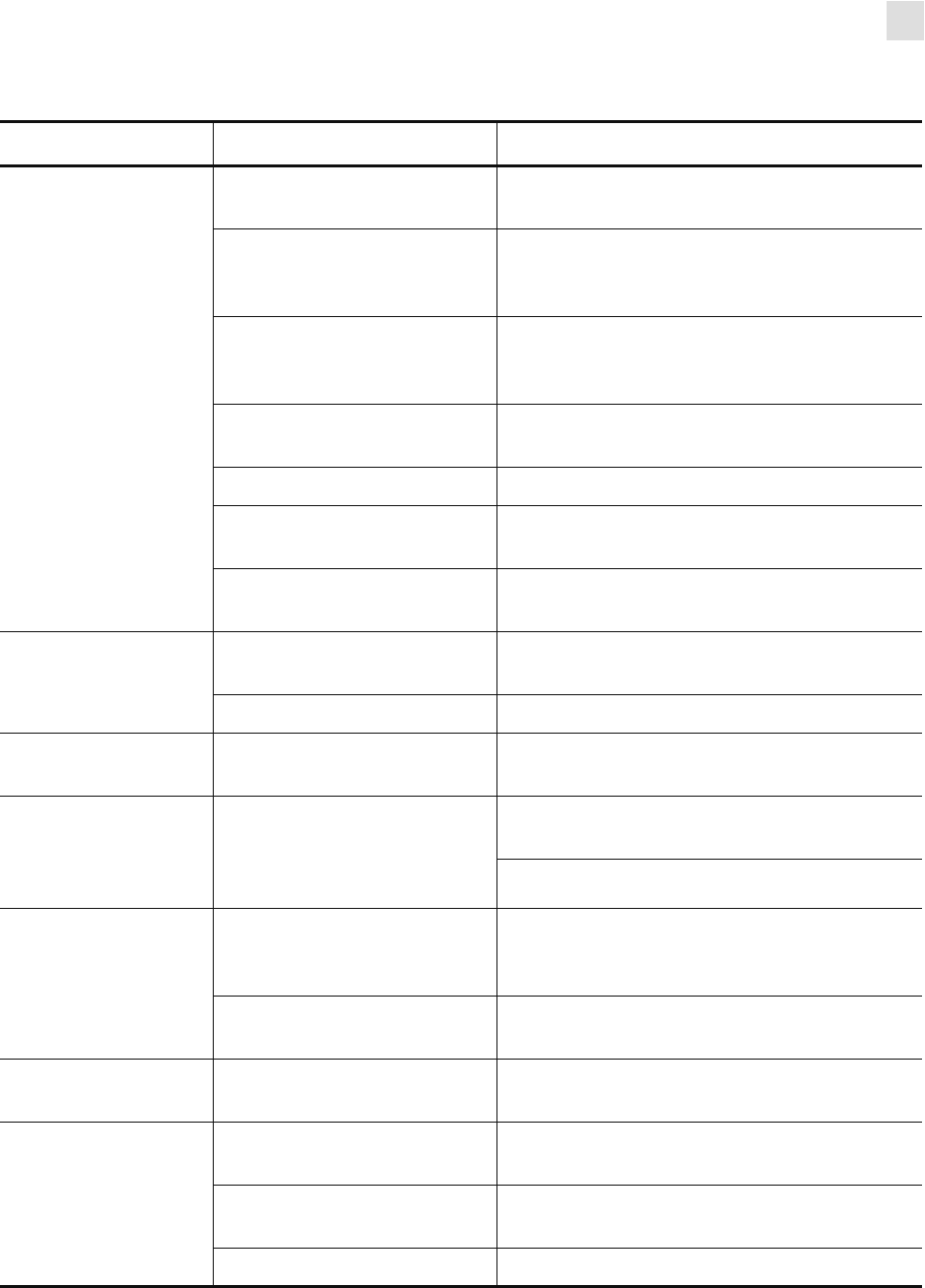
Troubleshooting
Print Quality Problems
58981L-002 Rev. 1 2/11/05 R110PAX4 User Guide 137
Wrinkled ribbon Ribbon fed through the
machine incorrectly. See Load Ribbon on page 38.
Incorrect burn temperature. Set the darkness to the lowest possible setting
for good print quality. See Adjust Print
Darkness on page 55.
Incorrect or uneven pressure. Set the pressure to the minimum needed for
good print quality. See Printhead Pressure
Adjustment on page 128.
Media not feeding properly;
“walking” from side to side. Make sure that media is snug by adjusting the
media guide, or call a service technician.
The strip plate needs adjusting. Call a service technician.
The printhead needs vertical
adjustment. Call a service technician.
The printhead and platen roller
need to be realigned. Call a service technician.
Long tracks of
missing print on
several labels
Wrinkled ribbon. See wrinkled ribbon causes and solutions in this
table.
Print element damaged. Call a service technician.
Fine, angular gray
lines on blank labels Wrinkled ribbon. See wrinkled ribbon causes and solutions in this
table.
Light printing or no
printing on the left
or right side of the
label
Printhead pressure needs
adjustment, printhead out of
alignment, or toggle in
incorrect position.
See Toggle Positioning on page 127 and
Printhead Pressure Adjustment on page 128.
Call a service technician.
Printing too light or
too dark over the
entire label
Media or ribbon is not
designed for high-speed
operation.
Replace supplies with those recommended for
high-speed operation.
Incorrect or uneven printhead
pressure. Set the pressure to the minimum needed. See
Printhead Pressure Adjustment on page 128.
Smudge marks on
labels Media or ribbon not designed
for high-speed operation. Replace supplies with those recommended for
high-speed operation.
Misregistration/skips
labels Media sensor not positioned
correctly. Perform media sensor position adjustment.
The print engine not
calibrated. Recalibrate the print engine.
Improper label format. Use correct label format.
Table 13 • Print Quality Problems (Continued)
Problem Possible Cause Recommended Solution
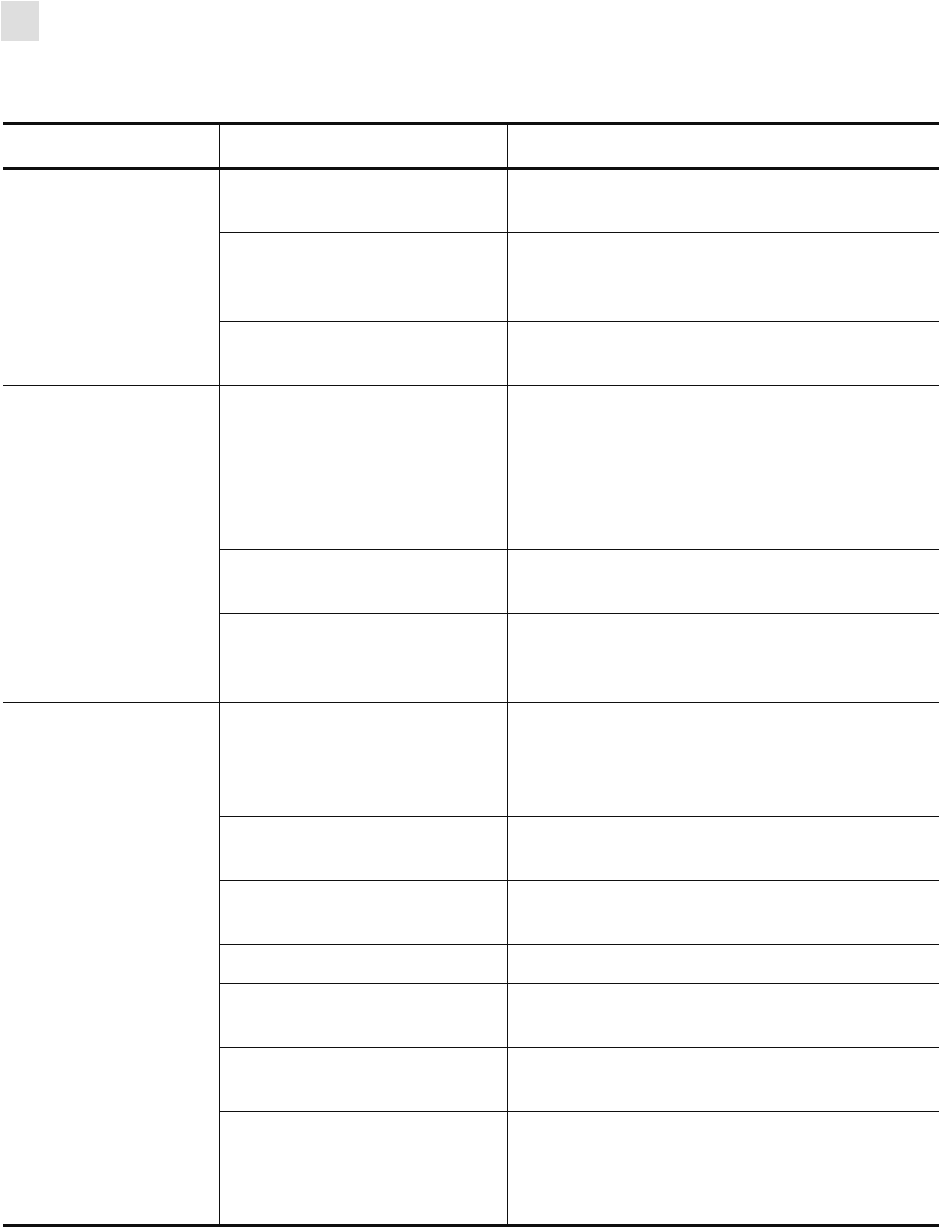
138 R110PAX4 User Guide 58981L-002 Rev. 1 2/11/05
Troubleshooting
Print Quality Problems
Misregistration and
misprint of one to
three labels
Media sensor is not positioned
correctly. Place media sensor in proper position.
The platen roller is dirty. Clean the platen roller according to the
instructions in Clean the Printhead and Platen
Roller on page 125.
Media does not meet
specifications. Use media that meets specifications.
Vertical drift in
top-of-form position A plus or minus 4 to 6 dot row
(approximately 0.5 mm)
vertical drift is acceptable due
to different tolerances of
mechanical parts and print
engine modes.
1. Calibrate print engine.
2. Adjust the label top position setting. See
Adjust Label Top Position on page 68.
The print engine is out of
calibration. Recalibrate the print engine.
The platen roller is dirty. Clean the platen roller according to the
instructions in Clean the Printhead and Platen
Roller on page 125.
Vertical image or
label drift Print engine using non-
continuous labels but
configured in continuous
mode.
Configure the print engine for non-continuous
and run calibration routine, if necessary.
Incorrectly positioned media
sensor. Ensure the media sensor is properly positioned
to read a single/consistent interlabel gap.
Improperly calibrated media
sensor. See Calibrate Media and Ribbon Sensor
Sensitivity on page 63.
The platen roller is dirty. Clean the platen roller.
Improper printhead pressure
settings (toggles). Adjust the printhead pressure to ensure proper
functionality.
Improperly loaded ribbon or
media. Verify that the ribbon and media are properly
loaded.
Incompatible media. Ensure that the interlabel gaps or notches are
2 to 4 mm and consistently placed. Media must
not exceed minimum specifications for mode of
operation.
Table 13 • Print Quality Problems (Continued)
Problem Possible Cause Recommended Solution
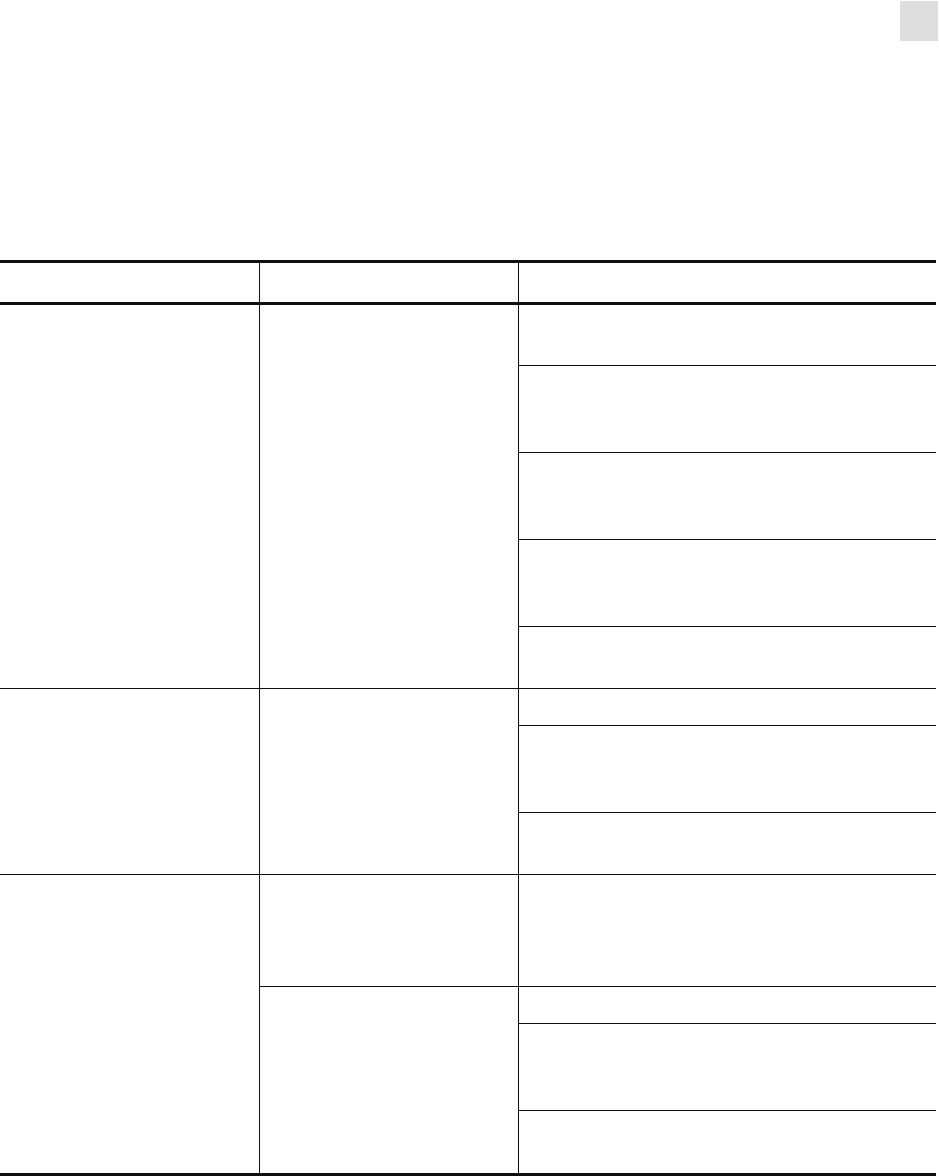
Troubleshooting
Communications Problems
58981L-002 Rev. 1 2/11/05 R110PAX4 User Guide 139
Communications Problems
Table 14 identifies problems with communications, the possible causes, and the recommended
solutions.
Table 14 • Communications Problems
Problem Possible Cause Recommended Solution
A label format was sent to
the print engine but was
not recognized. The DATA
light does not flash.
The communication
parameters are incorrect. Check the print engine driver or software
communications settings (if applicable).
If you are using serial communication, check
the serial port setting in the front panel menu.
See Set Serial Communications on page 64.
Make sure you are using the correct
communication cable. See Data Cable
Requirements on page 26 for the requirements.
Using the front panel controls, check the
protocol setting. It should be set to
NONE
. See
Set Protocol on page 65.
If a driver is used, check the driver
communication settings for your connection.
A label format was sent to
the print engine. Several
labels print, then the print
engine skips, misplaces,
misses, or distorts the
image on the label.
The serial communication
settings are incorrect. Ensure that the flow control settings match.
Check the communication cable length. See
Data Cable Requirements on page 26 for
requirements.
Check the print engine driver or software
communications settings (if applicable).
A label format was sent to
the print engine but was
not recognized. The DATA
light flashes but no
printing occurs.
The prefix and delimiter
characters set in the print
engine do not match the
ones in the label format.
Verify the prefix and delimiter characters. See
Set Format Prefix Character on page 66 and
Set Delimiter Character on page 66 for the
requirements.
Incorrect data is being sent
to the print engine. Ensure that ZPL II is being used.
Check the communication settings on the
computer. Ensure that they match the print
engine settings.
If the problem continues, check the ZPL II
format for changed ^CC, ^CT, and ^CD.
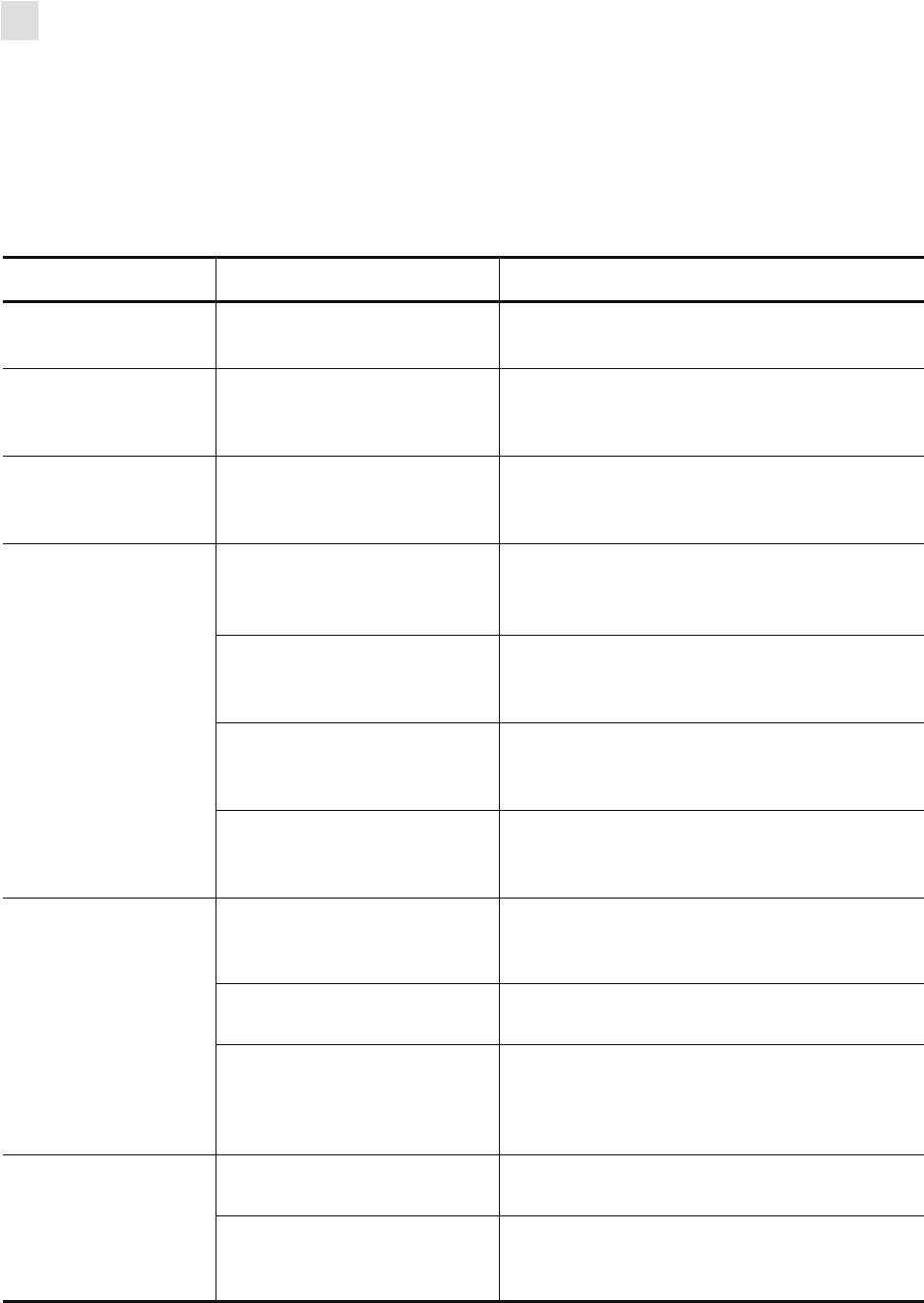
140 R110PAX4 User Guide 58981L-002 Rev. 1 2/11/05
Troubleshooting
Miscellaneous Print Engine Problems
Miscellaneous Print Engine Problems
Table 15 identifies miscellaneous problems with the print engine, the possible causes, and the
recommended solutions.
Table 15 • Miscellaneous Print Engine Problems
Problem Possible Cause Recommended Solution
Broken or melted
ribbon Darkness setting too high. 1. Reduce the darkness setting.
2. Clean the printhead thoroughly.
Ribbon tension
dancer(s) oscillate
erratically
Ribbon core is not standard
size and is slipping on the
spindle.
Replace ribbon with one that has a standard core
size.
Missing LCD
characters or parts
of characters
The LCD may need replacing. Call a service technician.
Changes in
parameter settings
did not take effect
Parameters are set incorrectly. 1. Set parameters and save permanently.
2. Turn the print engine power Off (O) and then
back On (I).
A ZPL command has turned
off the ability to change the
parameter.
Refer to the ZPL Programming Guide or call a
service technician.
A ZPL command has changed
the parameter back to the
previous setting.
Refer to the ZPL Programming Guide or call a
service technician.
If the problem continues, there
may be a problem with the
main logic board.
Call a service technician.
The print engine fails
to calibrate or detect
the top of the label
The print engine was not
calibrated for the label being
used.
Perform the calibration procedure in Calibrate
Media and Ribbon Sensor Sensitivity on page 63.
The print engine is configured
for continuous media. Set the media type to non-continuous media. See
Set Media Type on page 56.
The driver or software
configuration is not set
correctly.
Driver or software settings produce ZPL
commands that can overwrite the print engine
configuration. Check the driver or software
media-related setting.
Non-continuous
labels being treated
as continuous labels
The print engine is configured
for continuous media. Set the media type to non-continuous media. See
Set Media Type on page 56.
The print engine was not
calibrated for the label being
used.
Perform the calibration procedure in Calibrate
Media and Ribbon Sensor Sensitivity on page 63.
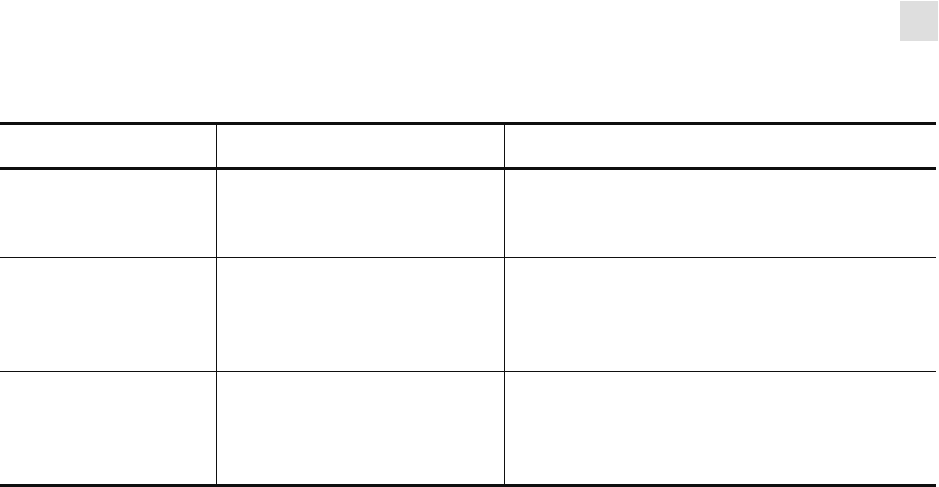
Troubleshooting
Miscellaneous Print Engine Problems
58981L-002 Rev. 1 2/11/05 R110PAX4 User Guide 141
Ribbon light is on
even though ribbon
is loaded correctly
The print engine was not
calibrated for the label being
used.
Perform the calibration procedure in Calibrate
Media and Ribbon Sensor Sensitivity on page 63.
All lights on, but
nothing displays on
the LCD, and the
print engine locks up
Internal electronic or firmware
failure. Call a service technician.
The print engine
locks up while
running the
Power-On Self Test
Main Logic Board failure. Call a service technician.
Table 15 • Miscellaneous Print Engine Problems (Continued)
Problem Possible Cause Recommended Solution
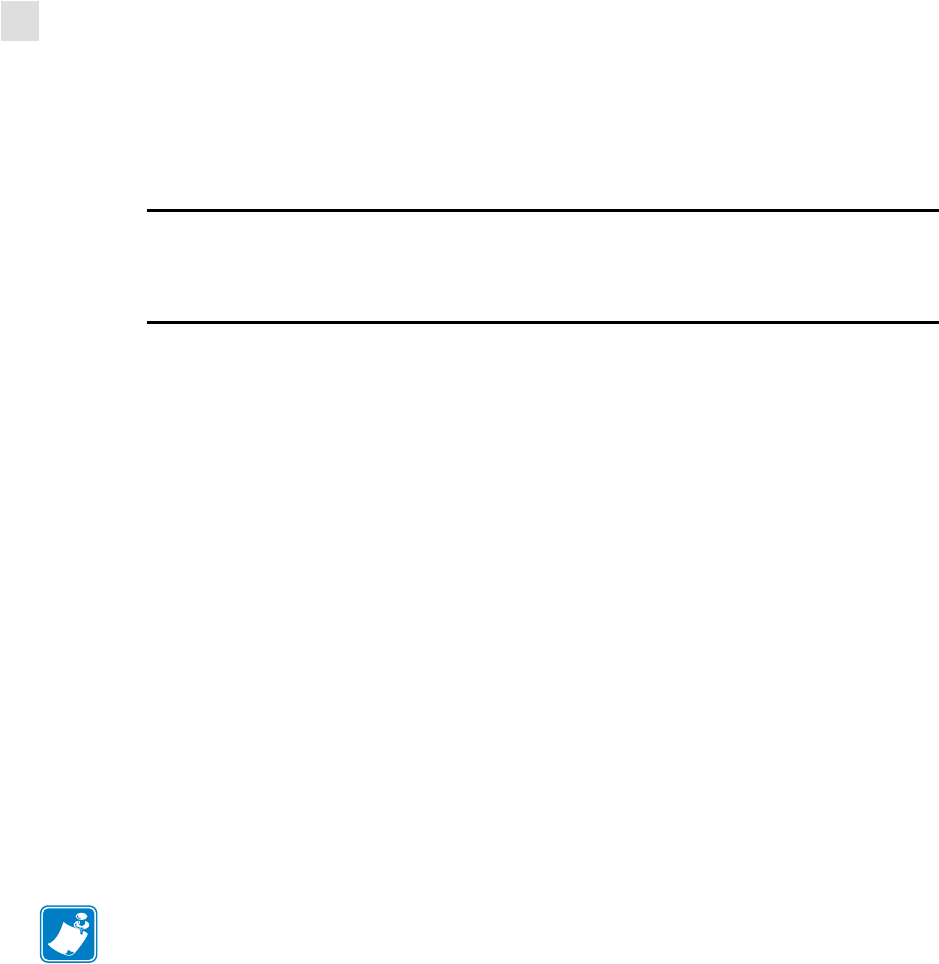
142 R110PAX4 User Guide 58981L-002 Rev. 1 2/11/05
Troubleshooting
Print Engine Diagnostics
Print Engine Diagnostics
Self tests and other diagnostics provide specific information about the condition of the print
engine. The most commonly used are the Power-On and the CANCEL self tests.
Power-On Self Test
A Power-On Self Test (POST) is performed each time the print engine is turned On (I). During
this test, the front panel lights (LEDs) turn on and off to ensure proper operation. At the end of
this self test, only the POWER LED remains lit. When the Power-On Self Test is complete, the
media is advanced to the proper position.
To initiate the Power-On Self Test, turn On (I) the print engine using the power switch on the
control panel. The POWER LED illuminates. The other control panel LEDs and the LCD
monitor the progress and indicate the results of the individual tests. All messages during the
POST display in English; however, if the test fails, the resulting messages cycle through the
international languages as well.
Additional Print Engine Self Tests
These self tests produce sample printouts and provide specific information that helps
determine the operating conditions for the print engine.
Each self test is enabled by pressing a specific front panel key or combination of keys while
turning the power On (I). Keep the key(s) pressed until the first indicator light turns off. The
selected self test automatically starts at the end of the Power-On Self Test.
Caution • Full width media should be used when performing self tests. If your media is not
wide enough, the test labels may print on the platen roller and damage it. To prevent this
from happening, check the print width using Set Print Width on page 57, and ensure that
the width is correct for the media that you are using.
Note •
• When performing these self tests, do not send data to the print engine from the host.
• If your media is shorter than the label to be printed, the test label continues on the next label.
• When canceling a self test prior to its actual completion, always reset the print engine by
turning the print engine power Off (O) and then back On (I).
• If the print engine is in applicator mode and the liner is being taken up by the applicator, the
operator must manually remove the labels as they become available.
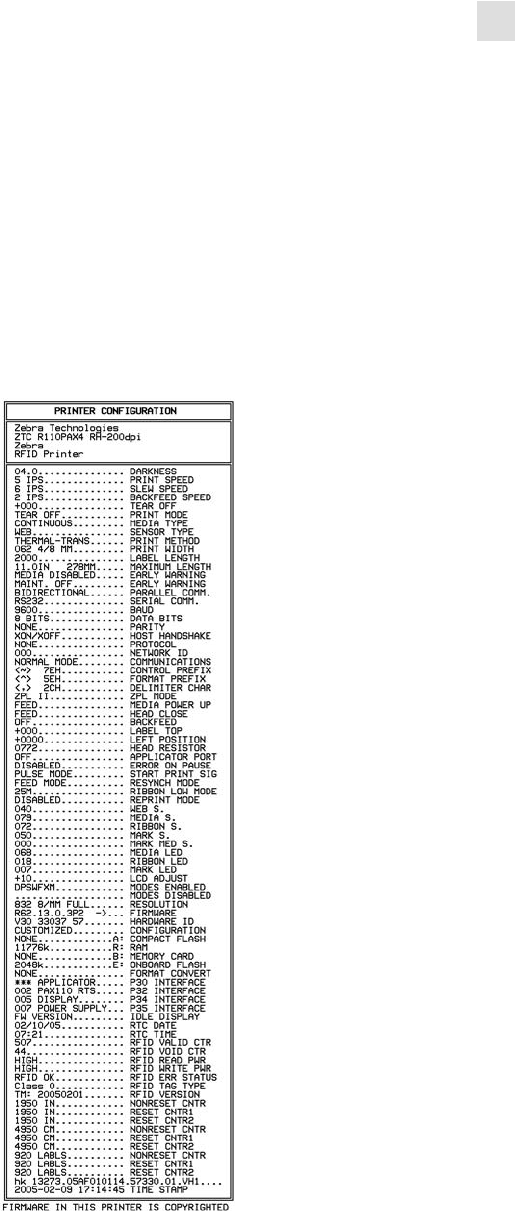
Troubleshooting
Print Engine Diagnostics
58981L-002 Rev. 1 2/11/05 R110PAX4 User Guide 143
CANCEL Self Test
The CANCEL self test prints a configuration label (Figure 51).
To perform the CANCEL Self Test, complete these steps:
1. Turn Off (O) the print engine.
2. Press and hold CANCEL while turning the power On (I). Hold CANCEL until the first
front panel light turns off.
A print engine configuration label prints (Figure 51).
Figure 51 • Configuration Label
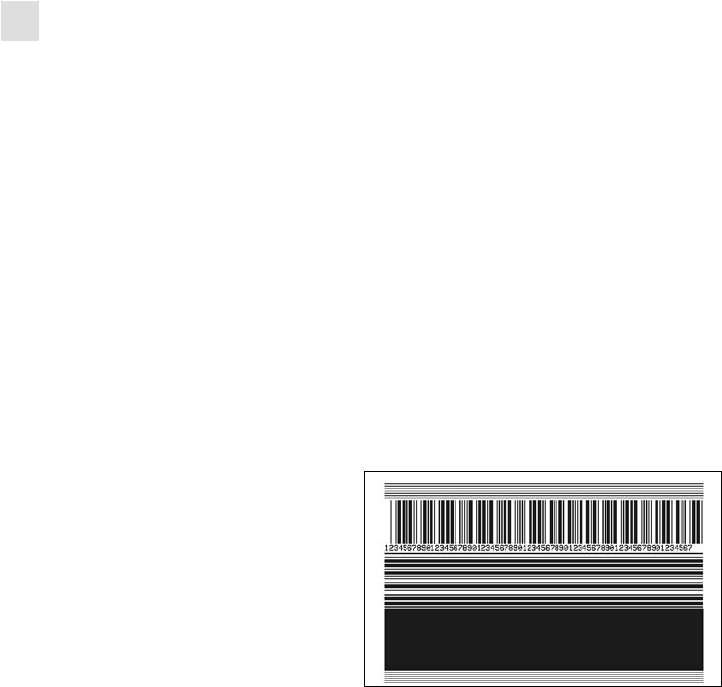
144 R110PAX4 User Guide 58981L-002 Rev. 1 2/11/05
Troubleshooting
Print Engine Diagnostics
PAUSE Self Test
This self test can be used to provide the test labels required when making adjustments to the
print engine’s mechanical assemblies. Figure 52 shows a sample printout.
To perform a PAUSE self test, complete these steps:
1. Turn Off (O) the print engine.
2. Press and hold PAUSE while turning the power On (I). Hold PAUSE until the DATA light
turns off.
• The initial self test prints 15 labels at the print engine’s slowest speed, and then
automatically pauses the print engine. Each time PAUSE is pressed, an additional 15
labels print. Figure 52 shows a sample of the labels.
Figure 52 • PAUSE Test Label
• While the print engine is paused, pressing CANCEL alters the self test. Each time
PAUSE is pressed, 15 labels print at 6 in. (152 mm) per second.
• While the print engine is paused, pressing CANCEL again alters the self test a second
time. Each time PAUSE is pressed, 50 labels print at the print engine’s slowest speed
• While the print engine is paused, pressing CANCEL again alters the self test a third
time. Each time PAUSE is pressed, 50 labels print at 6 in. (152 mm) per second.
• While the print engine is paused, pressing CANCEL again alters the self test a fourth
time. Each time PAUSE is pressed, 15 labels print at the print engine’s maximum
speed.
• To exit this self test at any time, press and hold CANCEL.
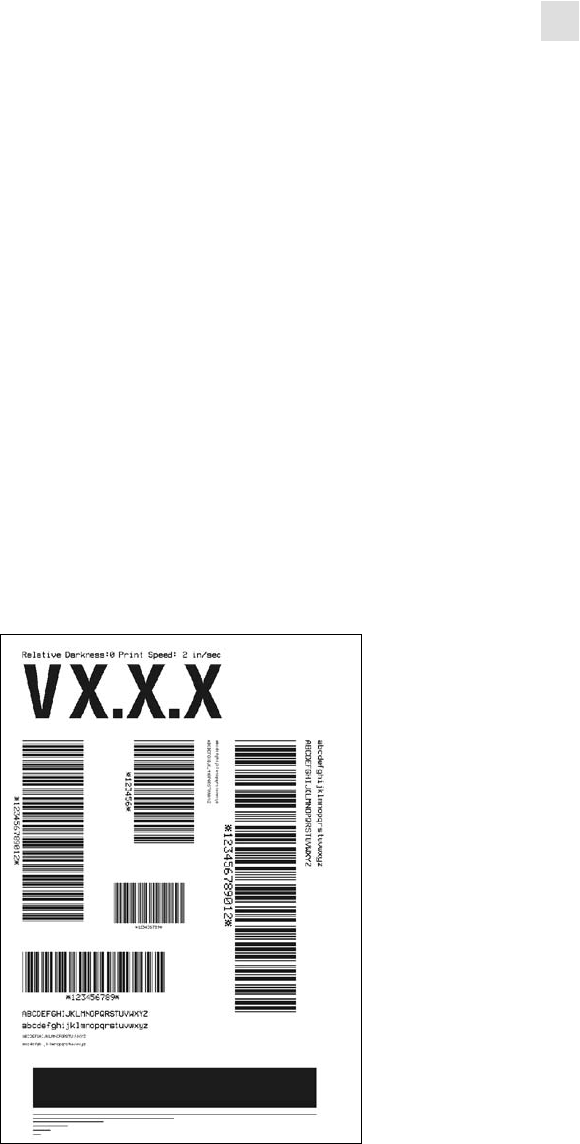
Troubleshooting
Print Engine Diagnostics
58981L-002 Rev. 1 2/11/05 R110PAX4 User Guide 145
FEED Self Test
The labels printed during this print quality test depend on the dot density of the printhead.
• 300 dpi print engines: 7 labels are printed at the 2 ips and 8 ips print speeds.
• 203 dpi print engines: 7 labels are printed at the 2 ips and 12 ips print speeds.
Each label is printed at a different darkness setting, starting at three settings below the
currently configured value and increasing until it is three settings darker than the configured
value. The relative darkness and speed are printed on each label. The bar codes on these labels
can be ANSI-graded to check print quality.
To perform a FEED self test, complete these steps:
1. Print a configuration label to show the print engine’s current settings.
2. Turn Off (O) the print engine.
3. Press and hold FEED while turning the power On (I). Hold FEED until the DATA light
turns off.
The print engine prints a series of labels (Figure 53) at various speeds and at darkness
settings higher and lower than the darkness value shown on the configuration label.
Figure 53 • FEED Test Label
4. Inspect the labels and determine which one has the best print quality for your application.
The darkness value printed on that label is added to (plus) or subtracted from (minus) the
darkness value specified on the configuration label. The resulting numeric value (0 to 30)
is the best darkness value for that specific label/ribbon combination and print speed.
5. Enter the corresponding darkness and print speed values into the print engine through the
front panel.
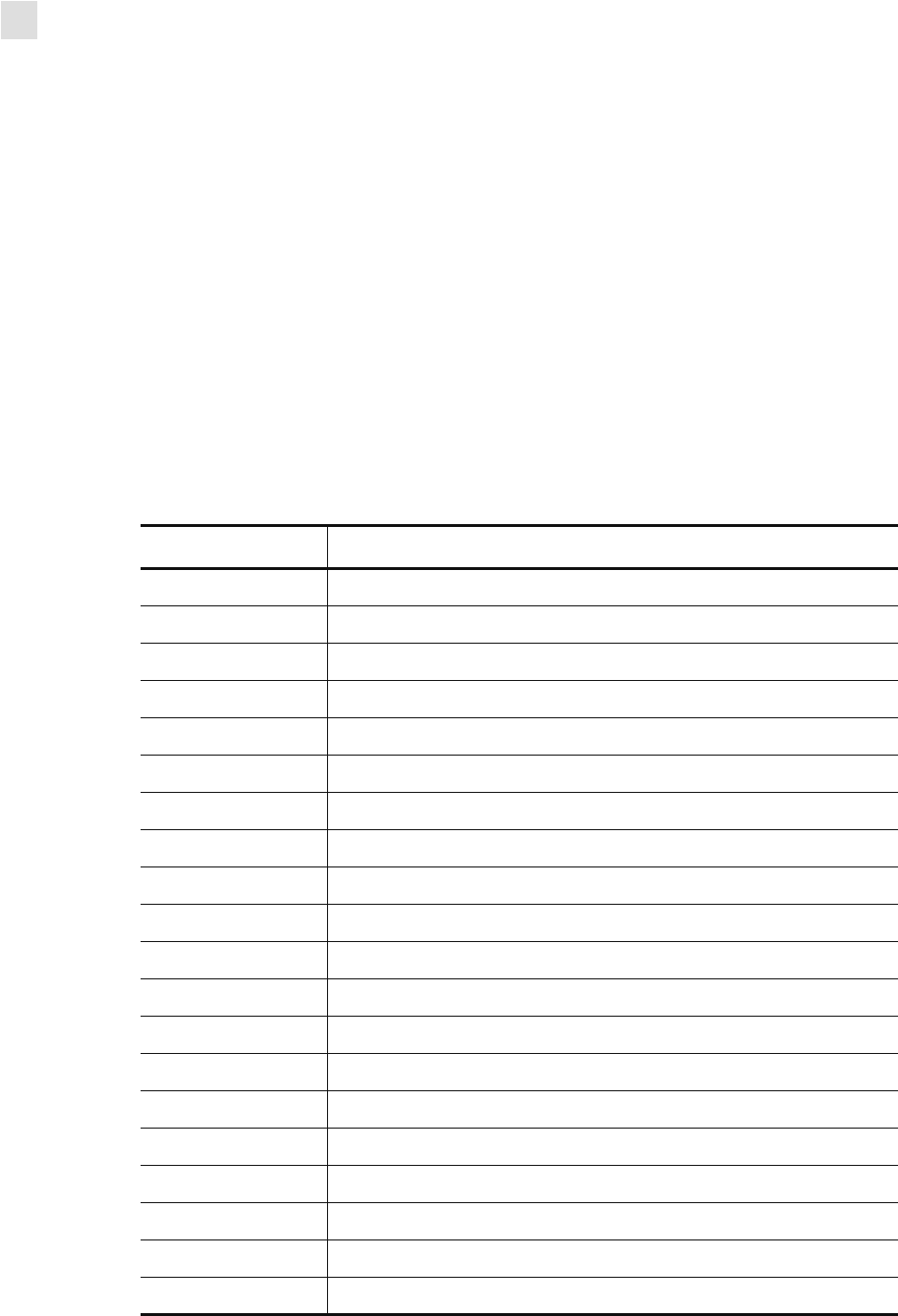
146 R110PAX4 User Guide 58981L-002 Rev. 1 2/11/05
Troubleshooting
Print Engine Diagnostics
FEED and PAUSE Self Test
Performing this self test temporarily resets the print engine configuration to the factory default
values. These values are active only until power is turned off unless you save them
permanently in memory. If the factory default values are permanently saved, a media
calibration procedure must be performed. You must also reset the head resistance value and the
verifier and applicator port settings to their required values.
To perform a FEED and PAUSE self test, complete these steps:
1. Turn Off (O) the print engine.
2. Press and hold FEED and PAUSE while turning the power On (I). Hold FEED and
PAUSE until the DATA light turns off.
No labels print at the end of this test.
Table 16 indicates which print engine function controls each of the configuration parameters:
Table 16 • Control of Print Engine Parameters
Parameter Controlled By
Darkness Configuration, ZPL
Tear Off Configuration, ZPL
Print Mode Configuration, ZPL
Media Type Calibration, Configuration, ZPL
Sensor Type Configuration, ZPL
Print Method Calibration, Configuration, ZPL
Print Width Configuration, ZPL
Label Length Calibration, Configuration, ZPL
Maximum Length Configuration and Memory Size
Host Port Configuration
Baud Configuration, ZPL
Data Bits Configuration, ZPL
Parity Configuration, ZPL
Stop Bits Configuration, ZPL
Host Handshake Configuration, ZPL
Protocol Configuration, ZPL
Network ID Configuration, ZPL
Communications Configuration, ZPL
Control Prefix Configuration, ZPL
Format Prefix Configuration, ZPL
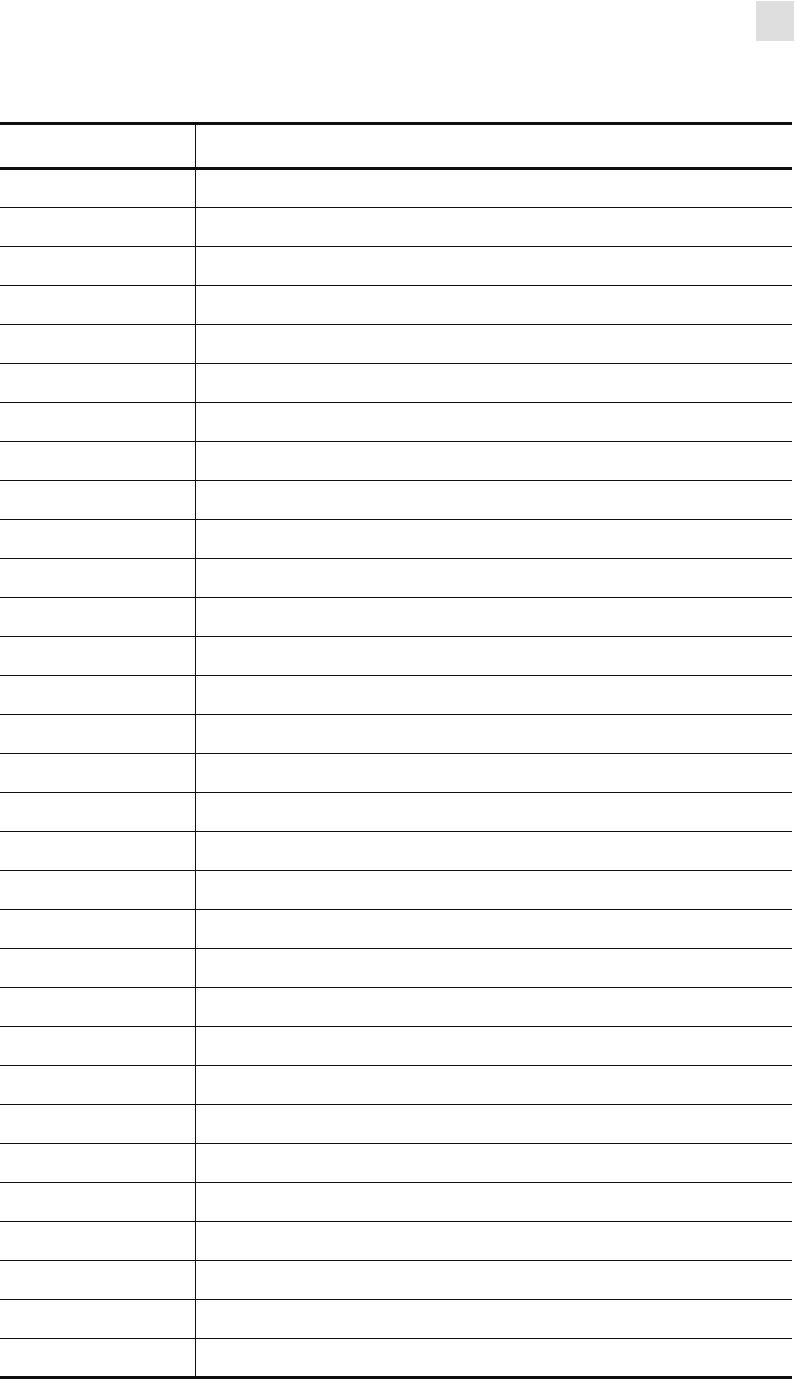
Troubleshooting
Print Engine Diagnostics
58981L-002 Rev. 1 2/11/05 R110PAX4 User Guide 147
Delimiter Character Configuration, ZPL
ZPL Mode Configuration, ZPL
Media Power Up Configuration, ZPL
Head Close Configuration, ZPL
Backfeed Configuration, ZPL
Label Top Configuration, ZPL
Left Position Configuration, ZPL
Head Resistance Configuration (must match head resistance label value), ZPL
Verifier Port Configuration, ZPL
Applicator Port Configuration, ZPL
Start Print Signal Configuration, ZPL
Resynch Mode Configuration, ZPL
Ribbon Low Mode Configuration, ZPL
Reprint Mode Configuration, ZPL
Web Sensor Configuration, ZPL
Media Sensor Configuration, ZPL
Ribbon Sensor Configuration, ZPL
Mark Sensor Configuration, ZPL
Mark Media Sensor Configuration, ZPL
Media LED Configuration, ZPL
Ribbon LED Configuration, ZPL
Mark LED Configuration, ZPL
LCD Adjust Configuration
Modes Enabled ZPL
Modes Disabled ZPL
Resolution Fixed (head type switch)
Socket 1 ID Fixed
Firmware Fixed (code EPROMS)
Configuration Configuration
B:Memory Fixed (option card)
J12 Interface Fixed
Table 16 • Control of Print Engine Parameters (Continued)
Parameter Controlled By
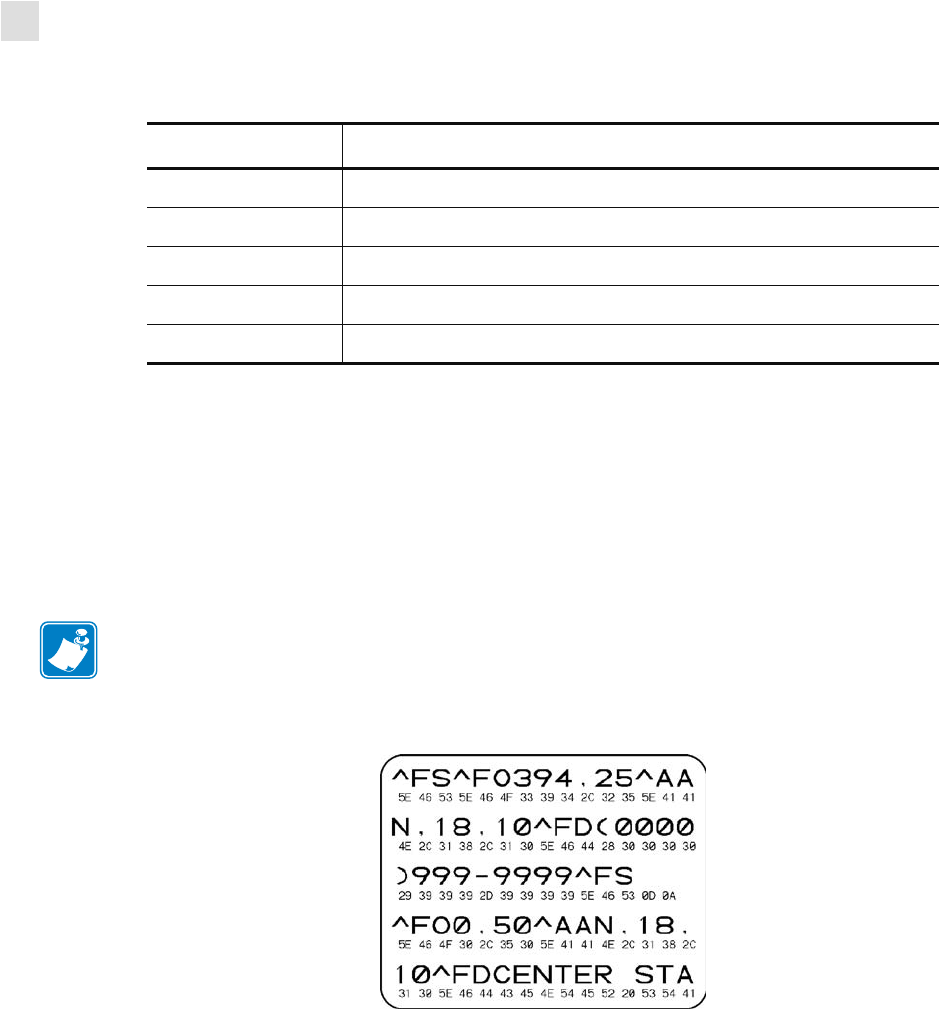
148 R110PAX4 User Guide 58981L-002 Rev. 1 2/11/05
Troubleshooting
Print Engine Diagnostics
Communications Diagnostics Test
Do not perform the following test until all configuration and calibration parameters have been
set. For configuration information, see Front Panel LCD on page 55.
This test is controlled from the front panel display. See Set Communications Mode on page 65.
Figure 54 shows a typical printout from this test. Turn off the power to exit this self test and
return to normal operation.
Figure 54 • Communications Diagnostics Test Label
J11 Interface Fixed
J10 Interface Fixed
J9 Interface Fixed
J8 Interface Fixed
J7 Interface Fixed
Table 16 • Control of Print Engine Parameters (Continued)
Parameter Controlled By
Note • The communications test label prints upside-down.
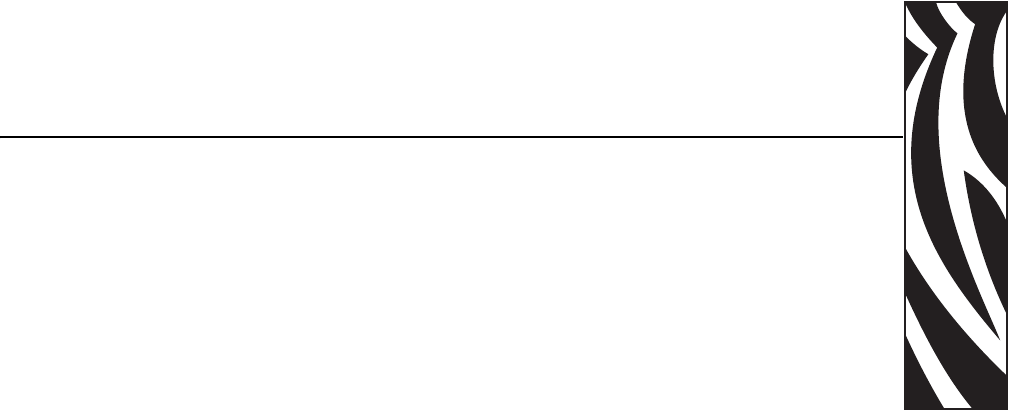
58981L-002 Rev. 1 2/11/05 R110PAX4 User Guide 149
A
Print Engine Specifications
This appendix provides the features of and specifications for the print engine.
Contents
General Specifications . . . . . . . . . . . . . . . . . . . . . . . . . . . . . . . . . . . . . . . . . . . . . . . . . . 150
Physical . . . . . . . . . . . . . . . . . . . . . . . . . . . . . . . . . . . . . . . . . . . . . . . . . . . . . . . . . . . 150
Environmental Conditions . . . . . . . . . . . . . . . . . . . . . . . . . . . . . . . . . . . . . . . . . . . . . 150
Agency Approvals . . . . . . . . . . . . . . . . . . . . . . . . . . . . . . . . . . . . . . . . . . . . . . . . . . . 150
Electrical Specifications . . . . . . . . . . . . . . . . . . . . . . . . . . . . . . . . . . . . . . . . . . . . . . . 151
Communications Specifications . . . . . . . . . . . . . . . . . . . . . . . . . . . . . . . . . . . . . . . . . 151
Memory . . . . . . . . . . . . . . . . . . . . . . . . . . . . . . . . . . . . . . . . . . . . . . . . . . . . . . . . . . . 151
Zebra Programming Language (ZPL II). . . . . . . . . . . . . . . . . . . . . . . . . . . . . . . . . . . 152
Bar Codes . . . . . . . . . . . . . . . . . . . . . . . . . . . . . . . . . . . . . . . . . . . . . . . . . . . . . . . . . 152
Printing Specifications . . . . . . . . . . . . . . . . . . . . . . . . . . . . . . . . . . . . . . . . . . . . . . . . . . 153
Media Specifications . . . . . . . . . . . . . . . . . . . . . . . . . . . . . . . . . . . . . . . . . . . . . . . . . . . 154
Ribbon Specifications. . . . . . . . . . . . . . . . . . . . . . . . . . . . . . . . . . . . . . . . . . . . . . . . . . . 155
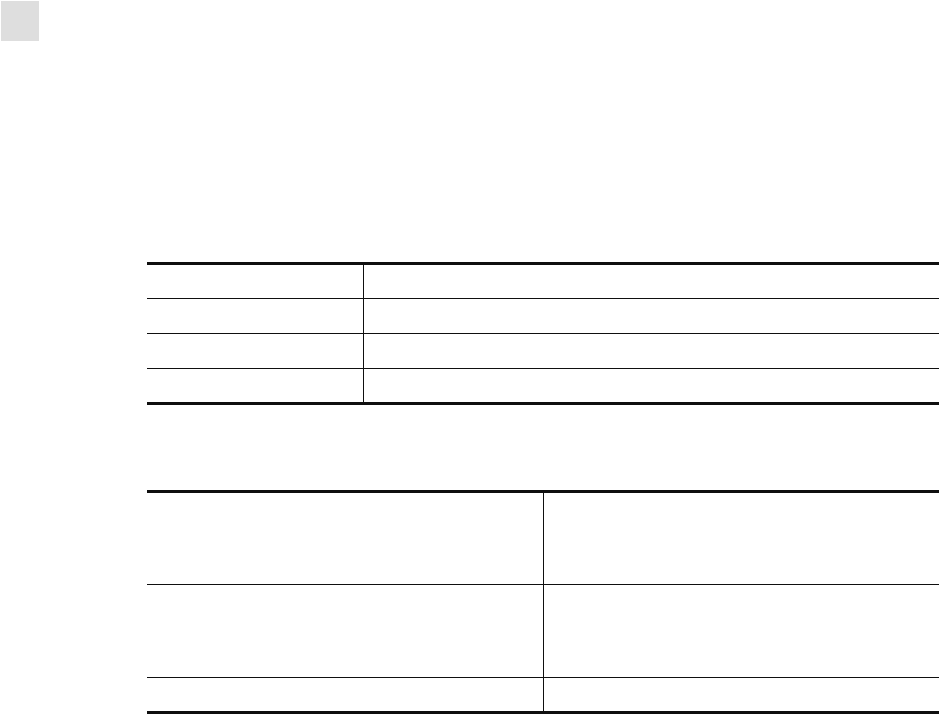
150 R110PAX4 User Guide 58981L-002 Rev. 1 2/11/05
Print Engine Specifications
General Specifications
General Specifications
Physical
For installation information, refer to Print Engine Installation on page 16.
Environmental Conditions
Agency Approvals
• IEC 60950-1
• FCC Part 15.107 and 15.109 Class A
• FCC Part 15.247 (UHF applications)
• Canadian ICES-003, Class A
•IC RSS-210
Height 11.8 in. (300 mm)
Width 9.6 in. (245 mm)
Depth 16.4 in. (417 mm)
Weight 36 lb (16.3 kg)
Operating Temperature
Thermal transfer
Direct thermal
41° F to 104° F (5° C to 40° C)
32° F to 104° F (0° C to 40° C)
Non-Condensing Relative Humidity
Operation
Storage
20% to 95%
5% to 95%
Storage Temperature –40° F to 160° F (–40° C to 71° C)
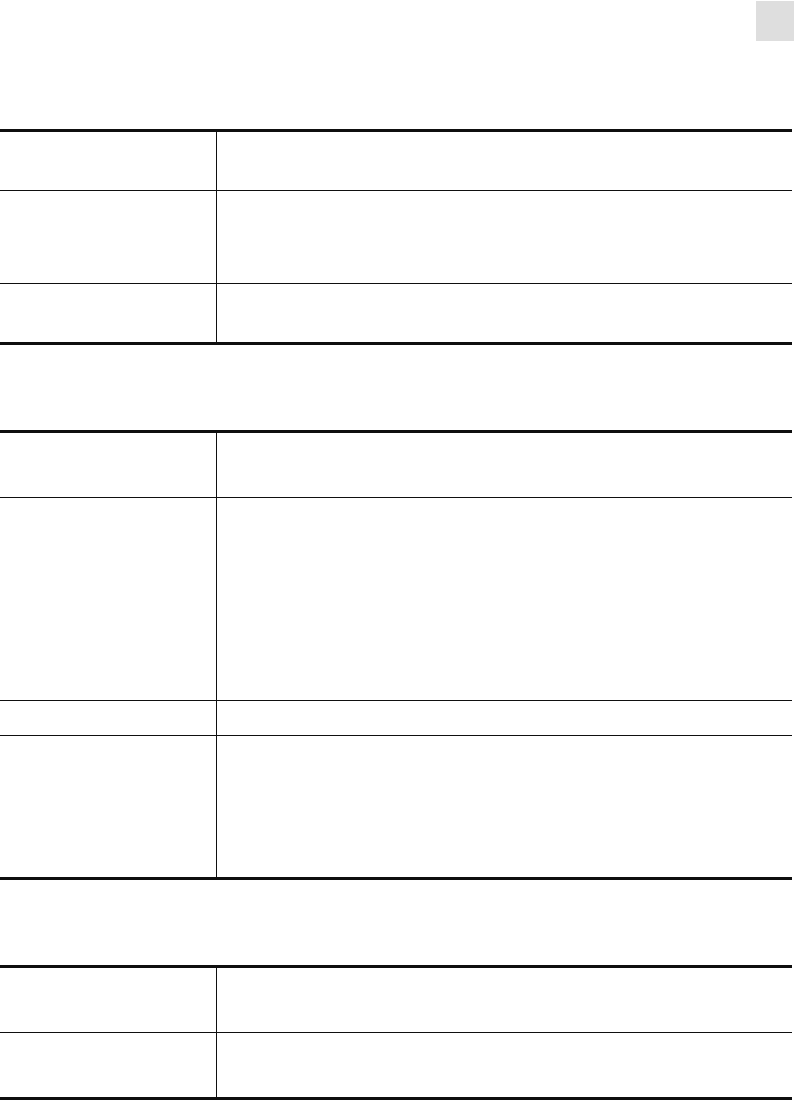
Print Engine Specifications
General Specifications
58981L-002 Rev. 1 2/11/05 R110PAX4 User Guide 151
Electrical Specifications
Communications Specifications
Memory
Power Supply Universal Power Supply with power-factor correcting
90–264 VAC, 48–62 Hz
Power Consumption
Idle
Printing
19 W
375 W (maximum)
Fuses 5 Amp, 250 VAC, 5 × 20 mm IEC style, as supplied with the print
engine
Parallel • Bi-directional high-speed (36-pin connector)
• IEEE 1284-compliant software protocol (standard)
Serial • Serial RS-232C with DTR hardware handshake via DB-9
connector (standard)
• Serial RS-422/485 via 2- or 4-wire with XON/XOFF
handshake on alternate pins of DB-9 connector (standard)
• Configurable baud rates from 110 to 57.6K baud with 7 or
8 data bits, standard parity, 1 or 2 stop bits
• Fused +5V @ 750 mA supplied at pin 9 of the DB-9 connector
Network Connections • ZebraNet 10/100 PrintServer
Applicator Interface
with DC15F
Connector
North America
Europe
5V I/O port
24-28V I/O port
Standard •10.0 MB RAM
•2.0 MB Flash
Flash Options • Up to 256 MB CompactFlash
• 32 MB PC memory card
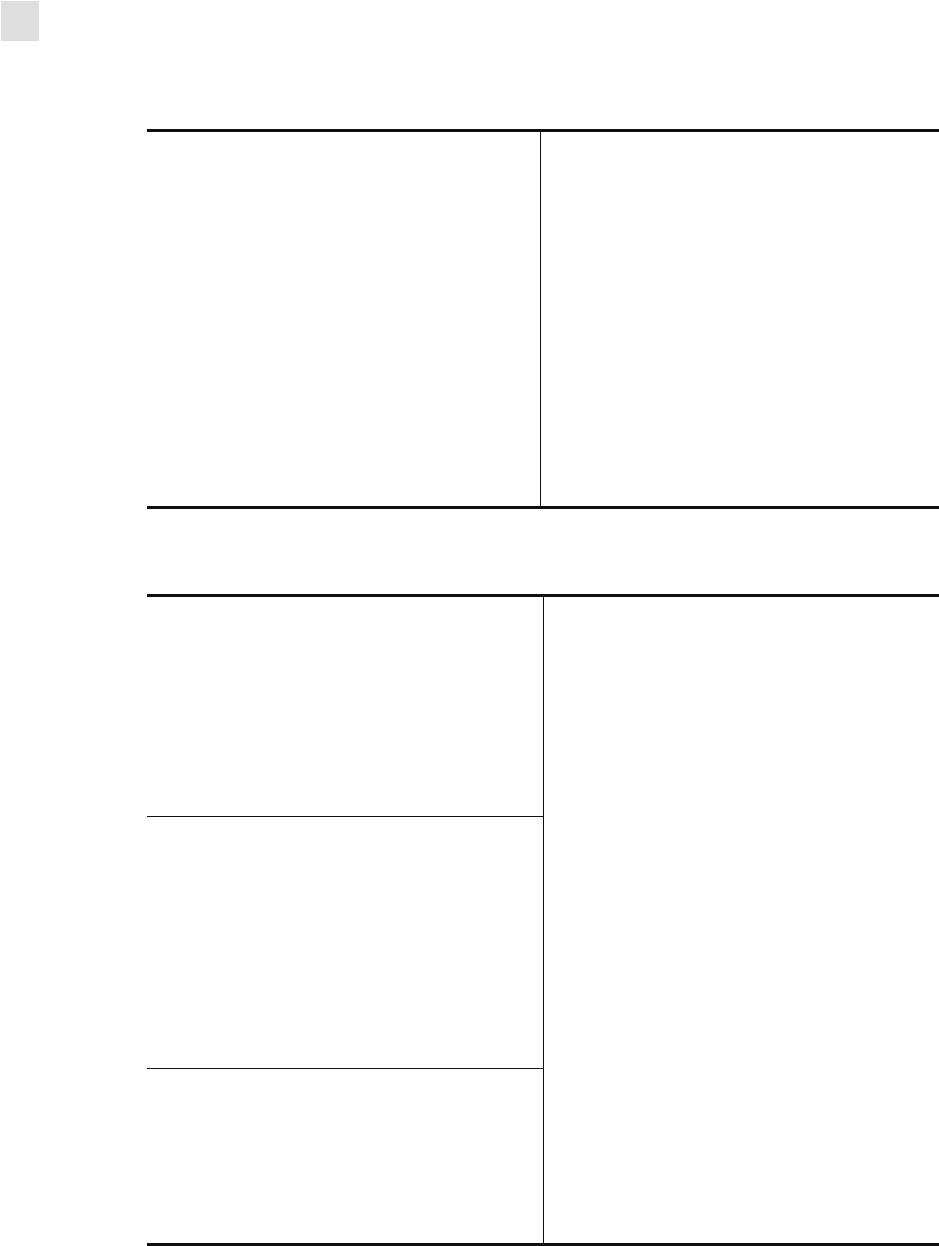
152 R110PAX4 User Guide 58981L-002 Rev. 1 2/11/05
Print Engine Specifications
General Specifications
Zebra Programming Language (ZPL II)
Bar Codes
• Communicates in printable ASCII
characters
• Controlled via mainframe, mini, or PC
• Downloadable graphics, scalable and
bitmap fonts, label templates and formats
• Object copying between memory areas
(RAM and PC memory card)
• Adjustable print cache
• Data compression
• Automatic memory allocation for
“format while printing”
• Bit image data transfer and printing,
mixed text/graphics
• Status messages to host upon request
• Format inversion (white on black)
• Mirror image printing
• Four-position field rotation
(normal/0°, 90°, 180°, and 270°)
• Slew command
• Programmable label quantities with print
and pause control
• Automatic serialization of fields
• User-programmable password
• Portable Data Terminal
• In-spec OCR-A and OCR-B
Bar code modulus “X” dimensions
• Picket fence (non-rotated) orientation:
• 203 dpi = 0.0049 in. mil to 0.049 in.
• 300 dpi = 0.0033 in. mil to 0.033 in.
• Ladder (rotated) orientation:
• 203 dpi = 0.0049 in. mil to 0.049 in.
• 300 dpi = 0.0039 in. mil to 0.039 in.
Linear bar codes
•Code 11
•Code 39
•Code 93
• Code 128 with subsets A/B C and
UCC Case Codes
•ISBT-128
•UPC-A
•UPC-E
•EAN-8
•EAN-13
• UPC and EAN 2 or 5 digit extensions
• Plessey
•Postnet
• Standard 2 of 5
• Industrial 2 of 5
• Interleaved 2 of 5
•LOGMARS
•MSI
•Codabar
• RSS-14
Two-dimensional bar codes
• Code 49
•Maxi Code
•PDF-417
•QR Code
•Codablock
• DataMatrix
•Micro-PDF417
Bar code ratios
•2:1
•7:3
•5:2
•3:1
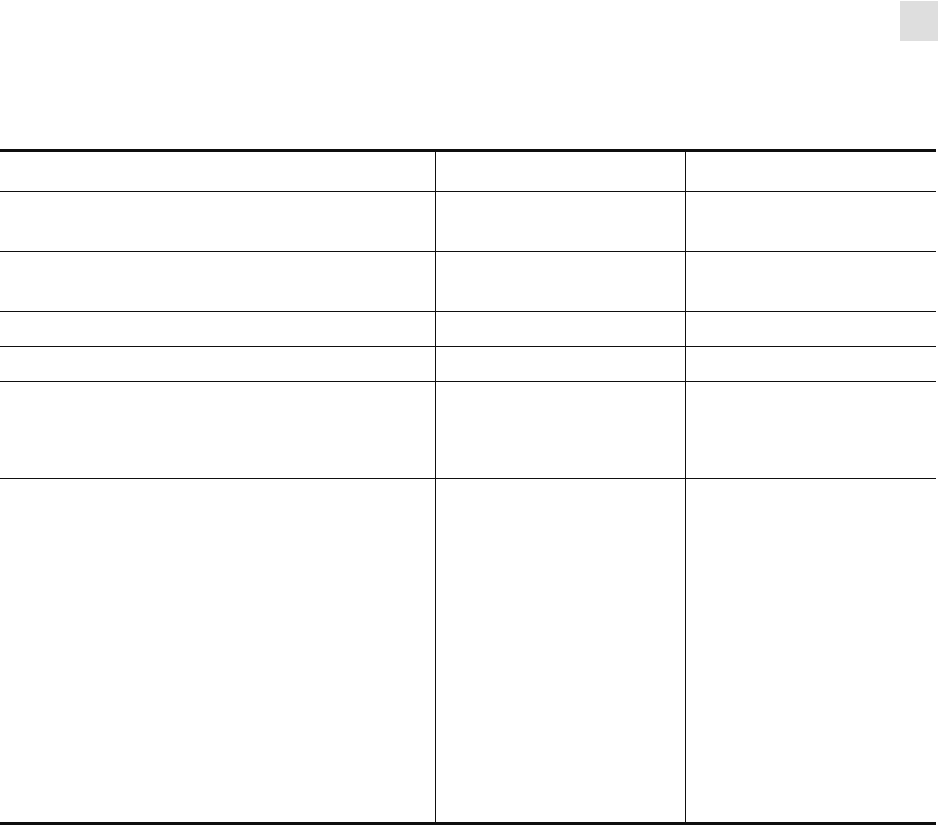
Print Engine Specifications
Printing Specifications
58981L-002 Rev. 1 2/11/05 R110PAX4 User Guide 153
Printing Specifications
Specification R112PAX4R113PAX4
Resolution 203 dots per inch
(8 dots per mm) 300 dots per inch
(12 dots per mm)
Dot size 0.0049 in. x 0.0049 in.
(0.125 mm x 0.125 mm) 0.0033 in. x 0.0039 in.
(0.084 mm x 0.100 mm)
First dot location (from inside media edge) 0.093 in. (2.4 mm) 0.093 in. (2.4 mm)
Maximum print width 4.1 in. (104 mm) 4.2 in. (106 mm)
Maximum print length (with full width media)
Non-continuous
Continuous (10 MB memory)
39 in. (990 mm)
150 in. (3810 mm)
39 in. (990 mm)
100 in. (2540 mm)
Programmable constant printing speeds
(per second) 2.4 in. (61 mm)
3in.(76mm)
4 in. (102 mm)
5 in. (127 mm)
6 in. (152 mm)
7 in. (178 mm)
8 in. (203 mm)
9 in. (229 mm)
10 in. (254 mm)
11 in. (279 mm)
12 in. (305 mm)
2.9 in. (74 mm)
3 in. (76 mm)
4 in. (102 mm)
5 in. (127 mm)
6 in. (152 mm)
7 in. (178 mm)
8 in. (203 mm)
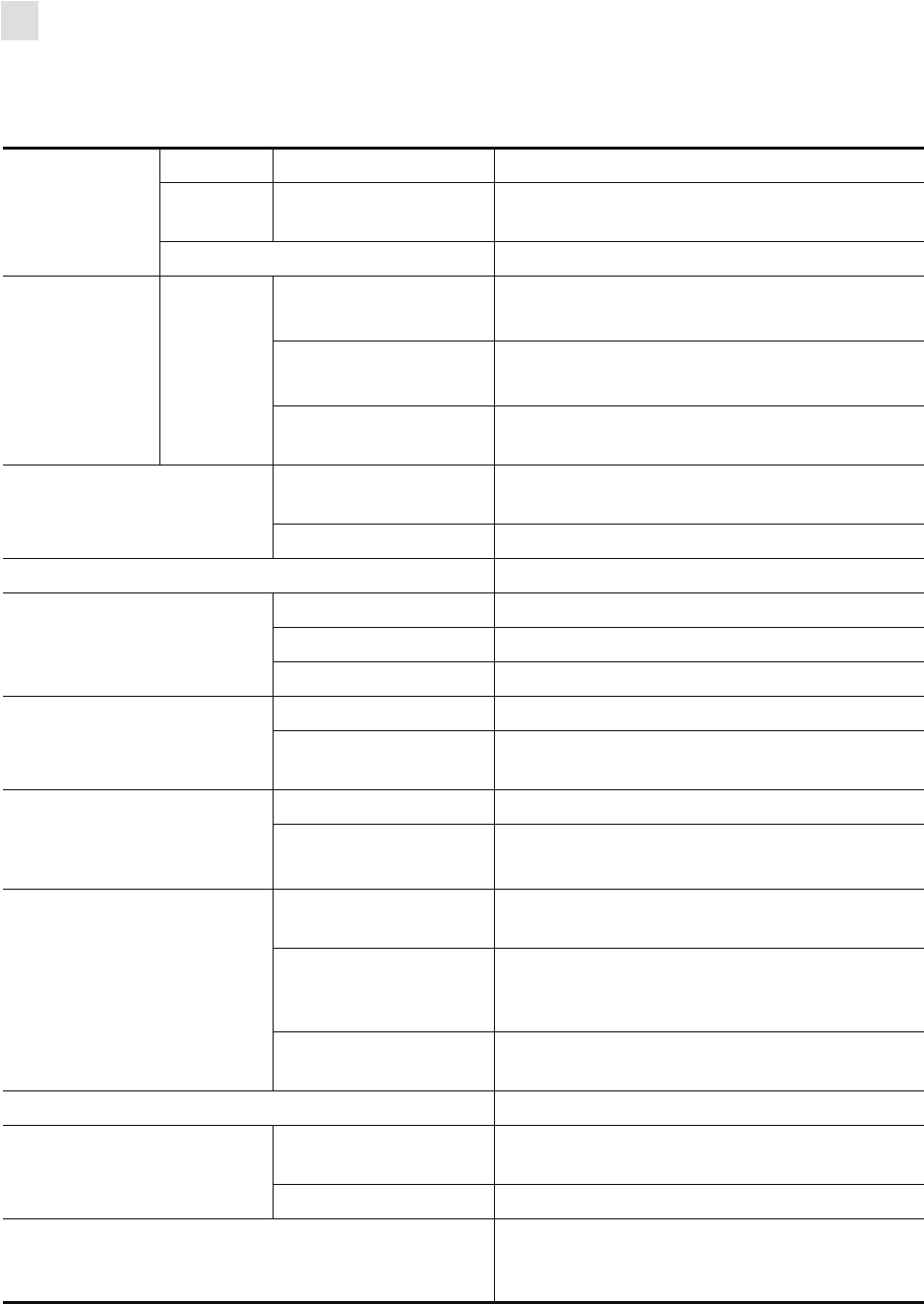
154 R110PAX4 User Guide 58981L-002 Rev. 1 2/11/05
Print Engine Specifications
Media Specifications
Media Specifications
Media width
(label and liner) Minimum Non-RFID 0.625 in. (16 mm)
RFID “smart” labels Minimum label widths for RFID “smart” labels
varies for each transponder type.
Maximum 4.5 in. (114 mm)
Label length Minimum Non-RFID, applicator
mode 0.5 in. (12.7 mm) with backfeed on
0.25 in. (6 mm) with backfeed off
Non-RFID, tear-off
mode 0.5 in. (12.7 mm) with backfeed on
0.25 in. (6 mm) with backfeed off
RFID “Smart” labels Minimum label length for RFID “smart” labels
varies for each transponder type.
Registration tolerance
(not including label/liner
position tolerances)
Verti ca l
(concurrent labels) ±0.040 in. (±1.0 mm)
(in Applicator mode)
Horizontal ±0.040 in. (±1.0 mm)
Total thickness (including liner) 0.0058 in. to 0.010 in. (0.148 mm to 0.256 mm)
Interlabel Gap
(Transmissive Sensor) Minimum 0.079 in. (2 mm)
Preferred 0.118 in. (3 mm)
Maximum 0.157 in. (4 mm)
Notch Size (W x L) 0.25 in. x 0.12 in. (6 mm x 3 mm)
Position On inside edge, <0.8 in (<20 mm) from leading
edge of media
Hole Minimum 0.125 in. (3.2 mm)
Position 0.25 to 3.0 in. (6.3 to 76.2 mm) from inside edge
<0.8 in. (<20 mm) from leading edge of media
Black Mark
(Reflective Sensor) Vertical length (parallel
to inside media edge) 0.12 in. to 0.43 in. (3 mm to 11 mm)
Horizontal width
(perpendicular to inside
media edge)
≥0.43 in. (≥ 11 mm)
Position Within 0.04 in. (1 mm) of the inside edge and
<0.8 in (20 mm) from leading edge of media
Print Line to Peel Bar Distance 0.464 in. (11.8 mm)
Media Unwind Force Steady State Must be uniform and must not exceed
2lb(907g)
Transient (Start/Stop) Must not exceed 4 lb (1814 g)
Media Rewind Force Applicator take-up pull tension must be uniform
from 1 to 4 lb (454 to 1818 g) and must not vary
more than ±20% during operation.
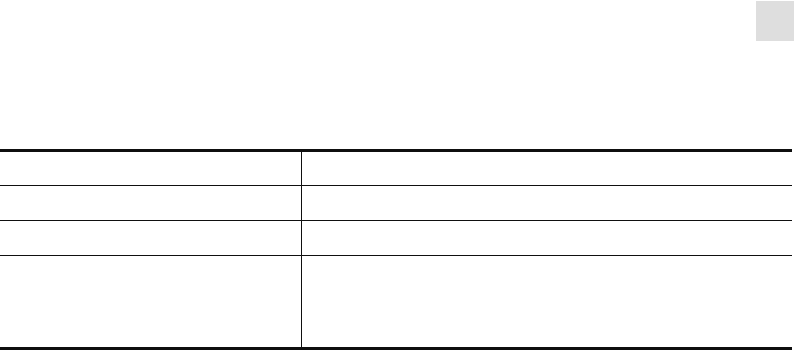
Print Engine Specifications
Ribbon Specifications
58981L-002 Rev. 1 2/11/05 R110PAX4 User Guide 155
Ribbon Specifications
Thickness 4.5 microns
Width (wound coated side out) 1.0 in. to 4.2 in. (25.4 mm to 107 mm)
Maximum length 2955 ft (900 m)
Roll size
Inner core diameter
Maximum roll size
1.0 in. (25.4 mm)
4.2 in. (107 mm)
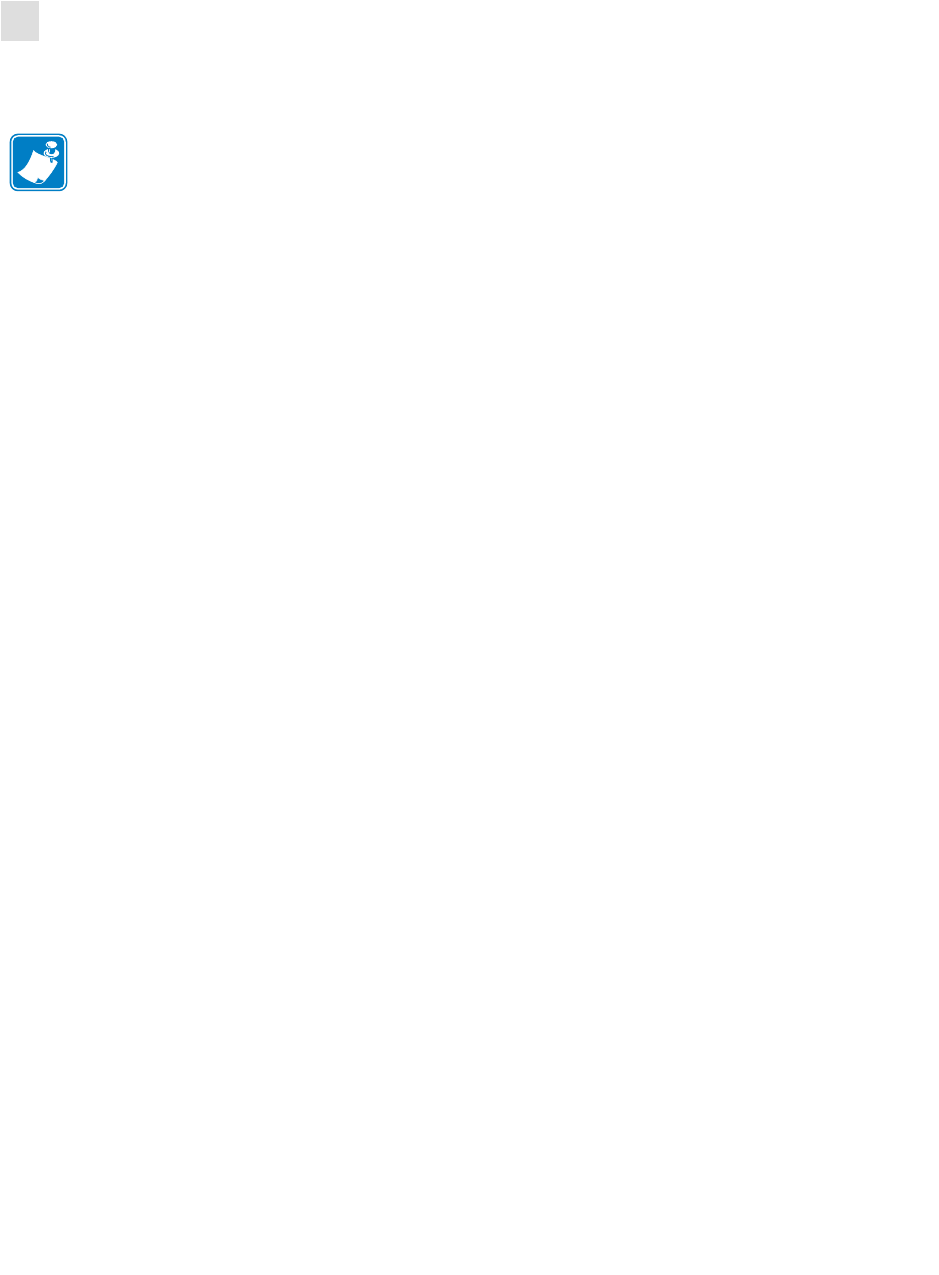
156 R110PAX4 User Guide 58981L-002 Rev. 1 2/11/05
Print Engine Specifications
Ribbon Specifications
Notes • ___________________________________________________________________
__________________________________________________________________________
__________________________________________________________________________
__________________________________________________________________________
__________________________________________________________________________
__________________________________________________________________________
__________________________________________________________________________
__________________________________________________________________________
__________________________________________________________________________
__________________________________________________________________________
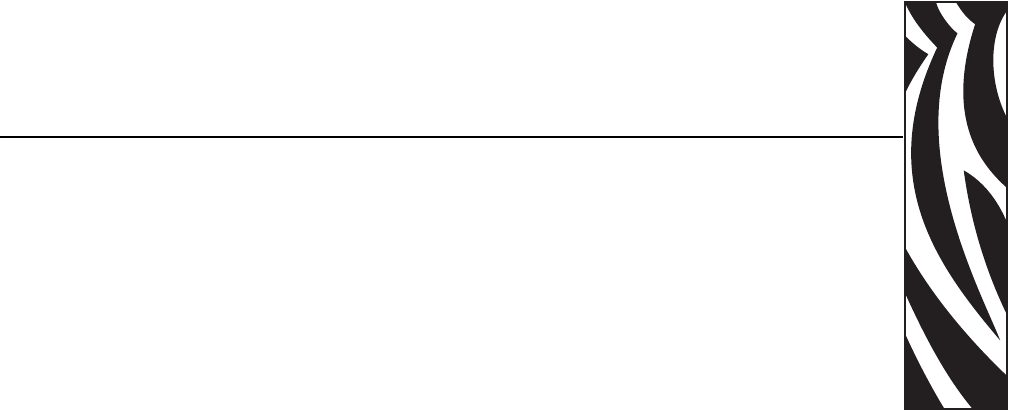
58981L-002 Rev. 1 2/11/05 R110PAX4 User Guide 157
B
Data Ports
This appendix describes the standard communication ports available to connect the print
engine to your computer or network.
Contents
Parallel Port . . . . . . . . . . . . . . . . . . . . . . . . . . . . . . . . . . . . . . . . . . . . . . . . . . . . . . . . . . 158
Serial Port . . . . . . . . . . . . . . . . . . . . . . . . . . . . . . . . . . . . . . . . . . . . . . . . . . . . . . . . . . . 159
Serial Pin Configuration . . . . . . . . . . . . . . . . . . . . . . . . . . . . . . . . . . . . . . . . . . . . . . . 160
RS-232 Interface Connections. . . . . . . . . . . . . . . . . . . . . . . . . . . . . . . . . . . . . . . . . . 161
Applicator Interface Connector. . . . . . . . . . . . . . . . . . . . . . . . . . . . . . . . . . . . . . . . . . . . 163
Applicator Signals . . . . . . . . . . . . . . . . . . . . . . . . . . . . . . . . . . . . . . . . . . . . . . . . . . . 163
Applicator Interface Connector Pin Configuration . . . . . . . . . . . . . . . . . . . . . . . . . . . 168
Jumper Configurations for +5 V I/O Applicator Interface Board. . . . . . . . . . . . . . . . . 170
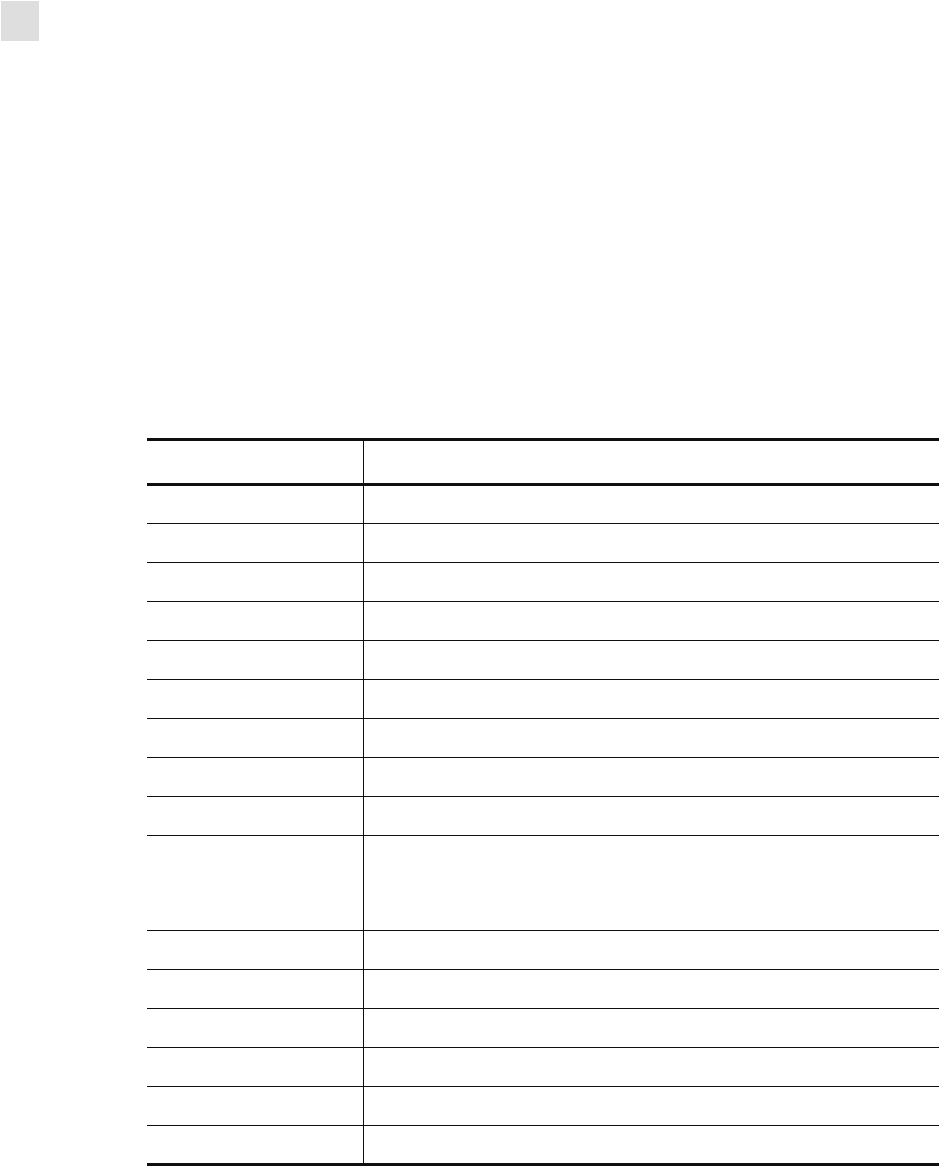
158 R110PAX4 User Guide 58981L-002 Rev. 1 2/11/05
Data Ports
Parallel Port
Parallel Port
When communicating via the parallel port, the values selected must be the same as those used
by the host equipment connected to the print engine. Port selection for status information is
determined by the channel sending the request. The parallel port can be set for bidirectional or
unidirectional communication. The default setting is bidirectional.
A standard 36-pin parallel connector is available on the back of the print engine for connection
to the data source.
Table 17 shows the pin configuration and function of a standard computer-to-printer parallel
cable.
Table 17 • Parallel Cable Pin Configuration
36-Pin Connectors Description
1 nStrobe/HostClk
2–9 Data Bits 1–8
10 nACK/PtrClk
11 Busy/PtrBusy
12 PError/ACKDataReq
13 Select/Xflag
14 nAutoFd/HostBusy
15 Not used
16, 17 Ground
18 +5 V at 750 mA
The maximum current draw may be limited by option
configuration.
19–30 Ground
31 ninit
32 nFault/NDataAvail
33, 34 Not used
35 +5 V through a 1.8 KΩ Resistor
36 NSelectin/1284 active

Data Ports
Serial Port
58981L-002 Rev. 1 2/11/05 R110PAX4 User Guide 159
Serial Port
To communicate using the serial data port of the print engine, you must choose the number of
data bits, parity, and handshaking. Parity applies only to data transmitted by the print engine
because the parity of received data is ignored.
The values selected must be the same as those used by the host equipment connected to the
print engine. Default print engine settings are 9600 baud, 8 data bits, no parity, and
XON/XOFF. The print engine will accept any host setting for stop bits.
Connect the serial data cable to the female DB-9 connector on the back panel of the print
engine. Use a DB-9 to DB-25 interface module for all RS-232 connections through a DB-25
cable.
Note • For all RS-232 input and output signals, the print engine follows the specifications of
the Electronics Industries Association (EIA) RS-232 and the Consultative Committee for
International Telegraph and Telephone (CCITT) V.24.
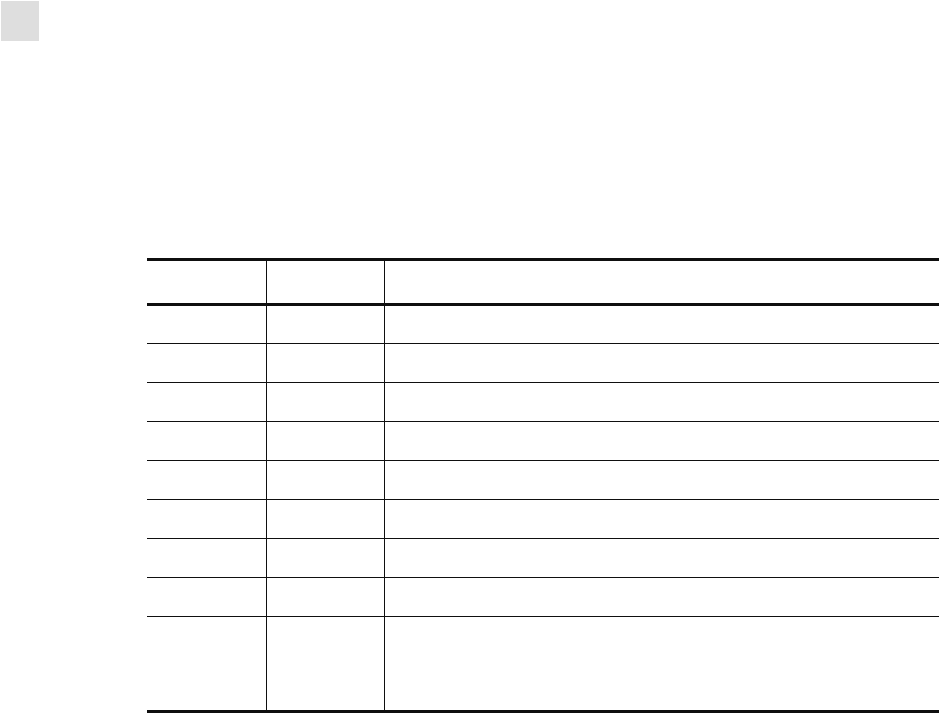
160 R110PAX4 User Guide 58981L-002 Rev. 1 2/11/05
Data Ports
Serial Port
Serial Pin Configuration
Table 18 shows the pin configuration and function of the rear panel serial data connector on
the print engine.
\
Table 18 • Serial Connector Pin Configuration
Pin No. Name Description
1 — Not connected
2 RXD Receive data—data input to print engine
3 TXD Transmit data—data output from print engine
4 DTR Data terminal ready—output from print engine
5 SG Signal ground
6 DSR Data set ready—input to print engine
7 RTS Request to send—output from print engine
8 CTS Clear to send—input to print engine
9 +5 VDC +5 VDC at 750 mA
The maximum current draw may be limited by option
configuration.
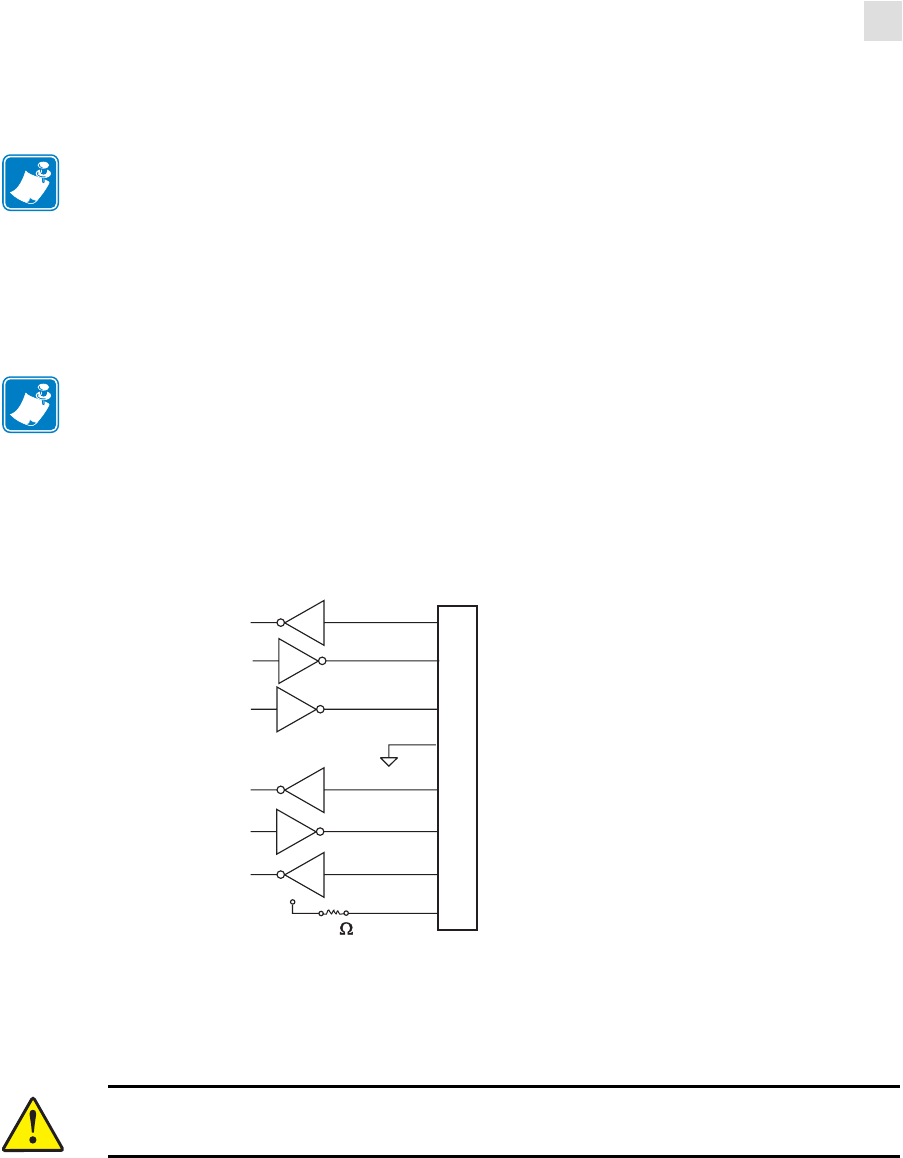
Data Ports
Serial Port
58981L-002 Rev. 1 2/11/05 R110PAX4 User Guide 161
RS-232 Interface Connections
Direct Connection to a Computer
The print engine is configured as Data Terminal Equipment (DTE).
Figure 55 shows the internal connections of the print engine’s RS-232 connector.
Figure 55 • RS-232 Connections
Pin 9 is also available as a +5 VDC signal source at 750 mA. The maximum current draw may
be limited by option configuration.
Note • Adapters are available from Zebra Technologies LLC.
• RS-422/RS-485 adapter, Zebra part number 33114M
• RS-232 DB-9 to DB-25 adapter, Zebra part number 33109M
Note • Use a null modem (crossover) cable to connect the print engine to a computer or any
other DTE device.
Caution • To enable this capability, a qualified service technician must install a jumper on
the print engine’s main logic board on JP1, pins 2 and 3.
NOTE: Pin 1 is unused and unterminated.
RS-232 Connector (DTE)
Rear Panel Female DB-9
RXD (receive data) input
TXD (transmit data) output
DTR (data terminal ready) output
SG (signal ground)
DSR (data set ready) input
RTS (request to send) output
CTS (clear to send) input
+5 VDC signal source
2
3
4
5
6
7
8
9
R1
+5 VDC
1K
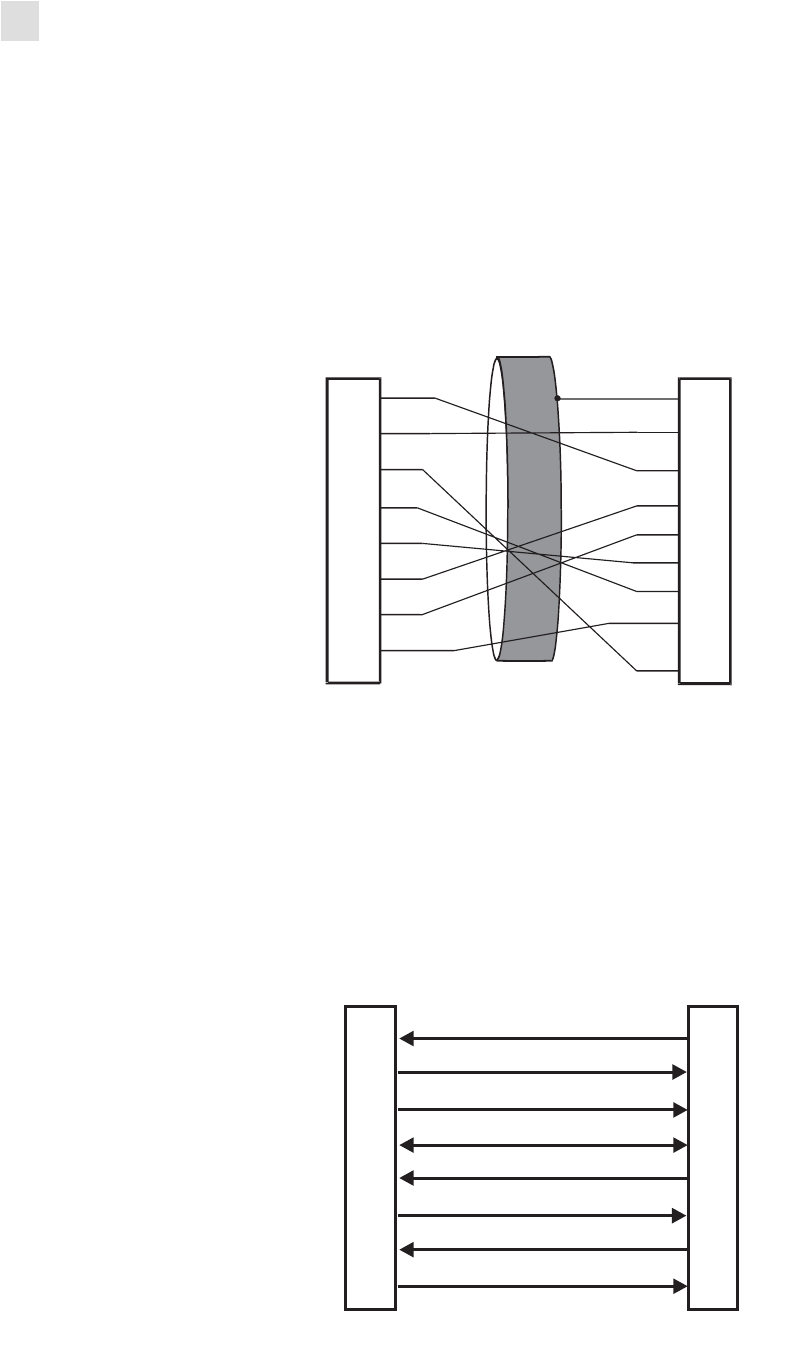
162 R110PAX4 User Guide 58981L-002 Rev. 1 2/11/05
Data Ports
Serial Port
DB-9 to DB-25 Connections
An interface adapter is required (Zebra part number 33109M) to connect the print engine’s
DB-9 interface to a DB-25 connector. A generic DB-25 adapter CAN be used, although the
+5 VDC signal source would not be passed through the adapter.
Figure 56 shows the connections required for the DB-9 to DB-25 interface.
Figure 56 • DB-9 to DB-25 Connections
Modem Connection
When the print engine is connected via its RS-232 interface to Data Communication
Equipment (DCE) such as a modem, use a standard RS-232 (straight-through) interface cable.
Figure 57 shows the connections required for this cable.
Figure 57 • RS-232 Connections
Male DB-9 Adapter
Connector
(plugs into printer)
Female DB-25 Adapter
Connector
(plugs into cable)
NOTE: Pin 1 of DB-9 connector is unused and unterminated.
FG
TXD
RXD
RTS
DSR
SG
DTR
RXD
TXD
DTR
SG
DSR
RTS
CTS
+5 VDC
SIGNAL
2
3
4
5
6
7
8
9
1
2
3
4
6
7
9
20
+5 VDC
SIGNAL
5
CTS
DTE
(Printer)
DCE
(Modem, etc.)
RXD (receive data)
TXD (transmit data)
DTR (data terminal ready)
SG (signal ground)
DSR (data set ready)
RTS (request to send)
CTS (clear to send)
+5 VDC signal source
NOTE: Pin 1 is unused and unterminated at the printer.
2
3
4
5
6
7
8
9
2
3
4
5
6
7
8
9

Data Ports
Applicator Interface Connector
58981L-002 Rev. 1 2/11/05 R110PAX4 User Guide 163
Applicator Interface Connector
An external DB-15 connector is present on the rear panel of the print engine for
communication with the customer applicator. An optional DB-15 to DB-9 adapter cable
(Zebra part number 49609) is available to accommodate existing DB-9 interfaces.
Applicator Signals
The printer and the customer applicator communicate through a series of signals on the pins in
the DB-15 connector. Each pin causes different things to happen when the signal is active
(asserted) or not active (de-asserted). Applicator Interface Connector Pin Configuration
on page 168 provides additional information about each pin and signal.
The following examples show how these applicator signals function in each applicator mode
during the stages of printing and programming a label. For more information about the
applicator modes (which affect the end print signal), see Set the Applicator Port on page 69.
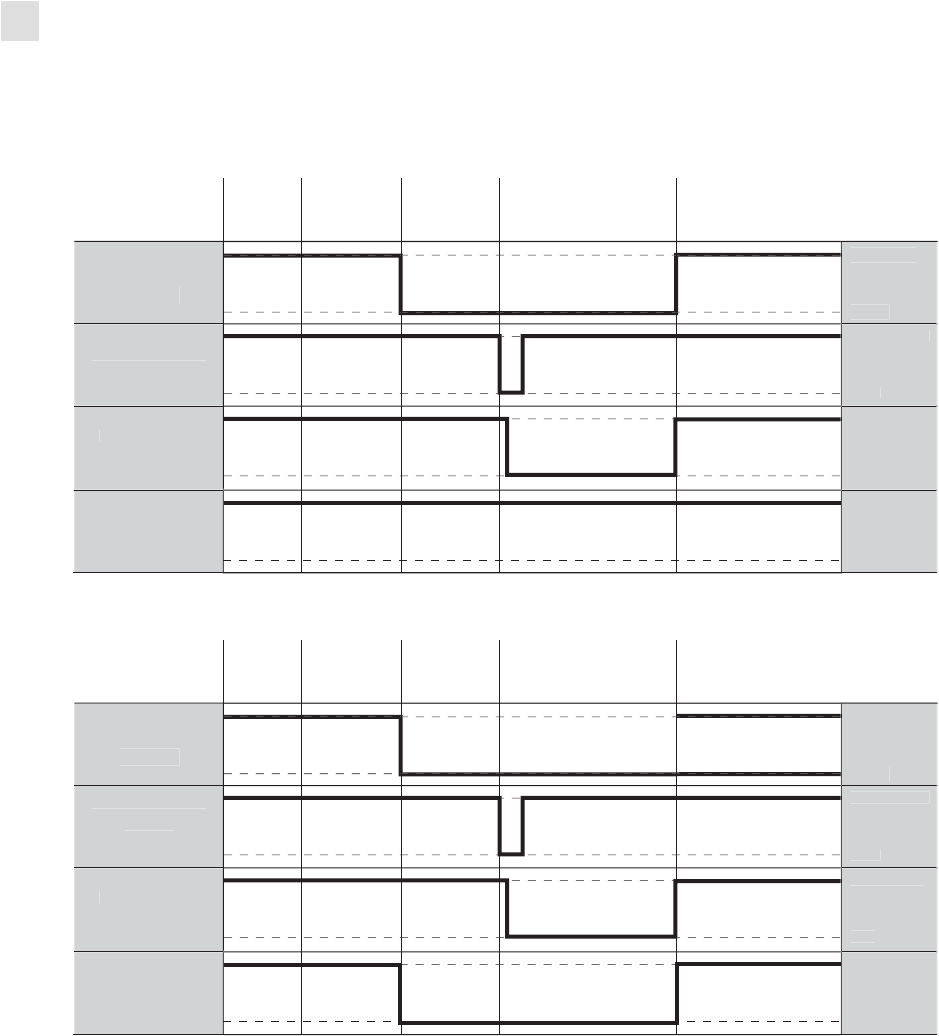
164 R110PAX4 User Guide 58981L-002 Rev. 1 2/11/05
Data Ports
Applicator Interface Connector
Mode 1
Figure 58 • Basic Applicator Signals (Mode 1, good RFID tag)
Figure 59 • Basic Applicator Signals (Mode 1, bad RFID tag)
label
format
sent
label
format
processed
waiting
for start
print signal
label
prints ready
for next
label
not rea
dy
r
ead
y
do
n
o
t
s
t
a
r
t
s
t
a
r
t
do
n
o
t
e
n
d
e
n
d
DATA
READY
(
pin 14
)
S
TART PRIN
T
(
pin 3
)
END PRINT
(
pin 11
)
no void
void
VOID
(pin 15)
void label
prints
(if applicable)
ready for next
label format or to
retry same format
(retry)
(next label)
label
format
sent
label
format
processed
waiting
for start
print signal
not rea
dy
r
ead
y
do
n
o
t
s
t
a
r
t
s
t
a
r
t
do
n
o
t
e
n
d
e
n
d
DATA
READY
(
pin 14
)
S
TART PRIN
T
(
pin 3
)
END PRINT
(
pin 11
)
no void
void
VOID
(pin 15)
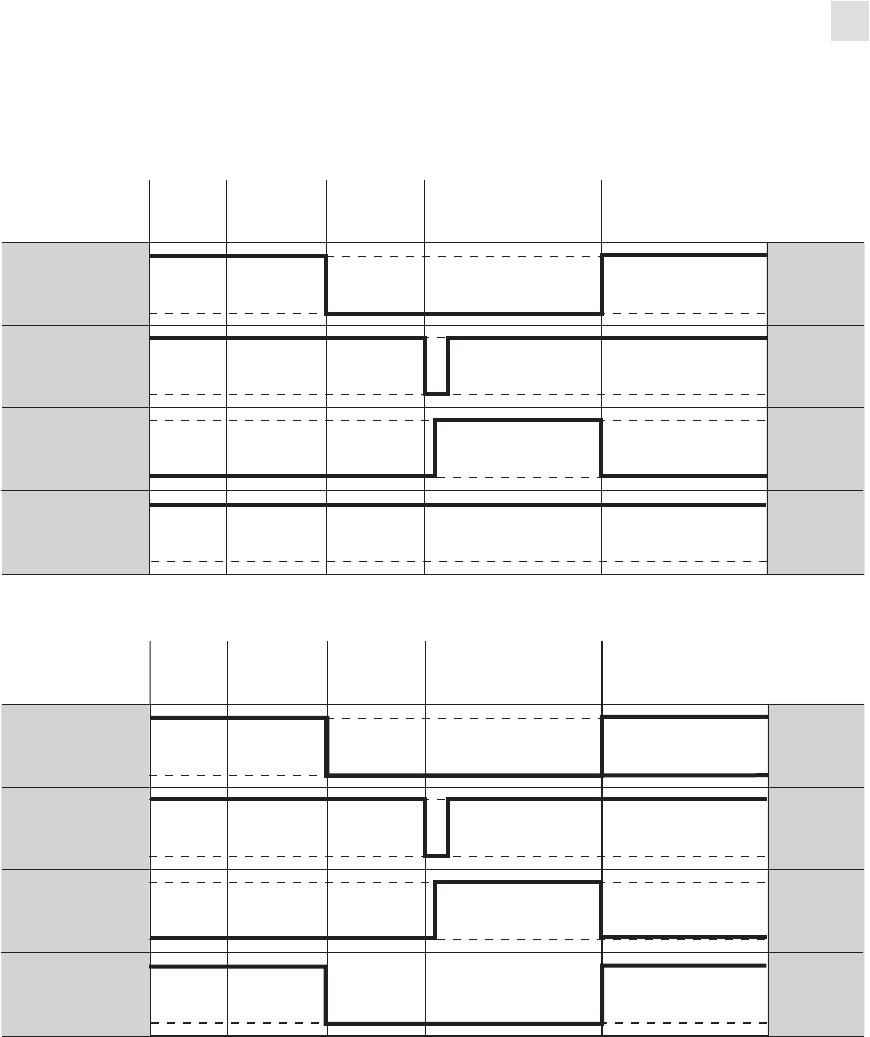
Data Ports
Applicator Interface Connector
58981L-002 Rev. 1 2/11/05 R110PAX4 User Guide 165
Mode 2
Figure 60 • Basic Applicator Signals (Mode 2, good RFID tag)
Figure 61 • Basic Applicator Signals (Mode 2, bad RFID tag)
no void
void
VOID
(pin 15)
DATA READY
(pin 14)
START PRINT
(pin 3)
END PRINT
(pin 11)
not ready
ready
do not start
start
do not end
end
label
format
sent
label
format
processed
waiting
for start
print signal
label
prints ready
for next
label
no void
void
VOID
(pin 15)
void label
prints
(if applicable)
ready for next
label format or to
retry same format
(retry)
(next label)
DATA READY
(pin 14)
START PRINT
(pin 3)
END PRINT
(pin 11)
not ready
ready
do not start
start
do not end
end
label
format
sent
label
format
processed
waiting
for start
print signal
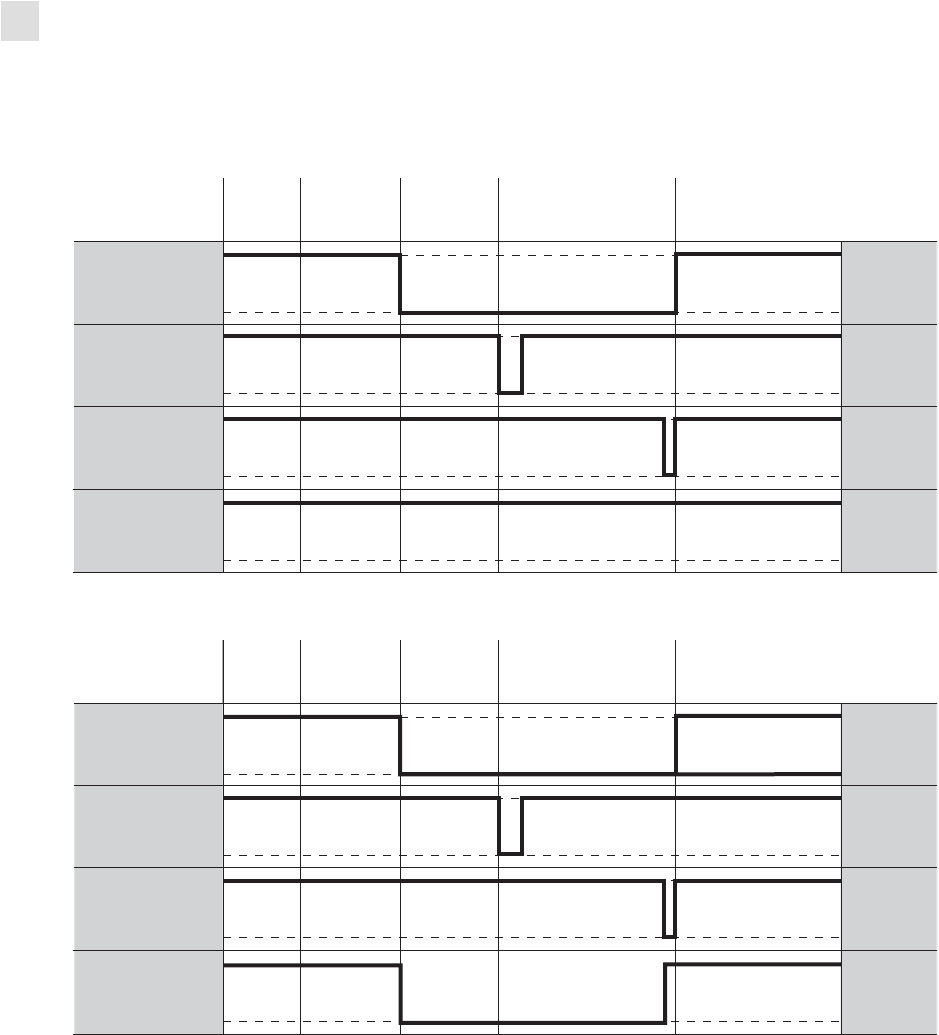
166 R110PAX4 User Guide 58981L-002 Rev. 1 2/11/05
Data Ports
Applicator Interface Connector
Mode 3
Figure 62 • Basic Applicator Signals (Mode 3, good RFID tag)
Figure 63 • Basic Applicator Signals (Mode 3, bad RFID tag)
no void
void
VOID
(pin 15)
DATA READY
(pin 14)
START PRINT
(pin 3)
END PRINT
(pin 11)
not ready
ready
do not start
start
do not end
end
label
format
sent
label
format
processed
waiting
for start
print signal
label
prints ready
for next
label
no void
void
VOID
(pin 15)
void label
prints
(if applicable)
ready for next
label format or to
retry same format
(retry)
(next label)
DATA READY
(pin 14)
START PRINT
(pin 3)
END PRINT
(pin 11)
not ready
ready
do not start
start
do not end
end
label
format
sent
label
format
processed
waiting
for start
print signal
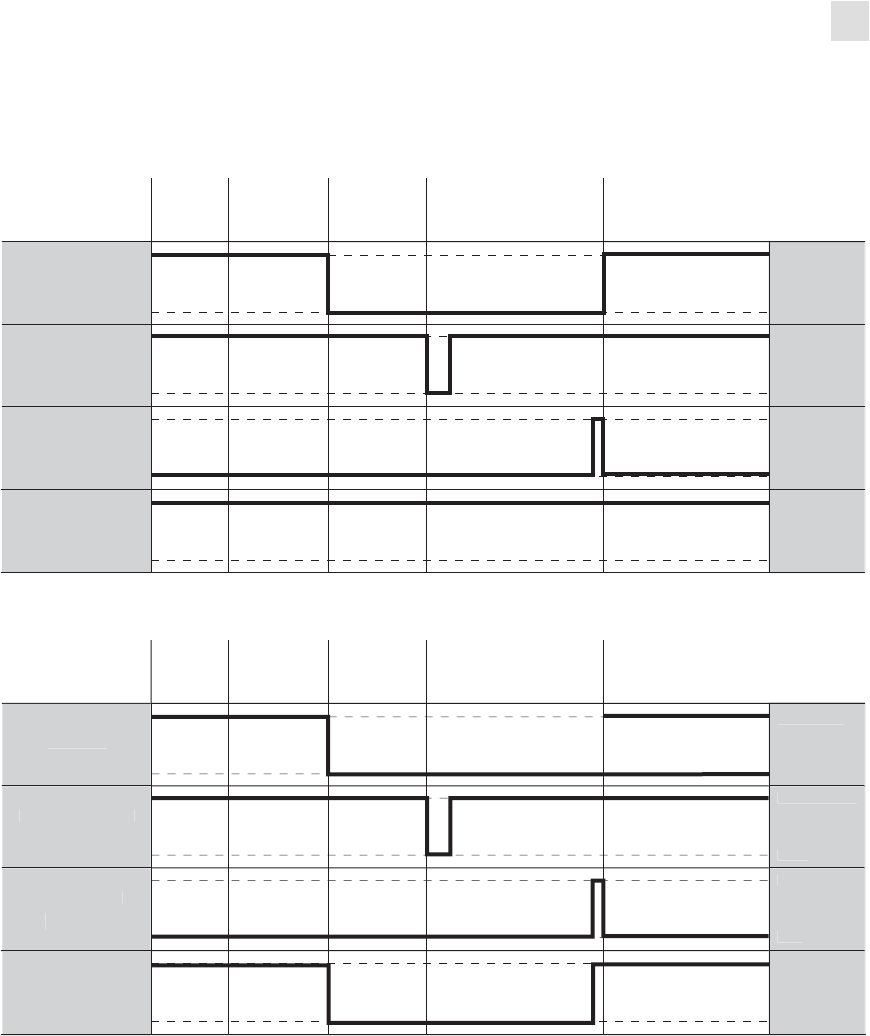
Data Ports
Applicator Interface Connector
58981L-002 Rev. 1 2/11/05 R110PAX4 User Guide 167
Mode 4
Figure 64 • Basic Applicator Signals (Mode 4, good RFID tag)
Figure 65 • Basic Applicator Signals (Mode 4, bad RFID tag)
no void
void
VOID
(pin 15)
DATA READY
(pin 14)
START PRINT
(pin 3)
END PRINT
(pin 11)
not ready
ready
do not start
start
do not end
end
label
format
sent
label
format
processed
waiting
for start
print signal
label
prints ready
for next
label
label
format
sent
label
format
processed
waiting
for start
print signal
n
ot rea
dy
r
ead
y
do
n
o
t
s
t
a
r
t
s
t
a
r
t
do
n
o
t
e
n
d
e
n
d
DATA
READY
(
pin 14
)
S
TART PRIN
T
(
pin 3
)
END PRINT
(
pin 11
)
no void
void
VOID
(pin 15)
void label
prints
(if applicable)
ready for next
label format or to
retry same format
(retry)
(next label)
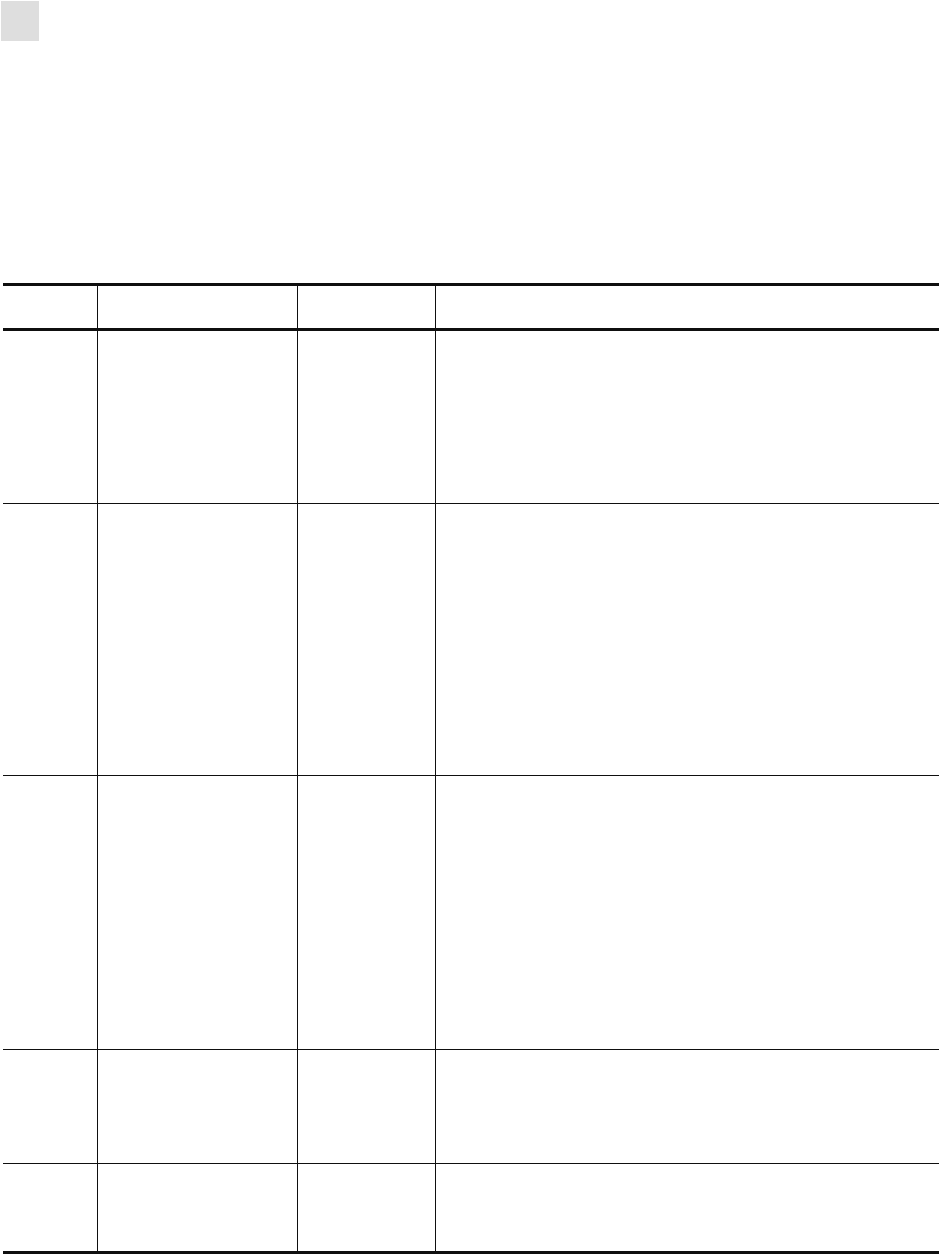
168 R110PAX4 User Guide 58981L-002 Rev. 1 2/11/05
Data Ports
Applicator Interface Connector
Applicator Interface Connector Pin Configuration
The Applicator Interface Assembly is available in two versions: a +5 V I/O and a
+24 V (24–28 V) I/O. Table 19 lists the pin configurations and functions of the applicator
interface connector for both +5 V and 24–28 V operation.
Table 19 • Applicator Interface Connector Pin Configuration
Pin No. Signal Name Signal Type Description
1 I/O SIGNAL
GROUND I/O Signal
Ground +5 V Version
Using jumper J5, this pin can be configured as isolated
or non-isolated from the Applicator Interface Circuit
Ground. See Table 20 on page 170 for more information.
24–28 V Version
Isolated I/O operation only. No jumpers to configure.
2+V I/O
(Fused at 1 A for
+5 V operation.
See Figure 66
on page 171 for fuse
location.)
Caution • Replace
the fuse only with
one of the same
type and rating.
Power +5 V Version
Using jumper J4, this pin can be configured as isolated
or non-isolated from the Applicator Interface Circuit
+5 V Supply. See Table 20 on page 170 for more
information.
24–28 V Version
Isolated I/O operation only. No jumpers to configure.
3 START PRINT Input Pulse Mode
The label printing process begins on the HIGH to LOW
transition of this signal if a format is ready. De-assert this
signal HIGH to inhibit printing of a new label.
Level Mode
Assert LOW to enable the print engine to begin printing
if a format is ready. The print engine prints new labels as
long as the signal is asserted. When de-asserted, the
currently printing label is completed and the print engine
stops and waits for this input to be reasserted LOW.
4 FEED Input When the print engine is in an idle state or has been
paused, assert this input LOW to trigger repeated feeding
of blank labels. De-assert HIGH to stop feeding blank
labels and register to the top of the next label.
5 PAUSE Input To toggle the current pause state, this input must be
asserted LOW for 200 milliseconds, or until the
SERVICE REQUIRED output (pin 10) changes state.
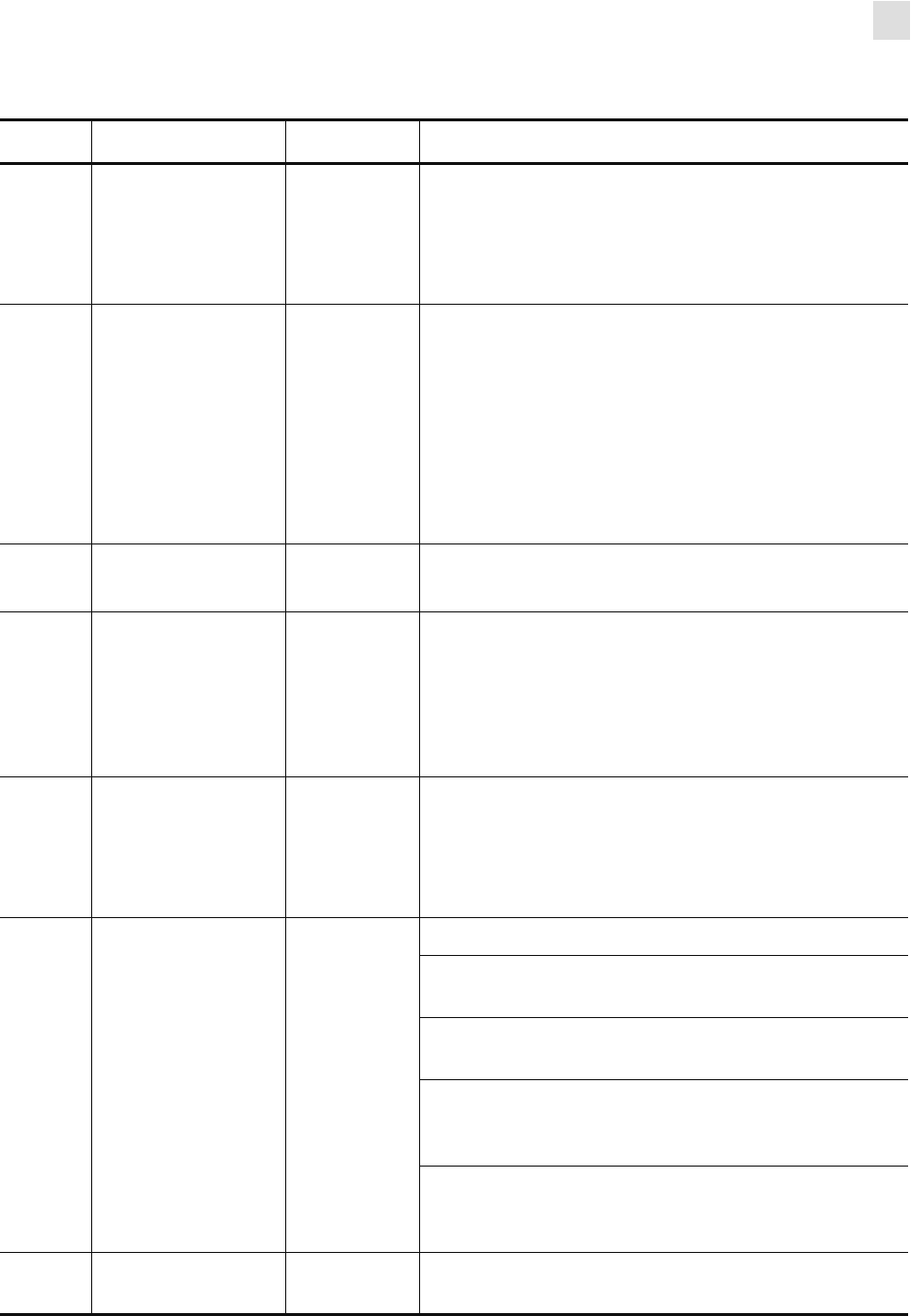
Data Ports
Applicator Interface Connector
58981L-002 Rev. 1 2/11/05 R110PAX4 User Guide 169
6 REPRINT Input If the Reprint feature is enabled, this input must be
asserted LOW to cause the print engine to reprint the last
label. See Set Reprint Mode on page 71 for more
information.
If the Reprint feature is disabled, this input is ignored.
7+28V
(Fused at 500 mA.
See Figure 66
on page 171 for fuse
location.)
Caution • Replace
the fuse only with
one of the same
type and rating.
Power The Interface Power Supply. Supplies power to external
sensors as required.
8 POWER GROUND
(+28 V Return)
Ground The Interface Power Ground.
9 RIBBON LOW Output Asserted HIGH if the Ribbon Low feature is enabled and
the amount of ribbon remaining on the supply spool is
below a specific threshold level. See Set Ribbon Low
Mode on page 70 for more information.
If the Ribbon Low feature is disabled, this output lead is
disabled.
10 SERVICE
REQUIRED Output Asserted LOW if the media cover is open, the printhead
is open, the ribbon is out, the media is out, the print
engine is paused, or an operational fault occurs.
If the applicator Resynch mode is set to Error mode, this
signal also asserts LOW for a Resynch error.
11 END PRINT Output MODE 0: The applicator port is OFF.
MODE 1: Asserted LOW only while the print engine is
moving the label forward; otherwise de-asserted HIGH.
MODE 2: Asserted HIGH only while the print engine is
moving the label forward; otherwise de-asserted LOW.
MODE 3: (Default) Asserted LOW for 20 milliseconds
when a label has been completed and positioned. Not
asserted during continuous printing.
MODE 4: Asserted HIGH for 20 milliseconds when a
label has been completed and positioned. Not asserted
during continuous printing.
12 MEDIA OUT Output Asserted LOW while there is no media in the print
engine.
Table 19 • Applicator Interface Connector Pin Configuration (Continued)
Pin No. Signal Name Signal Type Description
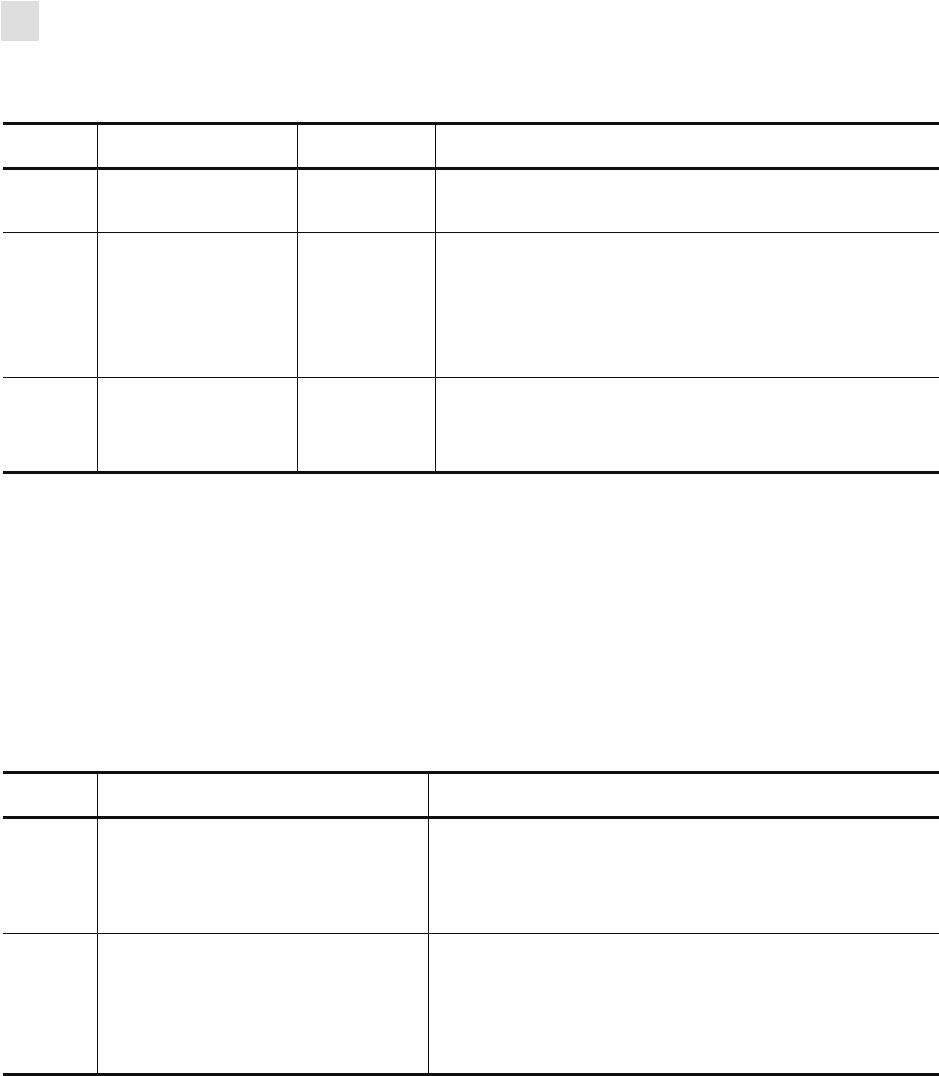
170 R110PAX4 User Guide 58981L-002 Rev. 1 2/11/05
Data Ports
Applicator Interface Connector
Jumper Configurations for +5 V I/O Applicator Interface Board
Table 20 shows the pin and jumper configurations for pins 1 and 2 in +5 V I/O operation.
Jumpers J4 and J5 are used together to produce isolated or non-isolated modes of operation for
applicator input and output control signals. J4 configures the +5 V source for the optoisolator
circuits, and J5 configures the ground. For proper operation, when J4 is installed, J5 must be
installed, and when J4 is removed, J5 must be removed.
13 RIBBON OUT Output Asserted LOW while there is no ribbon in the print
engine.
14 DATA READY Output Asserted LOW when sufficient data has been received to
begin printing the next label.
De-asserted HIGH whenever printing stops after the
current label, due to either a pause condition or the
absence of a label format.
15 VOID Output Asserted LOW when the RFID transponder over the
antenna is “voided.”
De-asserted HIGH when the end print signal is asserted.
Table 19 • Applicator Interface Connector Pin Configuration (Continued)
Pin No. Signal Name Signal Type Description
Table 20 • Pin 1 and Pin 2 Jumper Configurations
Pin No. Non-Isolated Isolated
1J5 In
I/O ground is connected to the
Applicator Interface Circuit
Ground.
J5 Out
I/O ground is disconnected from the Applicator Interface
Circuit Ground. Ground for the applicator interface
optoisolator circuits is provided externally to this pin.
2J4 In
+5 V I/O is connected to the
Applicator Interface Circuit +5 V
Supply.
J4 Out
+5 V I/O is disconnected from the Applicator Interface
Circuit +5 V Supply. The +5 V for the applicator
interface optoisolator circuits is provided externally to
this pin.
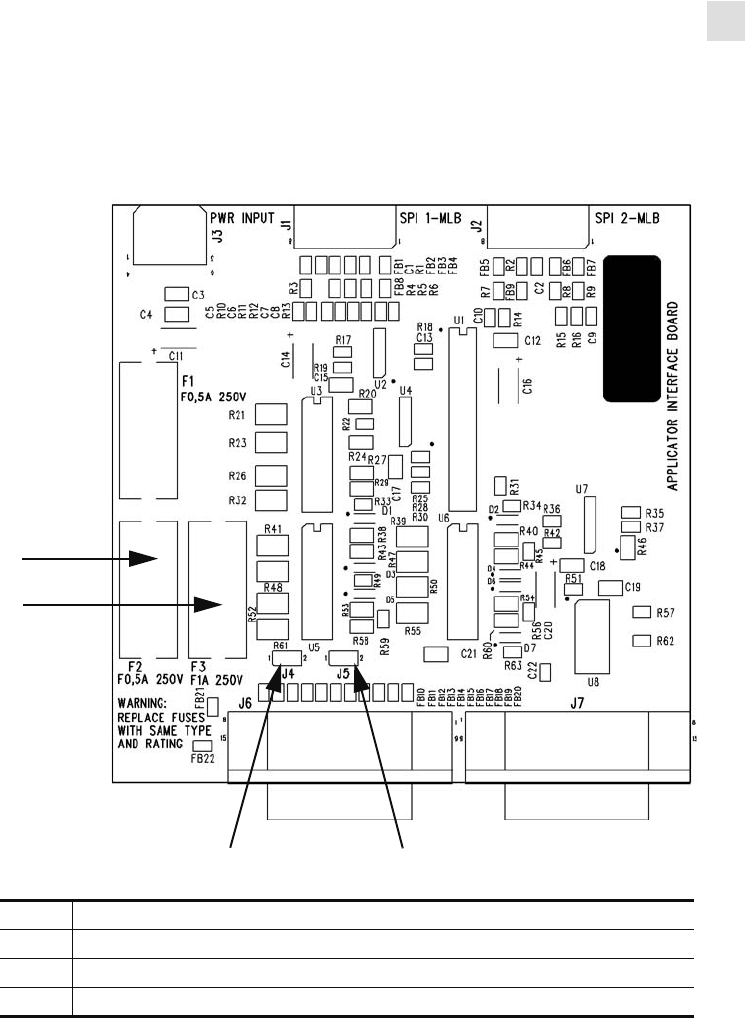
Data Ports
Applicator Interface Connector
58981L-002 Rev. 1 2/11/05 R110PAX4 User Guide 171
Figure 66 illustrates the location of the fuses and the location of jumpers J4 and J5 for the
+5 V I/O applicator interface board.
Figure 66 • Applicator Interface Board
1Fuse F2 for +28 V at pin 7
2Fuse F3 for +5 V at pin 2 (+5 V I/O only)
3Jumper J4
4Jumper J5
1
2
34

172 R110PAX4 User Guide 58981L-002 Rev. 1 2/11/05
Data Ports
Applicator Interface Connector
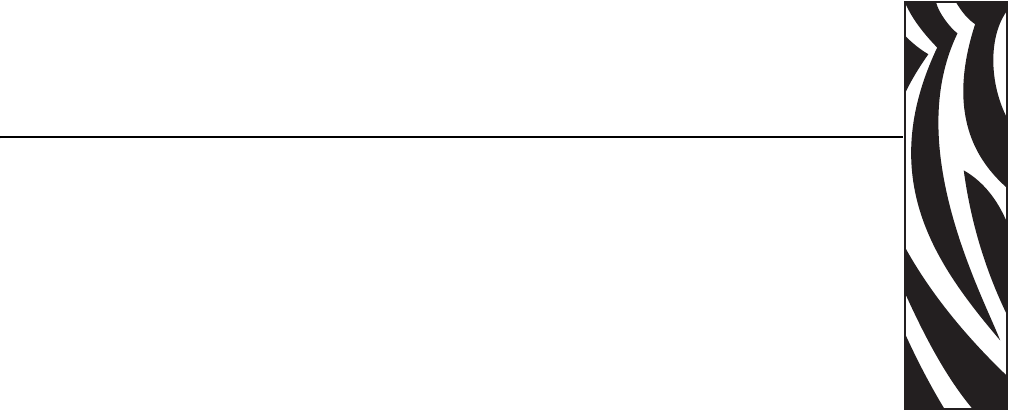
58981L-002 Rev. 1 2/11/05 R110PAX4 User Guide 173
Proprietary Statement
This manual contains proprietary information of Zebra Technologies Corporation and its
subsidiaries (“Zebra Technologies”). It is intended solely for the information and use of parties
operating and maintaining the equipment described herein. Such proprietary information may
not be used, reproduced, or disclosed to any other parties for any other purpose without the
expressed written permission of Zebra Technologies.
Product Improvements
Continuous improvement of products is a policy of Zebra Technologies. All specifications and
designs are subject to change without notice.
FCC Compliance Statement
This device complies with Part 15 rules. Operation is subject to the following two conditions:
1. This device may not cause harmful interference, and
2. This device must accept any interference received, including interference that may cause
undesired operation.
This equipment has been tested and found to comply with the limits for Class A Digital
Devices, pursuant to Part 15 of the FCC Rules. These limits are designed to provide reasonable
protection against harmful interference when the equipment is operated in a commercial
environment. This equipment generates, uses, and can radiate radio frequency energy and, if
not installed and used in accordance with the product manuals, may cause harmful interference
to radio communications. Operation of this equipment in a residential area is likely to cause
harmful interference, in which case the user will be required to correct the interference at his
own expense.
The user is cautioned that any changes or modifications not expressly approved by Zebra
Technologies could void the user’s authority to operate the equipment. To ensure compliance,
this print engine must be used with Shielded Communication Cables.

174 R110PAX4 User Guide 58981L-002 Rev. 1 2/11/05
Proprietary Statement
FCC Radiation Exposure Statement
This equipment complies with FCC radiation exposure limits set forth for an uncontrolled
environment. This equipment should be installed and operated with minimum distance 20cm
between the radiator and your body.
This transmitter must not be co-located or operating in conjunction with any other antenna or
transmitter.
Canadian DOC Compliance Statement
This Class A digital apparatus complies with Canadian ICES-003.
Cet appareil numérique de la classe A est conforme à la norme NMB-003 du Canada.
Liability Disclaimer
Zebra Technologies takes steps to ensure that its published Engineering specifications and
manuals are correct; however, errors do occur. Zebra Technologies reserves the right to correct
any such errors and disclaims liability resulting therefrom.
Limitation of Liability
In no event shall Zebra Technologies or anyone else involved in the creation, production, or
delivery of the accompanying product (including hardware and software) be liable for any
damages whatsoever (including, without limitation, consequential damages including loss of
business profits, business interruption, or loss of business information) arising out of the use
of, the results of use of, or inability to use such product, even if Zebra Technologies has been
advised of the possibility of such damages. Some jurisdictions do not allow the exclusion or
limitation of incidental or consequential damages, so the above limitation or exclusion may
not apply to you.

58981L-002 Rev. 1 2/11/05 R110PAX4 User Guide 175
Warranty Information
Effective December 30, 2002
All new Zebra products are warranted by the manufacturer to be free from defect in material
and workmanship.
Printers and Related Hardware Products
Proof of purchase or shipment date is required to validate the warranty period. The warranty
becomes void if the equipment is modified, improperly installed or used, damaged by accident
or neglect, or if any parts are improperly installed or replaced by the user.
Products returned must be packaged in the original or comparable packing and shipping
container. In the event equipment is not so packaged, or if shipping damage is evident, it will
not be accepted for service under warranty. Surface transportation charges for return to
customers in the continental United States is paid by Zebra. Otherwise, Zebra pays CPT
(carriage paid to) nearest airport; customer pays customs, duties, taxes, and freight from
airport to destination. If Zebra determines that the product returned for warranty service or
replacement is not defective as herein defined, the customer will pay all handling and
transportation costs.
Printers
All printers (excluding printheads) are warranted against defect in material or workmanship
for twelve (12) months from the purchase date.
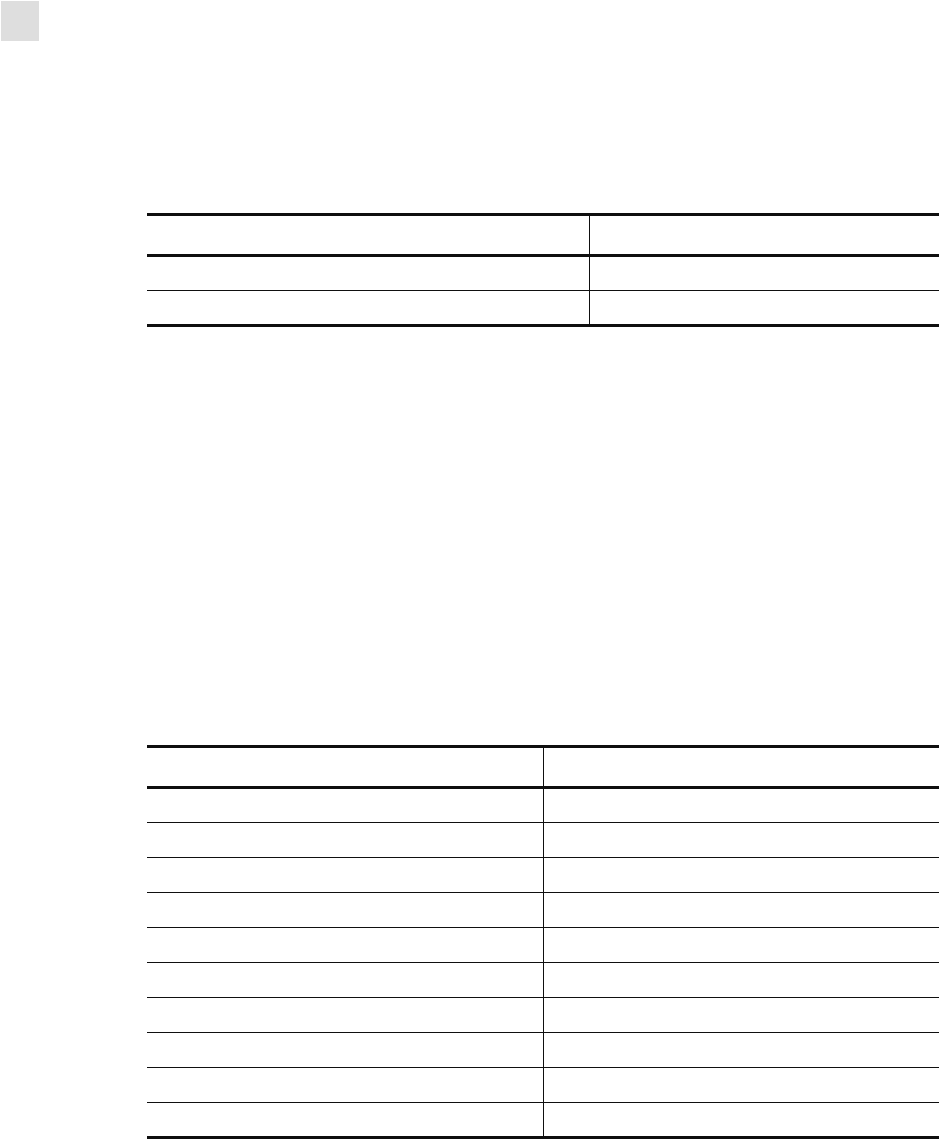
176 R110PAX4 User Guide 58981L-002 Rev. 1 2/11/05
Warranty Information
Printheads
Because printhead wear is part of normal operation, the original printhead is covered by a
limited warranty as indicated below. Warranty period begins on purchase date.
To qualify for this warranty, the printhead must be returned to the factory or to an authorized
service center. Customers are not required to purchase Genuine Zebra Supplies (media and/or
ribbons) for warranty qualification.
However, if it is determined that the use of inappropriate or inferior supplies has caused any
defect in the printhead for which a warranty claim is made, the user is responsible for Zebra’s
labor and material charges required to repair the defect. The warranty becomes void if the
printhead is physically worn or damaged; also if it is determined that failure to follow the
preventive maintenance schedule listed in the User Guide has caused defect in the thermal
printhead for which a warranty claim is made.
Related Hardware Items
Products are warranted to be free of defects in material and workmanship from the date of
purchase according to this chart:
Defective product must be returned to Zebra for evaluation. In the event of notification of
defect within the warranty period, Zebra will replace the defective item provided there had not
been damage resulting from user abuse, modification, improper installation or use, or damage
in shipping or by accident or neglect.
Printhead Warranty Period
Bar code label and receipt printer printheads 6 months
Plastic card printer printheads 12 months
Product Warranty Period
Accessories 1 month
Batteries 3 months
Cables 1 month
Chargers/Power Supplies 1 year
Hardware Keys 1 year
Keyboard Display Units 6 months
Parts 3 months
Pocket Eye®1 year
Software 1 month
ZebraNet® Print Servers 3 years

Warranty Information
58981L-002 Rev. 1 2/11/05 R110PAX4 User Guide 177
Supplies Products
Supplies are warranted to be free from defect in material and workmanship for a period of
six (6) months for media and twelve (12) months for ribbon from the date of shipment by
Zebra. This is provided the user has complied with storage guidelines, handling, and usage of
the supplies in Zebra printers.
Zebra’s sole obligation under these warranties is to furnish parts and labor for the repair or
possible replacement of products found to be defective in material or workmanship during the
warranty period. Zebra may in its discretion issue a credit for any such defective products in
such amount as it deems reasonable.
Repair Services
Zebra repairs are warranted against defects in material and workmanship for 90 days from the
date of repair by Zebra. This excludes printheads, which are warranted separately. This
warranty does not cover normal wear and tear. This warranty becomes void if the item is
modified, improperly installed or used, or damaged by accident, neglect, or abuse.
Warranty Exclusions & Conditions Statement
The warranties given above are the only warranties given to you. No other warranties, express
or implied, are given. Zebra does not make any implied warranty of merchantability or fitness
for a particular purpose in connection with its sale of products or services. While Zebra’s
desire is to be responsive to your specific needs and questions, Zebra does not assume
responsibility for any specific application to which any Products are applied, including, but not
limited to, compatibility with other equipment. All statements, technical information, or
recommendations relating to Zebra Products are based on tests believed to be reliable, but do
not constitute a guaranty or warranty.
Zebra’s maximum liability for warranty claims is limited to the invoice price of the Product
claimed defective. Zebra does not assume responsibility for delays in replacement or repair of
products. Zebra shall not under any circumstances whatsoever be liable to you or any other
party for loss or profits, lost data, diminution of goodwill, or any other special or consequential
damages whatsoever with respect to any warranty claim made by you. Specifically for
software, Zebra is not liable for any incidental or consequential damages caused by abuse or
misapplication of the software or by its use in violation of the U.S. copyright law or
international treaty. No salesperson, representative, or agent of Zebra is authorized to make
any guaranty, warranty, or representation that contradicts the foregoing. Any waiver,
alteration, addition, or modification to the foregoing warranties must be in writing and signed
by an executive officer of Zebra to be valid.
Zebra Technologies
333 Corporate Woods Parkway
Vernon Hills, IL 60061-3109 U.S.A.
Phone +1 847.634.6700 or +1 800.423.0442
Fax + 1 847.913.8766 www.zebra.com
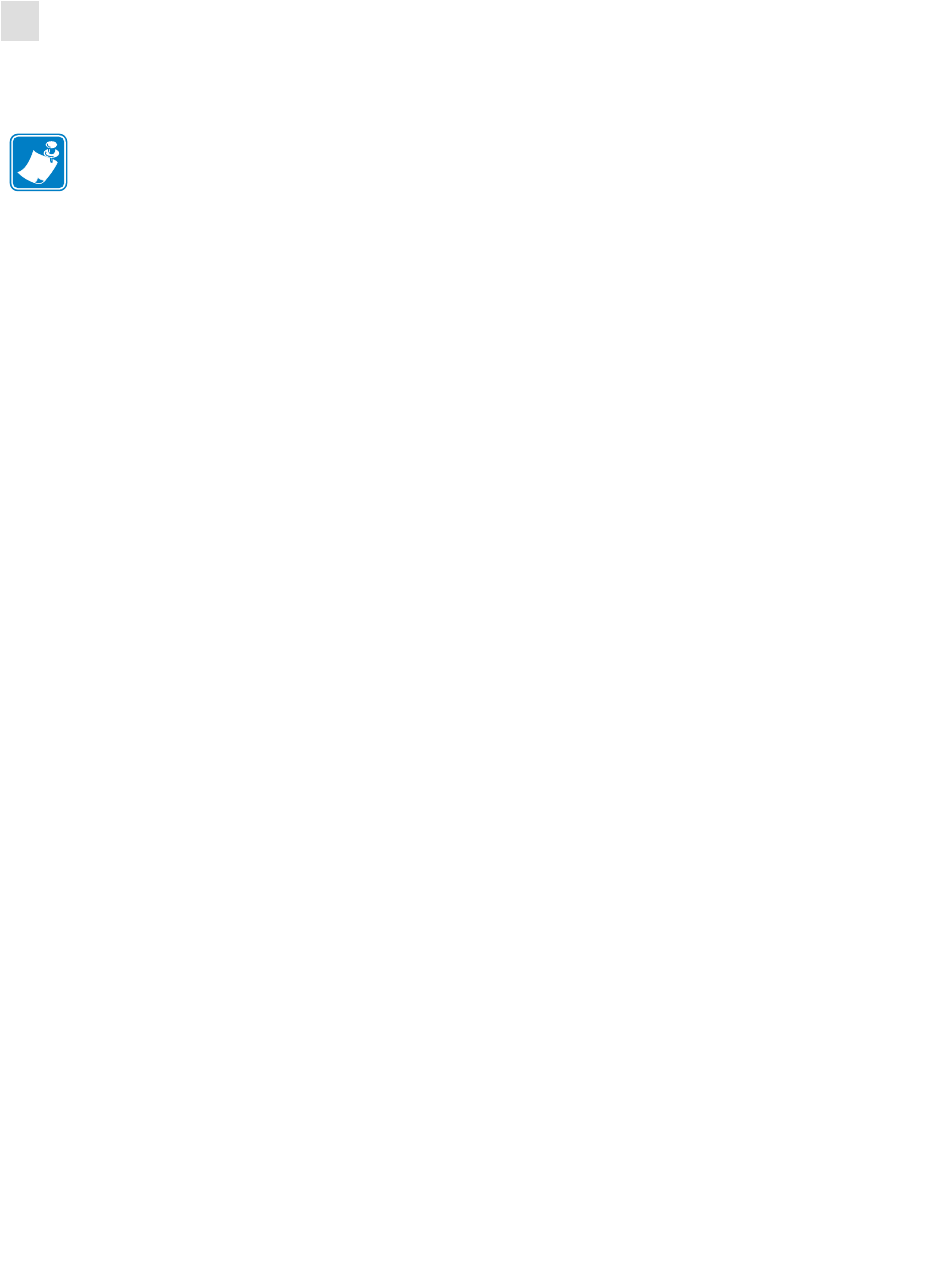
178 R110PAX4 User Guide 58981L-002 Rev. 1 2/11/05
Warranty Information
Notes • ___________________________________________________________________
__________________________________________________________________________
__________________________________________________________________________
__________________________________________________________________________
__________________________________________________________________________
__________________________________________________________________________
__________________________________________________________________________
__________________________________________________________________________
__________________________________________________________________________
__________________________________________________________________________
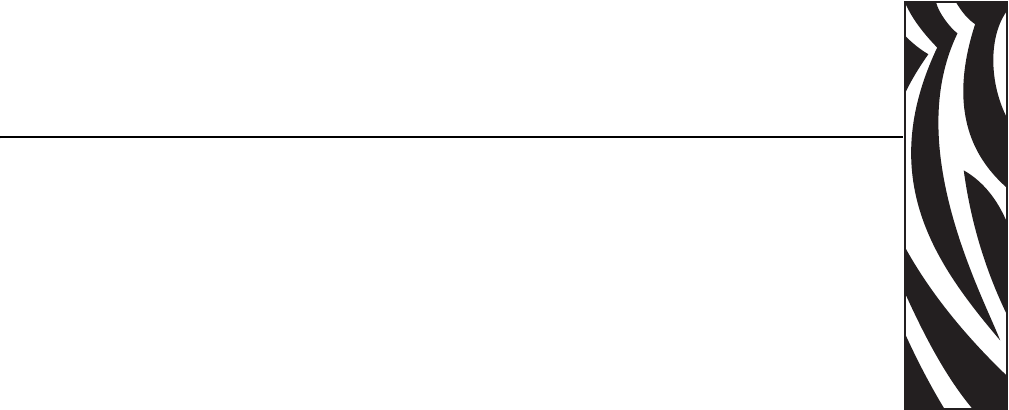
58981L-002 Rev. 1 2/11/05 R110PAX4 User Guide 179
Printer Software
and Firmware
License Agreement
YOU SHOULD CAREFULLY READ THE FOLLOWING TERMS AND CONDITIONS OF
THIS ZEBRA TECHNOLOGIES PRINTER SOFTWARE AND FIRMWARE LICENSE
AGREEMENT (PSFLA) BEFORE USING THE PRINTER WHICH IS ENCLOSED OR
OTHERWISE ASSOCIATED WITH THIS AGREEMENT. IF YOU DO NOT AGREE
WITH THESE TERMS AND CONDITIONS, DO NOT OPERATE THE PRINTER AND
PLEASE PROMPTLY RETURN THE PRINTER, ENCLOSURES AND ALL PACKAGING
FOR A FULL REFUND.
Zebra Technologies (ZEBRA) hereby grants you a non-exclusive, non-transferable license to
use the SOFTWARE and FIRMWARE embedded in the printer and the accompanying
documentation according to the following terms:
1. The printer enclosed with or otherwise associated with this Agreement has or includes
certain SOFTWARE and FIRMWARE therein which is protected by copyright laws and
international copyright treaties, as well as other intellectual property laws and treaties. The
SOFTWARE and FIRMWARE is licensed, not sold. Such SOFTWARE and/or
FIRMWARE may include, but is not limited to, SOFTWARE and/or FIRMWARE that is
licensed under one or more of the following trademarks: ZPL (Zebra Programming
Language), Zebralink, Web View, Web Alert, ZBI (Zebra Basic Interpreter), BAR-ONE,
ZTools, Utilities, ZebraNet View for IP, ZebraNet Alert, PC Management Program,
ZebraNet View for Networks and ZebraNet Connect.
2. GRANT OF LICENSE. This License grants you the following rights:
• SOFTWARE and FIRMWARE. You may use, access, display, run, or otherwise
interact with (RUN) the SOFTWARE and FIRMWARE in connection with operating
the printer which is enclosed with or otherwise associated with this PSFLA
(PRINTER). The primary user of the PRINTER may make a second copy for his or
her exclusive use on a portable computer/printer.
• Storage/Network Use. You may also store or install a copy of the SOFTWARE and
FIRMWARE on a storage device, such as a network server, used only to RUN the
SOFTWARE and FIRMWARE on your other PRINTERS over an internal network;
however, you must acquire and dedicate a license for each separate PRINTER on
which the SOFTWARE and FIRMWARE is RUN from the storage device. A license
for the SOFTWARE and FIRMWARE may not be shared or used concurrently on
different PRINTERS.

180 R110PAX4 User Guide 58981L-002 Rev. 1 2/11/05
Printer Software and Firmware License Agreement
• Reservation of Rights. All rights not expressly granted are reserved by ZEBRA.
• Accessing Services Using the SOFTWARE and FIRMWARE. Your use of any service
accessible using the SOFTWARE and FIRMWARE is not covered by this PSFLA and
may be governed by separate terms of use, conditions or notices.
3. RESTRICTIONS.
• You must maintain all copyright notices on all copies of the SOFTWARE and
FIRMWARE.
• Limitations on modification. You may not modify, adapt, translate, or create
derivative works based on this SOFTWARE OR FIRMWARE or the accompanying
documentation.
• Limitations of Reverse Engineering, Decompilation and Disassembly. You may not
reverse engineer, decompile, or disassemble the SOFTWARE or the FIRMWARE,
except and only to the extent that such activity is permitted by applicable law
notwithstanding this limitation.
• Rental. You may not rent or lease or lend the SOFTWARE or FIRMWARE.
• Support Services. ZEBRA may provide you with support services related to the
SOFTWARE and/or FIRMWARE (SUPPORT SERVICES), in its discretion. Use of
SUPPORT SERVICES, if any, is governed by the ZEBRA policies and programs
described in the user guide, in online documentation, and/or other ZEBRA provided
materials. Any supplemental SOFTWARE or FIRMWARE code provided to you as a
part of SUPPORT SERVICES shall be considered part of the SOFTWARE and/or
FIRMWARE and is subject to the terms of this PSFLA. With respect to technical
information you provide to ZEBRA as part of the SUPPORT SERVICES, ZEBRA
may use such information for its business purposes, including for product support and
development. ZEBRA will not utilize such technical information in a form that
personally identifies you except to the extent necessary to provide you with support.
• Replacement, Modification and Upgrade of the SOFTWARE and/or FIRMWARE.
ZEBRA reserves the right to replace, modify or upgrade the SOFTWARE and/or
FIRMWARE at any time by offering you a replacement or modified version of the
SOFTWARE and/or FIRMWARE or such upgrade and to charge for such
replacement, modification or upgrade. Any such replacement or modified
SOFTWARE and/or FIRMWARE code or upgrade to the SOFTWARE and/or
FIRMWARE offered to you by ZEBRA shall be considered part of the SOFTWARE
and/or FIRMWARE and subject to the terms of this PSFLA (unless this PSFLA is
superseded by a further PSFLA accompanying such replacement or modified version
of or upgrade to the SOFTWARE and/or FIRMWARE). In the event that ZEBRA
offers a replacement or modified version of or any upgrade to the SOFTWARE and/or
FIRMWARE, (a) your continued use of the SOFTWARE and/or FIRMWARE is
conditioned on your acceptance of such replacement or modified version of or
upgrade to the SOFTWARE and/or FIRMWARE and any accompanying superseding
PSFLA and (b) in the case of the replacement or modified SOFTWARE and/or
FIRMWARE, your use of all prior versions of the SOFTWARE and/or FIRMWARE
is terminated.

Printer Software and Firmware License Agreement
58981L-002 Rev. 1 2/11/05 R110PAX4 User Guide 181
4. TERMINATION. Without prejudice to any other rights, ZEBRA may terminate this
PSFLA if you fail to comply with the terms and conditions of this PSFLA. ZEBRA may
terminate this PSFLA by offering you a superseding PSFLA for the SOFTWARE and/or
FIRMWARE or any replacement or modified version of or upgrade to the SOFTWARE
and/or FIRMWARE and conditioning your continued use of the SOFTWARE and/or
FIRMWARE or such replacement, modified or upgraded version on your acceptance of
such superseding PSFLA. In addition, ZEBRA may terminate this PSFLA by notifying
you that your continued use of the SOFTWARE and/or FIRMWARE is prohibited. In the
event that ZEBRA terminates this PSFLA, you must immediately stop using the
SOFTWARE and/or FIRMWARE and destroy all copies of the SOFTWARE and/or
FIRMWARE and all of its component parts.
5. COPYRIGHT. All title and copyrights in and to the SOFTWARE and FIRMWARE, the
accompanying printed materials, and any copies of the SOFTWARE and FIRMWARE,
are owned by ZEBRA or its suppliers. All title and intellectual property rights in and to
the content which may be accessed through use of the SOFTWARE and/or FIRMWARE is
the property of the respective content owner and may be protected by applicable copyright
or other intellectual property laws and treaties. This PSFLA grants you no rights to use
such content. If this SOFTWARE and/or FIRMWARE contains documentation which is
provided only in electronic form, you may print one copy of such electronic
documentation. You may not copy the printed materials accompanying the SOFTWARE
and/or FIRMWARE.
6. U.S. GOVERNMENT RESTRICTED RIGHTS. All SOFTWARE and/or FIRMWARE
provided to the U.S. Government pursuant to solicitations issued on or after December 1,
1995 is provided with the commercial rights and restrictions described elsewhere herein.
All SOFTWARE and/or FIRMWARE provided to the U.S. Government pursuant to
solicitations issued prior to December 1, 1995 is provided with RESTRICTED RIGHTS
as provided for in FAR, 48 CFR 52.227-14 (JUNE 1987) or DFAR, 48 CFR 252.227-7013
(OCT 1988), as applicable.
7. EXPORT RESTRICTIONS. You agree that you will not export or re-export the
SOFTWARE and/or FIRMWARE, any part thereof, or any process or service that is the
direct product of the SOFTWARE and/or FIRMWARE (the foregoing collectively
referred to as the RESTRICTED COMPONENTS), to any country, person or entity
subject to U.S. export restrictions. You specifically agree not to export or re-export any of
the RESTRICTED COMPONENTS (i) to any country to which the U.S. has embargoed
or restricted the export of goods or services, which currently include, but are not
necessarily limited to Cuba, Iran, Iraq, Libya, North Korea, Sudan and Syria, or to any
national of any such country, wherever located, who intends to transmit or transport the
RESTRICTED COMPONENTS back to such country; (ii) to any person or entity who
you know or have reason to know will utilize the RESTRICTED COMPONENTS in the
design, development or production of nuclear, chemical or biological weapons; or (iii) to
any person or entity who has been prohibited from participating in U.S. export
transactions by any federal agency of the U.S. government. You warrant and represent that
neither the U.S. Commerce Department, Bureau of Export Administration nor any other
U.S. federal agency has suspended, revoked or denied your export privileges.

182 R110PAX4 User Guide 58981L-002 Rev. 1 2/11/05
Printer Software and Firmware License Agreement
8. DISCLAIMER OF WARRANTIES. ZEBRA AND ITS SUPPLIERS PROVIDE THE
SOFTWARE AND/OR FIRMWARE “AS IS” AND WITH ALL FAULTS, AND
HEREBY DISCLAIM ALL OTHER WARRANTIES AND CONDITIONS, EITHER
EXPRESS, IMPLIED OR STATUTORY, INCLUDING BUT NOT LIMITED TO ANY
(IF ANY) IMPLIED WARRANTIES OR CONDITIONS OF MERCHANTABILITY, OF
FITNESS FOR A PARTICULAR PURPOSE, OF LACK OF VIRUSES, AND OF LACK
OF NEGLIGENCE OR LACK OF WORKMANLIKE EFFORT. ALSO, THERE IS NO
WARRANTY OR CONDITION OF TITLE, OF QUIET ENJOYMENT, OR OF
NONINFRINGEMENT. THE ENTIRE RISK ARISING OUT OF THE USE OR
PERFORMANCE OF THE SOFTWARE AND FIRMWARE IS WITH YOU. ZEBRA
DOES NOT WARRANT THAT THE OPERATION OF THE SOFTWARE OR
FIRMWARE WILL BE UNINTERRUPTED OR ERROR FREE.
9. EXCLUSION OF ALL DAMAGES. TO THE MAXIMUM EXTENT PERMITTED BY
APPLICABLE LAW, IN NO EVENT SHALL ZEBRA OR ITS SUPPLIERS BE
LIABLE FOR ANY CONSEQUENTIAL, INCIDENTAL, DIRECT, INDIRECT,
SPECIAL, PUNITIVE, OR OTHER DAMAGES WHATSOEVER (INCLUDING,
WITHOUT LIMITATION, DAMAGES FOR ANY INJURY TO PERSON OR
PROPERTY, DAMAGES FOR LOSS OF PROFITS, BUSINESS INTERRUPTION,
LOSS OF BUSINESS INFORMATION, FOR LOSS OF PRIVACY FOR FAILURE TO
MEET ANY DUTY INCLUDING OF GOOD FAITH OR OF REASONABLE CARE,
FOR NEGLIGENCE, AND FOR ANY PECUNIARY OR OTHER LOSS
WHATSOEVER) ARISING OUT OF OR IN ANY WAY RELATED TO THE USE OF
OR INABILITY TO USE THE SOFTWARE OR FIRMWARE, WHETHER BASED ON
CONTRACT, TORT, NEGLIGENCE, STRICT LIABILITY OR OTHERWISE, EVEN IF
ZEBRA OR ANY SUPPLIER HAS BEEN ADVISED OF THE POSSIBILITY OF
SUCH DAMAGES. THIS EXCLUSION OF DAMAGES SHALL BE EFFECTIVE
EVEN IF ANY REMEDY FAILS OF ITS ESSENTIAL PURPOSE.
10. LIMITATIONS AND RELEASE OF LIABILITY.
• To the extent that the SOFTWARE and/or FIRMWARE covered by this PSFLA
includes emulation libraries, emulation libraries are offered “as is”. ZEBRA does not
provide any warranty associated with the emulation libraries.
• The emulation library does not work 100% correctly or cover 100% of the
functionality of the printer language being emulated. Modifications may be required
for each target application. If such modification is necessary, prior to making any such
modification, you are required to contact ZEBRA to obtain express written consent to
make such modification.
• If the emulation library is sold separately by an authorized party other than ZEBRA
(RESELLER—A party other than ZEBRA which is authorized by ZEBRA to
distribute the SOFTWARE and/or FIRMWARE with its application so long as the
SOFTWARE and/or FIRMWARE is used with a ZEBRA printer) or is sold bundled
with a printer to an end-user by a RESELLER, and if claims are made by the
RESELLER that the emulation library performs as a 100% emulation solution,
ZEBRA is not responsible if the emulation library does not work as advertised by the
RESELLER. Furthermore, ZEBRA is not liable for any damages directly or indirectly
relating to such emulation library which is sold separately by the RESELLER or
which is sold bundled with a printer to an end-user by the RESELLER.
• The SOFTWARE and FIRMWARE was provided to you at no additional charge and
ZEBRA has included in this PSFLA terms that disclaim all warranties and liability for
the SOFTWARE and FIRMWARE. To the full extent allowed by law, YOU HEREBY
RELEASE ZEBRA AND ITS SUPPLIERS FROM ANY AND ALL LIABILITY

Printer Software and Firmware License Agreement
58981L-002 Rev. 1 2/11/05 R110PAX4 User Guide 183
ARISING FROM OR RELATED TO ALL CLAIMS CONCERNING THE
SOFTWARE AND/OR FIRMWARE OR ITS USE. If you do not wish to accept the
SOFTWARE OR FIRMWARE under the terms of this PSFLA, do not use the
PRINTER enclosed with or otherwise associated with this PSFLA.
11. GOVERNING LAW. If you acquired the SOFTWARE and/or FIRMWARE in the United
States of America, the laws of the State of Illinois, U.S.A. will apply to this contract. If
you acquired this SOFTWARE and/or FIRMWARE outside of the United States of
America, then local law may apply. If any provision of this PSFLA is held invalid, the
remainder of this PSFLA shall continue in full force and effect.
12. QUESTIONS. Should you have any questions, or if you desire to contact ZEBRA for any
reason, please contact the ZEBRA subsidiary serving your country, or write:
Zebra Technologies Corporation
333 Corporate Woods Parkway
Vernon Hills, IL 60061
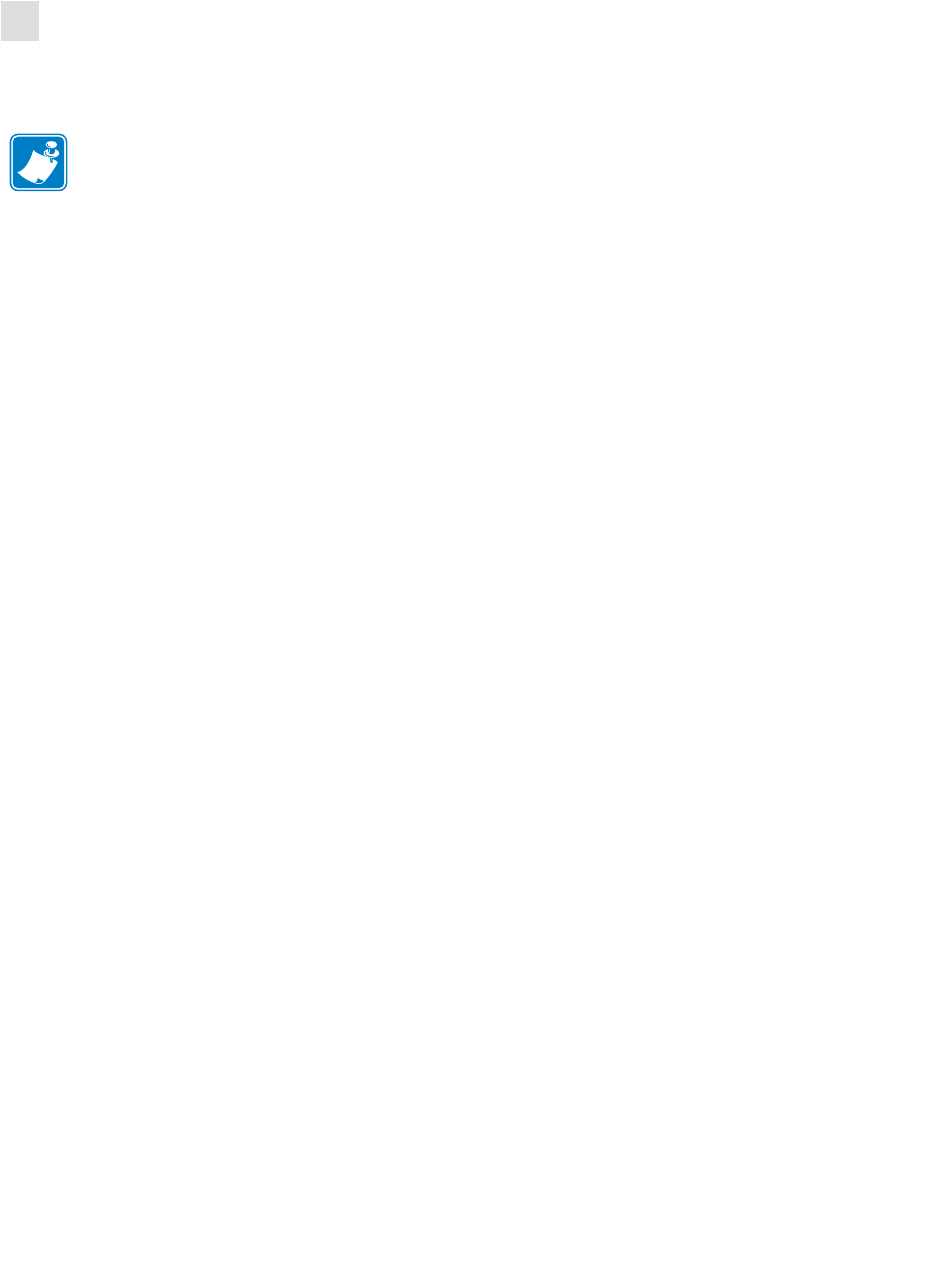
184 R110PAX4 User Guide 58981L-002 Rev. 1 2/11/05
Printer Software and Firmware License Agreement
Notes • ___________________________________________________________________
__________________________________________________________________________
__________________________________________________________________________
__________________________________________________________________________
__________________________________________________________________________
__________________________________________________________________________
__________________________________________________________________________
__________________________________________________________________________
__________________________________________________________________________
__________________________________________________________________________
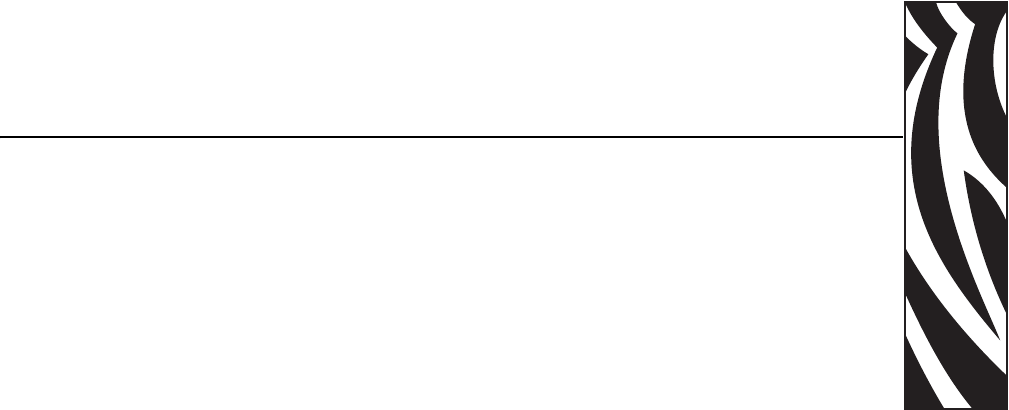
58981L-002 Rev. 1 2/11/05 R110PAX4 User Guide 185
Index
A
adhesive test for ribbon coating, 30
adjustments
LCD, 71
left position, 68
media sensors, 46
print engine darkness, 55
printhead pressure, 128
tear-off position, 56
toggle positioning, 127
advanced counter reset, 106
applicator
applicator interface connector, 163
as part of a labeling system, 7
install print engine, 21
interface pin configuration, 168
setting applicator port mode, 69
signals during applicator modes, 163
authentication type, 75
auto-calibration, 44
B
backfeed setting, 68
bar codes
list available codes, 60
specifications, 152
baud setting, 64
before you begin setup, 14
bitmap scaling factor, 72
black mark media
described, 27
setting sensor type, 57
black oval button descriptions, 9
buttons on front panel, 9
C
cable requirements, 26
calibration
CALIBRATE button description, 10
media and ribbon sensor, 63
methods, 44
RFID tag from front panel, 77
RFID tag using ZPL (^HR), 96
setting for head close, 67
setting for media power up, 67
CANCEL button description, 10
CANCEL self test, 143
characteristics of transponders, 85
checklist
before you begin, 14
troubleshooting, 132
Class 0 and 0+ transponder characteristics, 85
Class 1 transponder characteristics, 85
cleaning
exterior of print engine, 122
interior, 123
printhead and platen roller, 125
recommended schedule, 122
communication interfaces
overview and location, 24
types of connections, 157
communications diagnostics test
overview, 148
selecting, 65

186 R110PAX4 User Guide 58981L-002 Rev. 1 2/11/05
Index
communications problems, 139
CompactFlash card initialization, 61
configuration
changing parameters, 55
enter Setup mode, 50
exit Setup mode, 51
configuration label
printing using CANCEL self test, 143
printing using List Setup command, 60
connect print engine to power source, 22
contact information, 3
continuous media
described, 27
setting media type, 56
control prefix setting, 66
counter reset (~RO), 106
creating basic label formats, 86
customer support, 3
D
darkness setting, 55
data bits setting, 64
data cable requirements, 26
data ports, 157
data source
communication interfaces, 157
connections, 24
date setting, 72
DB-9 to DB-25 connection, 162
default gateway, 75
default password, 54
define EPC data structure (^RB), 99
delimiter character setting, 66
detect multiple RFID tags (^RN), 105
diagnostics, 142
RFID test, 76
direct connection to a computer, 161
direct thermal mode
media scratch test, 29
setting, 57
disable password protection, 54
display language selection, 73
display RFID tag data, 79
door-open sensor
location, 123
when to clean, 122
dpi format conversion, 72
E
electrical noise, 26
electrical specifications, 151
Electronic Product Code (EPC)
define EPC data structure (^RB), 99
EPC structure in RFID labels, 84
overview, 84
enable RFID motion (^RM), 104
encryption settings, 75
enter Setup mode, 50
environmental conditions, 150
error messages, 133
ESSID setting, 75
exit Setup mode, 51
exterior cleaning, 122
F
fanfold media, 28
FCC radiation exposure limits, 174
FEED and PAUSE self test, 146
FEED button description, 10
FEED self test, 145
Flash memory, 61
font list, 60
format convert setting, 72
format list, 60
format prefix setting, 66
front panel
buttons, 9
enter Setup mode, 50
exit Setup mode, 51
indicator lights, 10
LCD error messages, 133
LCD parameters, 55
fuses
replacement, 129
specifications, 151
G
gleaning, 74
H
HEAD COLD message, 134
host handshake setting, 64
host verification command (^HV), 98
humidity requirements, 150

Index
58981L-002 Rev. 1 2/11/05 R110PAX4 User Guide 187
I
idle display setting, 72
images list, 60
initialize Flash memory, 61
initialize memory card, 61
inspect the print engine, 15
installation
procedure, 21
requirements, 16
interfaces
IEEE 1284 bi-directional parallel, 25
RS-232 serial, 25
interior cleaning, 123
international safety organization marks, 23
IP settings
default gateway, 75
IP address, 74
protocol, 74
subnet mask, 74
ISO18000 transponder characteristics, 85
L
label formats for RFID, 86
label length maximum setting, 58
label top
printer cannot detect, 140
setting, 68
labels did not print, 139
language selection, 73
LCD messages
adjust LCD settings, 71
error messages, 133
language selection, 73
Setup mode, 55
lights on front panel, 10
list settings
all settings, 60
bar codes, 60
fonts, 60
formats, 60
images, 60
network, 60
setup, 60
loading
media, 32
ribbon, 38
long calibration, 44
M
MAC address, 75
mark LED setting, 71
Mark Med S. setting, 71
maximum label length setting, 58
media
continuous roll media, 27
fanfold, 28
loading, 32
media LED setting, 71
non-continuous roll media, 27
RFID “smart” labels, 28
setting media type, 56
specifications, 154
types of media, 27
media and ribbon sensor calibration procedure, 63
media path cleaning, 122
media power up setting, 67
Media S. setting, 71
media scratch test, 29
media sensor
adjustments, 46
locations, 123
print media sensor profile, 62
sensor sensitivity calibration, 45
memory specifications, 151
modem connection, 162
motion in RFID label, 104
N
network configuration label
printing, 53
printing using List Network command, 60
network ID setting, 65
NEXT button description, 9
non-continuous media
described, 27
setting media type, 56
number of retries for block (^RR), 108

188 R110PAX4 User Guide 58981L-002 Rev. 1 2/11/05
Index
P
parallel port
pin configuration, 158
setting parallel communications, 63
settings, 158
parity setting, 64
passwords
default, 54
disable, 54
entering, 54
RFID tag password, 116
Pause mode
PAUSE button, 9
PAUSE LED, 10
PAUSE self test, 144
PCMCIA card initialization, 61
peel-off bar cleaning, 122
pin configuration
applicator interface, 168
parallel port, 158
serial port, 160
platen roller
cleaning, 125
when to clean, 122
ports, 157
power
connect to power source, 22
electrical specifications, 151
on/off switch location, 12
power cord specifications, 23
Power-On Self Test (POST), 142
PREVIOUS button description, 9
print configuration label
CANCEL self test, 143
List Setup command, 60
print darkness setting, 55
print engine setup
before you begin, 14
installation, 16
unpack the print engine, 15
print modes, 56
print network configuration label, 53, , 60
print quality troubleshooting, 136
print server settings
default gateway, 75
IP address, 74
IP protocol, 74
subnet mask, 74
print width setting, 57
printer settings
applicator port, 69
backfeed, 68
baud, 64
calibration methods, 44
control prefix, 66
data bits, 64
date, 72
delimiter character, 66
format convert, 72
format prefix, 66
head resistor, 69
host handshake, 64
idle display, 72
IP settings, 74
label top, 68
language, 73
LCD, 71
left position, 68
maximum label length, 58
media type, 56
network configuration label as baseline, 53
network ID, 65
parallel communications, 63
parity, 64
print darkness, 55
print method, 57
print server settings, 74
print width, 57
protocol, 65
resynch mode, 70
RFID settings, 76
RFID tag type, 79
saving, 51
sensor type, 57
serial communications, 64
setting through front panel, 50
start print signal, 70
time, 73
ZPL mode, 67
printhead
cleaning, 125
head close setting, 67
head resistor value setting, 69
pressure adjustment, 128
when to clean, 122
printing specifications, 153
proprietary statement, 173
protocol setting, 65

Index
58981L-002 Rev. 1 2/11/05 R110PAX4 User Guide 189
R
radiation exposure limits, 174
read power
change through front panel, 77
change using ZPL, 115
read RFID tag
read or write RFID format (^RF), 102
read RFID tag (^RT), 113
reflective media sensor, 46
related documents, 5
remove used ribbon, 43
report shipping damage, 15
reprint mode, 71
requirements for installation, 16
reset advanced counter, 106
reset advanced counters (~RO), 106
reset network option, 75
resynch mode setting, 70
return data to host computer (^HV), 98
RFID
calibrate RFID tag from front panel, 77
calibrate RFID tag using ZPL (^HR), 96
change read power through front panel, 77
change read power using ZPL, 115
change write power through front panel, 77
change write power using ZPL, 115
create label formats, 86
detect multiple tags, 105
display tag data, 79
enable motion, 104
error status, 78
guidelines, 81
LCD displays, 76
number of retries for block (^RR), 108
power settings, 85
RFID setup command (^RS), 109
RFID tag type, 79
RFID test, 76
“smart” labels, 28
transponder placement, 83
verify write operation (^WV), 119
when to perform calibration, 85
ZPL commands, 95
ribbon
adhesive test, 30
determining coated side, 29
loading, 38
low ribbon warning, 70
removal, 43
ribbon LED setting, 71
ribbon tensioning system parameters, 72
scratch test, 30
specifications, 155
when to use, 29
Ribbon S. setting, 71
ribbon sensor
calibration procedure, 63
location, 123
sensitivity calibration, 45
when to clean, 122
RS-232 interface
connections, 161
considerations, 25
RTC (Real-time clock) setting
date, 72
idle display, 72
time, 73
S
schedule for cleaning, 122
scratch test
media type, 29
ribbon coated side, 30
SCTIN-64 standard programming example, 101
self tests
CANCEL, 143
communications diagnostics, 148
FEED, 145
FEED and PAUSE, 146
PAUSE, 144
Power-On Self Test (POST), 142
Sensor Profile calibration
description, 45
procedure, 62
sensors
adjustment, 46
calibration methods, 44
locations, 123
setting sensor type, 57
serial port
pin configuration, 160
setting serial communications, 64
settings, 159
set RFID tag password (^RZ), 116

190 R110PAX4 User Guide 58981L-002 Rev. 1 2/11/05
Index
setup checklist, 14
Setup mode
enter Setup mode, 50
exit Setup mode, 51
LCD messages, 55
passwords, 54
SETUP/EXIT button description, 9
shipping
report damage, 15
reshipping the print engine, 15
short calibration, 44
“smart” labels, 28
specifications
bar codes, 152
communications options, 151
electrical, 151
environmental conditions, 150
fuses, 151
media, 154
memory, 151
physical, 150
power cord, 23
printing, 153
ribbon, 155
Zebra Programming Language (ZPL), 152
specify number of retries for block (^RR), 108
specify RFID tag type, 79
standard data ports, 157
start print signal setting, 70
storing the print engine, 15
subnet mask, 74
support, 3
system considerations
communication specifications, 25
communications code, 25
interfaces, 25
T
Tear-Off mode
tear-off bar cleaning, 122
tear-off position adjustment, 56
temperature requirements, 150
thermal transfer mode
media scratch test, 29
setting, 57
time setting, 73
toggle positioning, 127
top of label
printer cannot detect, 140
setting, 68
transmissive (media) sensor
adjusting, 46
when to clean, 122
transponders
calibrate from front panel, 77
calibration using ZPL (^HR), 96
characteristics of different types, 85
placement in labels, 83
selecting type, 85
setting tag type, 85
when to calibrate, 85
troubleshooting
checklist, 132
communications problems, 139
diagnostic tests, 142
LCD error messages, 133
print quality problems, 136
types of media
continuous roll media, 27
fanfold media, 28
non-continuous roll media, 27
RFID “smart” labels, 28
U
unpack the print engine, 15
V
verify RFID write operation (^WV), 119
W
web media, 27
setting sensor type, 57
Web S. setting, 71
Wireless Print Server settings
authentication type, 75
default gateway, 75
encryption, 75
ESSID, 75
IP address, 74
IP protocol, 74
MAC address, 75
reset network, 75
subnet mask, 74
write power
change through front panel, 77
change using ZPL, 115
write RFID format (^RF), 102
write RFID tag (^WT), 117

Index
58981L-002 Rev. 1 2/11/05 R110PAX4 User Guide 191
X
XML-enabled printing, 84
Z
Zebra Programming Language (ZPL II)
RFID label formats, 86
RFID ZPL commands, 95
specifications, 152
ZPL mode setting, 67
Zebra support, 3
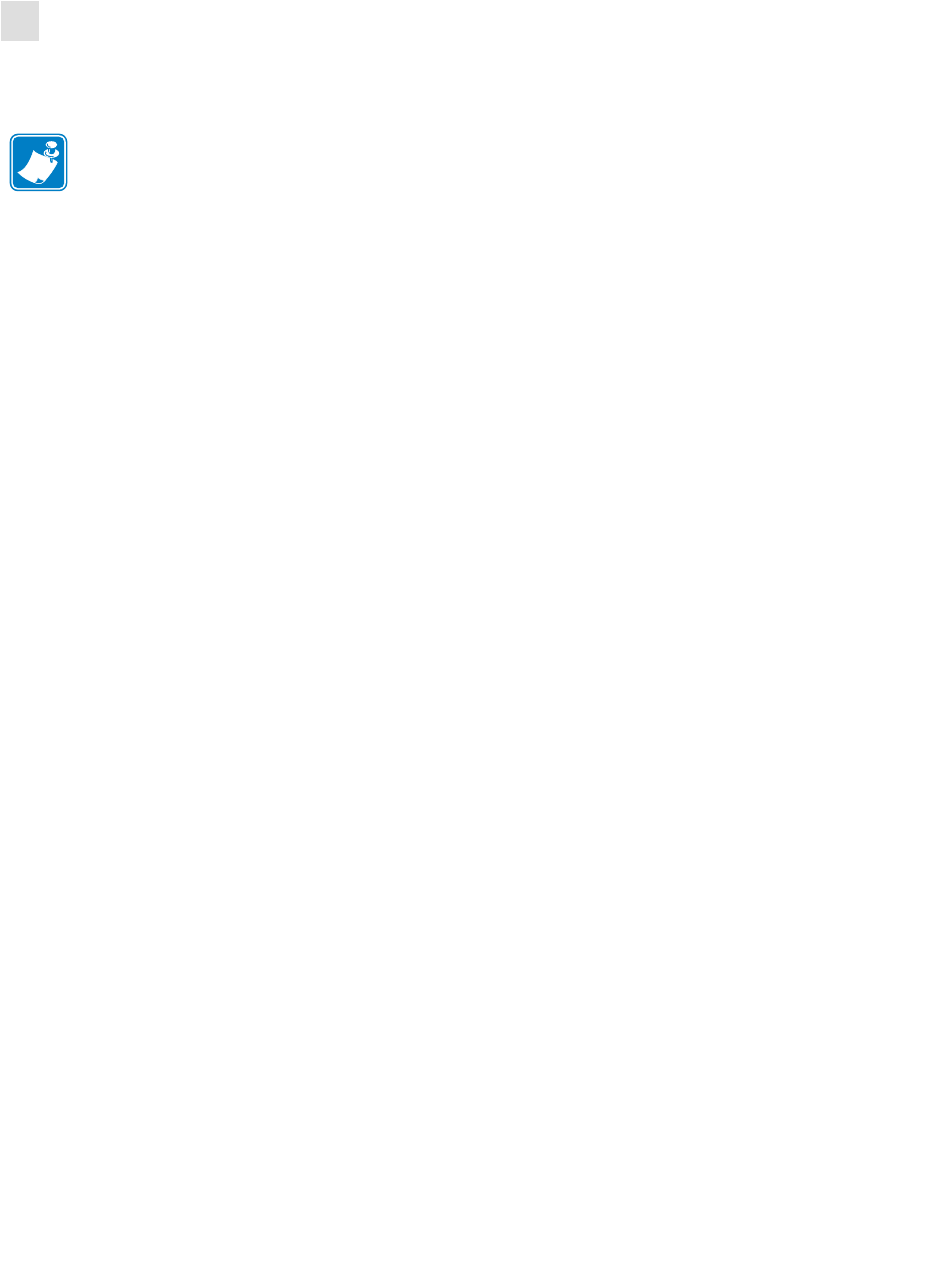
192 R110PAX4 User Guide 58981L-002 Rev. 1 2/11/05
Index
Notes • ___________________________________________________________________
__________________________________________________________________________
__________________________________________________________________________
__________________________________________________________________________
__________________________________________________________________________
__________________________________________________________________________
__________________________________________________________________________
__________________________________________________________________________
__________________________________________________________________________
__________________________________________________________________________
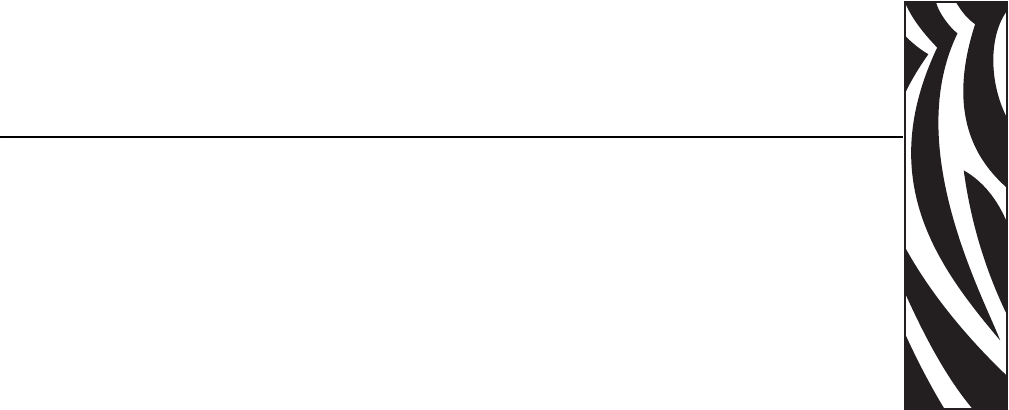
58981L-002 Rev. 1 2/11/05 R110PAX4 User Guide 193
Glossary
Alphanumeric — Indicating letters, numerals, and characters such as punctuation marks.
Backfeed — When the print engine pulls the media and ribbon (if used) backward into the
print engine so that the beginning of the label to be printed is properly positioned behind the
printhead. Backfeed occurs when operating the print engine in Tear-Off and Applicator modes.
Bar code — A code by which alphanumeric characters can be represented by a series of
adjacent stripes of different widths. Many different code schemes exist, such as the universal
product code (UPC) or Code 39.
Black mark — A registration mark found on the underside of the print media that acts as a
start-of-label indication for the print engine. (See continuous media.)
Calibration (of a print engine) — A process in which the print engine determines some basic
information needed to print accurately with a particular media and ribbon combination. To do
this, the print engine feeds some media and ribbon (if used) through the print engine and
senses whether to use the direct thermal or thermal transfer print method, and (if using
non-continuous media) the length of individual labels or tags.
Character set — The set of all letters, numerals, punctuation marks, and other characters that
can be expressed by a particular font or bar code.
Check digit — A character added to a bar code symbol that indicates to the scanner that it has
read the symbol correctly.
Configuration — The print engine configuration is a group of operating parameters specific
to the print engine application. Some parameters are user selectable, while others are
dependent on the installed options and mode of operation. Parameters may be switch
selectable, front panel programmable or downloaded as ZPL II commands. A configuration
label listing all the current print engine parameters may be printed for reference.
Continuous media — Label or tag-stock media that has no notch, gap, or web (media liner
only) to separate the labels or tags. The media is one long piece of material.
Core diameter — The inside diameter of the cardboard core at the center of a roll of media or
ribbon.
Diagnostics — Information about which print engine functions are not working that is used
for troubleshooting print engine problems.

194 R110PAX4 User Guide 58981L-002 Rev. 1 2/11/05
Glossary
Die-cut media — A type of label stock that has individual labels stuck to a media liner. The
labels may be either lined up against each other or separated by a small distance. Typically the
material surrounding the labels has been removed. (See non-continuous media.)
Direct thermal — A printing method in which the printhead presses directly against the
media. Heating the printhead elements causes a discoloration of the heat-sensitive coating on
the media. By selectively heating the printhead elements as the media moves past, an image is
printed onto the media. No ribbon is used with this printing method. Contrast this with thermal
transfer.
Direct thermal media — Media that is coated with a substance that reacts to the application
of direct heat from the printhead to produce an image.
Dynamic RAM — The memory devices used to store the label formats in electronic form
while they are being printed. The amount of DRAM memory available in the print engine
determines the maximum size and number of label formats that can be printed. This is volatile
memory that loses the stored information when power is turned off.
Fanfold media — Media that comes folded in a rectangular stack. Contrast this with roll
media.
Firmware — This is the term used to specify the print engine’s operating program. This
program is downloaded to the print engine from a host computer and stored in FLASH
memory. Each time the print engine power is turned on, this operating program starts. This
program controls when to feed the media forward or backward and when to print a dot on the
label stock.
FLASH memory — FLASH memory is non-volatile and maintains the stored information
intact when power is off. This memory area is used to store the print engine’s operating
program. In addition, this memory can be used to store optional print engine fonts, graphic
formats, and complete label formats.
Font — A complete set of alphanumeric characters in one style of type. Examples include
CGTimes™, CG Triumvirate Bold Condensed™.
Integrated circuit (IC) chip — The part of an RFID transponder that contains the RF circuit,
coders, decoders, and memory.
Ips “inches-per-second” — The speed at which the label or tag is printed. Zebra offers print
engines that can print from 1 ips to 12 ips.
Label — An adhesive-backed piece of paper, plastic, or other material on which information is
printed.
Label backing (label liner) — The material on which labels are affixed during manufacture
and which is discarded or recycled by the end-users.
Liquid crystal display — The LCD is a back-lit display that provides the user with either
operating status during normal operation or option menus when configuring the print engine to
a specific application.
Light emitting diode (LED) — Indicators of specific print engine status conditions. Each
LED is either off, on, or blinking depending on the feature being monitored.
Lock-up — This is the term generally used to describe a fault condition that, for apparently no
reason, causes the print engine to stop working.
Media — Material onto which data is printed by the print engine. Types of media include: tag-
stock, die-cut labels, continuous (with and without media liner), fanfold, and roll.

Glossary
58981L-002 Rev. 1 2/11/05 R110PAX4 User Guide 195
Media sensor — This sensor is located behind the printhead to detect the presence of media
and, for non-continuous media, the position of the web, hole, or notch used to indicate the start
of each label.
Non-continuous media — Consumable printing stock that contains an indication of where
one label/printed format ends and the next one begins. Examples are die-cut labels, notched
tag-stock, and stock with black mark registration marks.
Non-volatile memory — Electronic memory that retains data even when the power to the
print engine is turned off.
Notched media — A type of tag stock containing a cutout area that can be sensed as a start-of-
label indicator by the print engine. This is typically a heavier, cardboard-like material that is
either cut or torn away from the next tag. (See non-continuous media.)
Print speed — The speed at which printing occurs. For thermal transfer print engines, this
speed is expressed in terms of ips (inches per second). Zebra offers print engines that can print
from 1 ips to 12 ips.
Printhead wear — The degradation of the surface of the printhead and/or the print elements
over time. Heat and abrasion can cause printhead wear. Therefore, to maximize the life of the
printhead, use the lowest print darkness setting (sometimes called burn temperature or head
temperature) and the lowest printhead pressure necessary to produce good print quality. In the
thermal transfer printing method, use ribbon that is as wide or wider than the media to protect
the printhead from the rough media surface.
Registration — Alignment of printing with respect to the top of a label or tag.
Radio Frequency Identification (RFID) — The technology that allows an item to be
identified by a transponder that communicates with a reader via radio waves.
Ribbon — A band of material consisting of a base film coated with wax or resin “ink.” The
inked side of the material is pressed by the printhead against the media. The ribbon transfers
ink onto the media when heated by the small elements within the printhead. Zebra ribbons
have a coating on the back that protects the printhead from wear.
Ribbon wrinkle — A wrinkling of the ribbon caused by improper alignment or improper
printhead pressure. This wrinkle can cause voids in the print and/or the used ribbon to rewind
unevenly. This condition should be corrected by performing adjustment procedures.
Roll media — Media that comes supplied rolled onto a core (usually cardboard). Contrast this
with fanfold media.
“Smart” label — Media that comes with an RFID transponder embedded between the label
and the liner.
Supplies — A general term for media and ribbon.
Symbology — The term generally used when referring to a bar code.
Tag — 1) A type of media having no adhesive backing but featuring a hole or notch by which
the tag can be hung on something. Tags are usually made of cardboard or other durable
material. 2) An RFID transponder.
Tear-off — A mode of operation in which the user tears the label or tag stock away from the
remaining media by hand.

196 R110PAX4 User Guide 58981L-002 Rev. 1 2/11/05
Glossary
Thermal transfer — A printing method in which the printhead presses an ink or resin coated
ribbon against the media. H eating the printhead elements causes the ink or resin to transfer
onto the media. By selectively heating the printhead elements as the media and ribbon move
past, an image is printed onto the media. Contrast this with direct thermal.
Transponder — An RFID component that is usually comprised of an antenna that is bonded
to an integrated circuit (IC) chip. The transponder is usually located between the label and
liner in “smart” labels.
Void — 1) A space on which printing should have occurred, but did not due to an error
condition such as wrinkled ribbon or faulty print elements. A void can cause a printed bar code
symbol to be read incorrectly or not at all. 2) An RFID label is “voided” if an error occurs
during writing or encoding. The label is ejected, and the word “VOID” is printed across it.
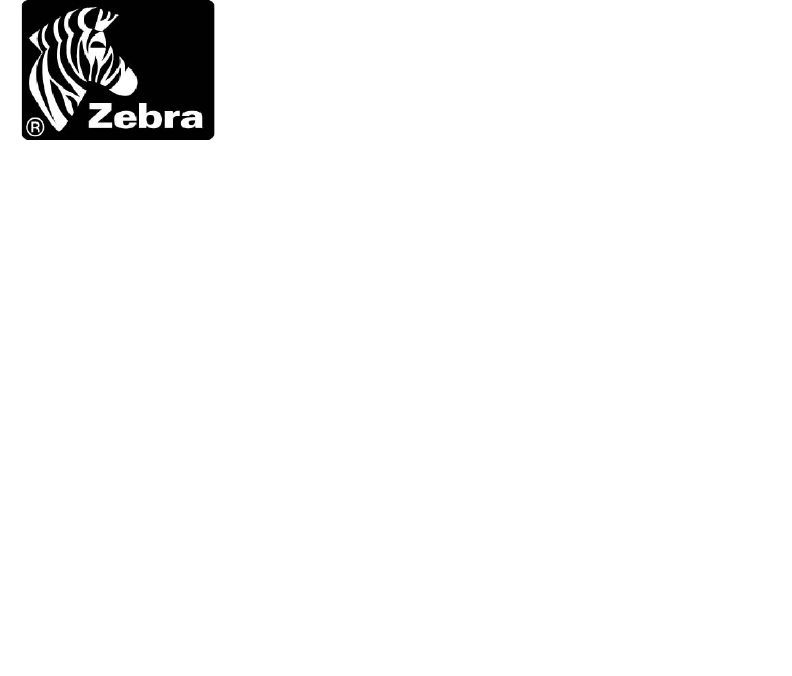
Zebra Technologies Corporation
333 Corporate Woods Parkway
Vernon Hills, Illinois 60061.3109 U.S.A.
Telephone: +1 847.634.6700
Facsimile: +1 847.913.8766
Zebra Technologies Europe Limited
Zebra House
The Valley Centre, Gordon Road
High Wycombe
Buckinghamshire HP13 6EQ, UK
Telephone: +44 (0) 1494 472872
Facsimile: +44 (0) 1494 450103
Customer Order # 58981L-002
Manufacturer Part # 58981L-002 Rev. 1
© 2004 ZIH Corp.